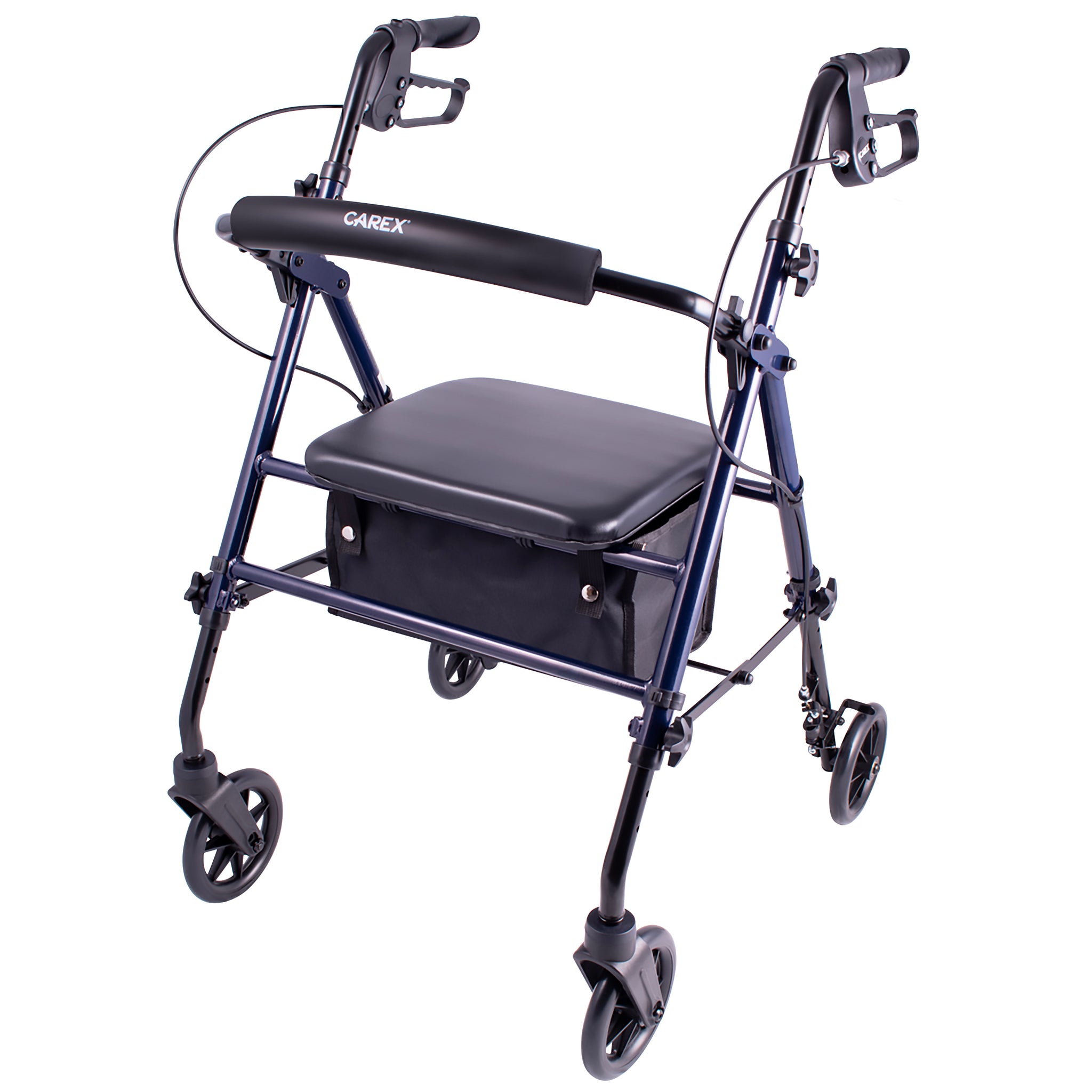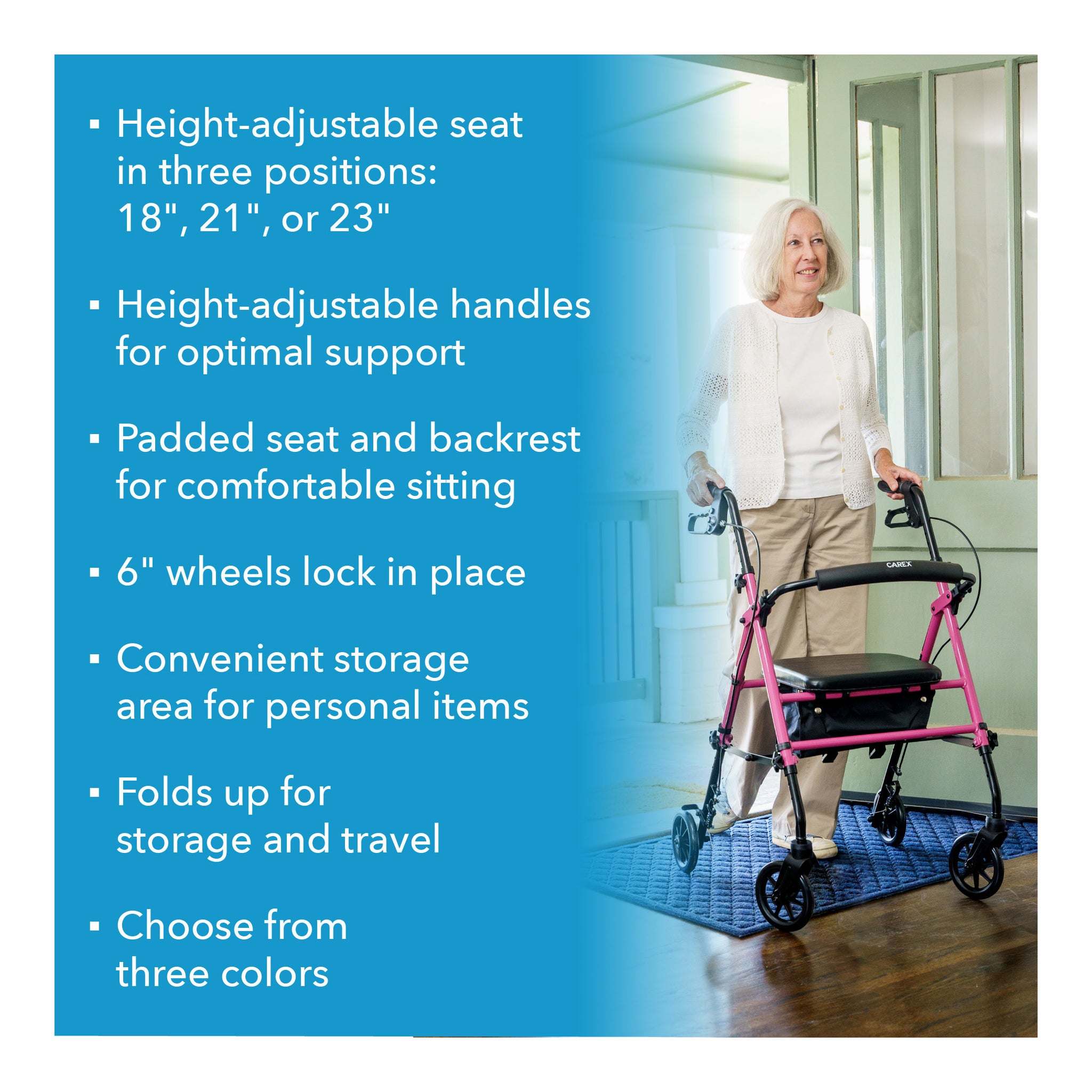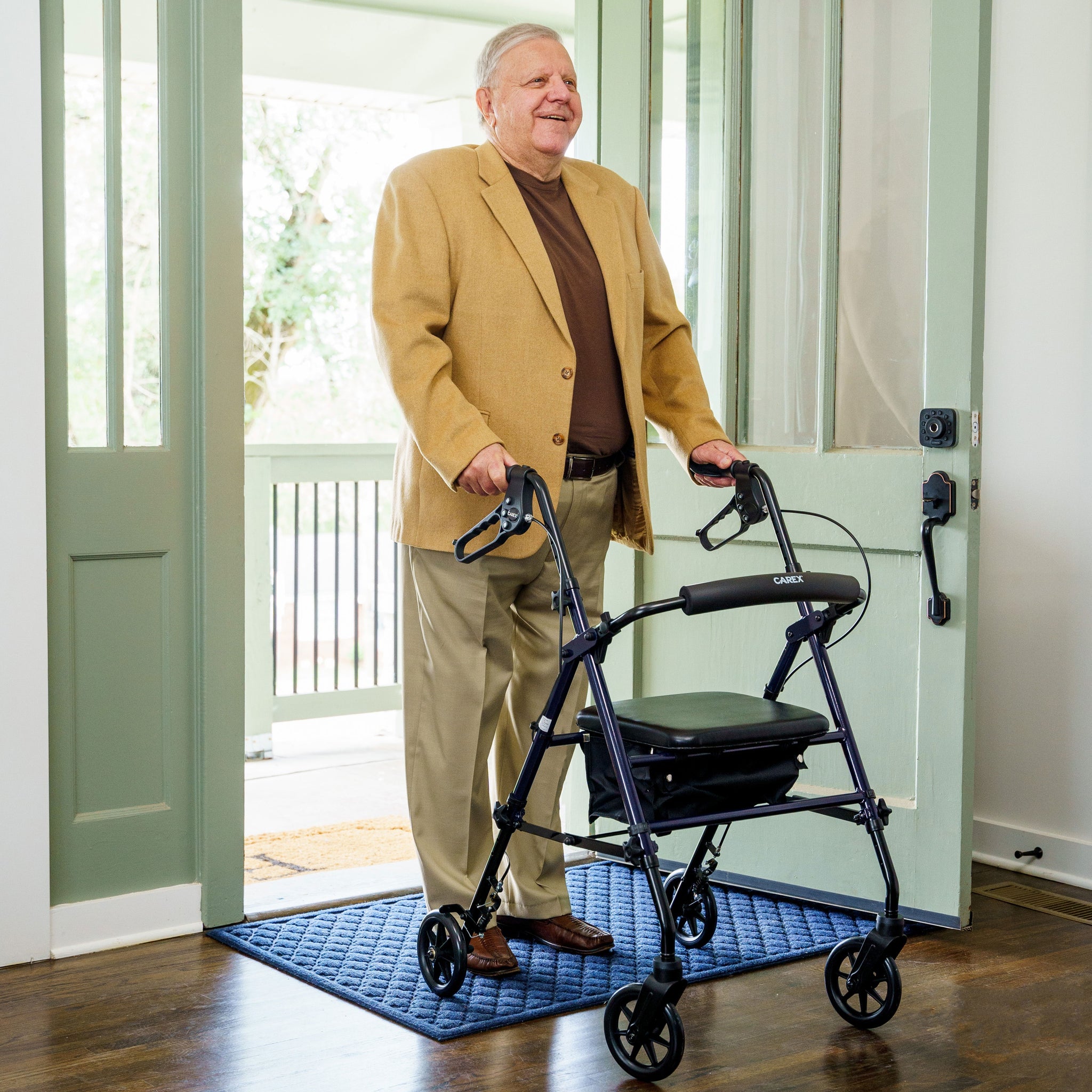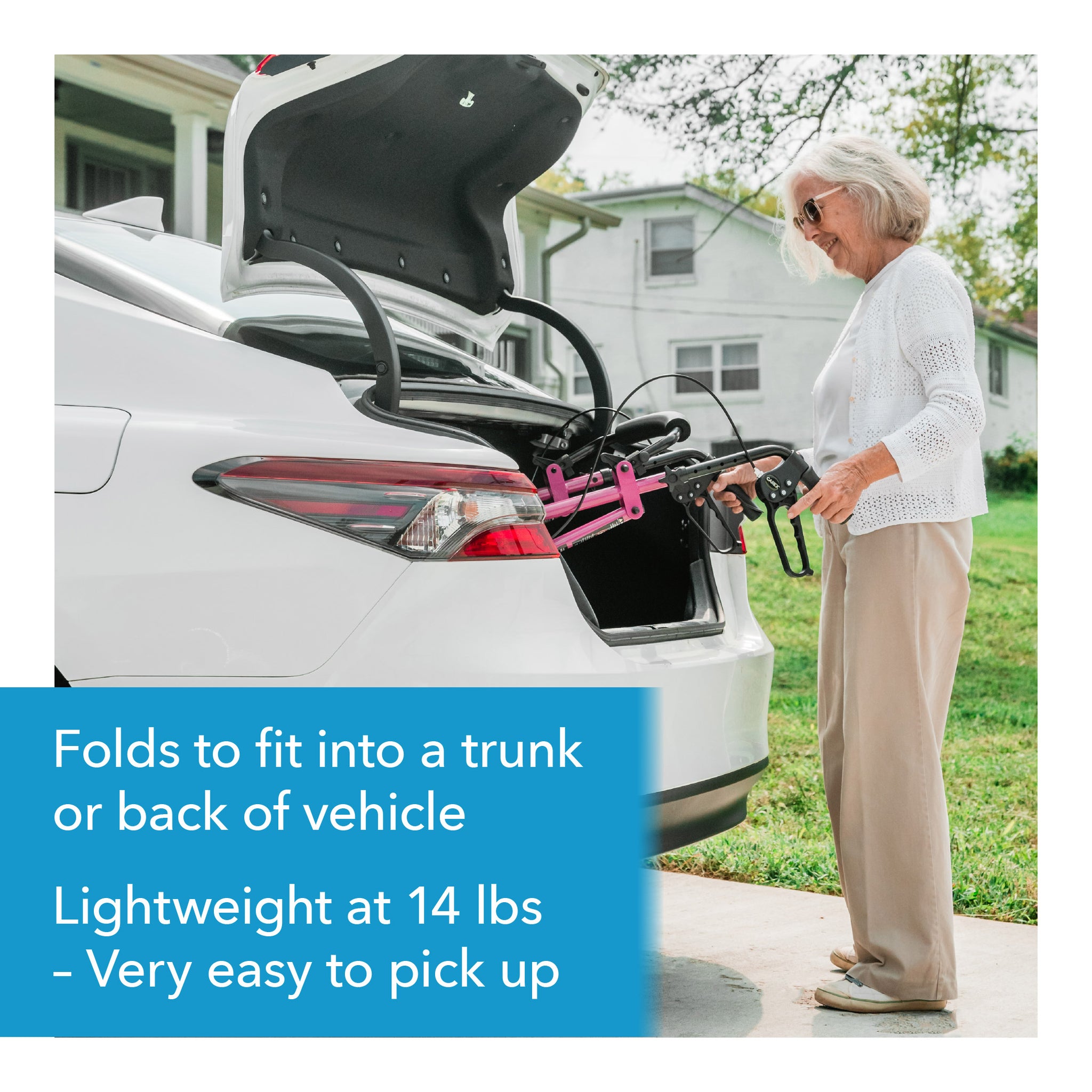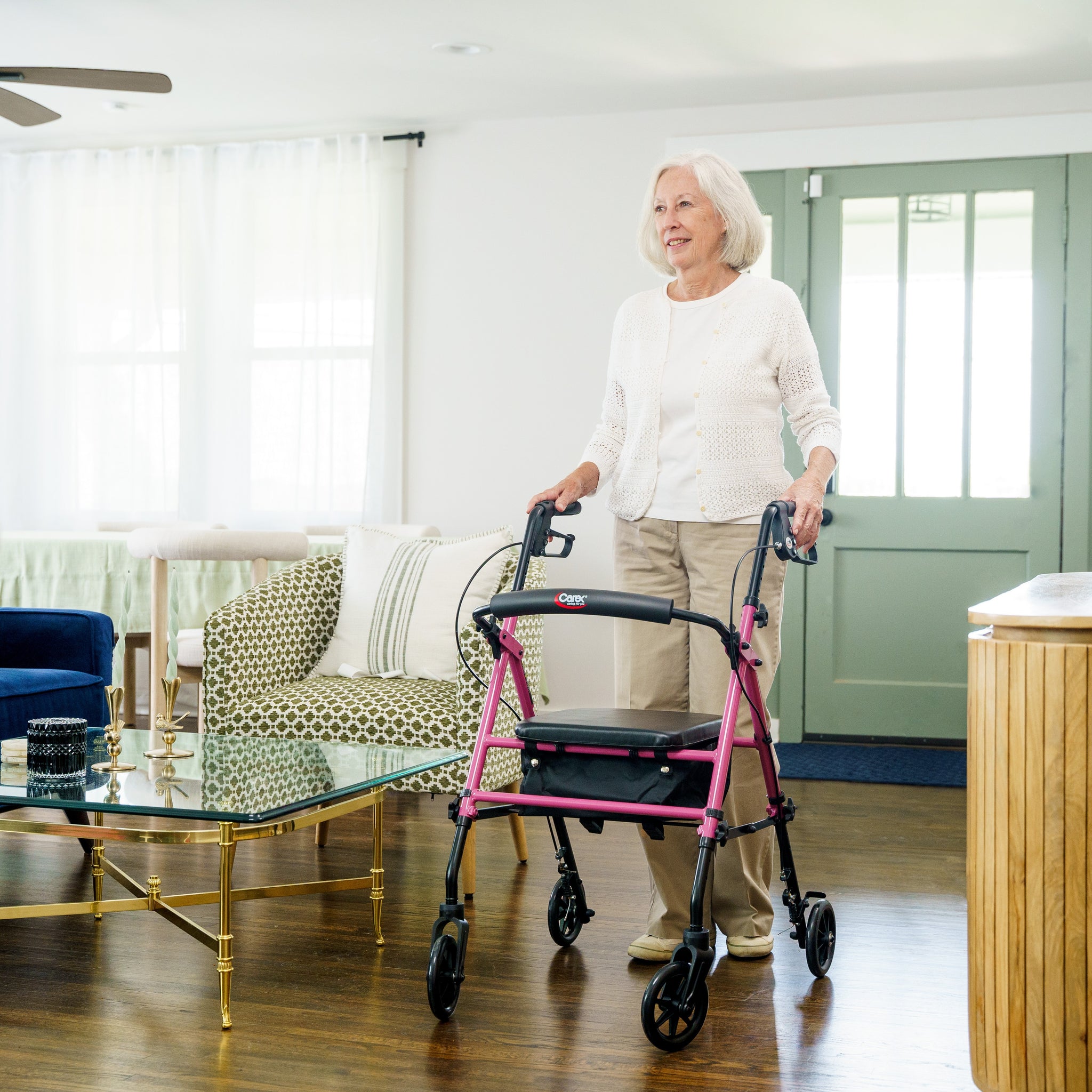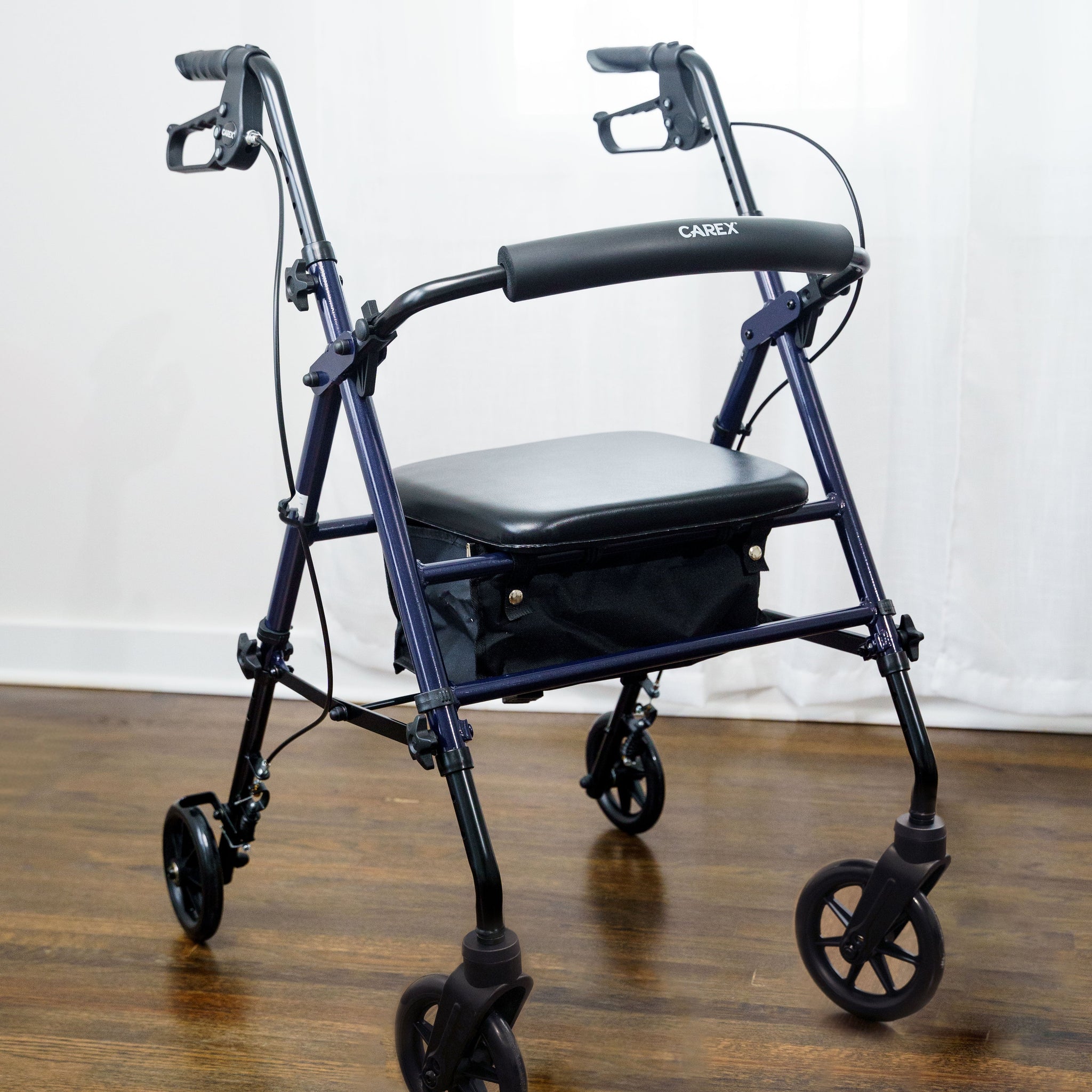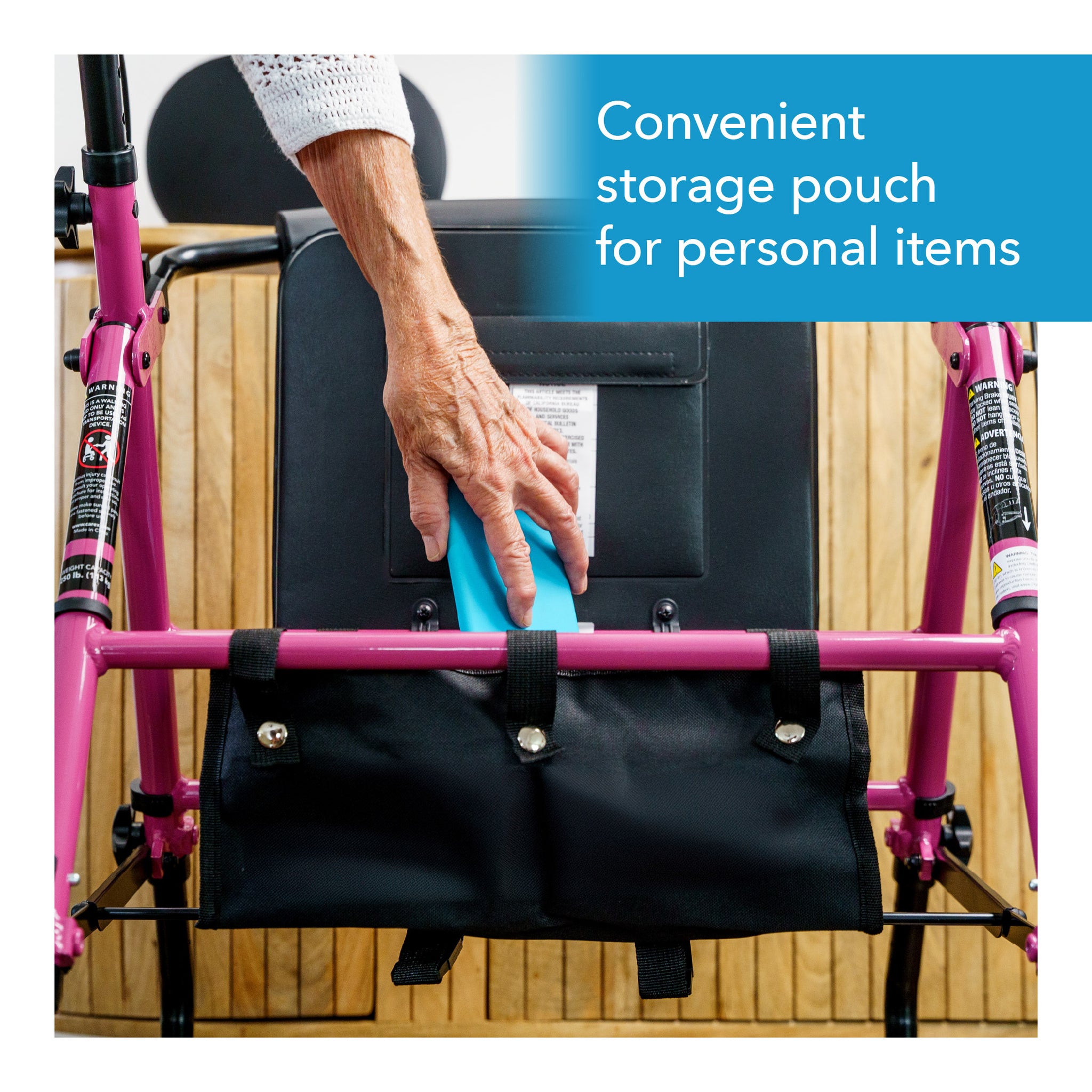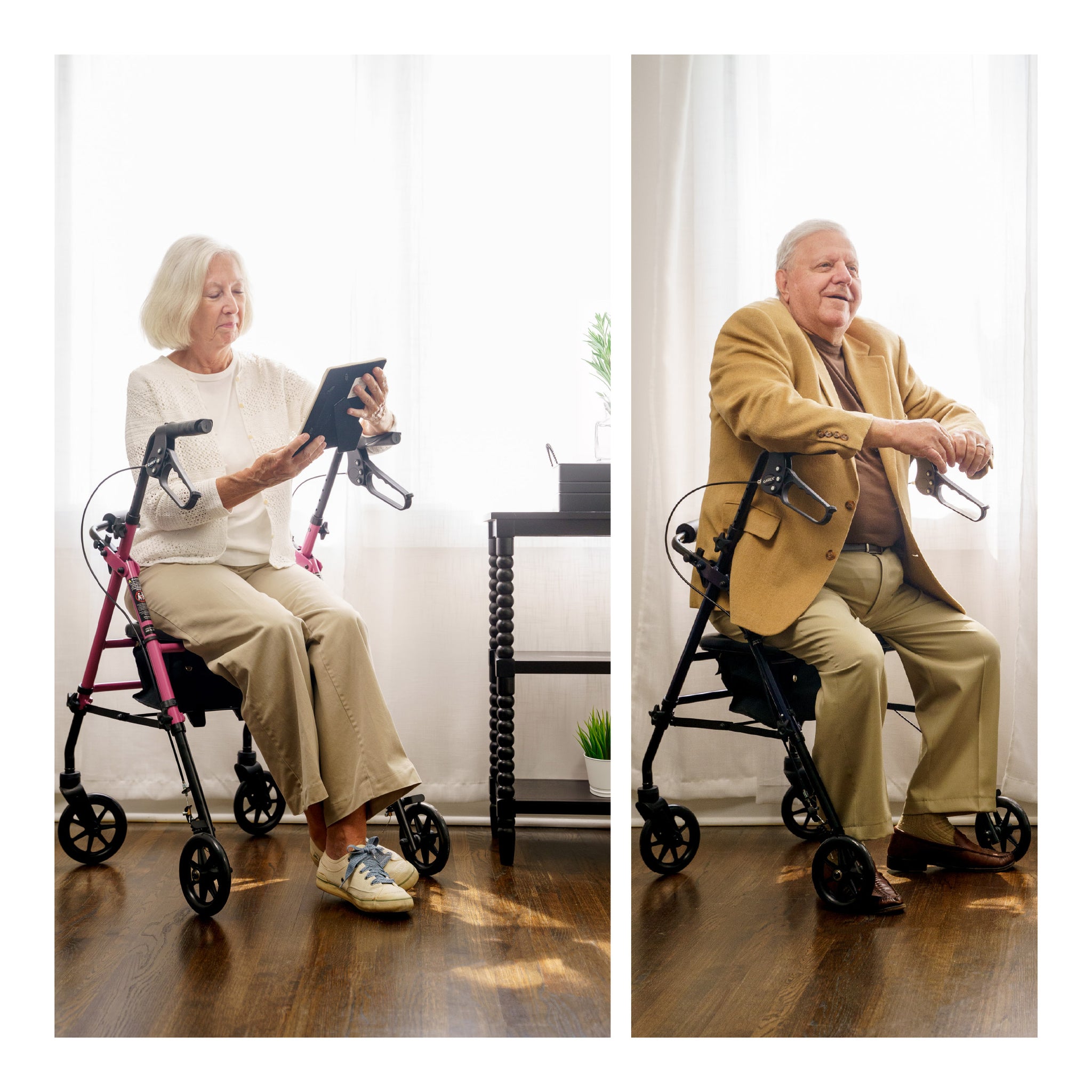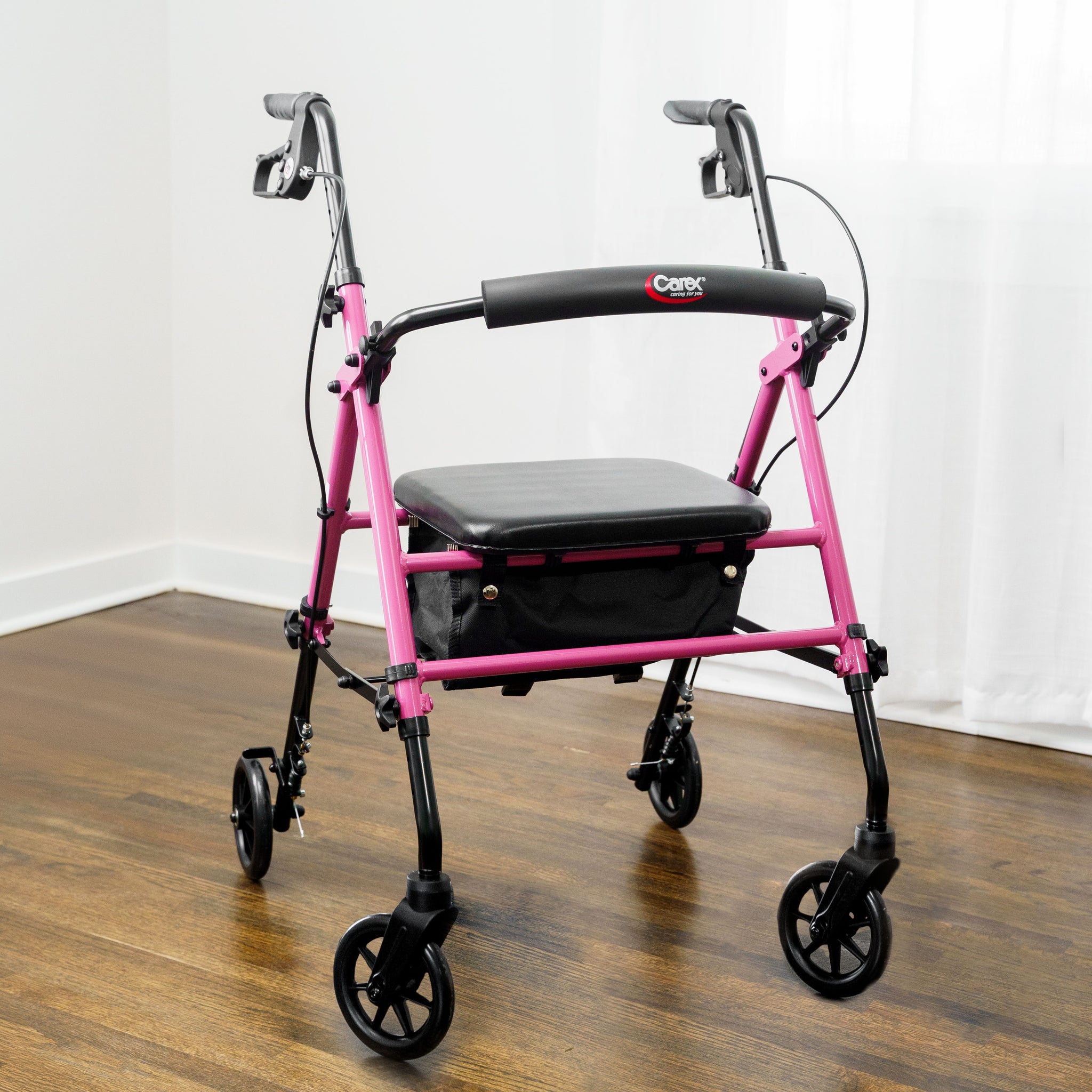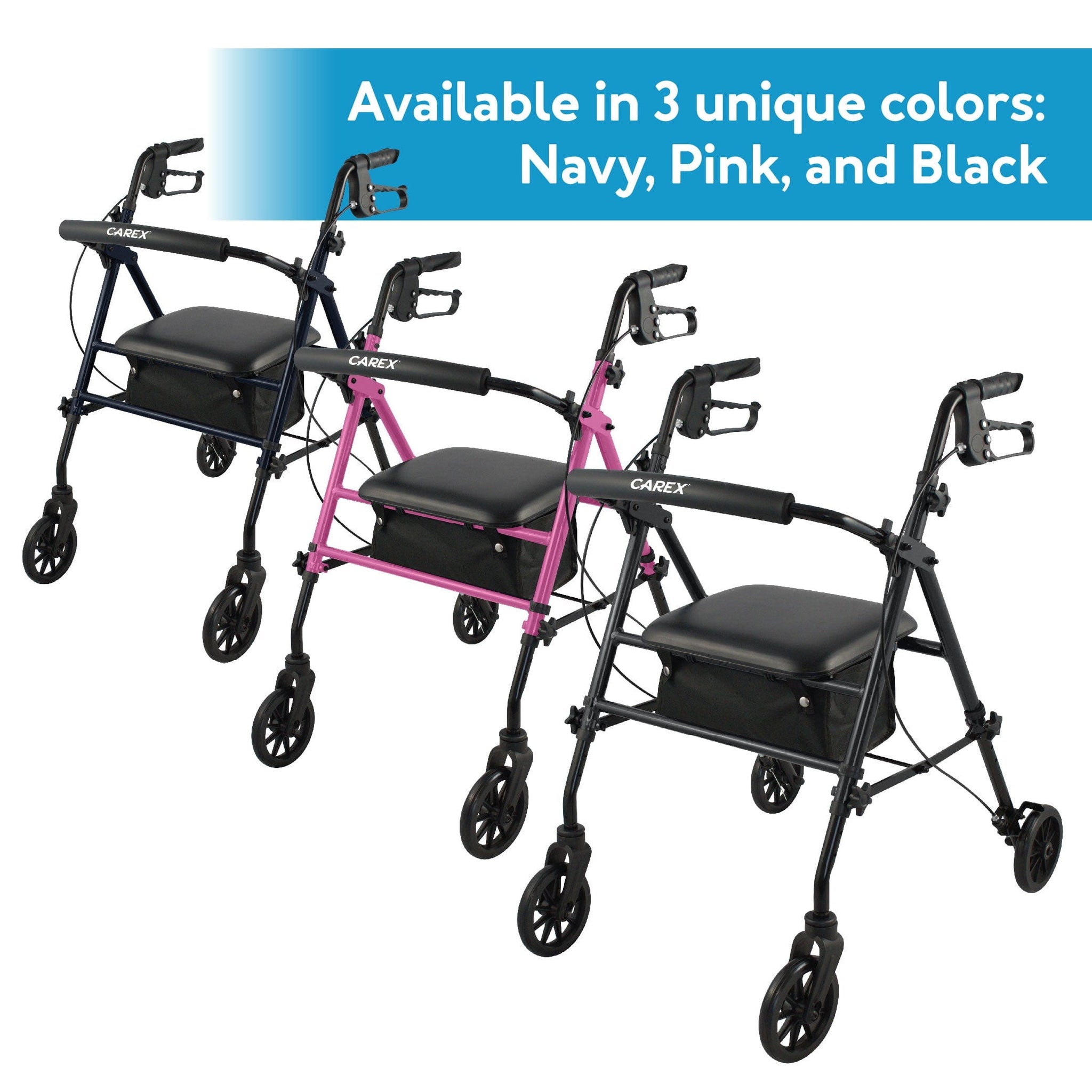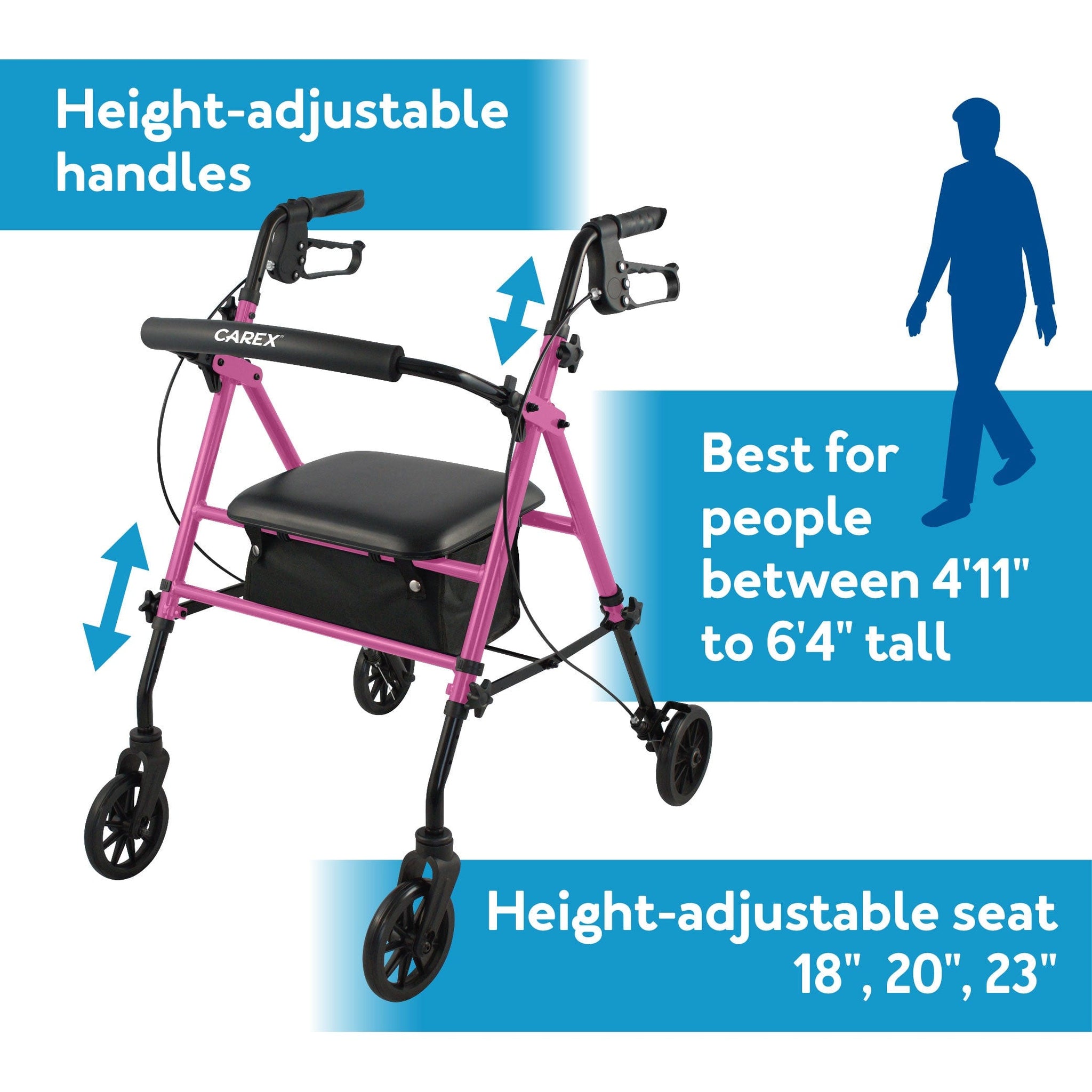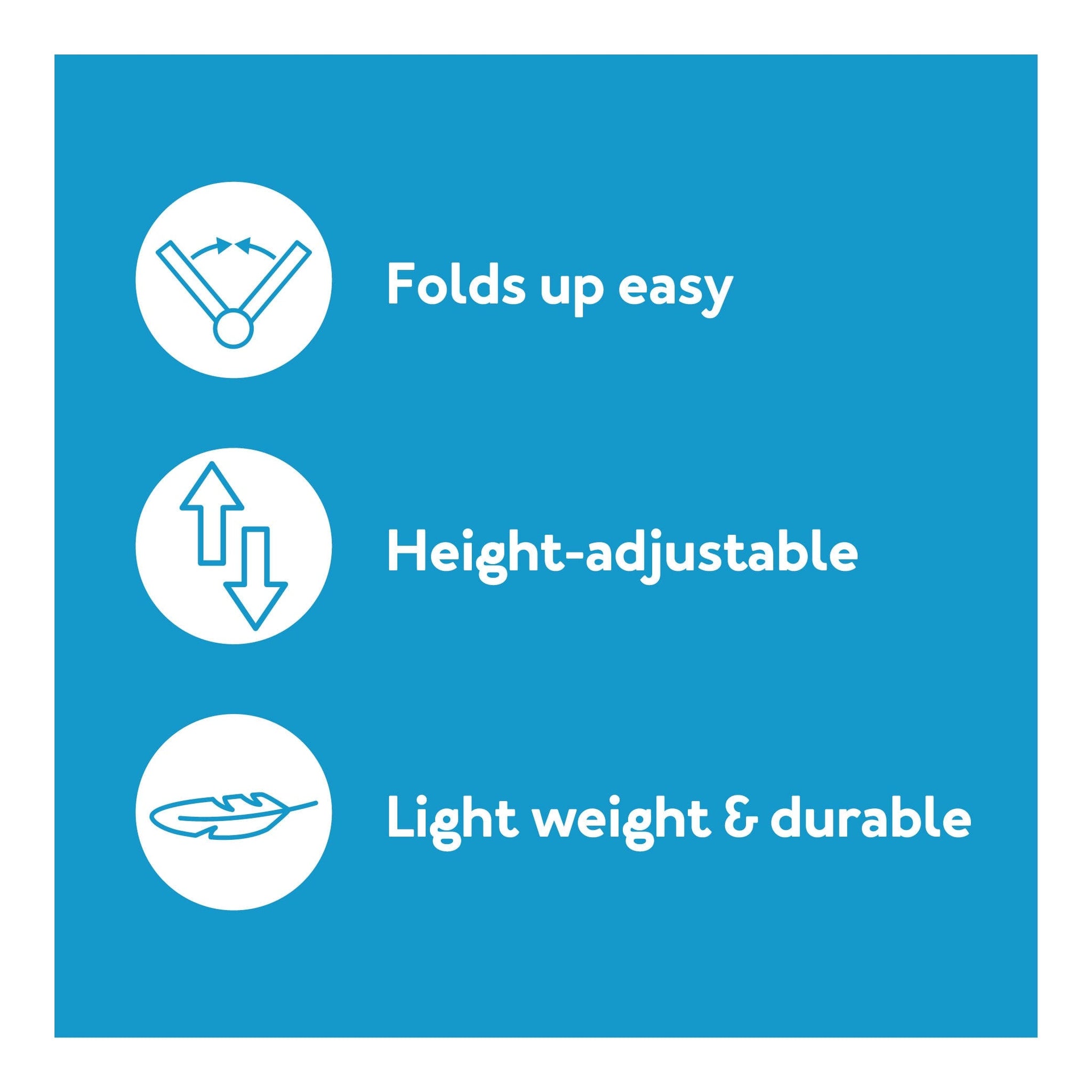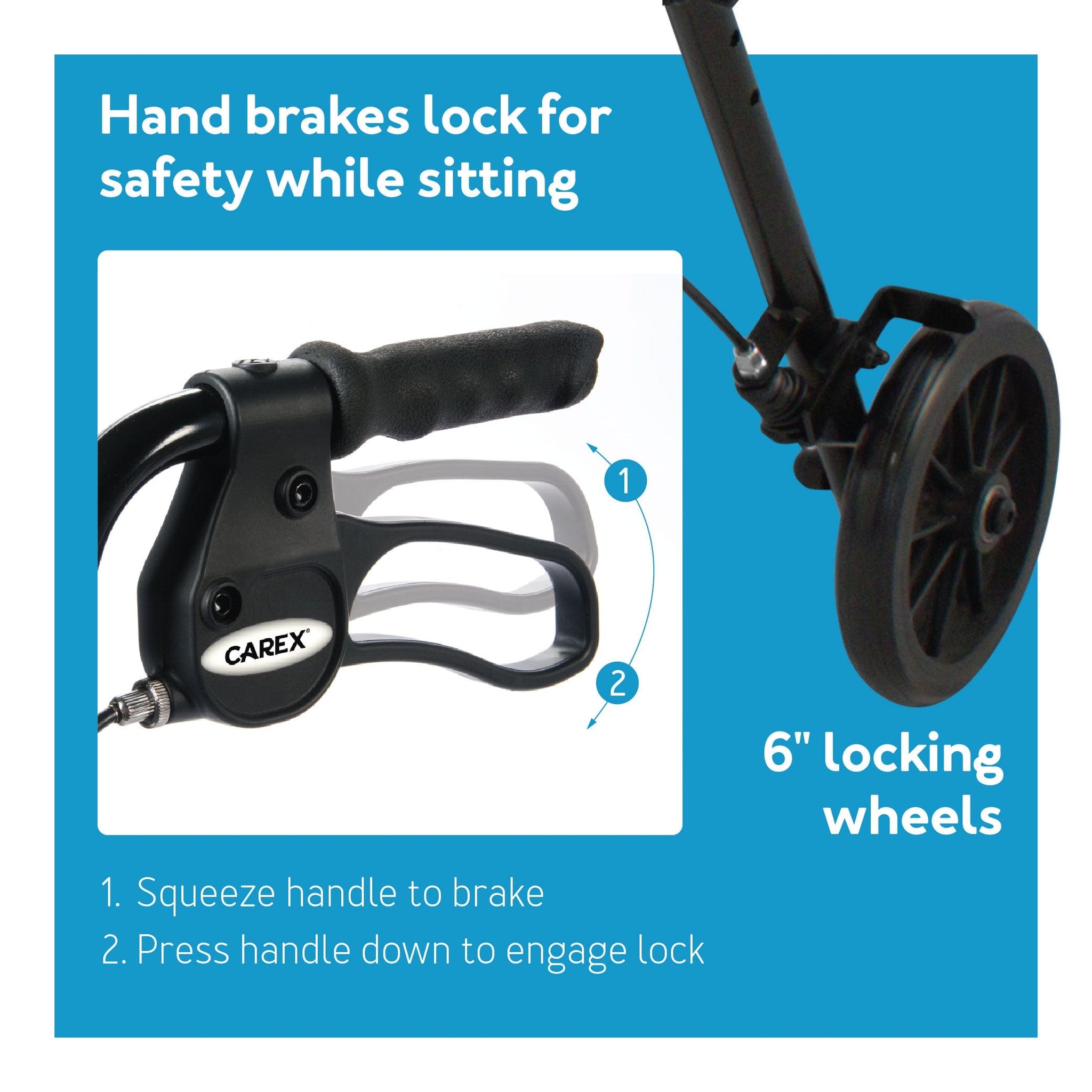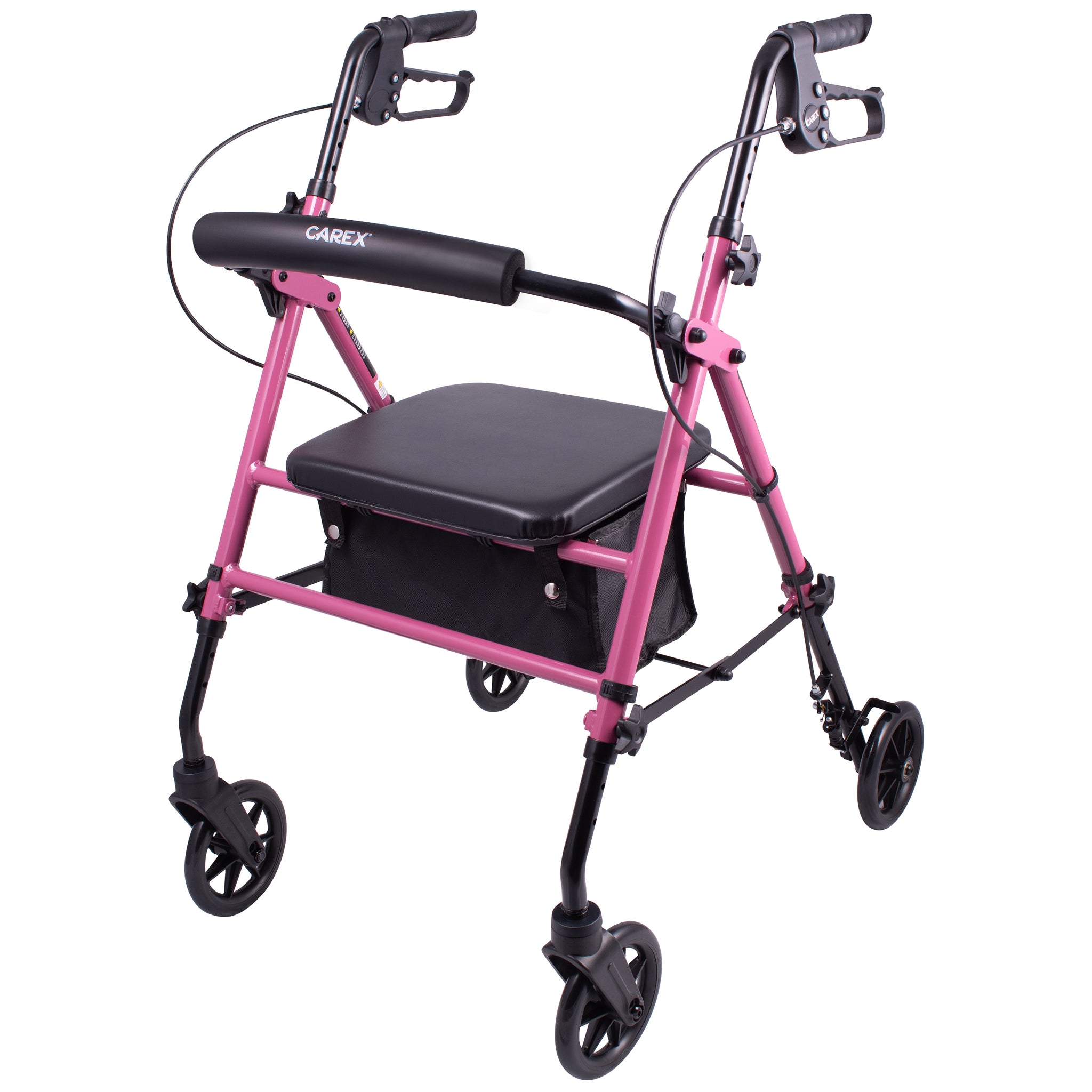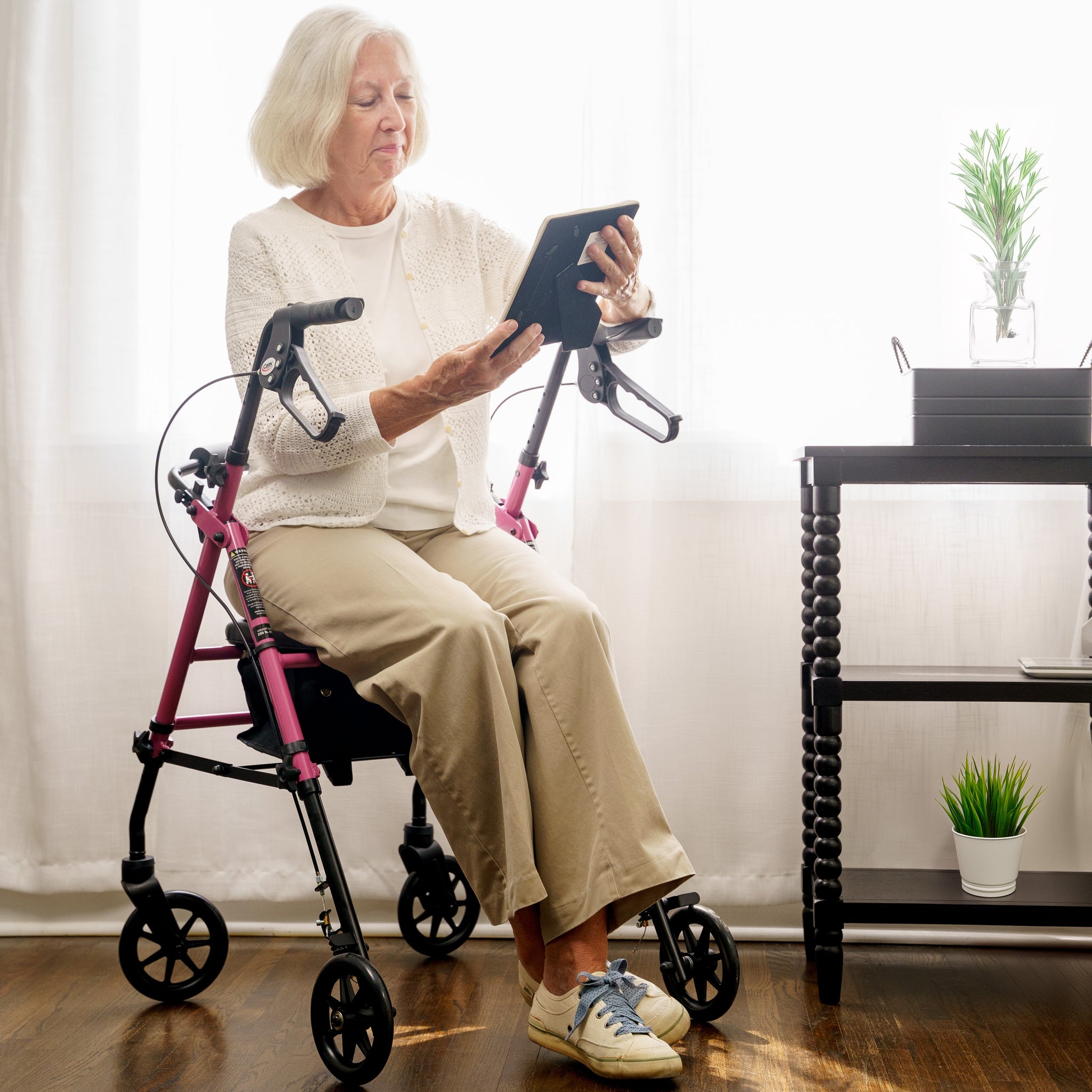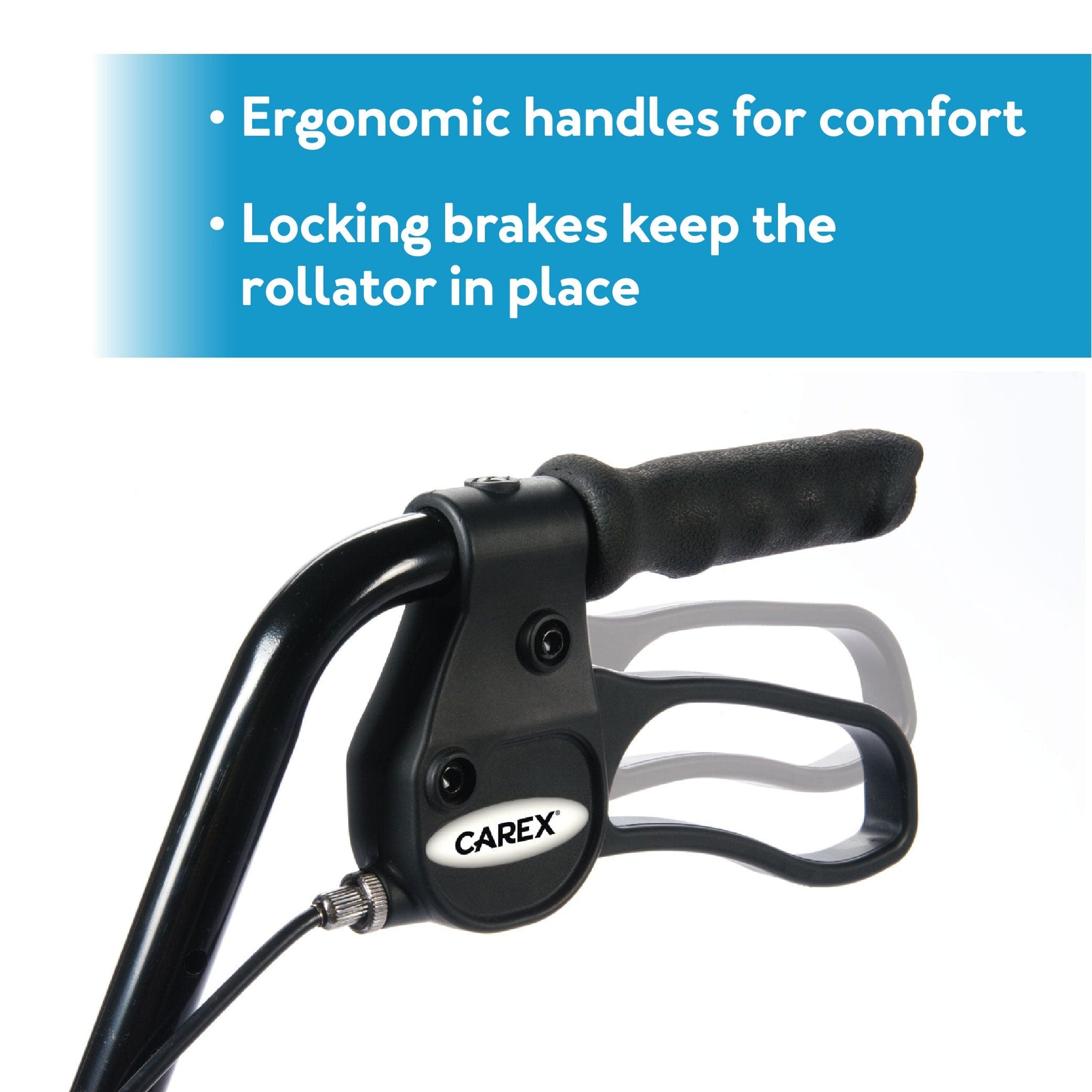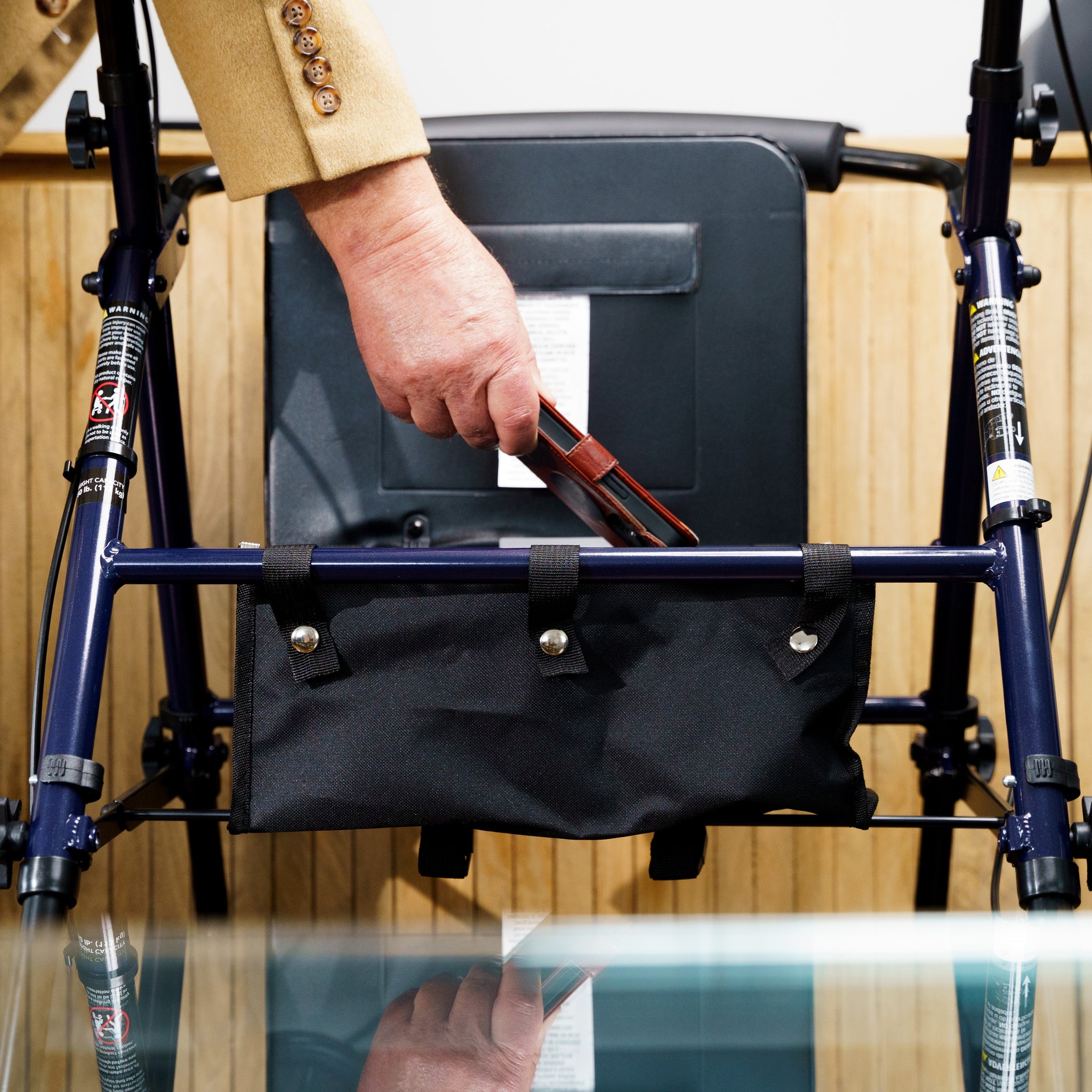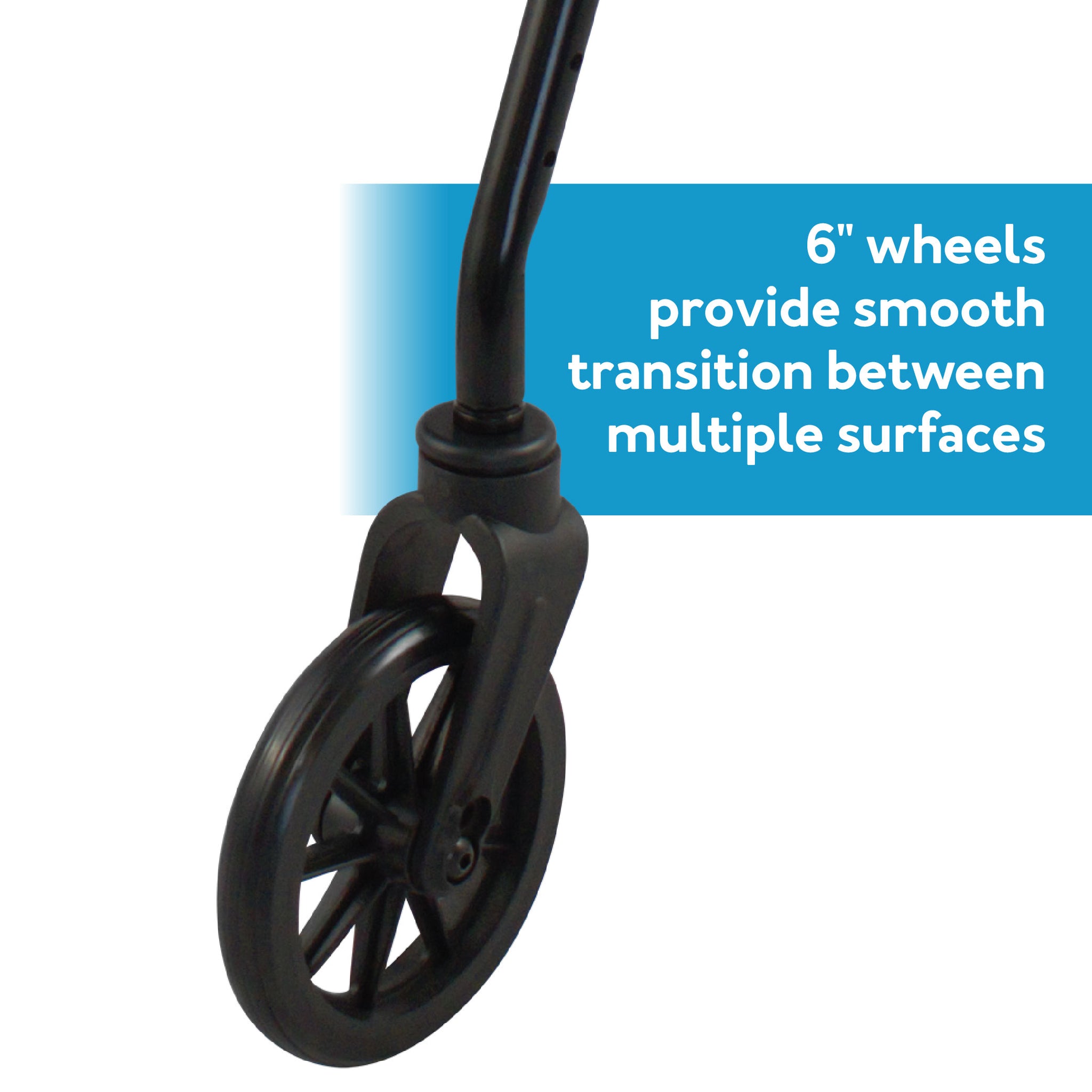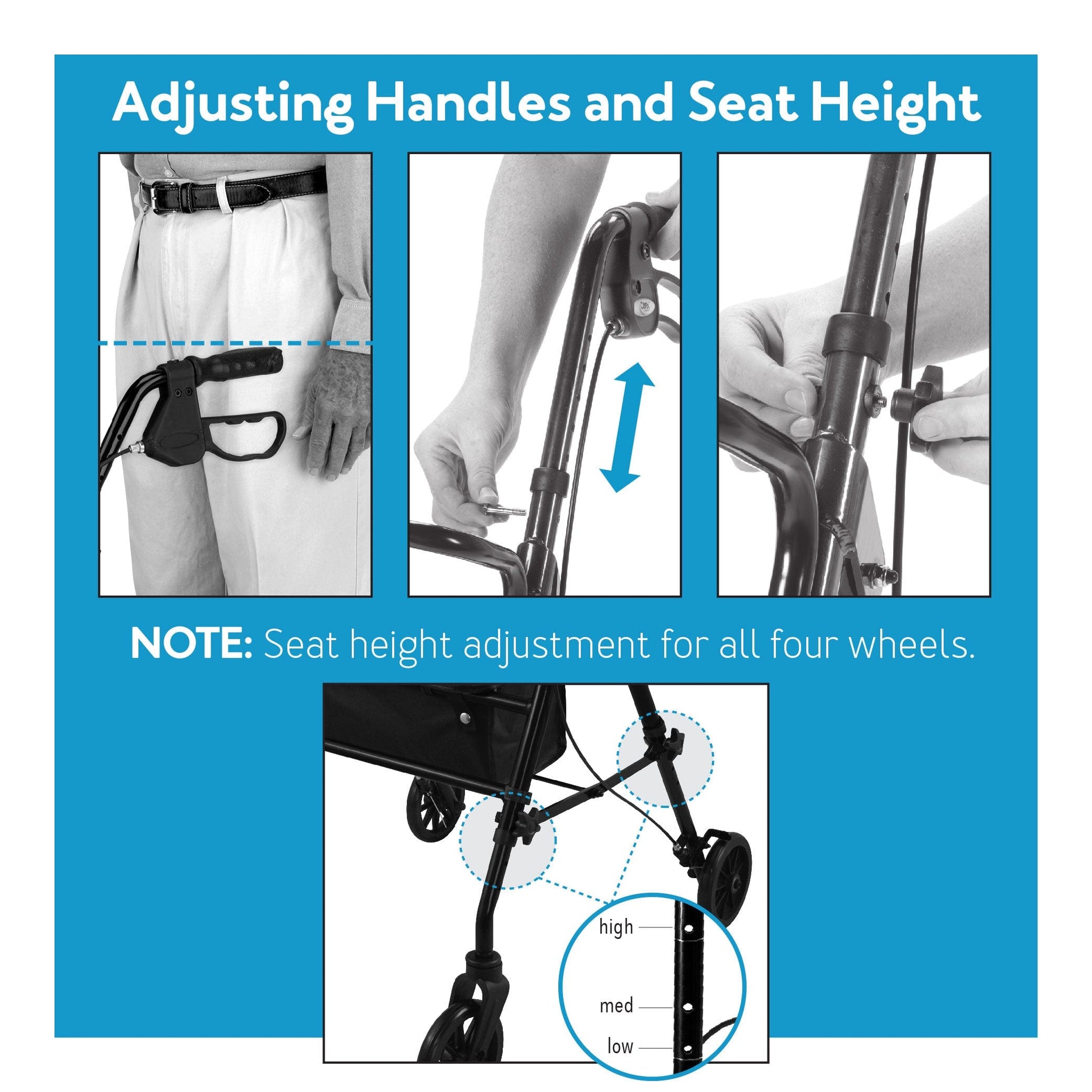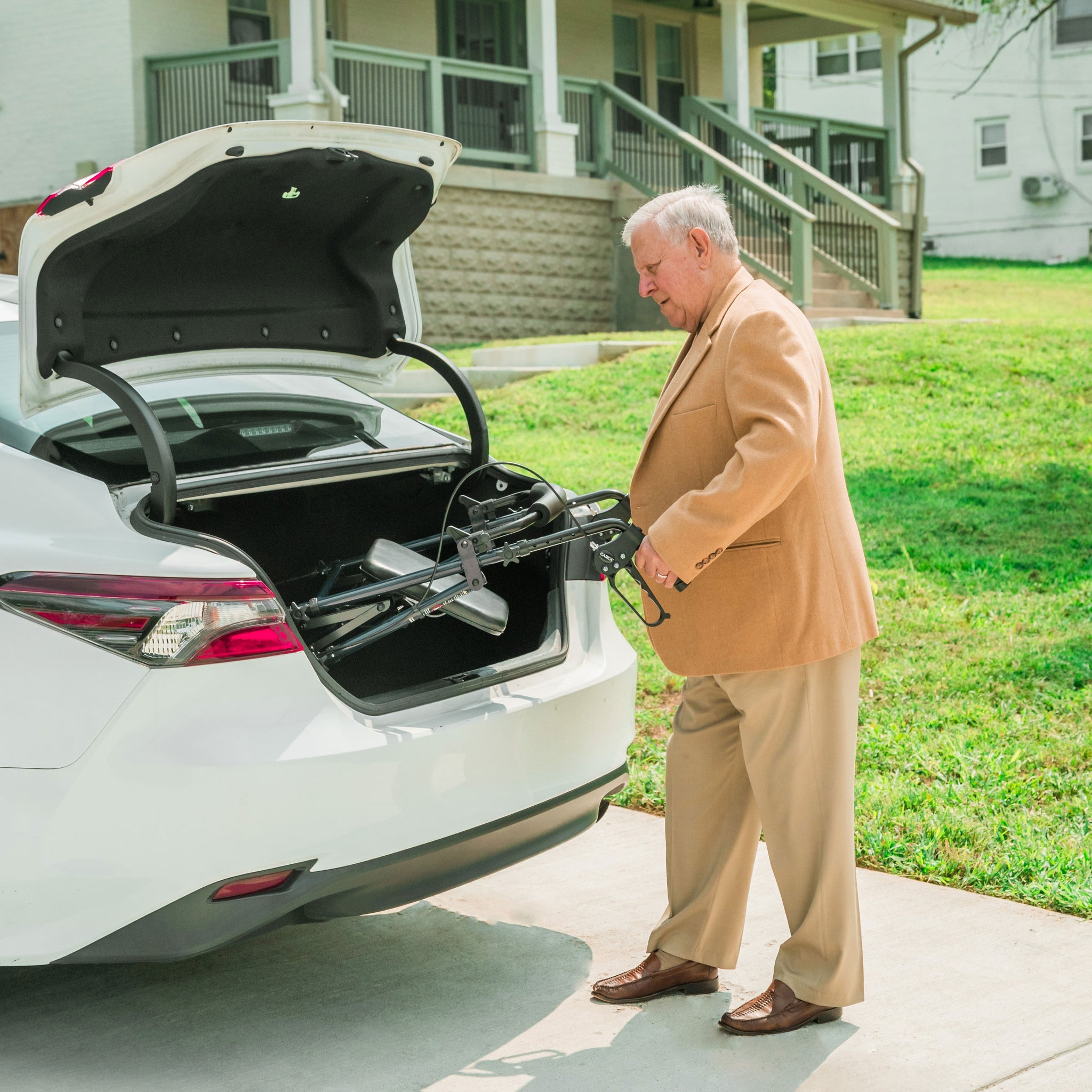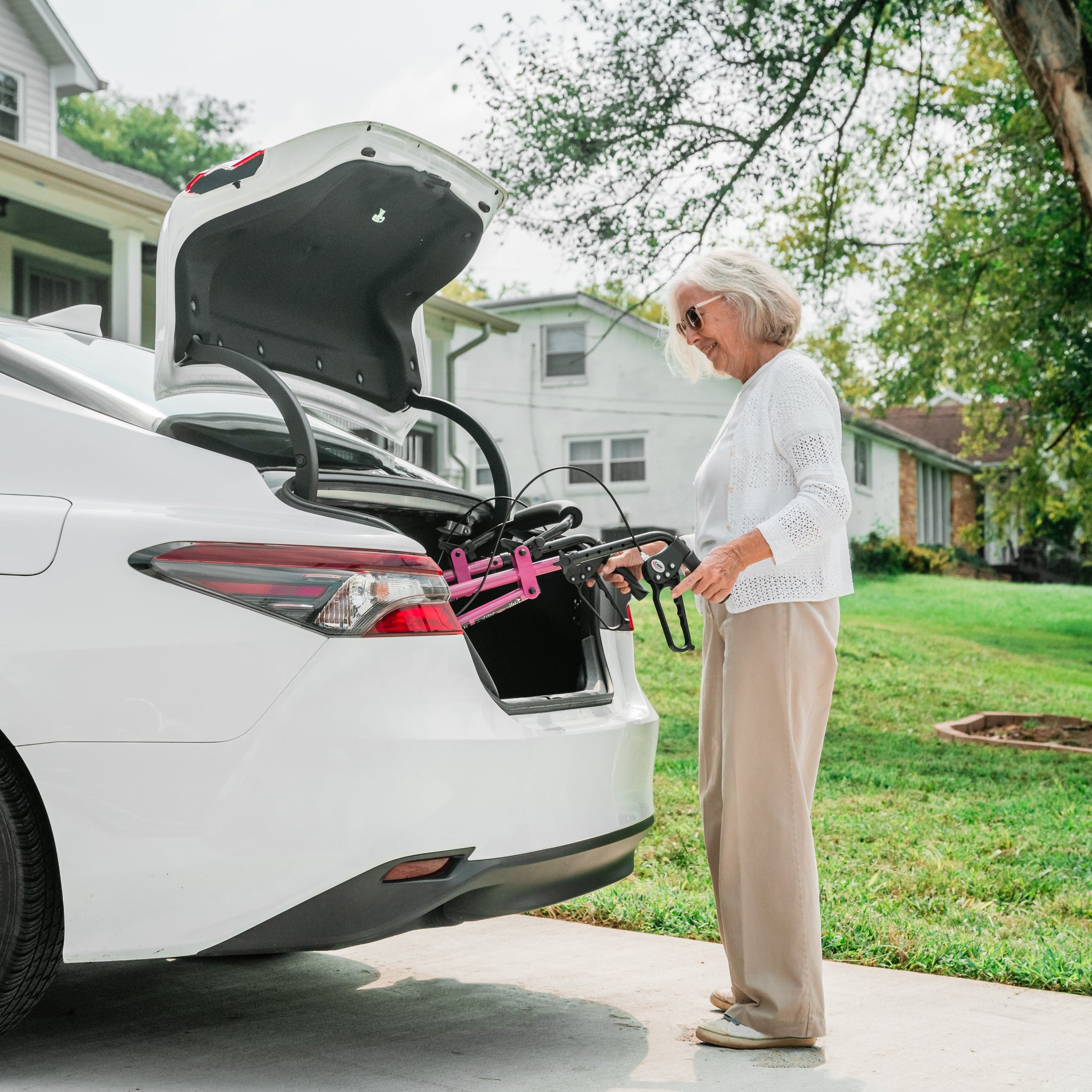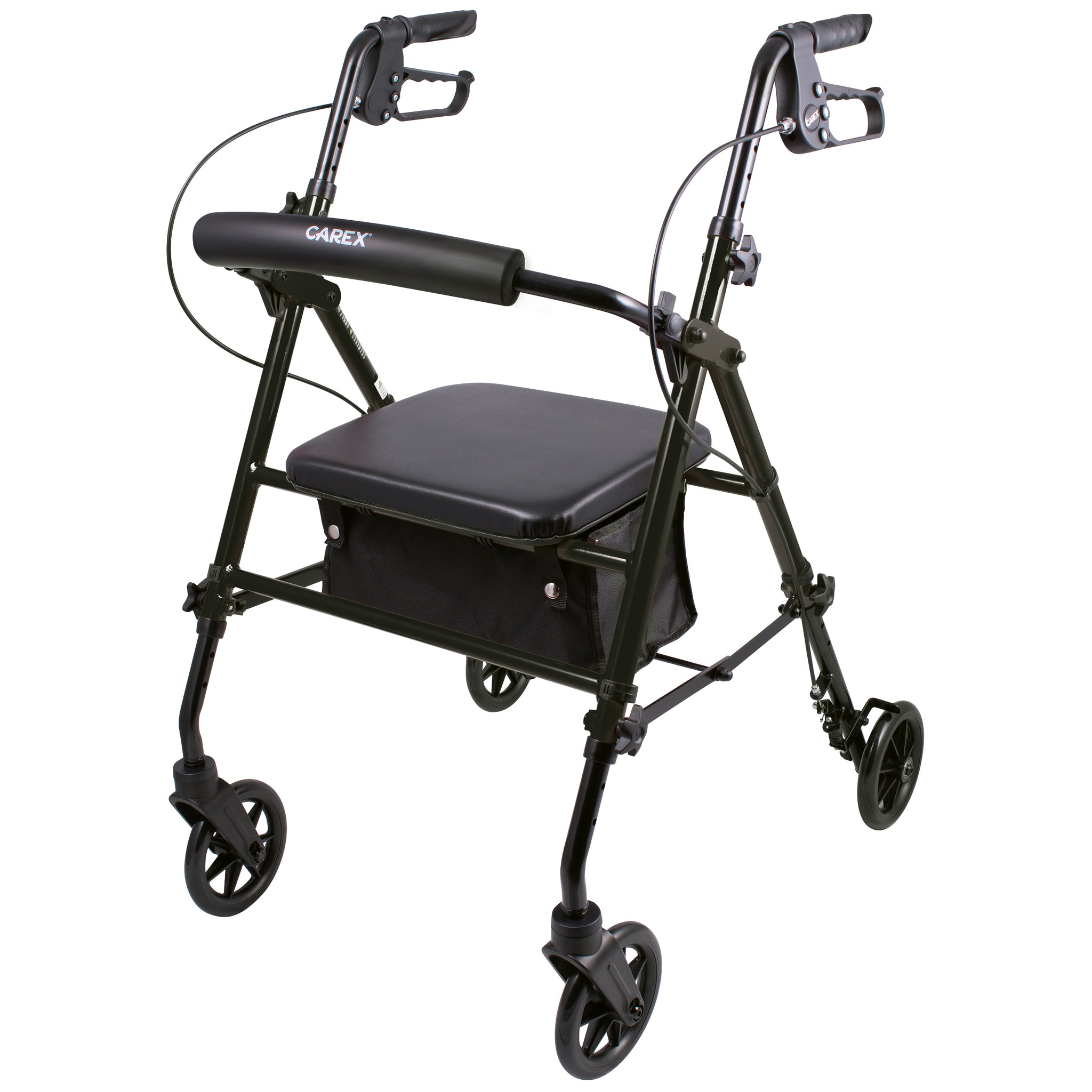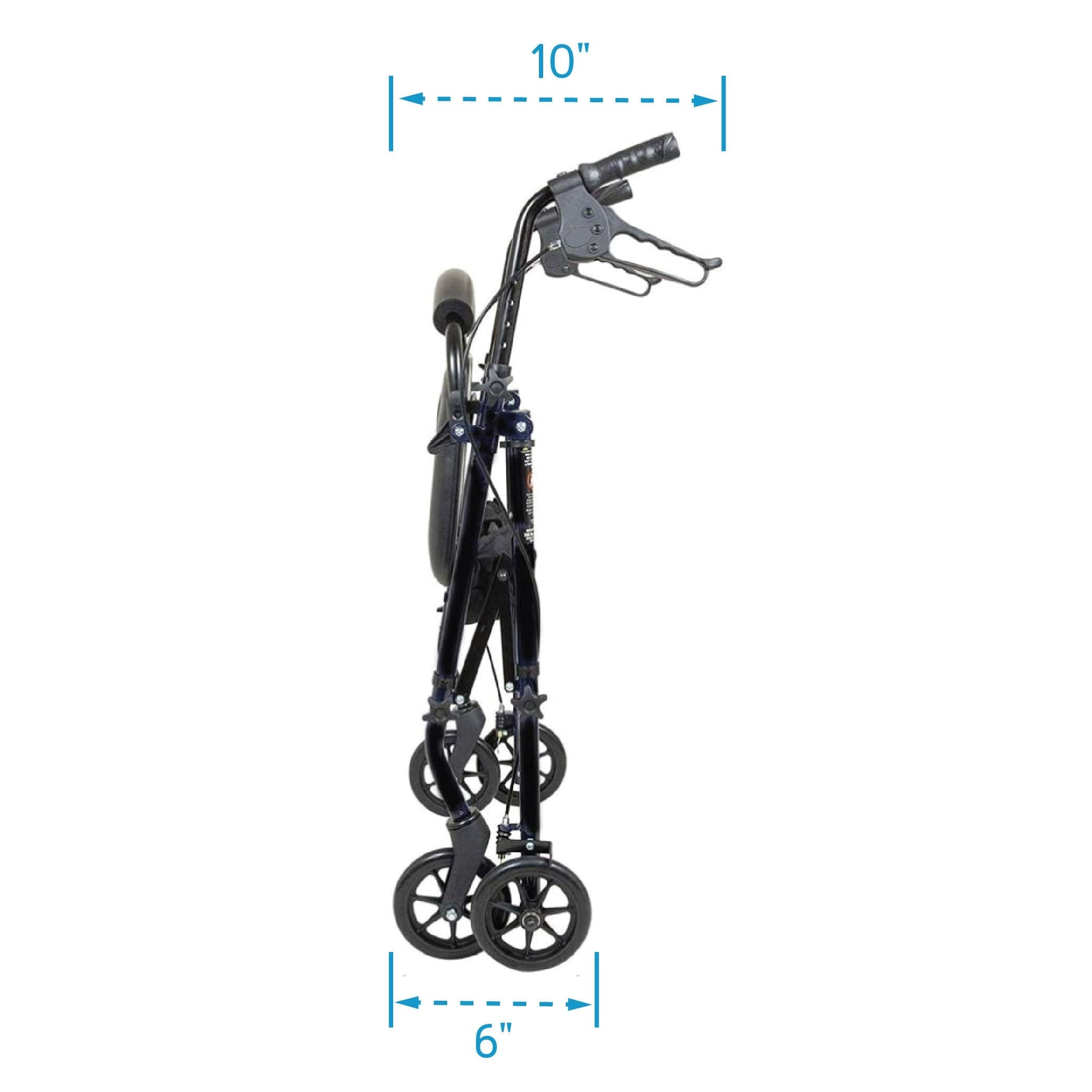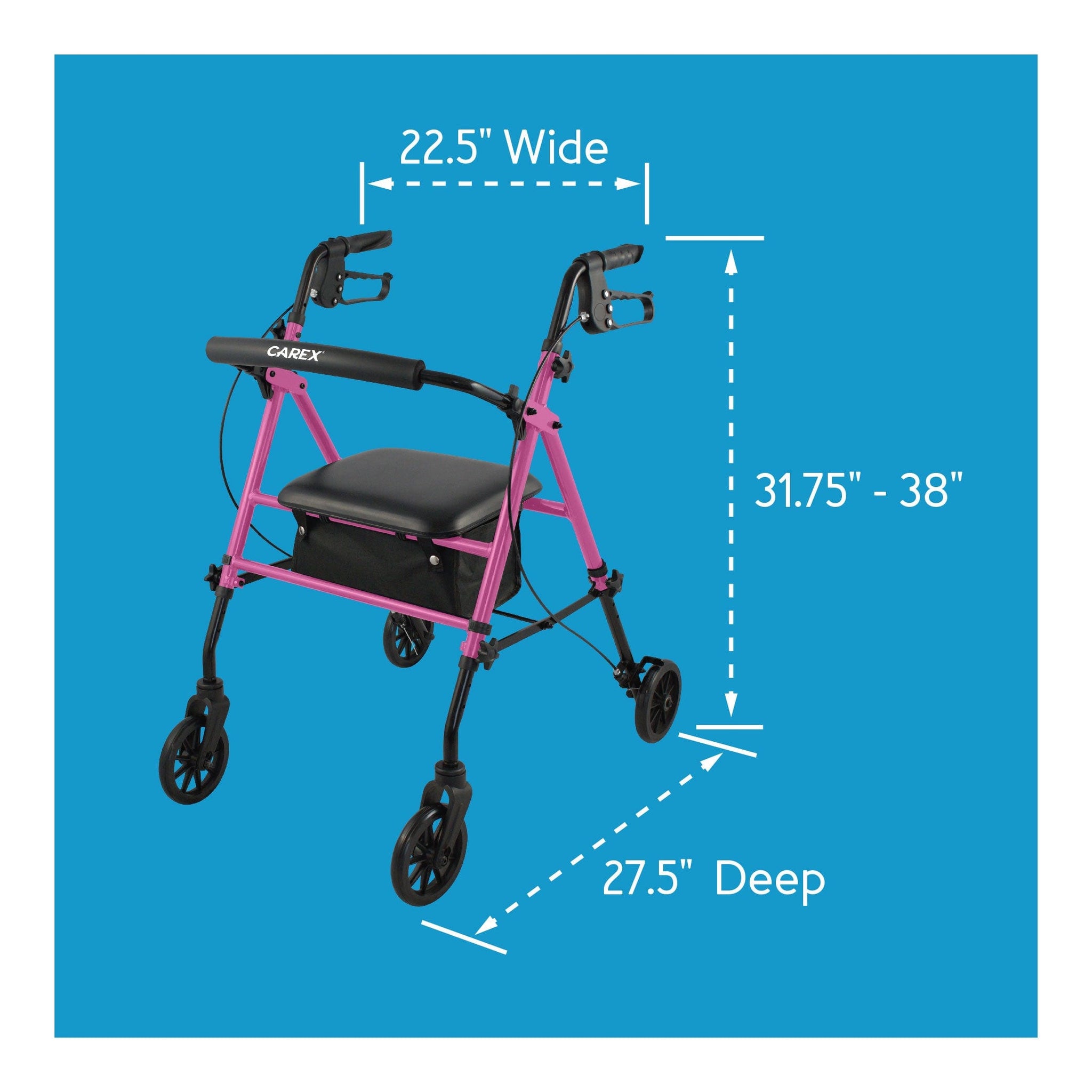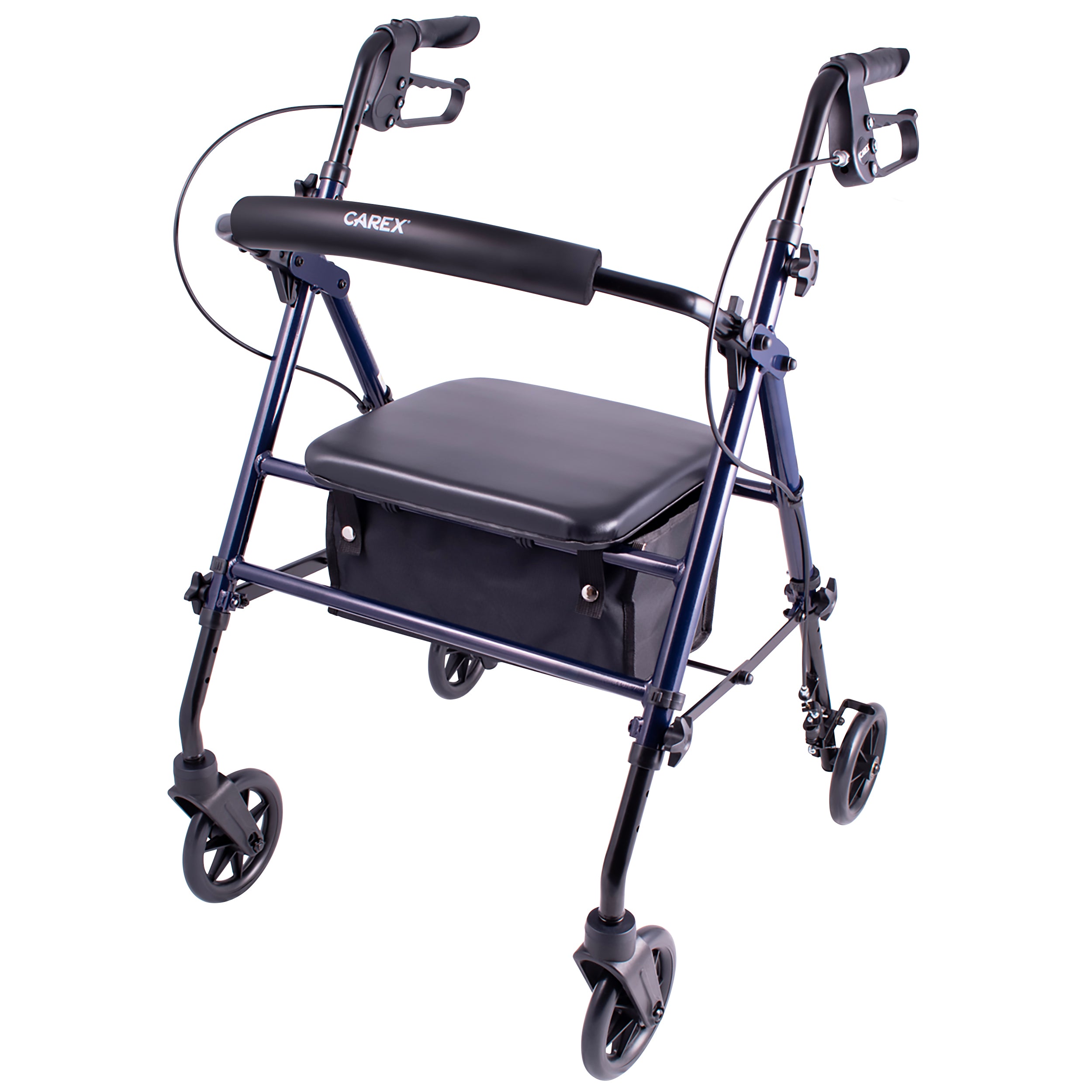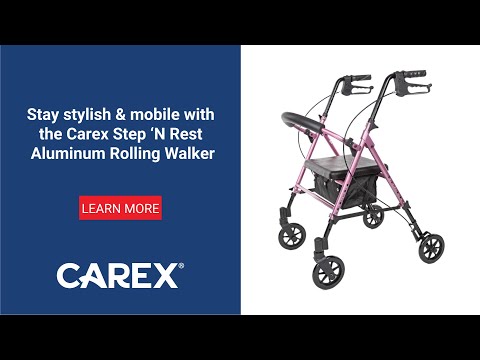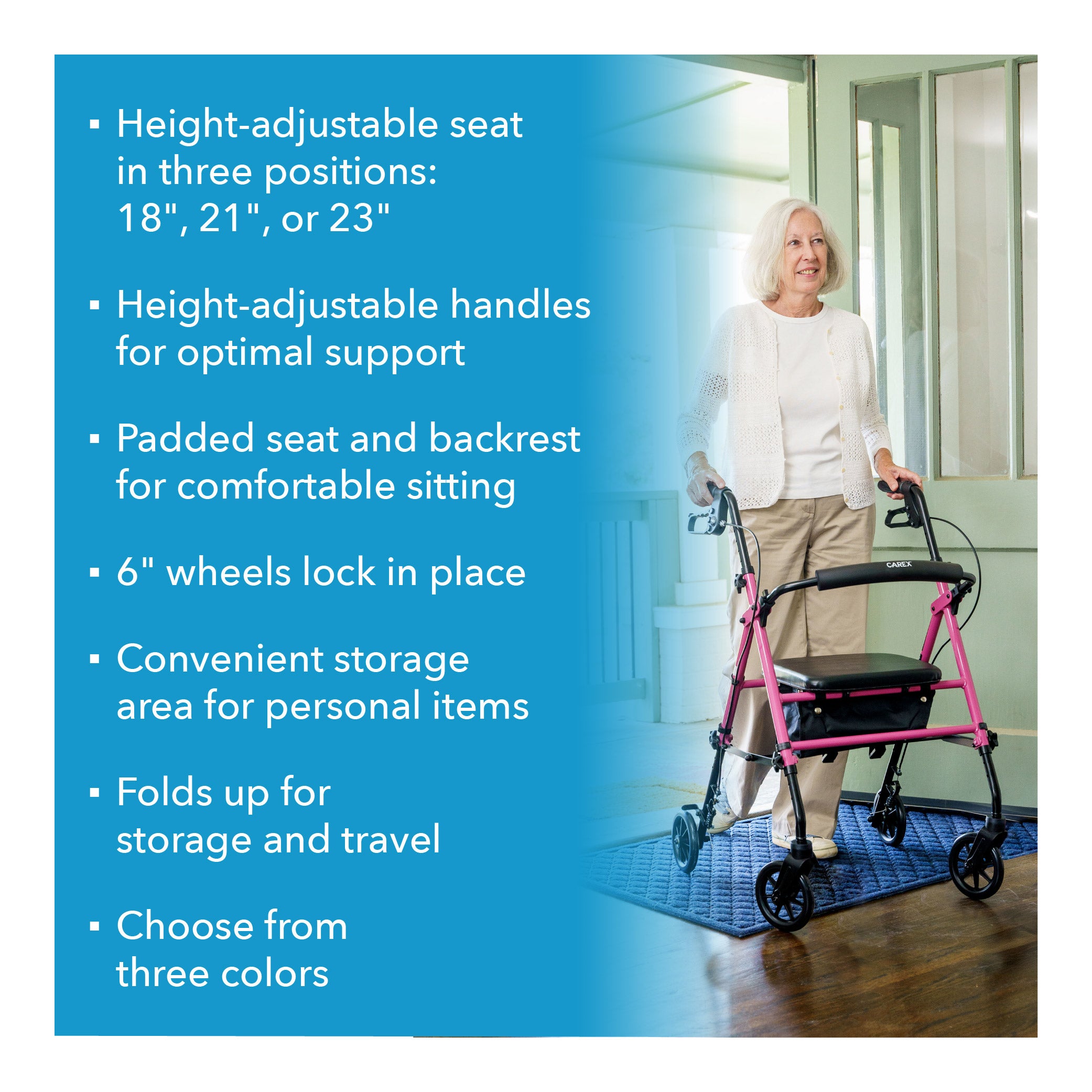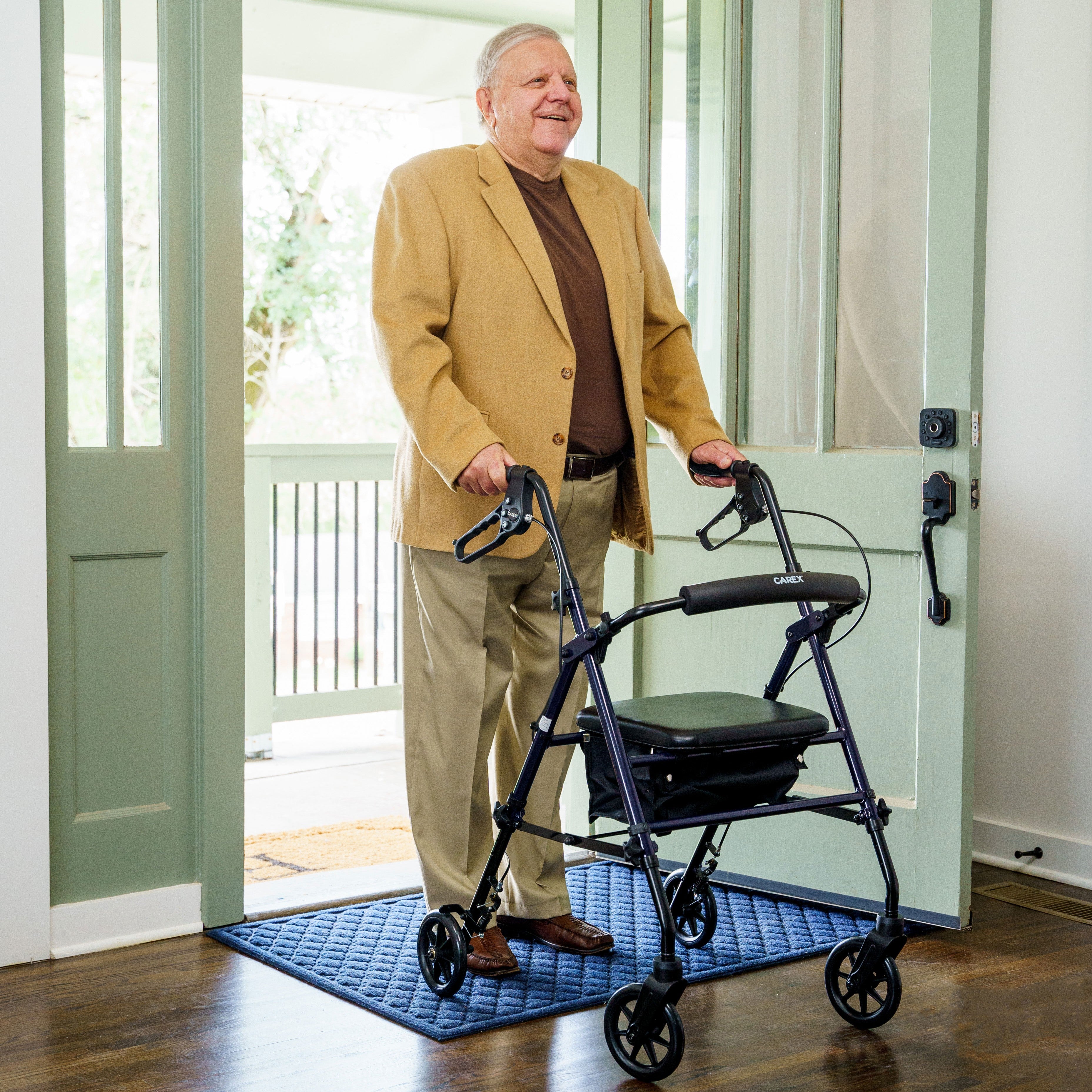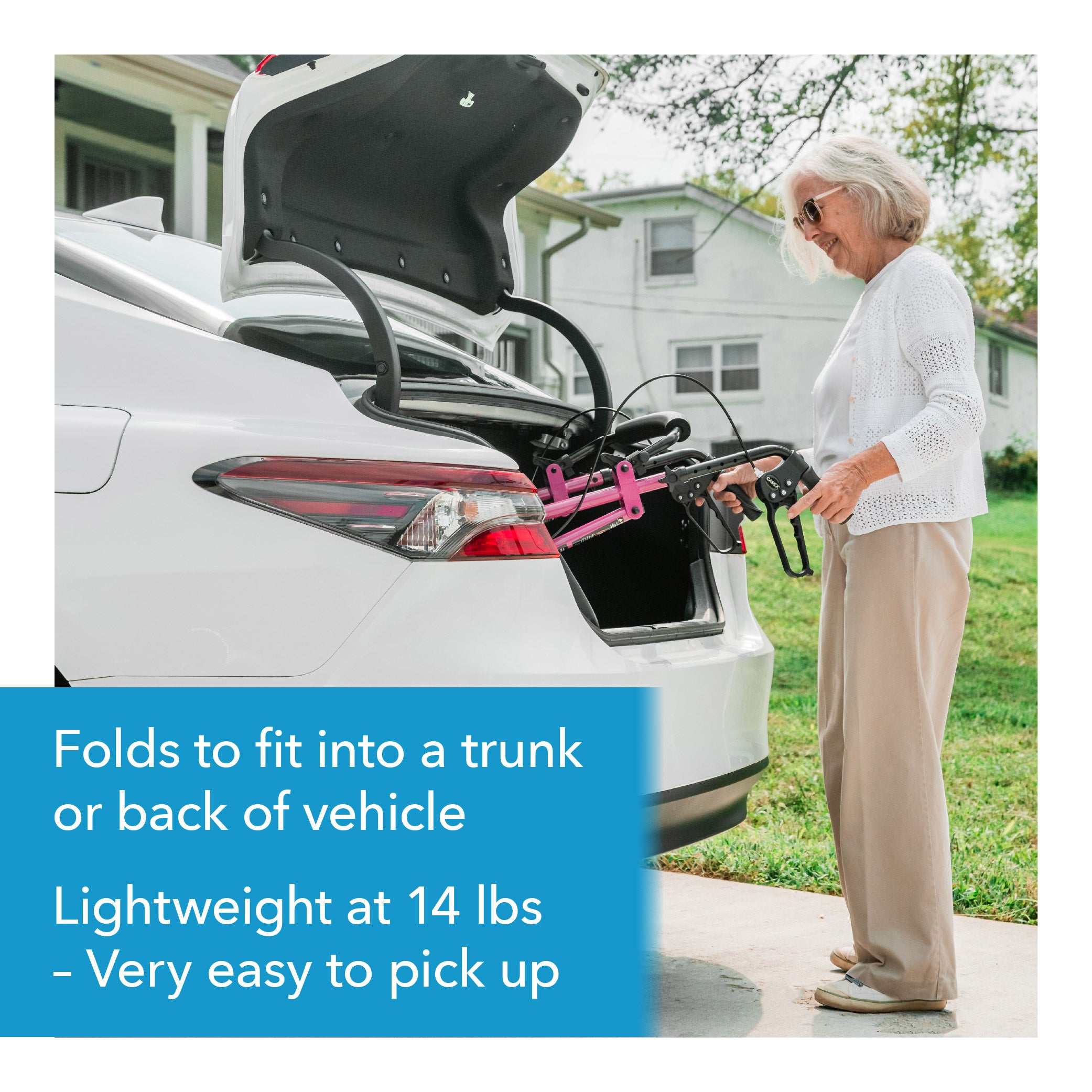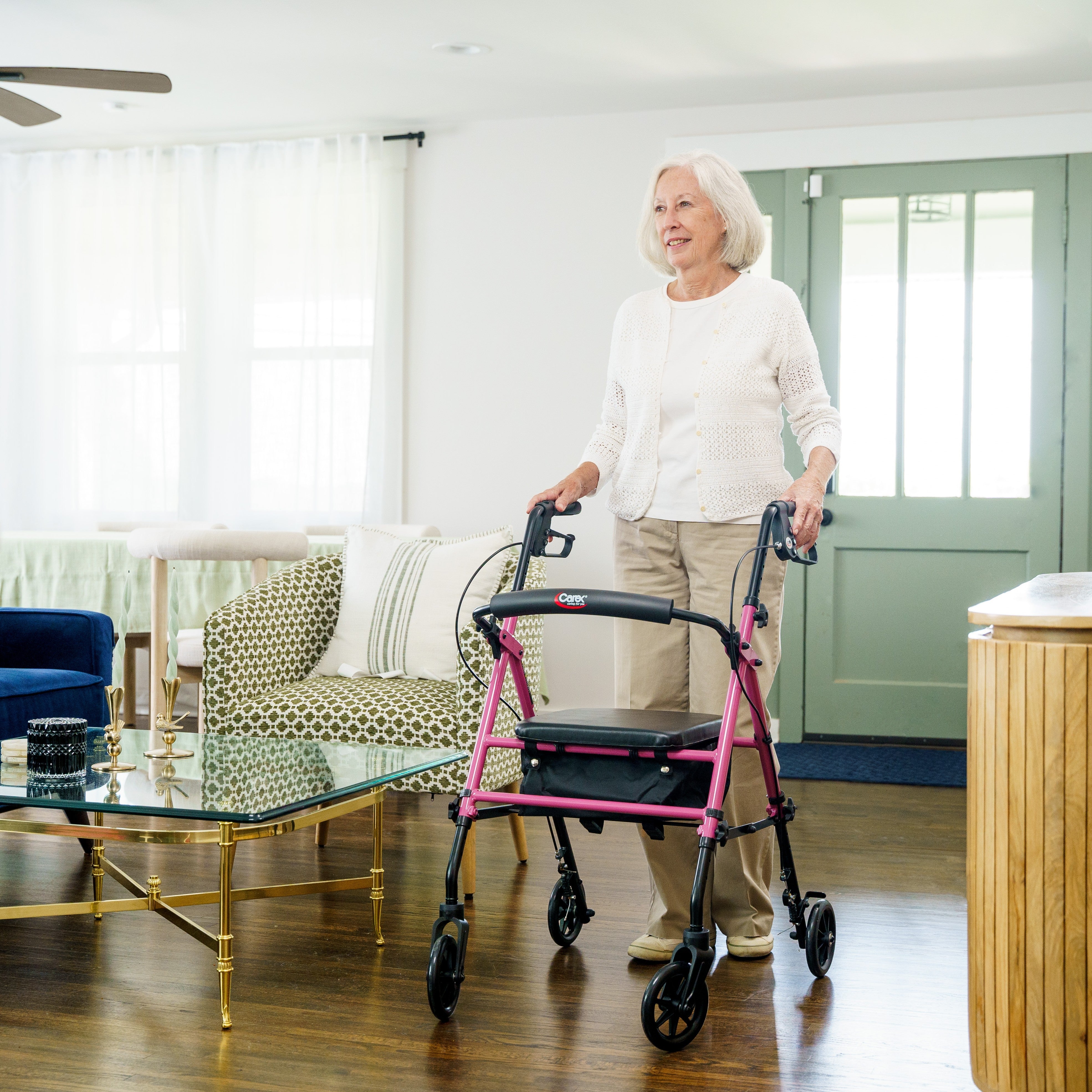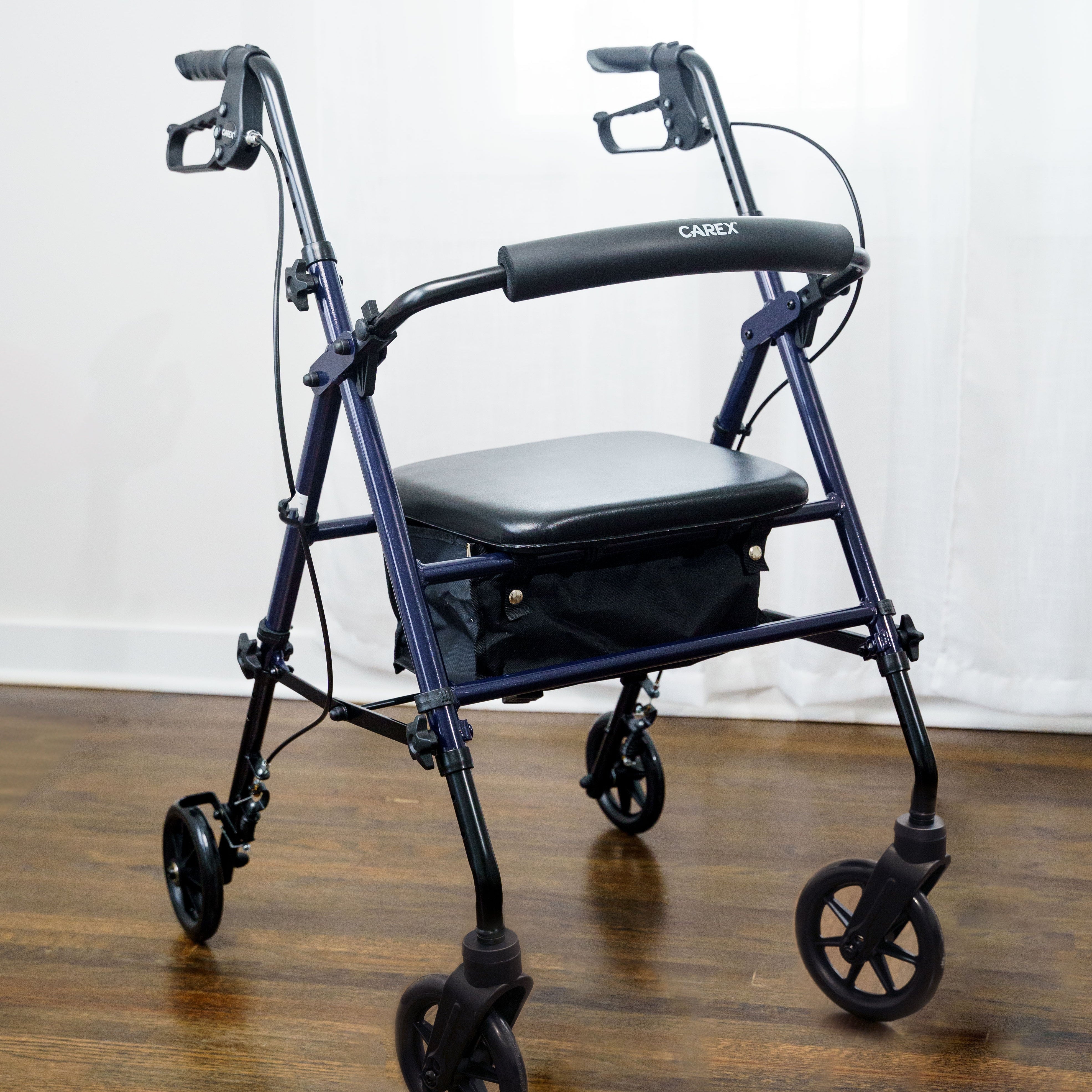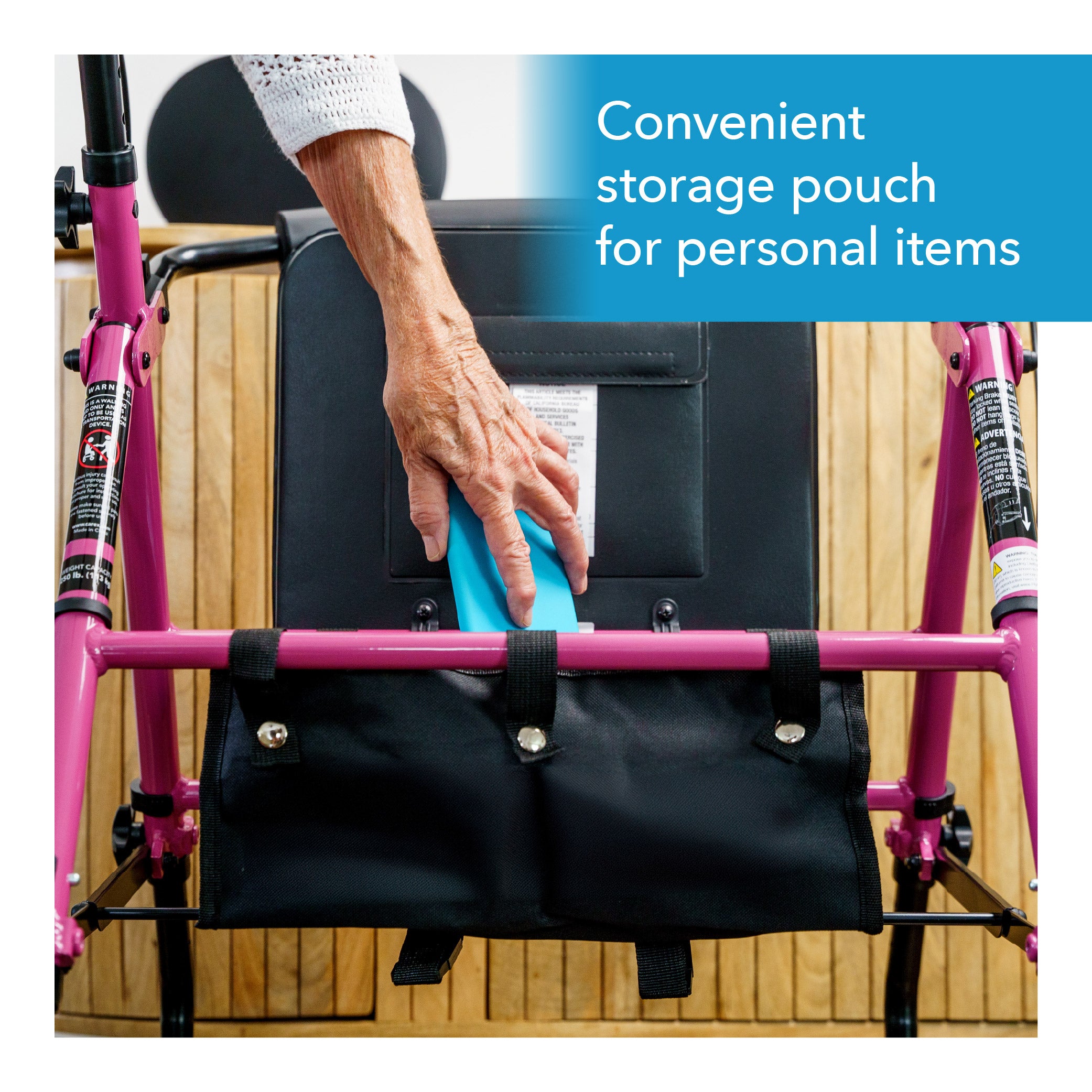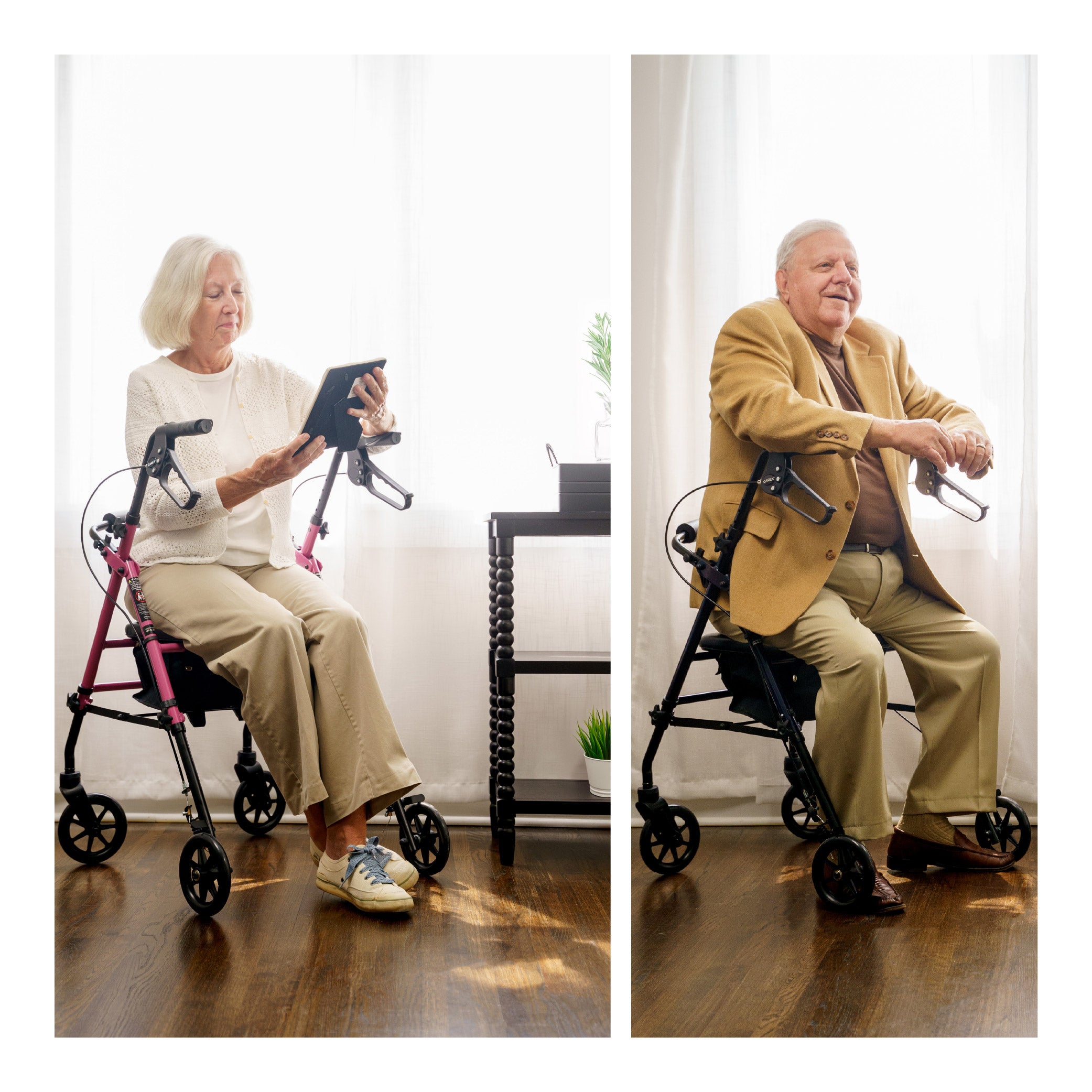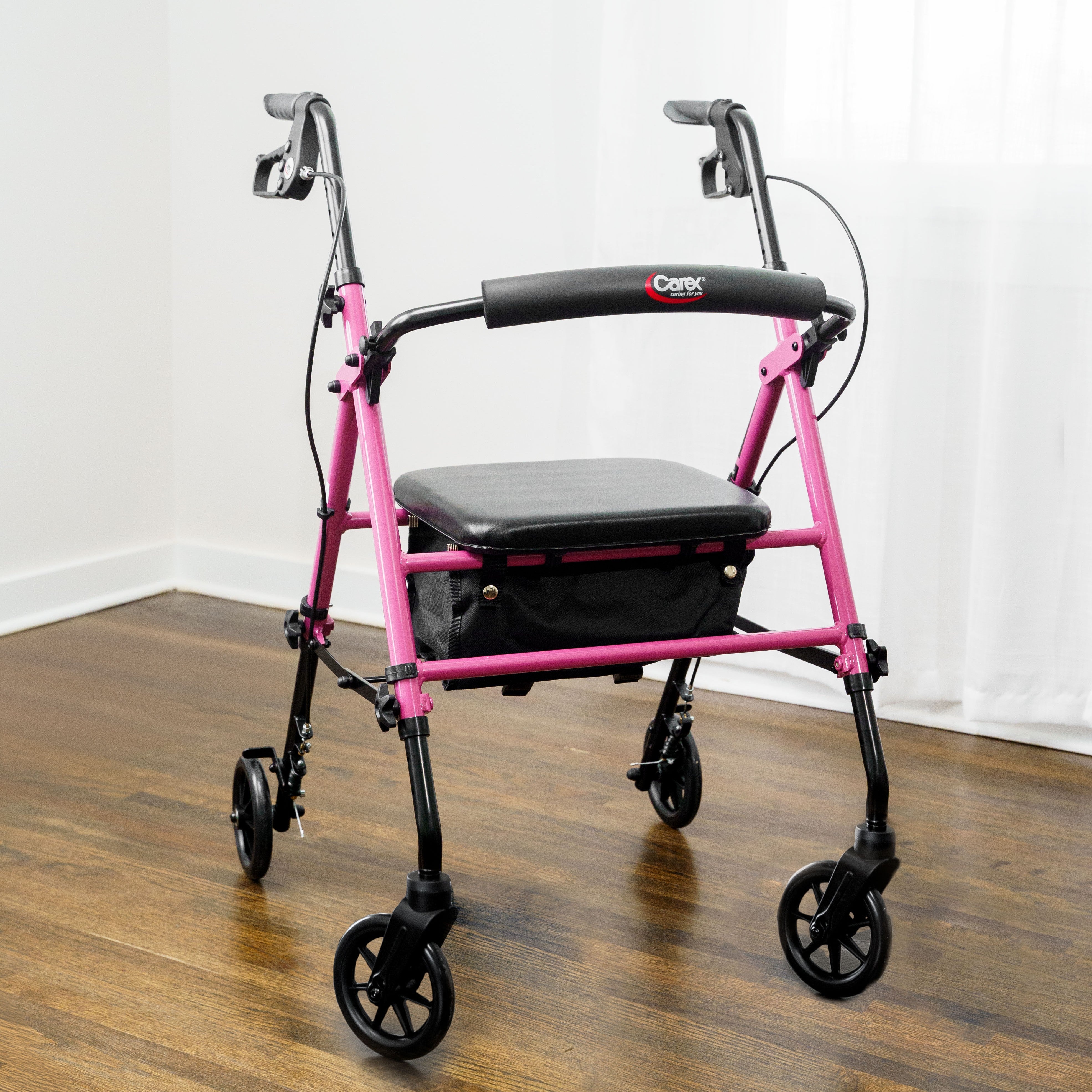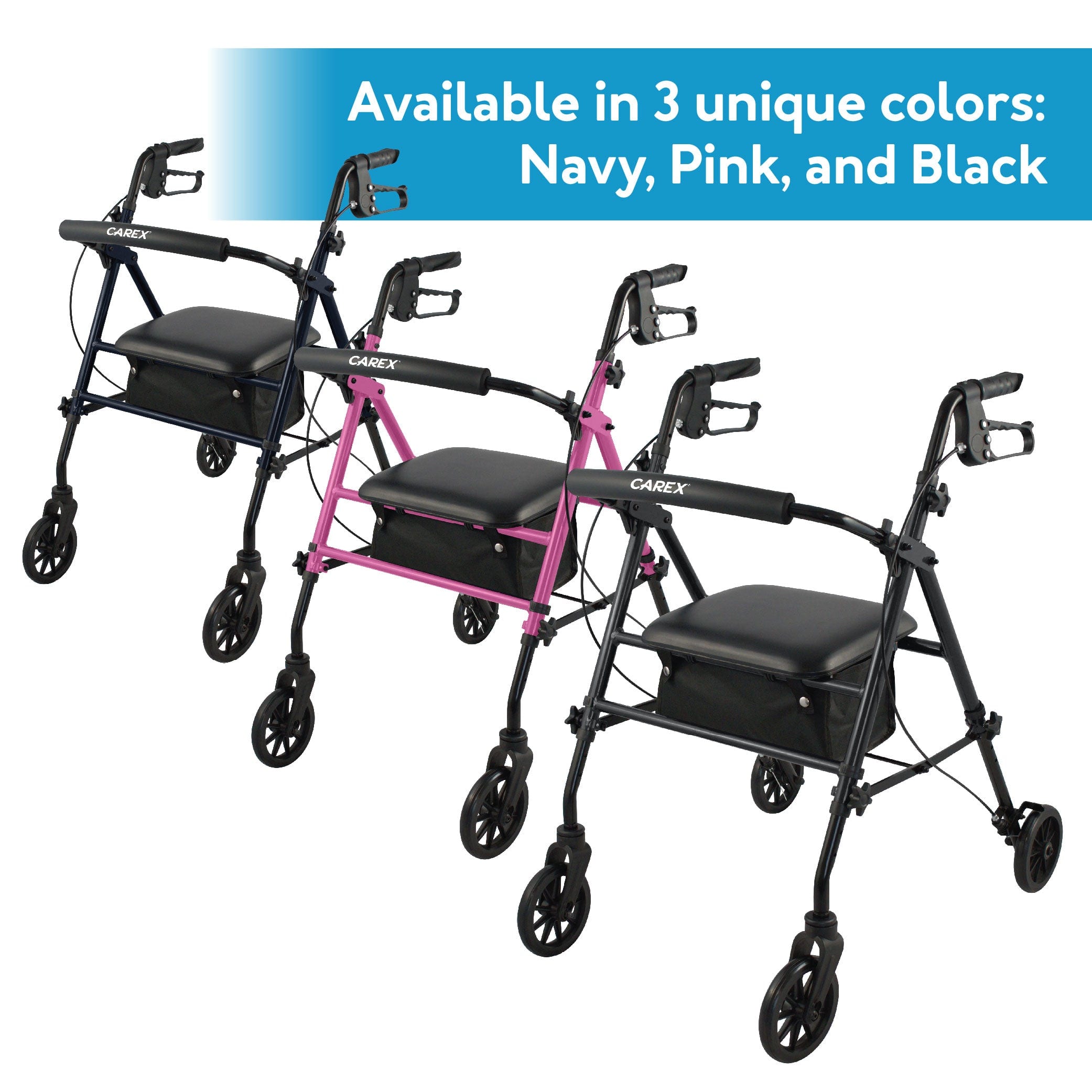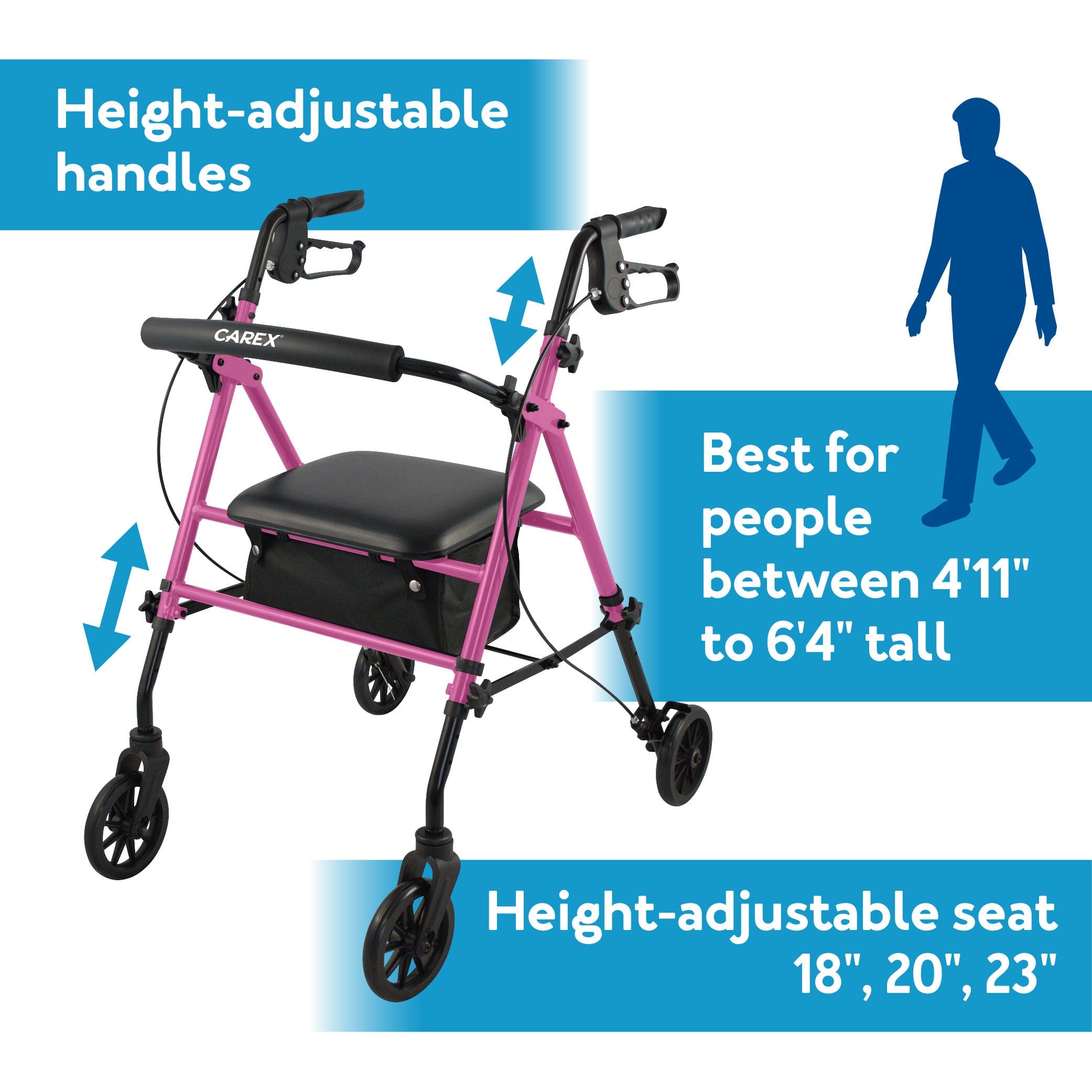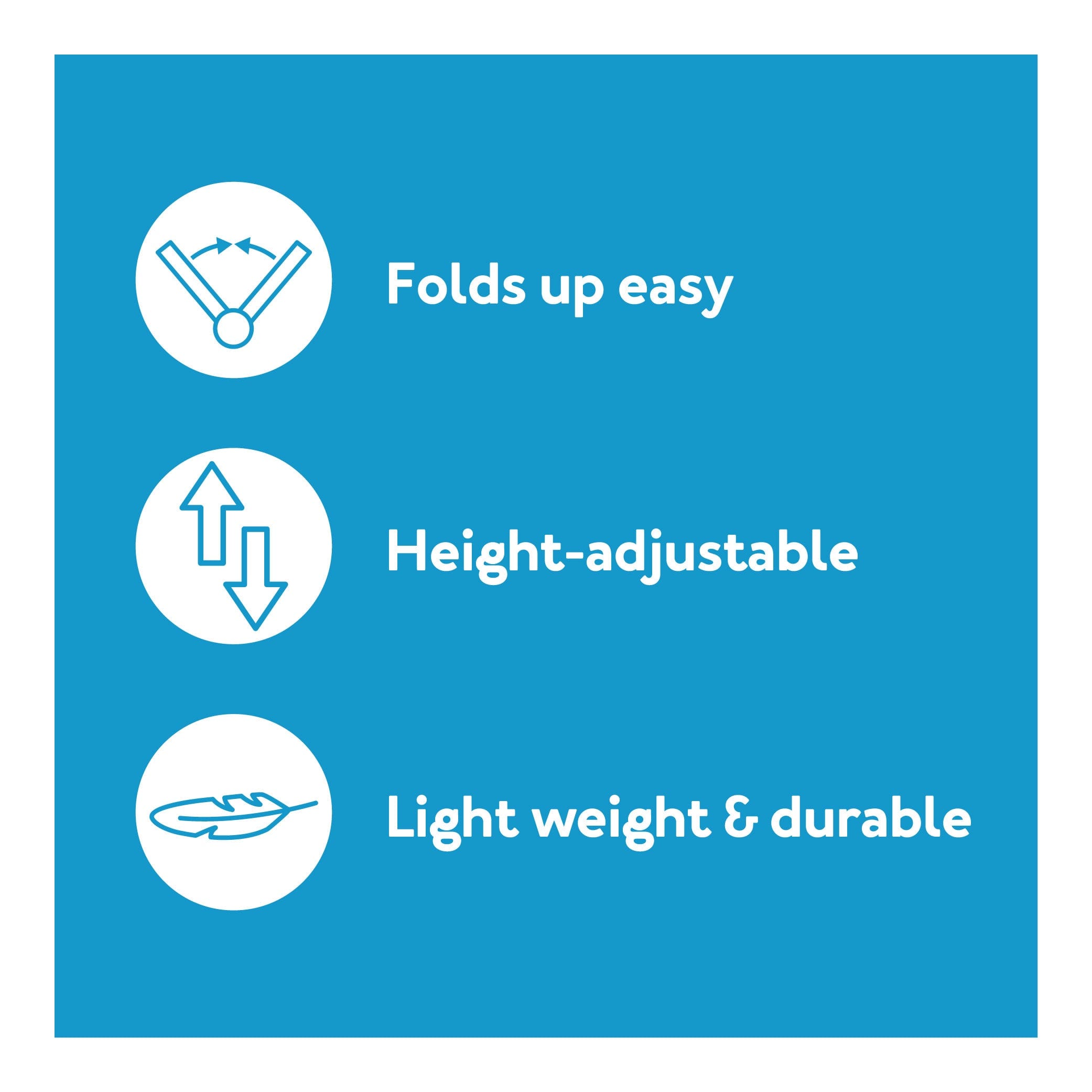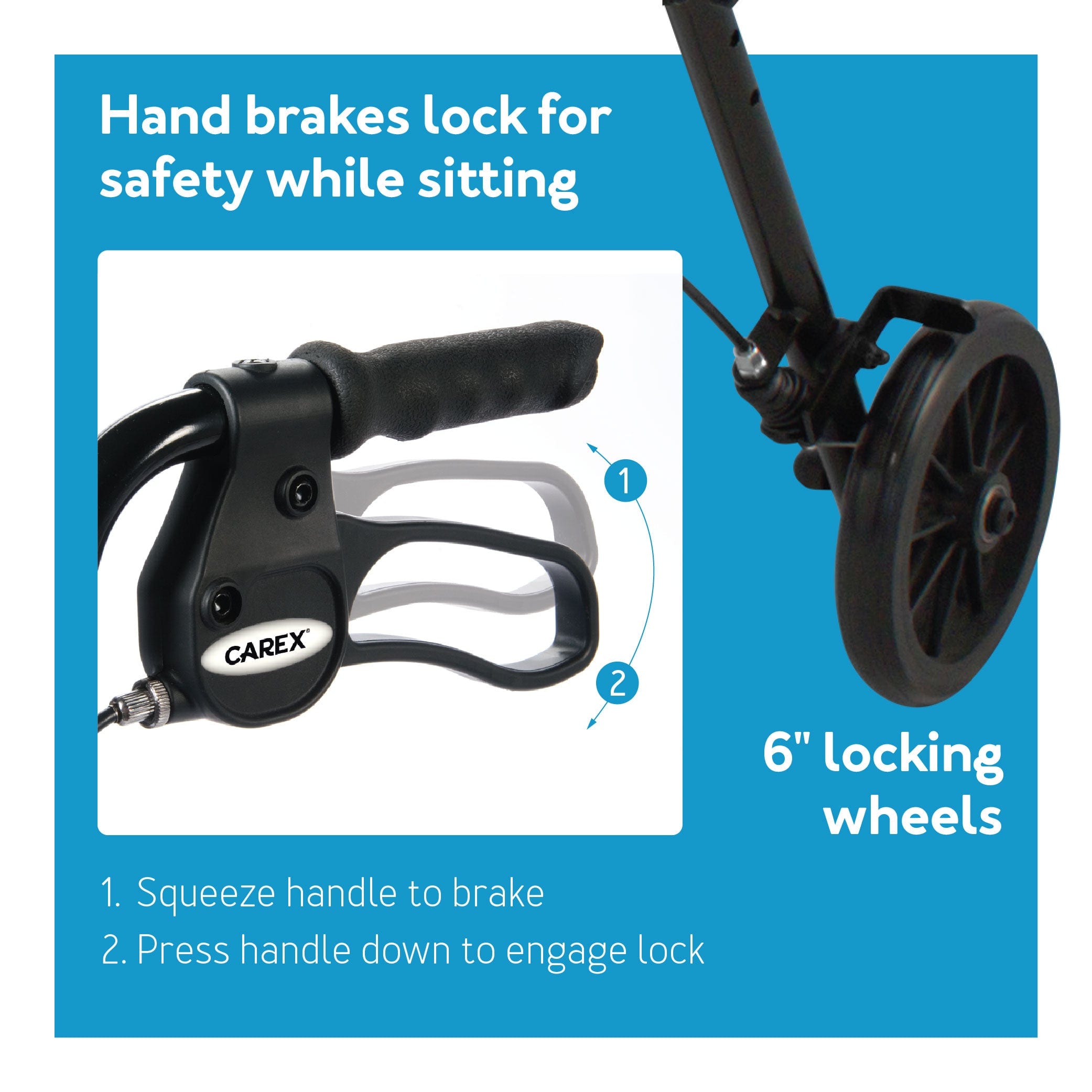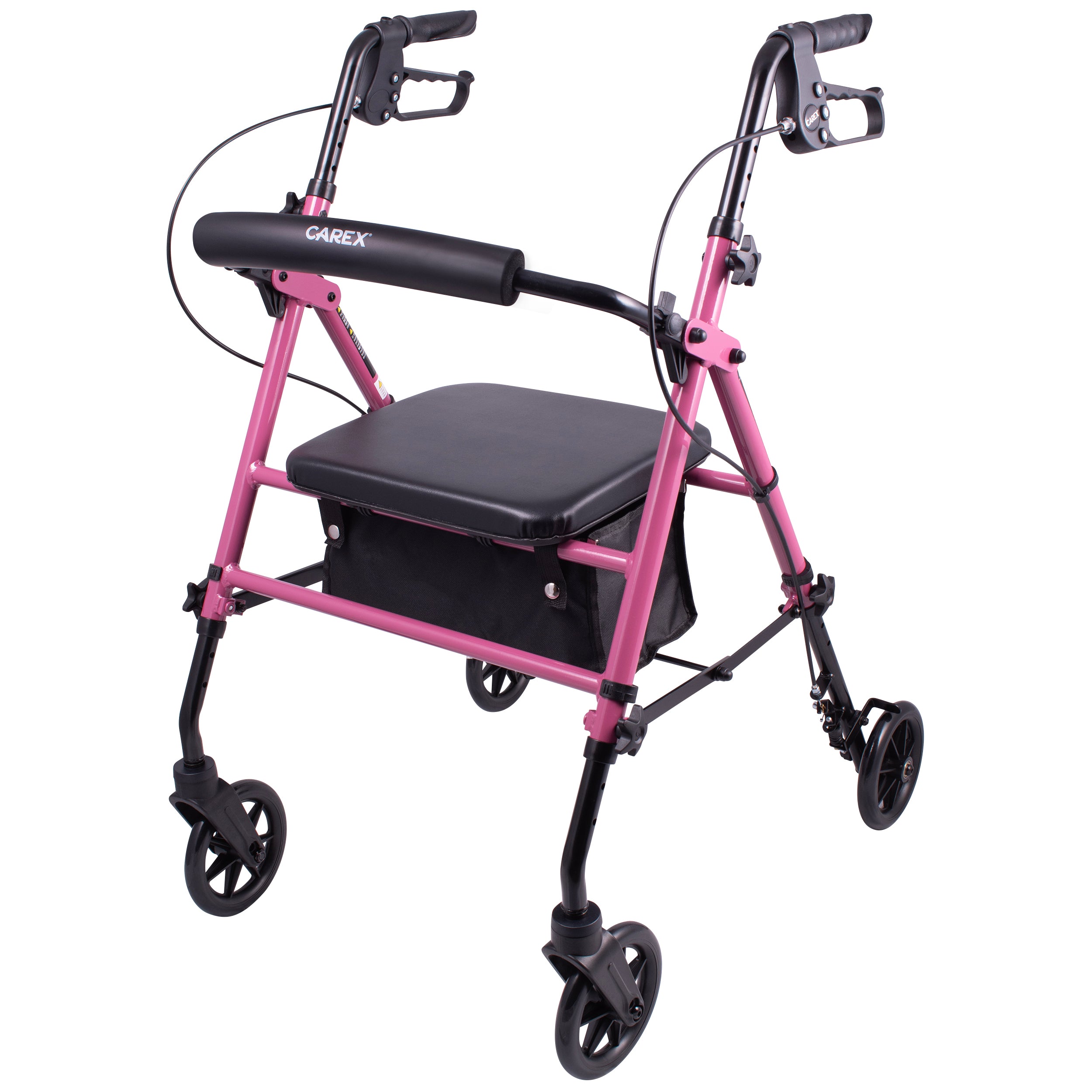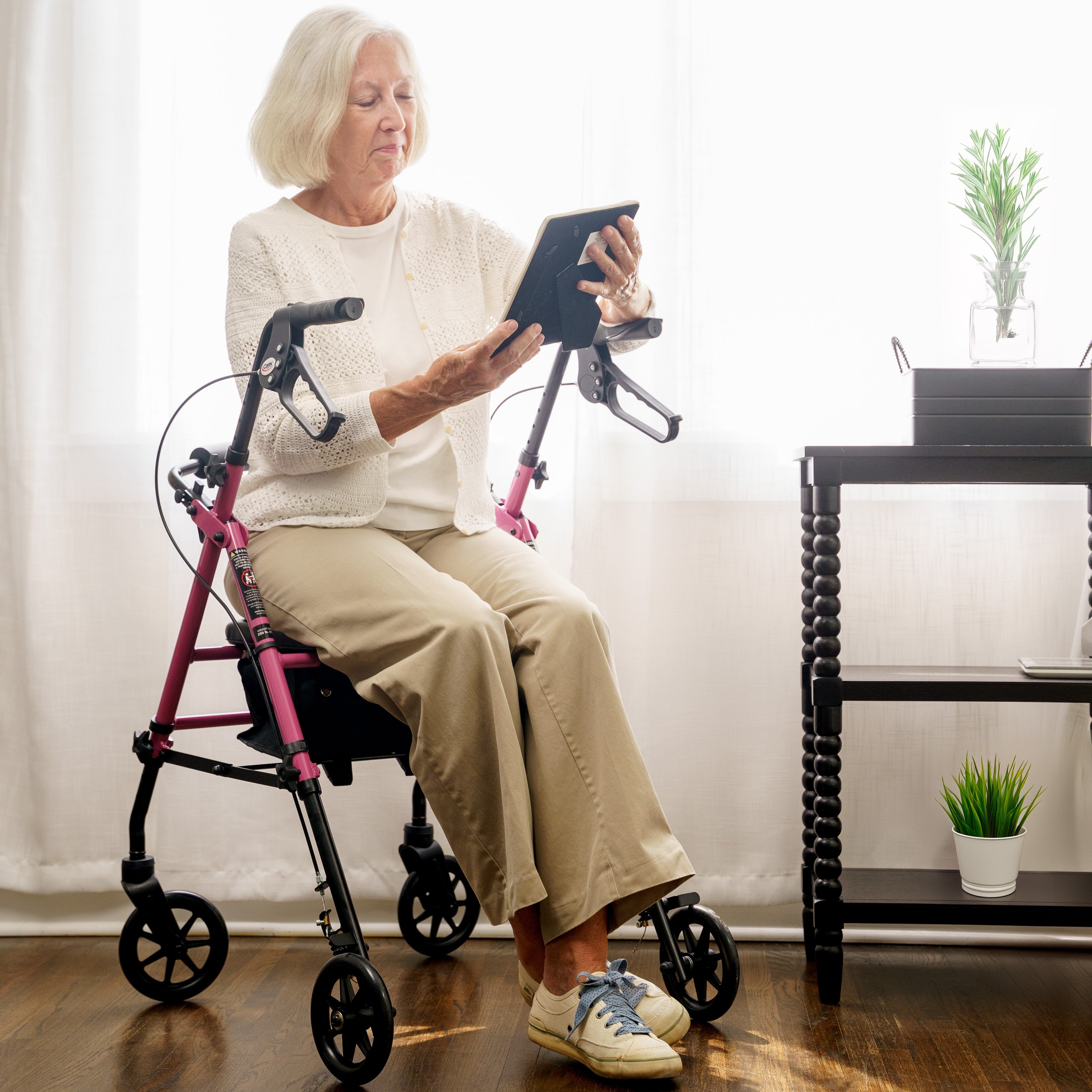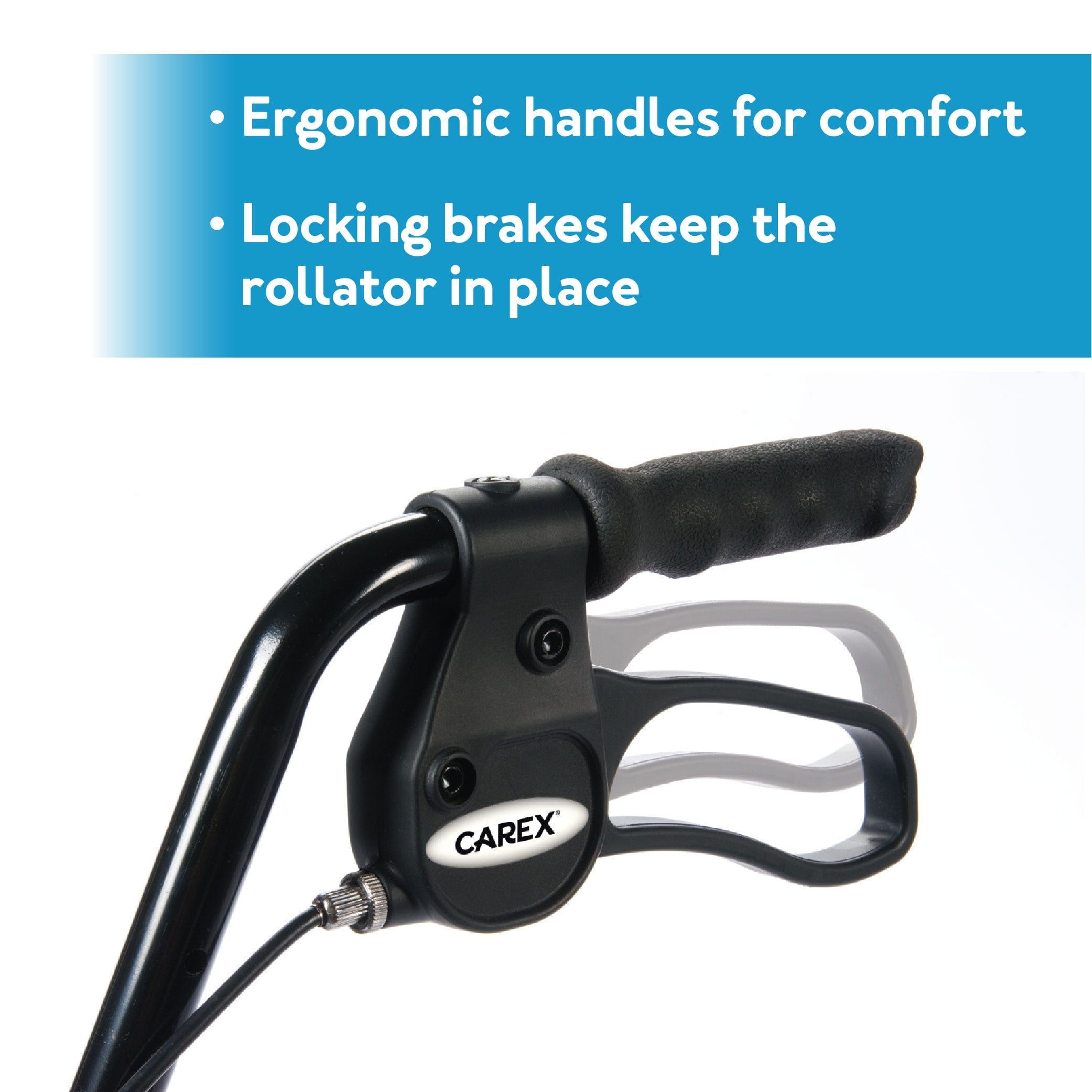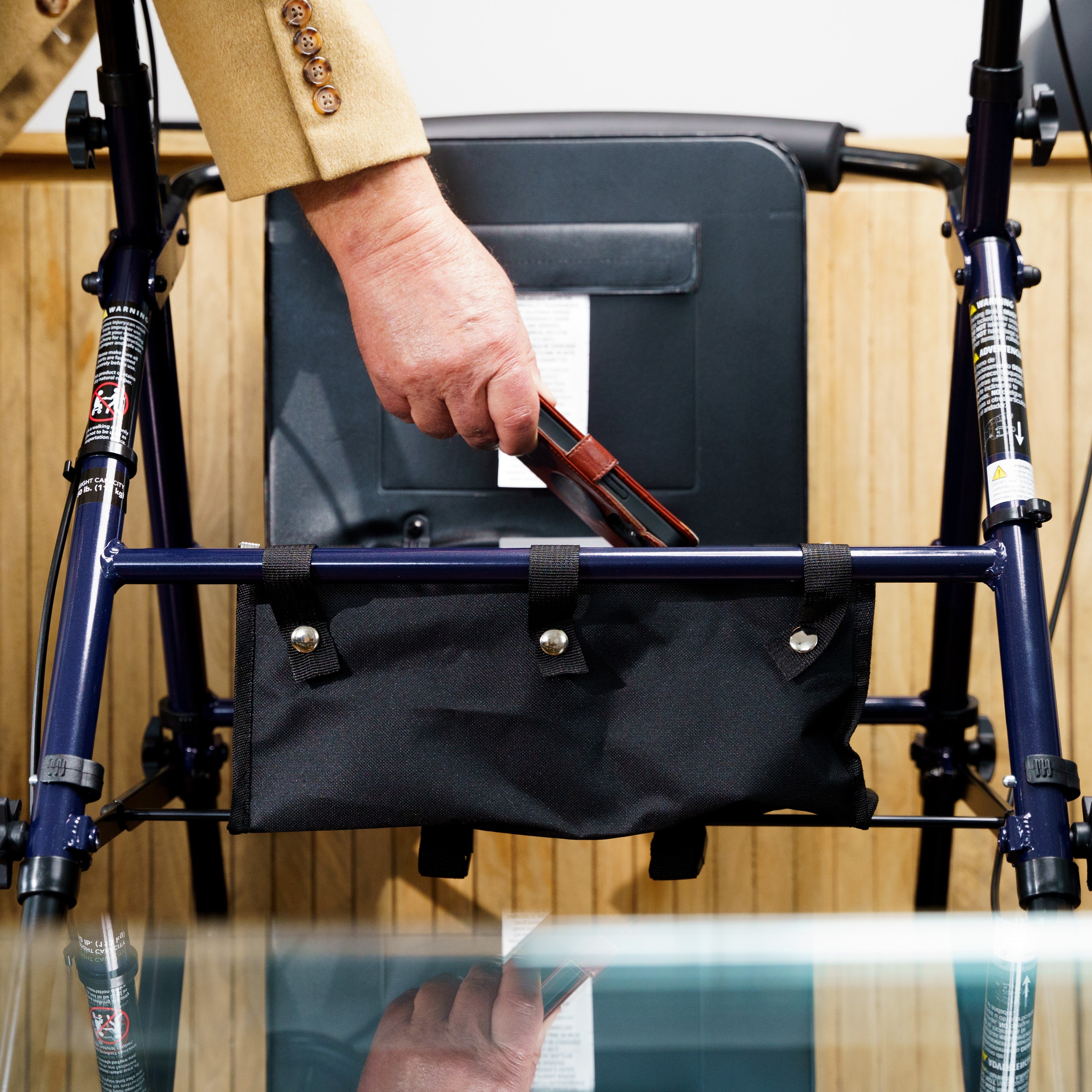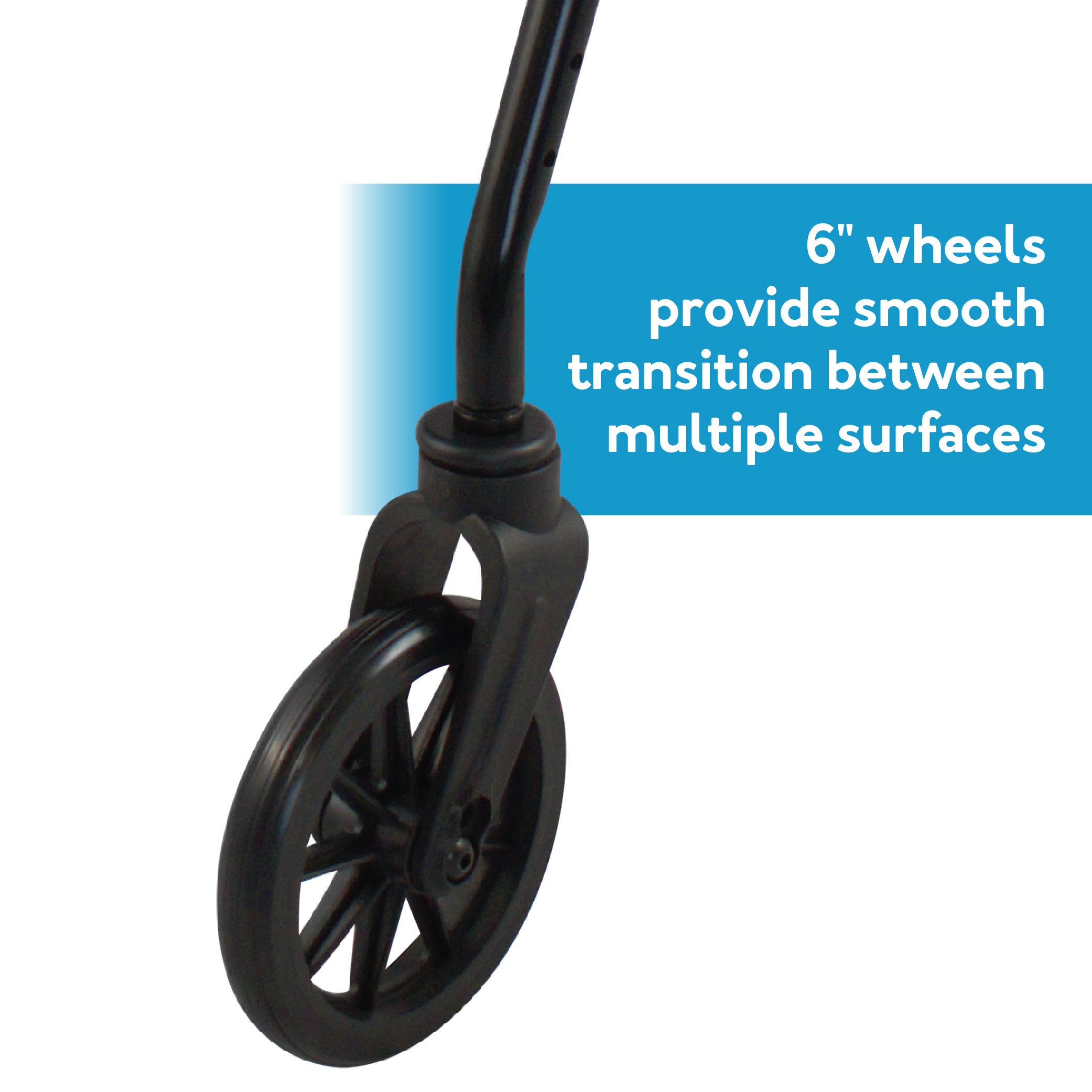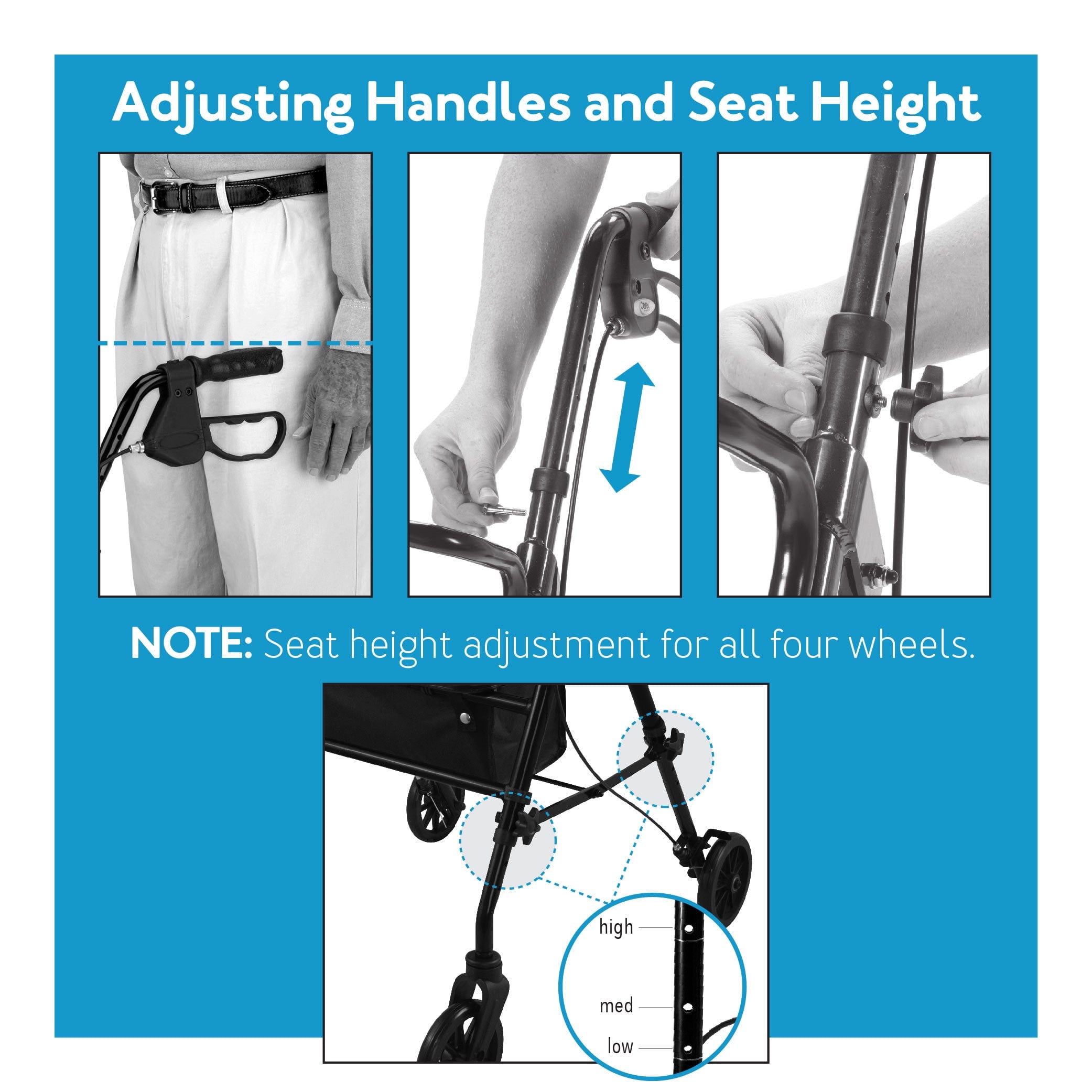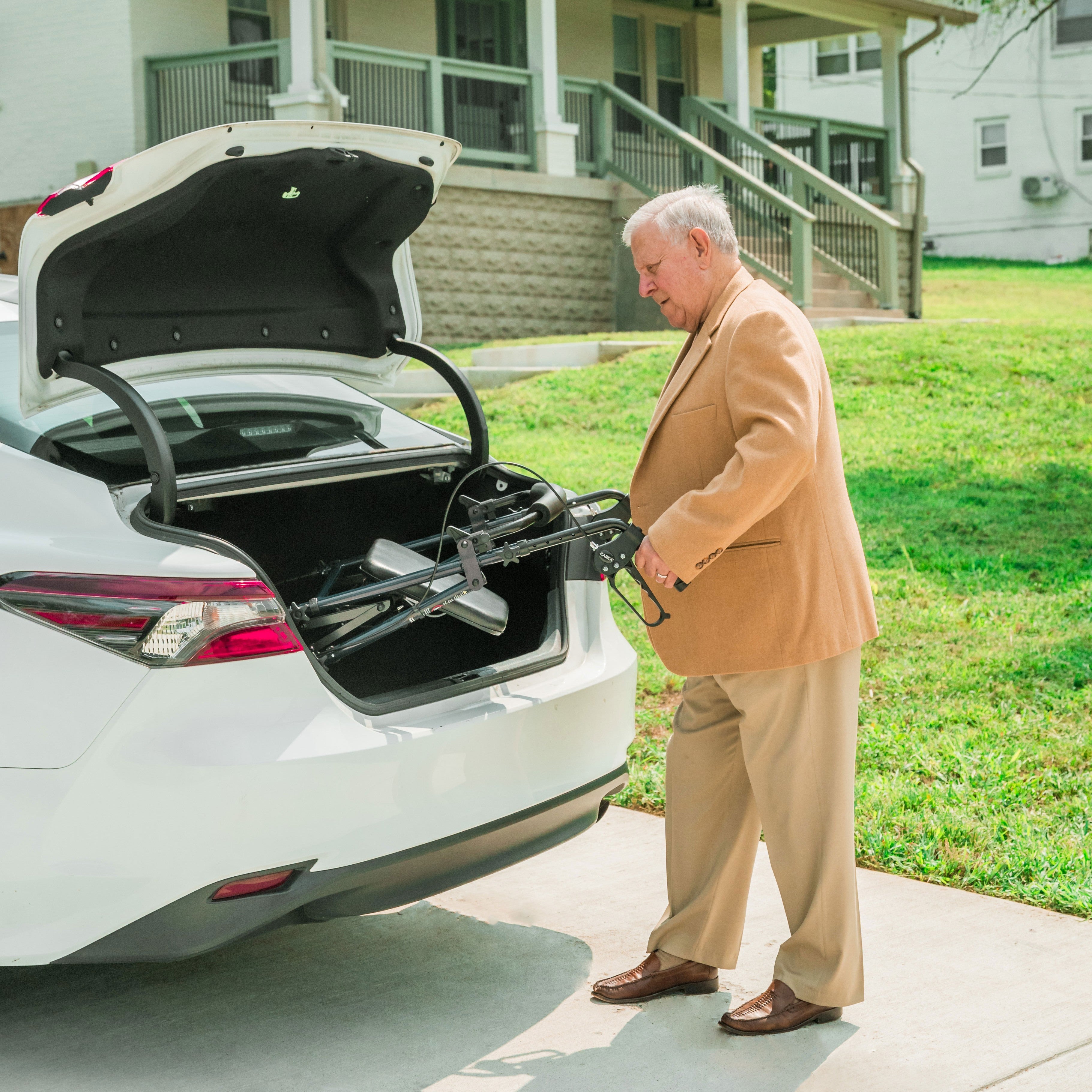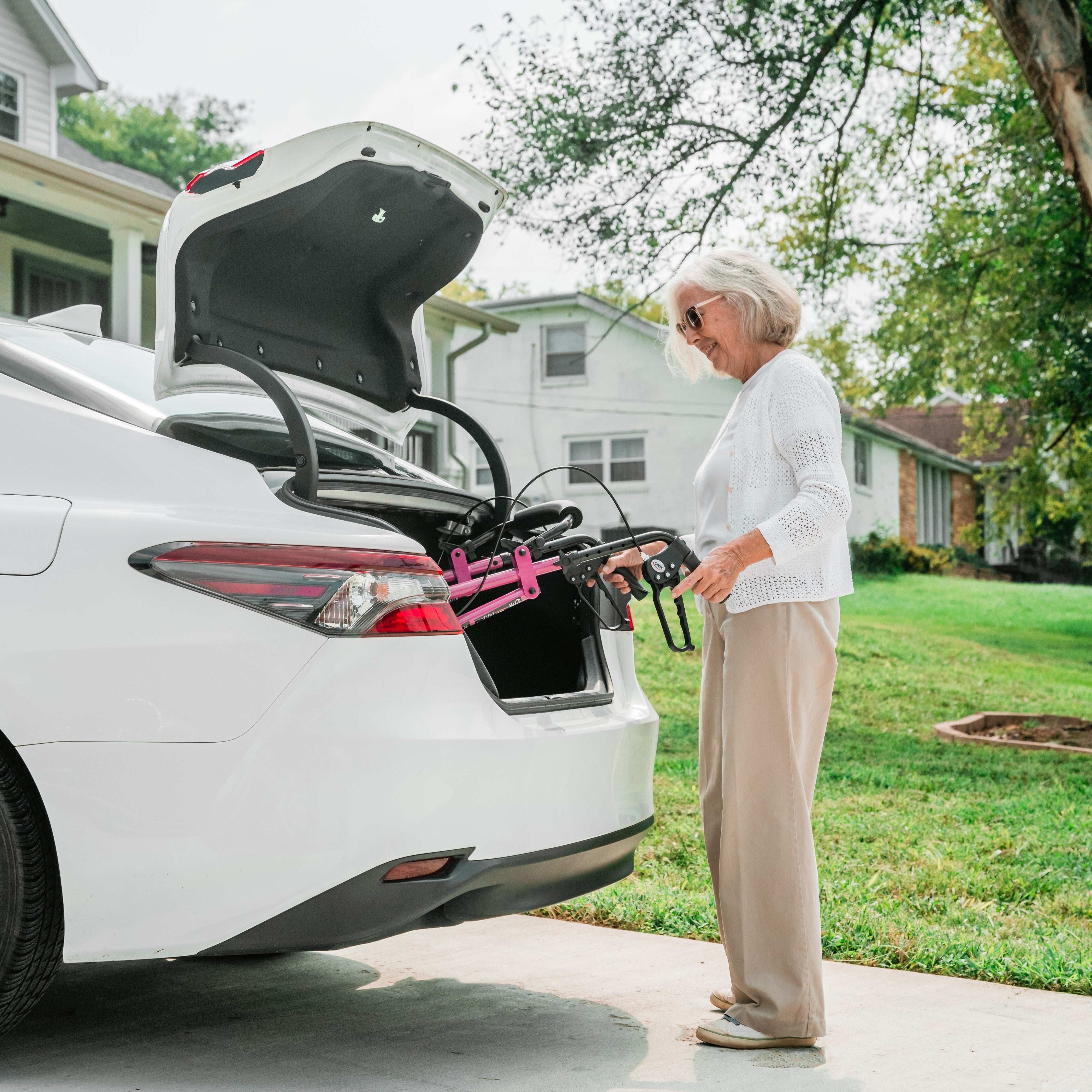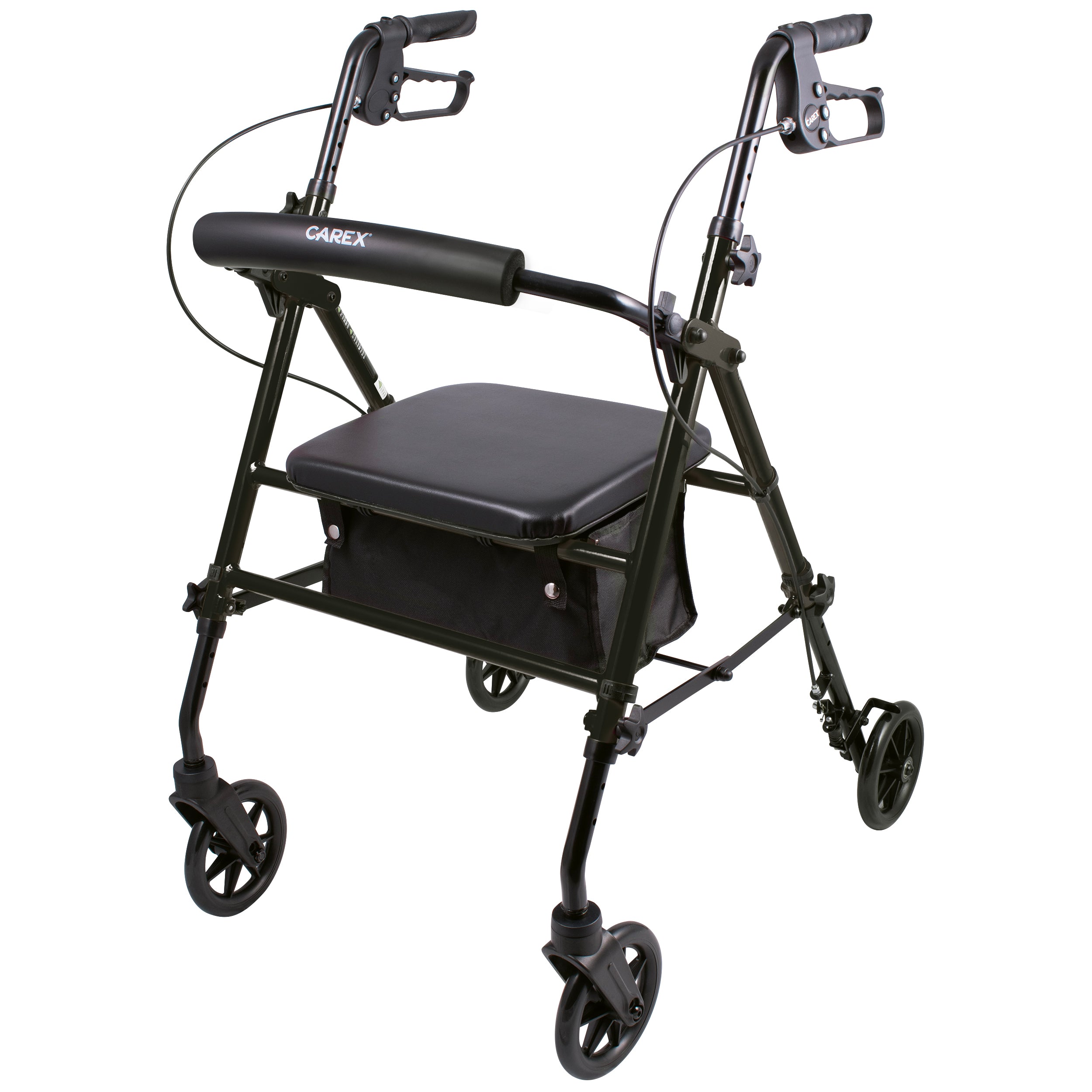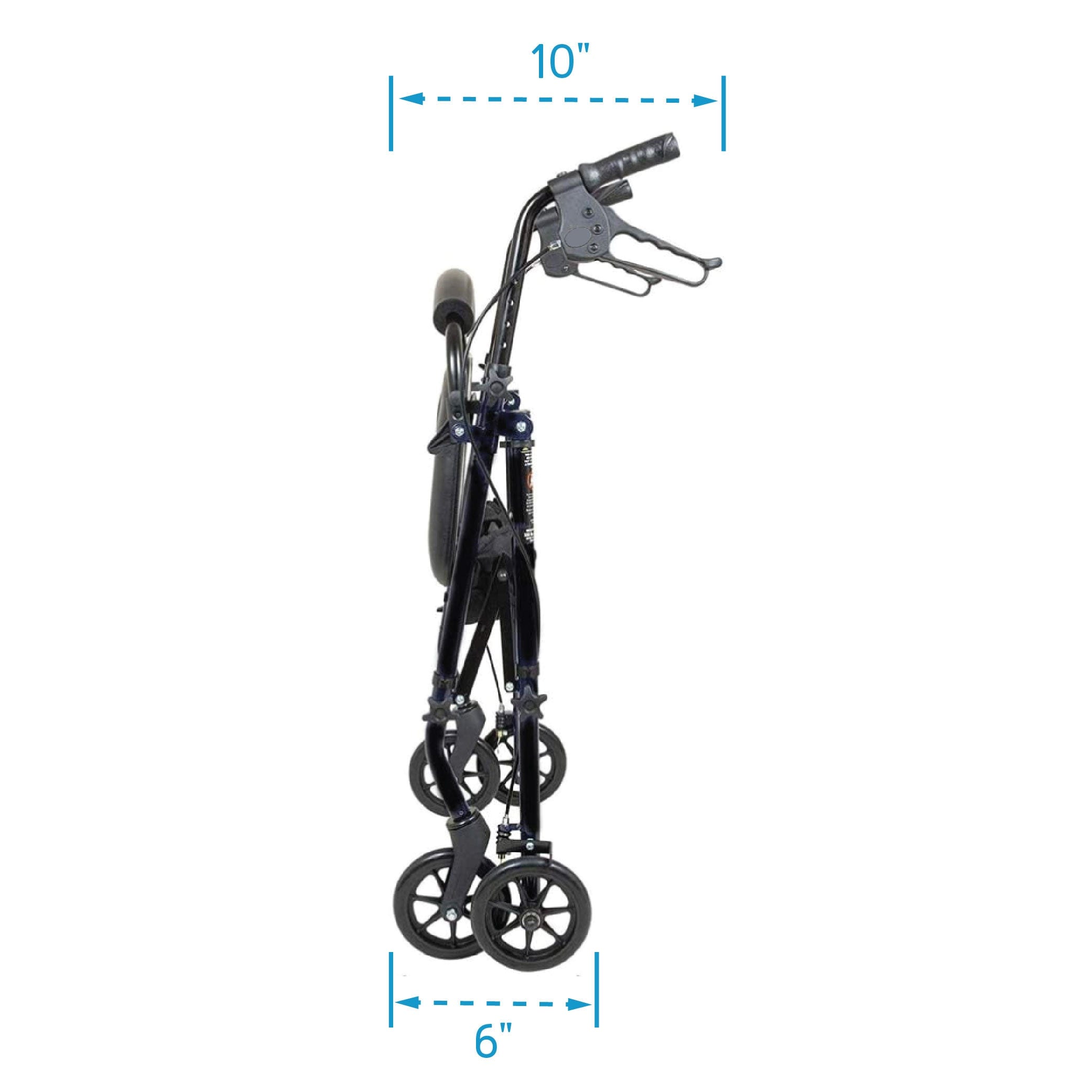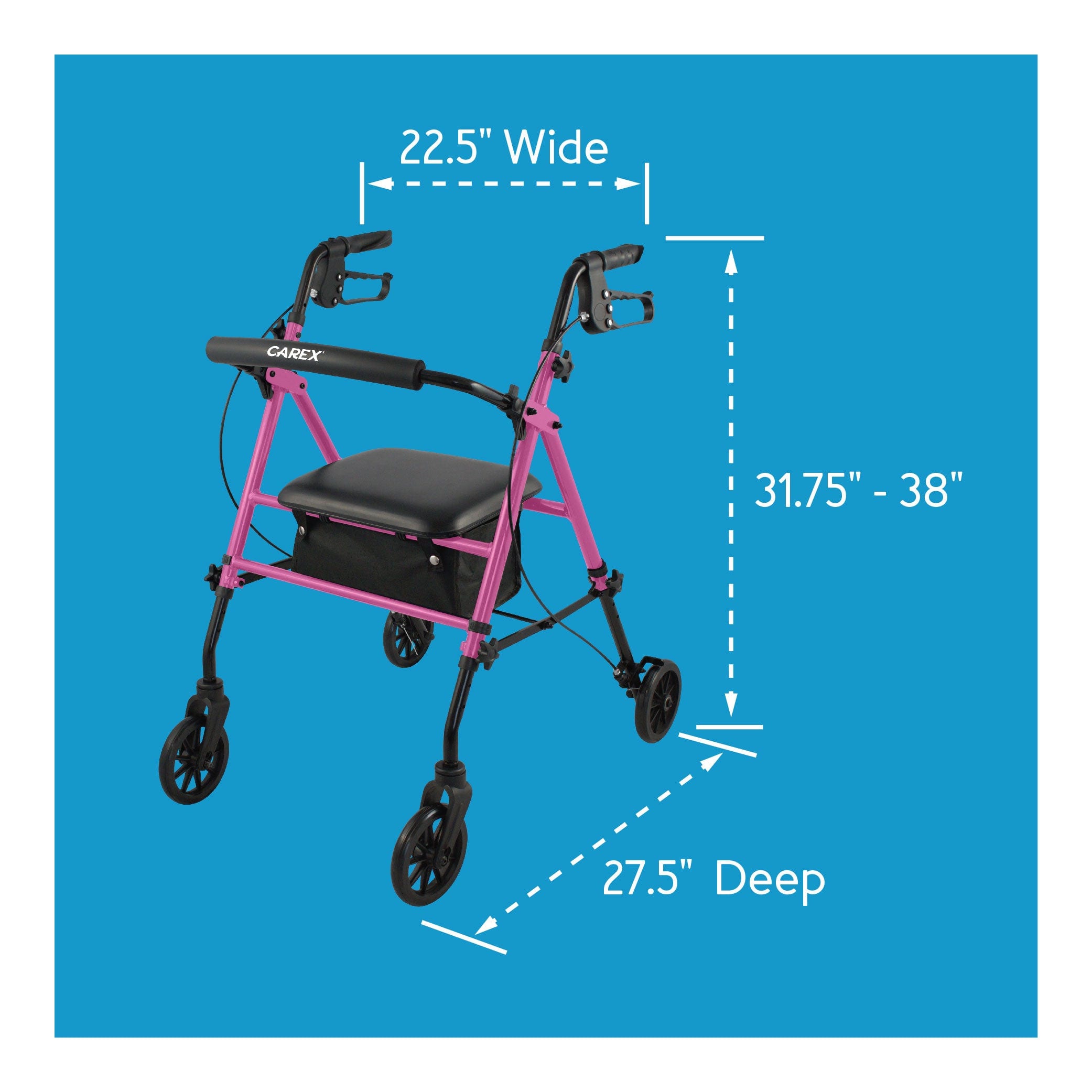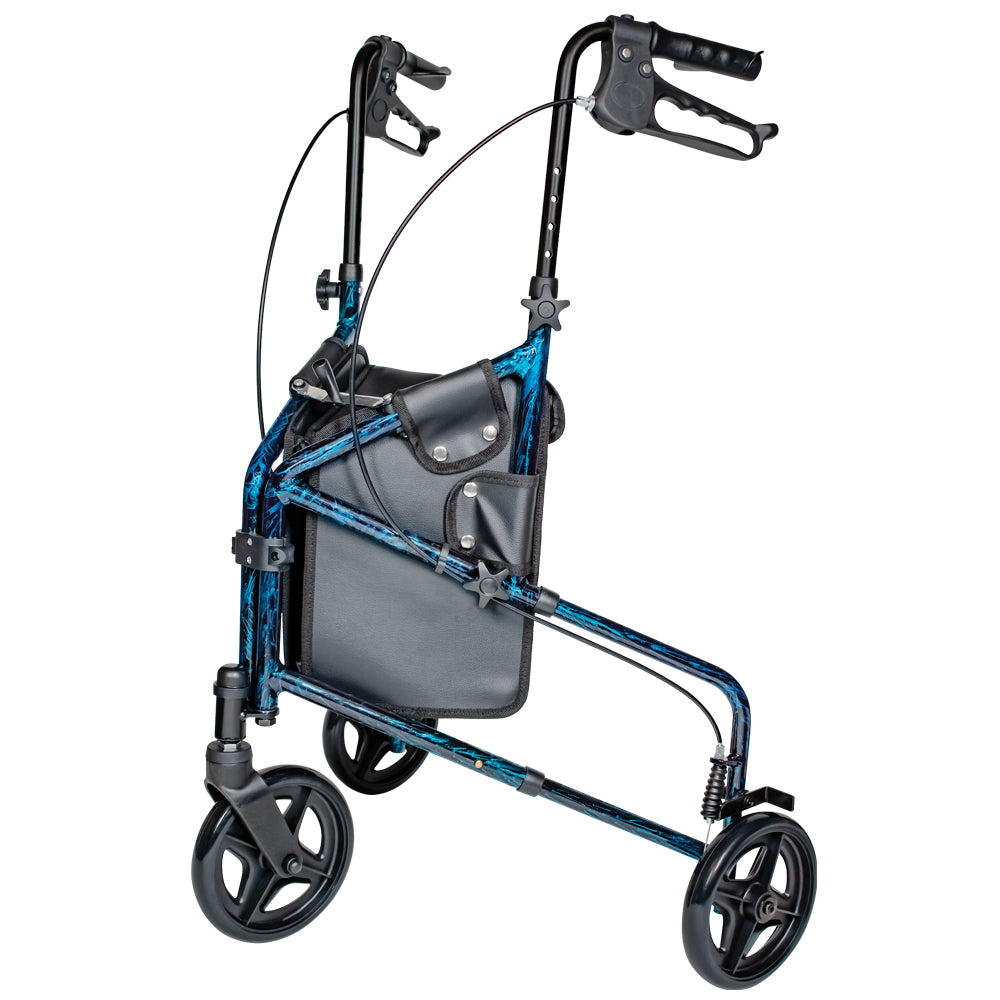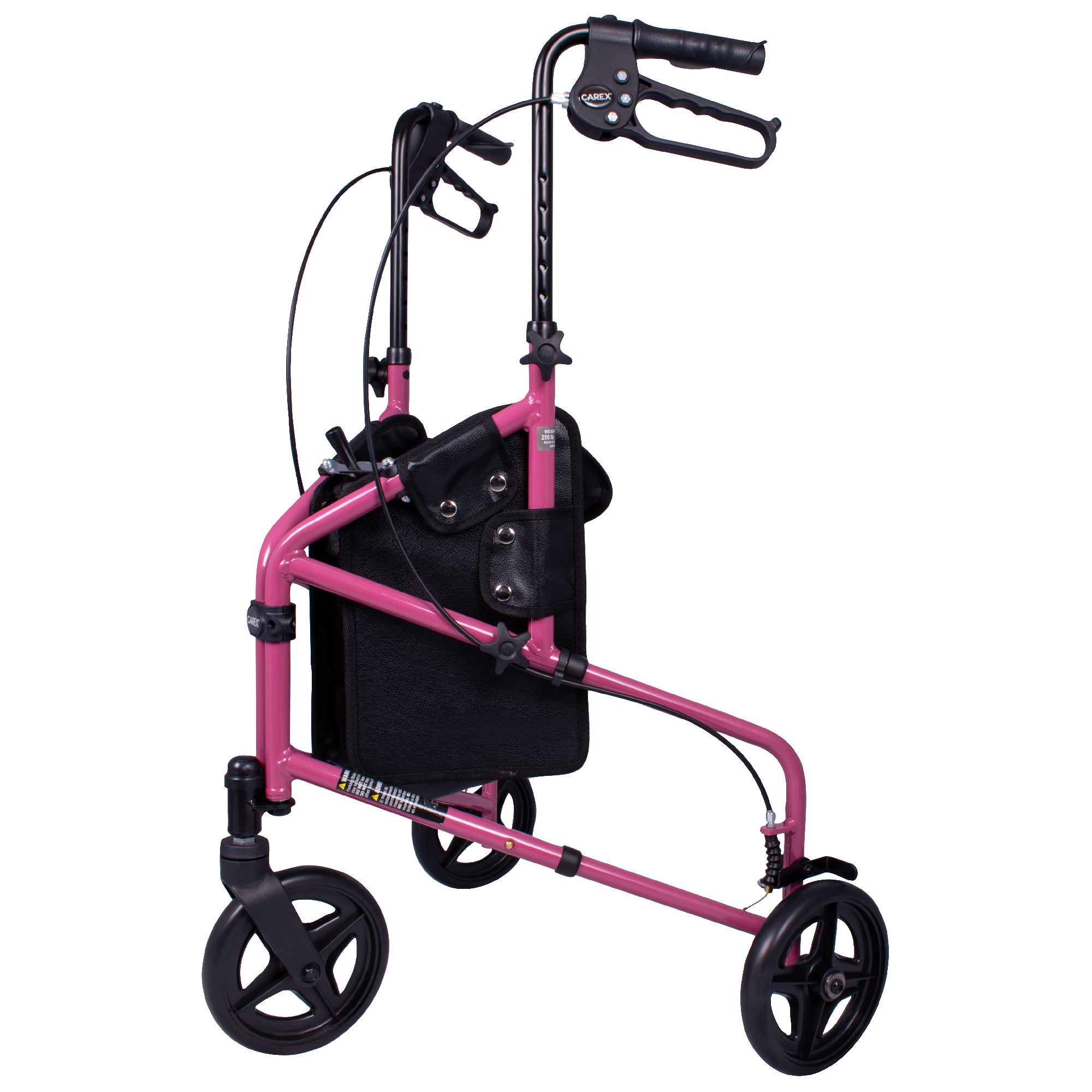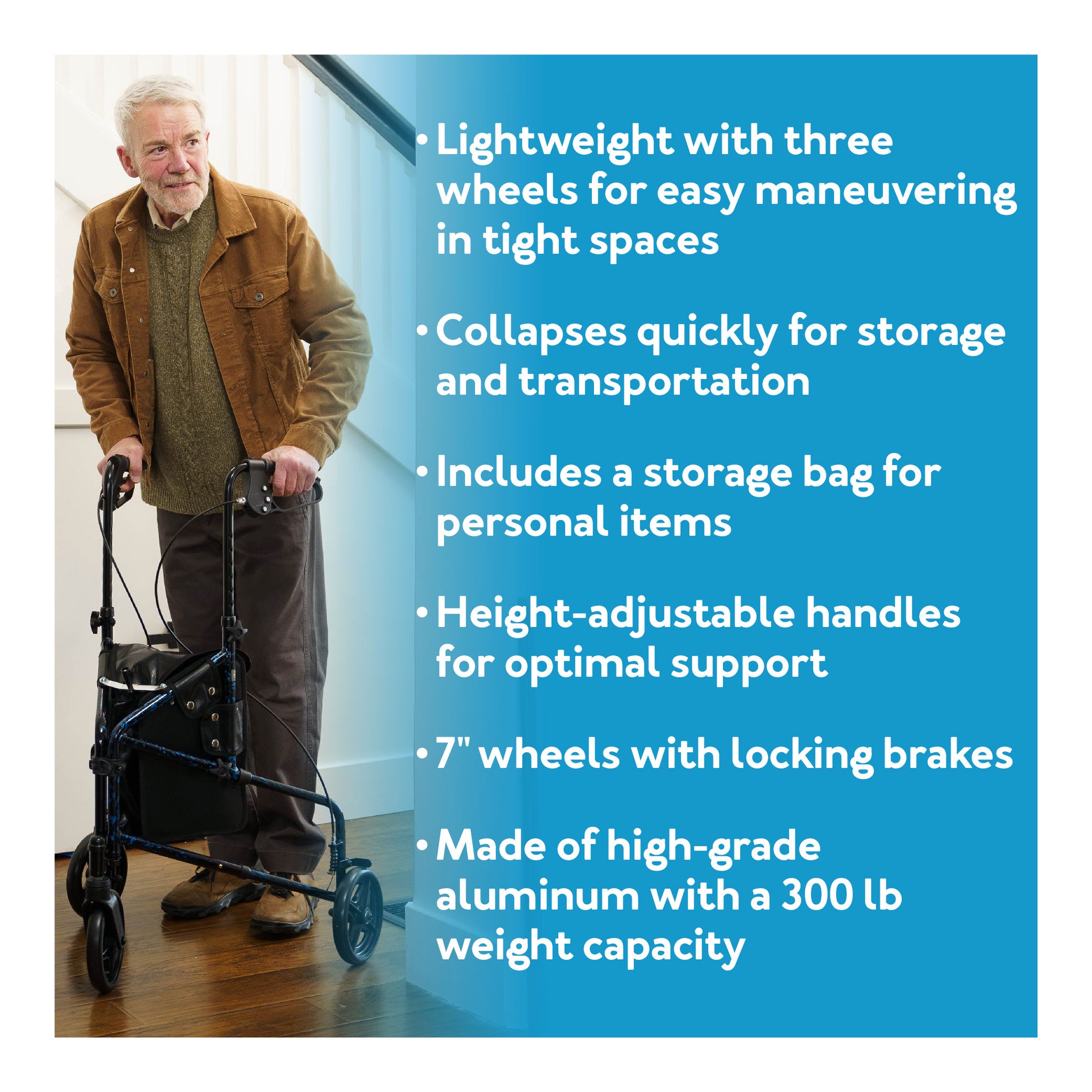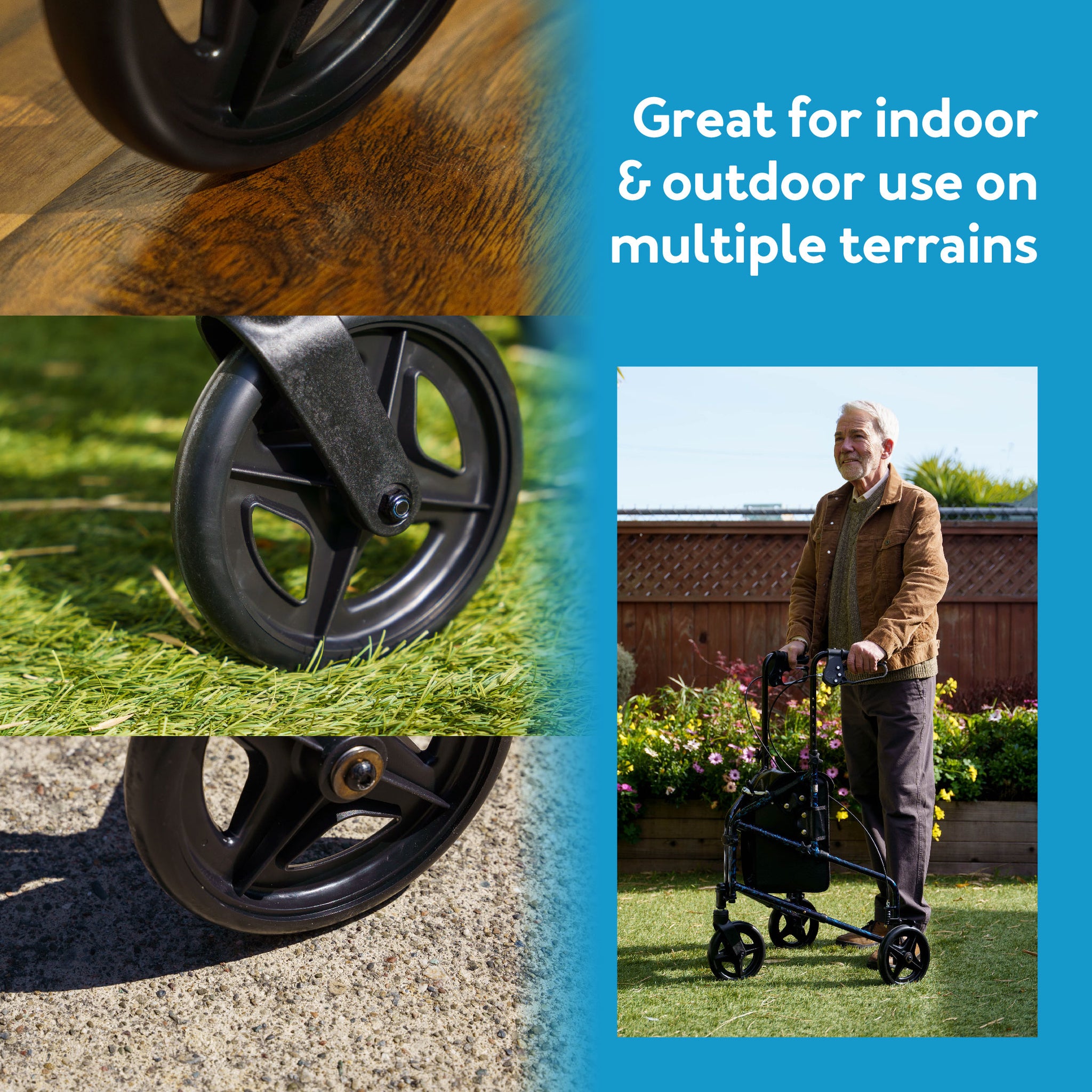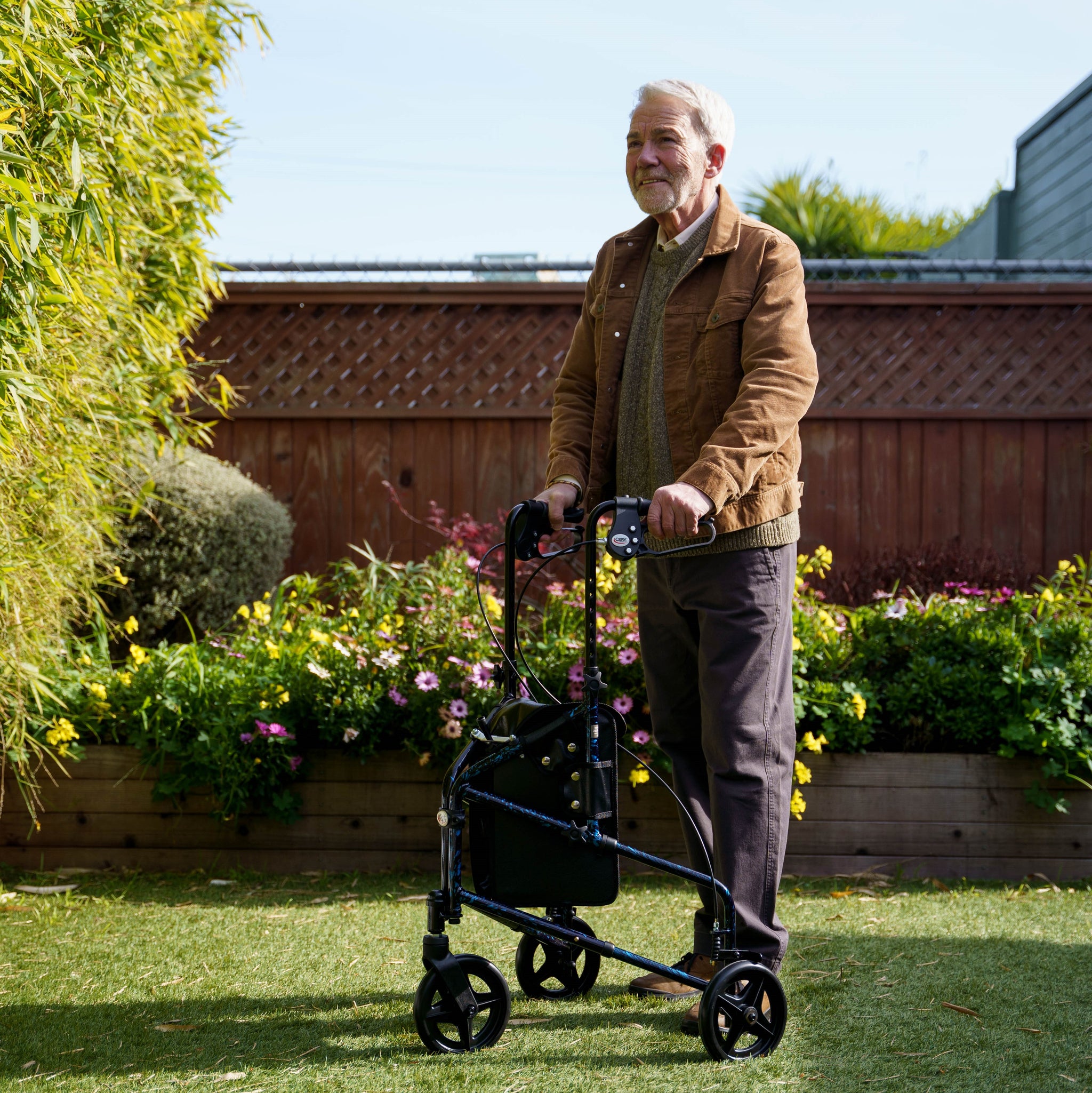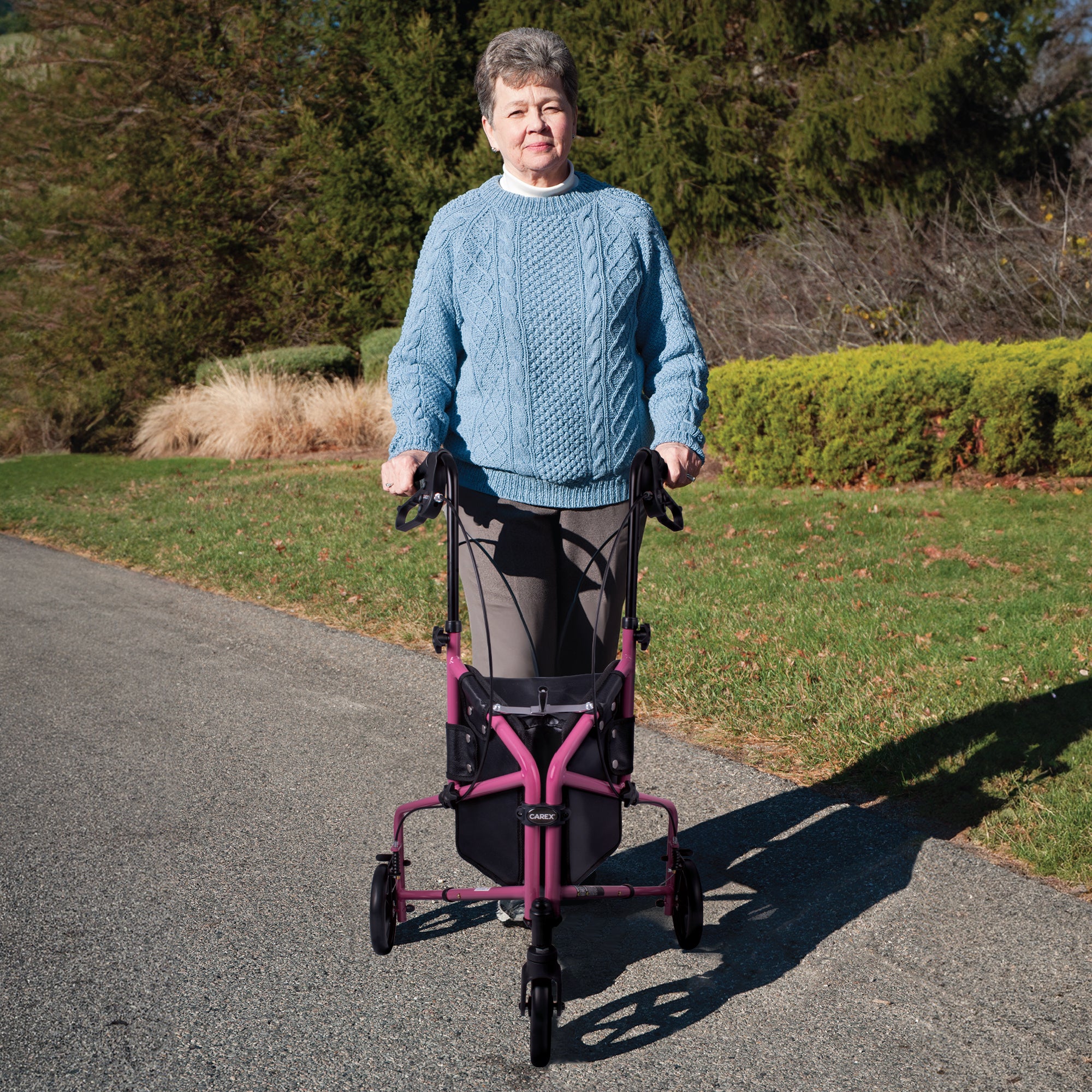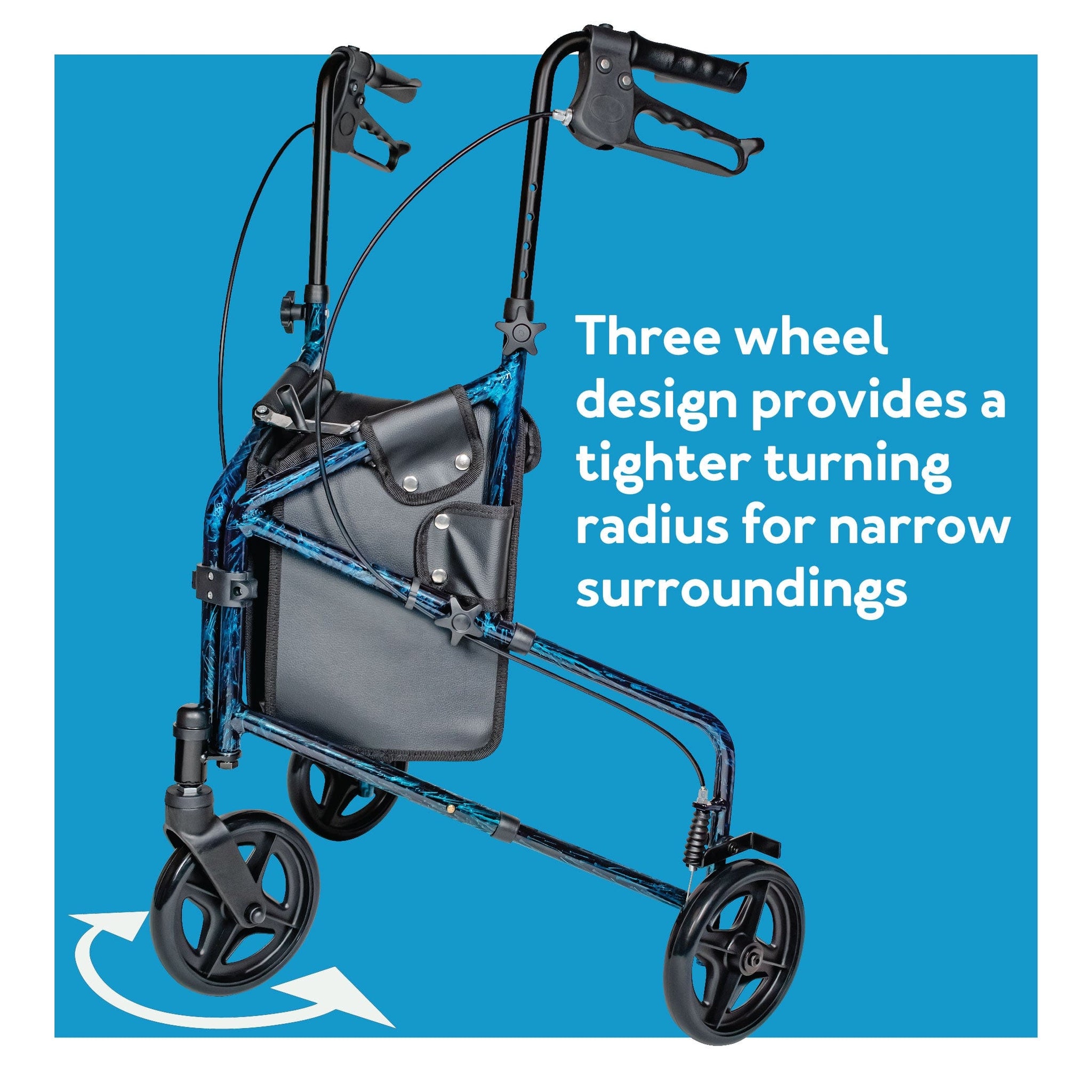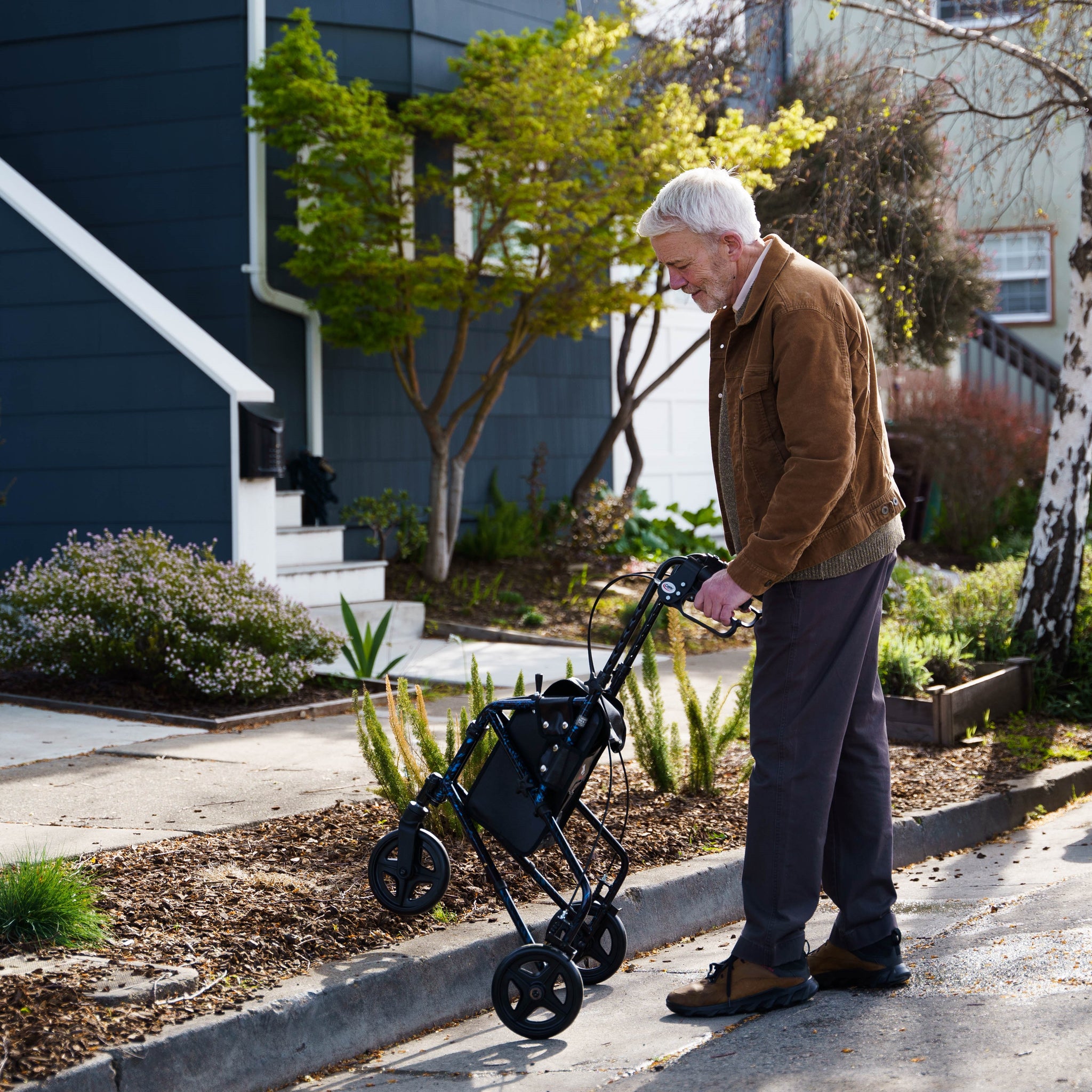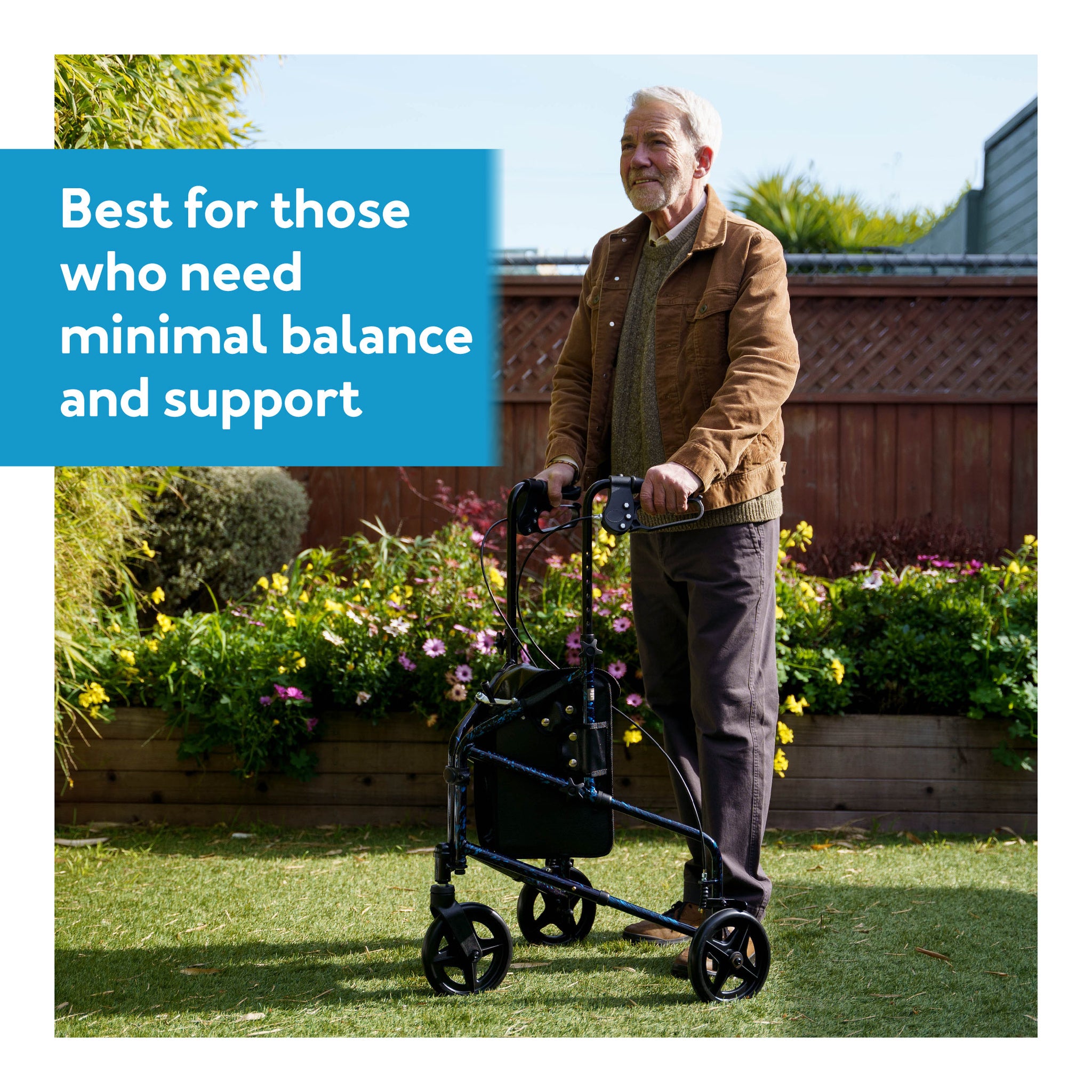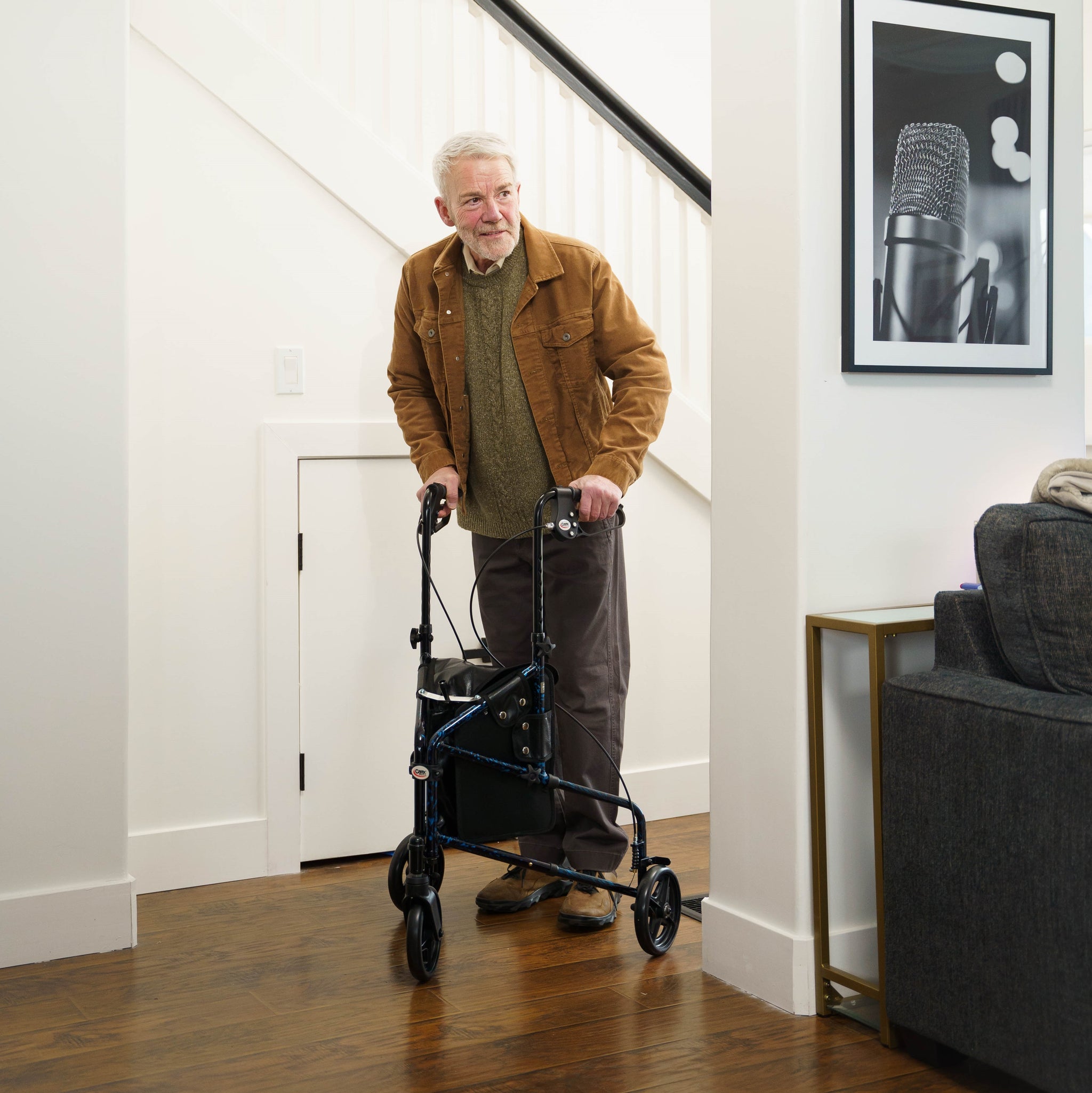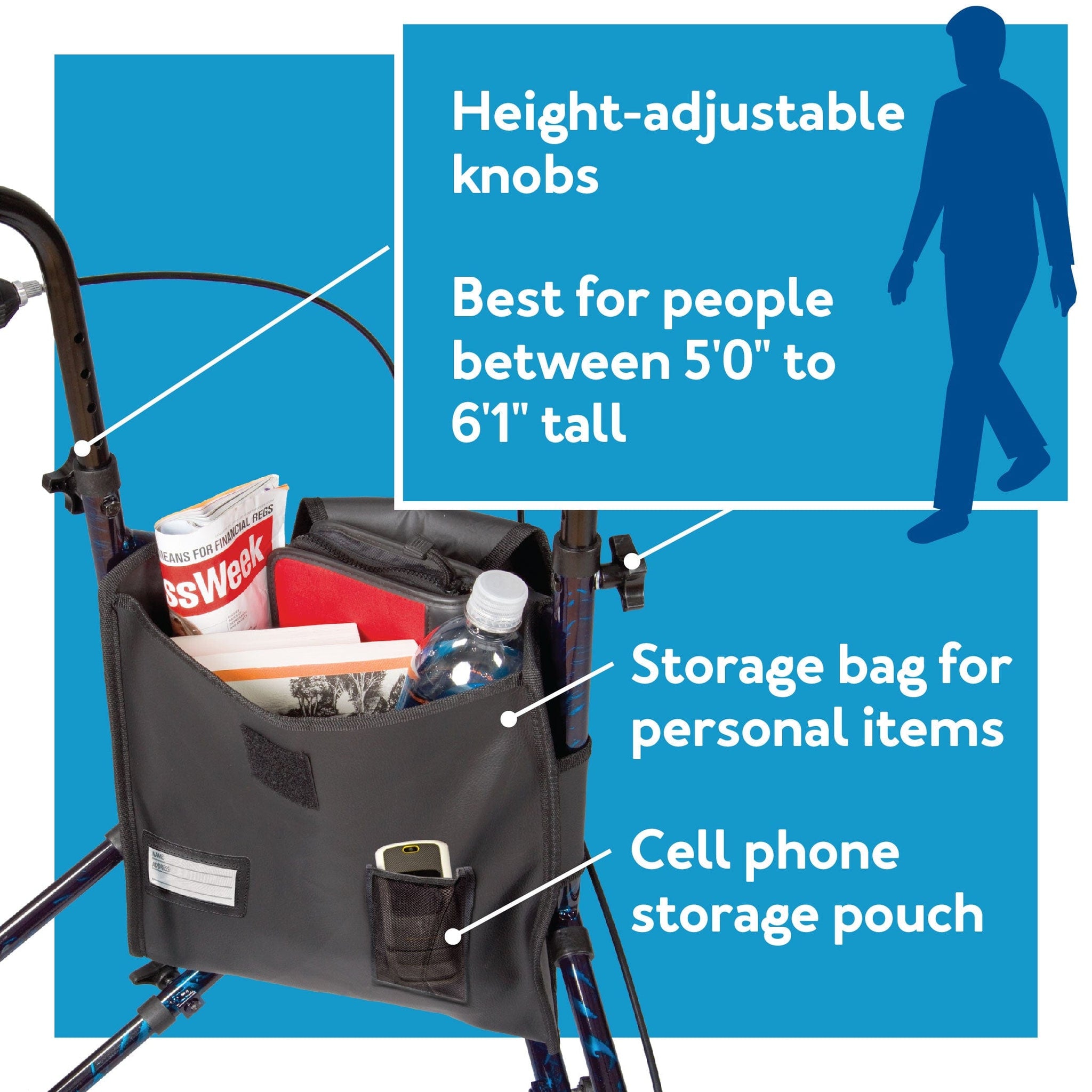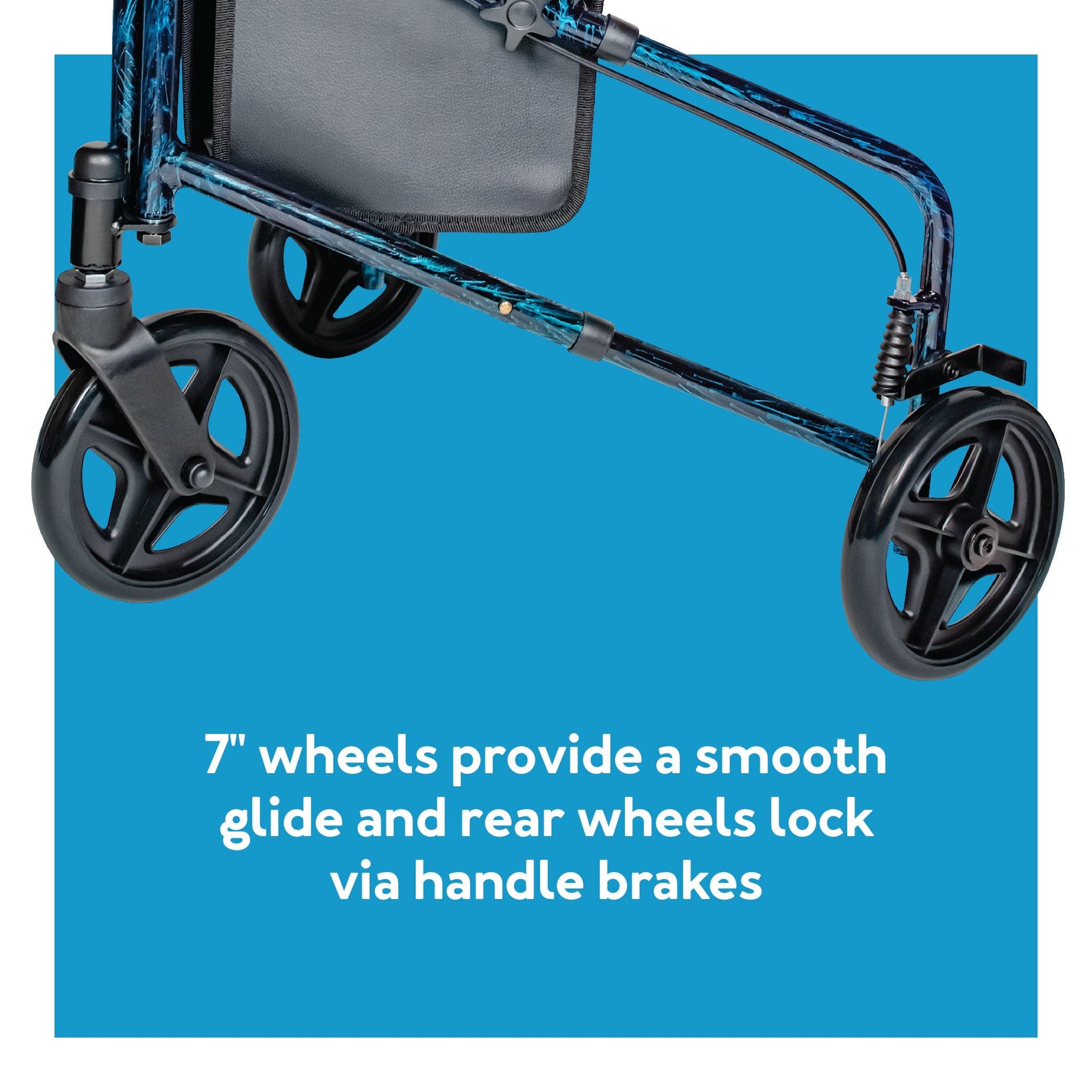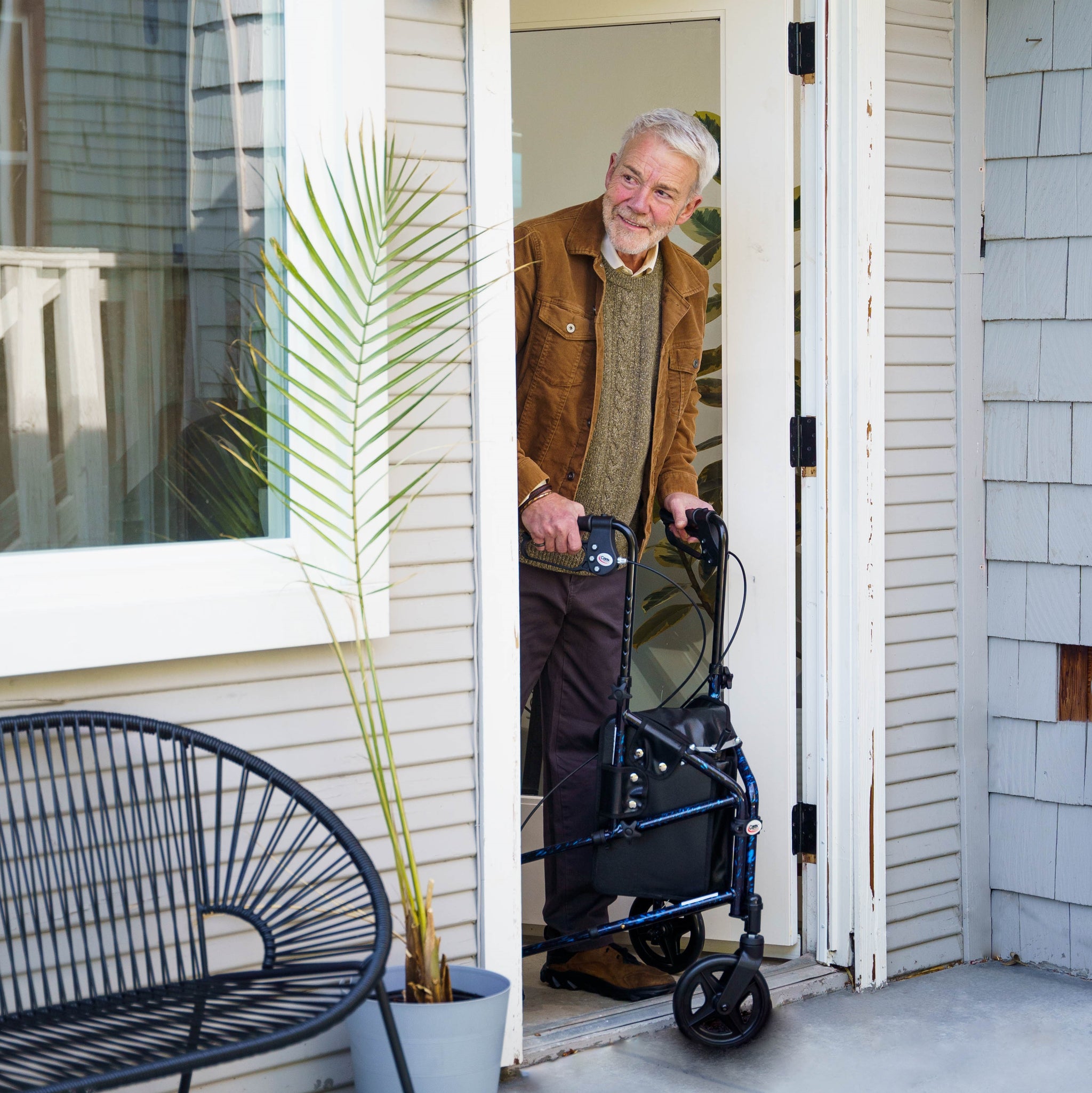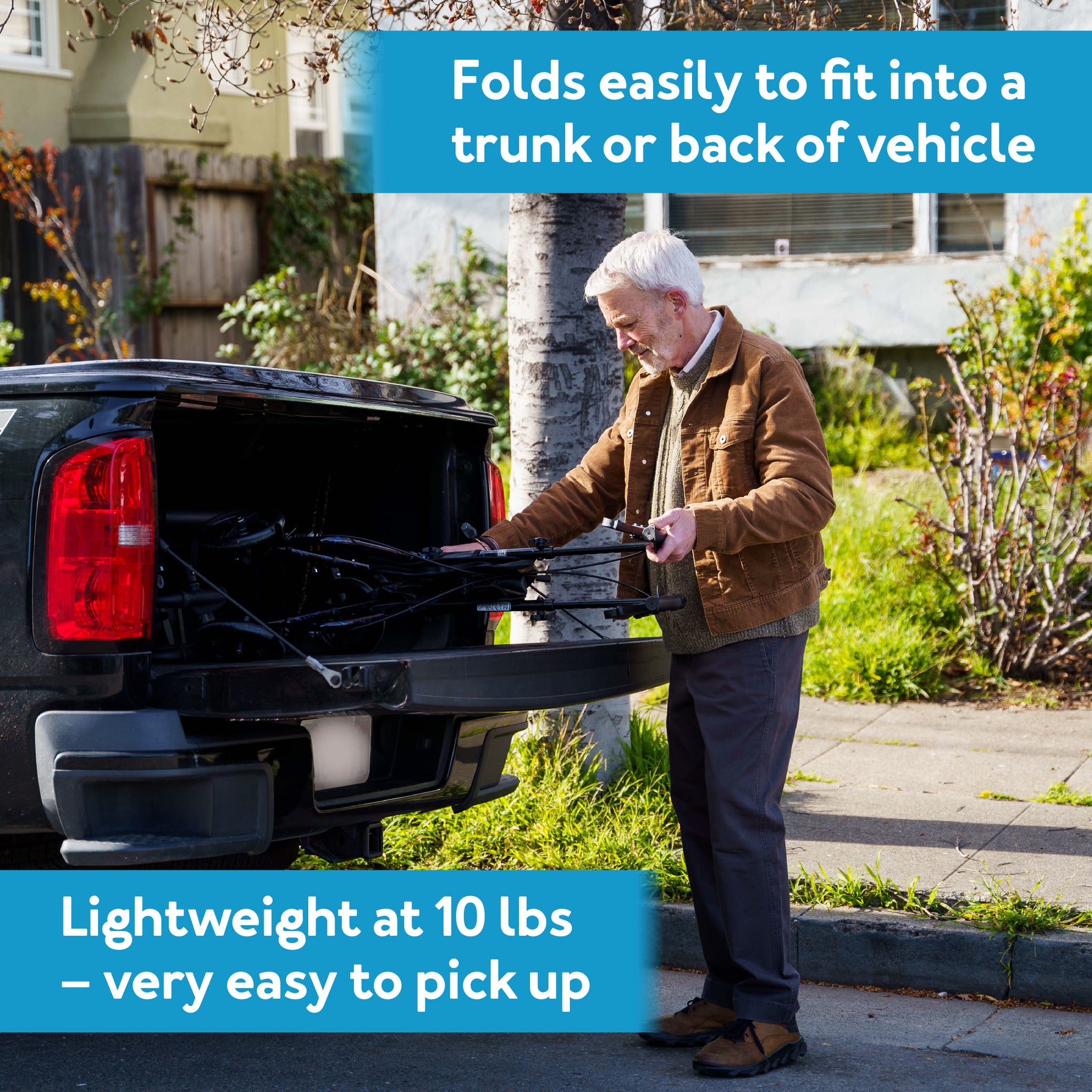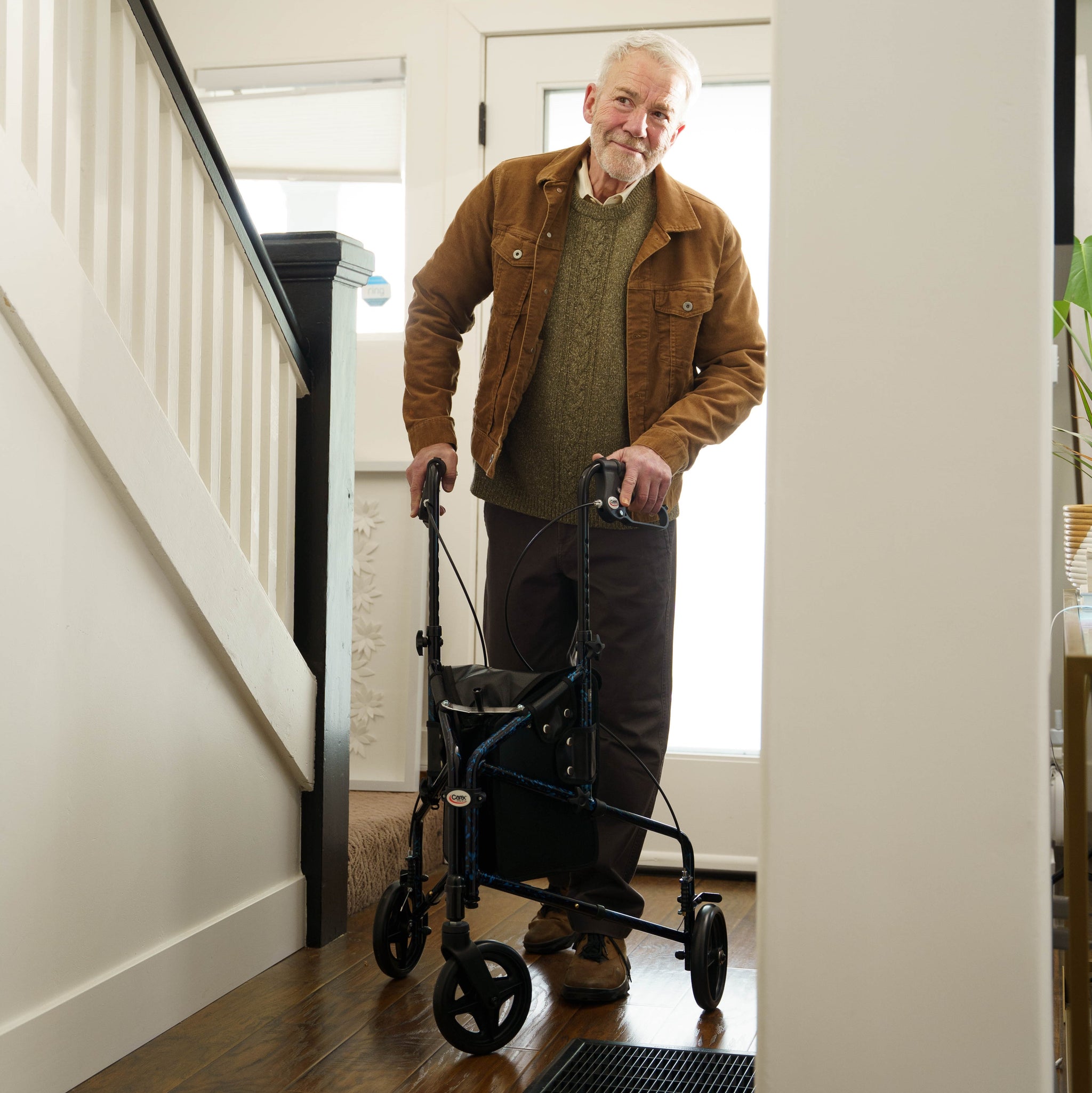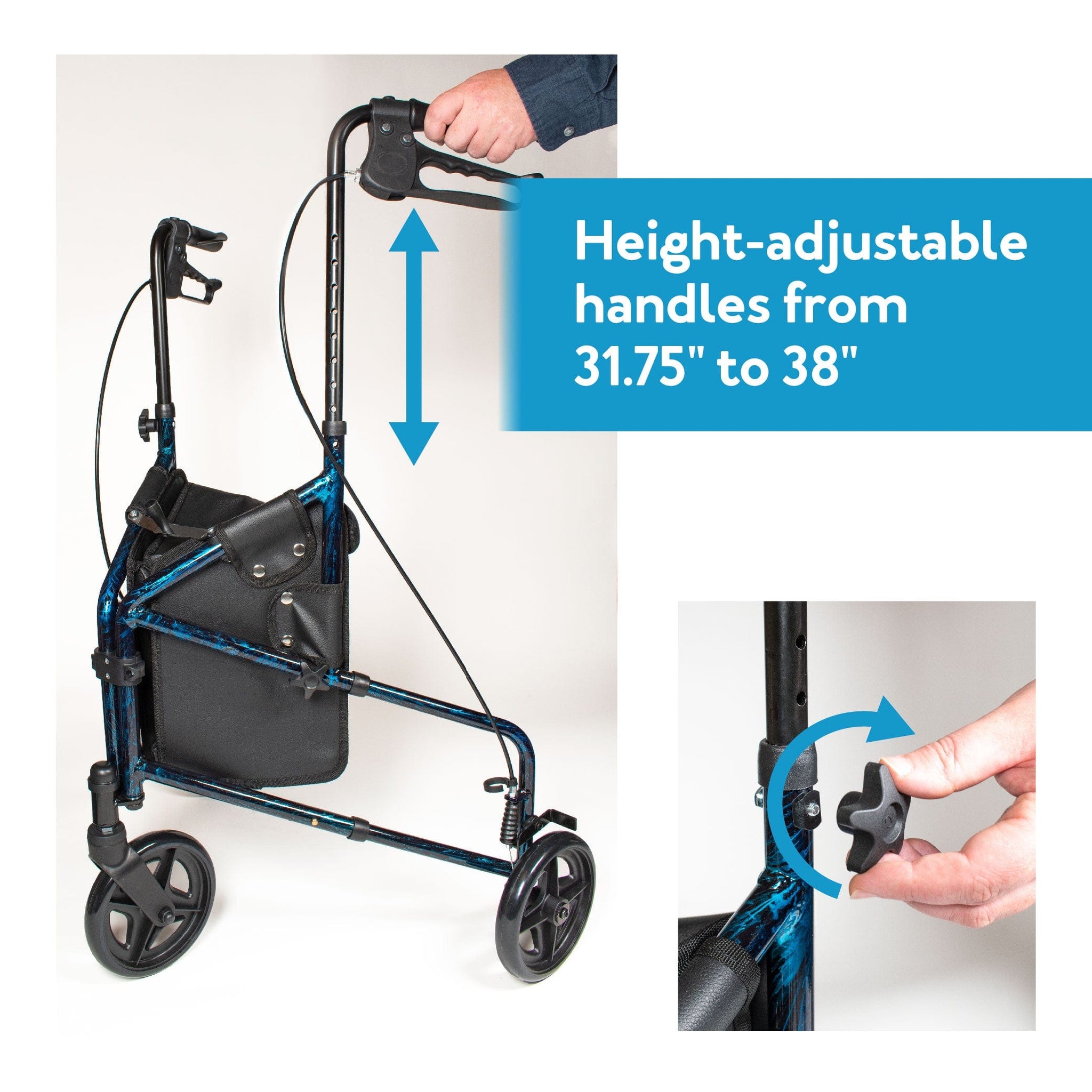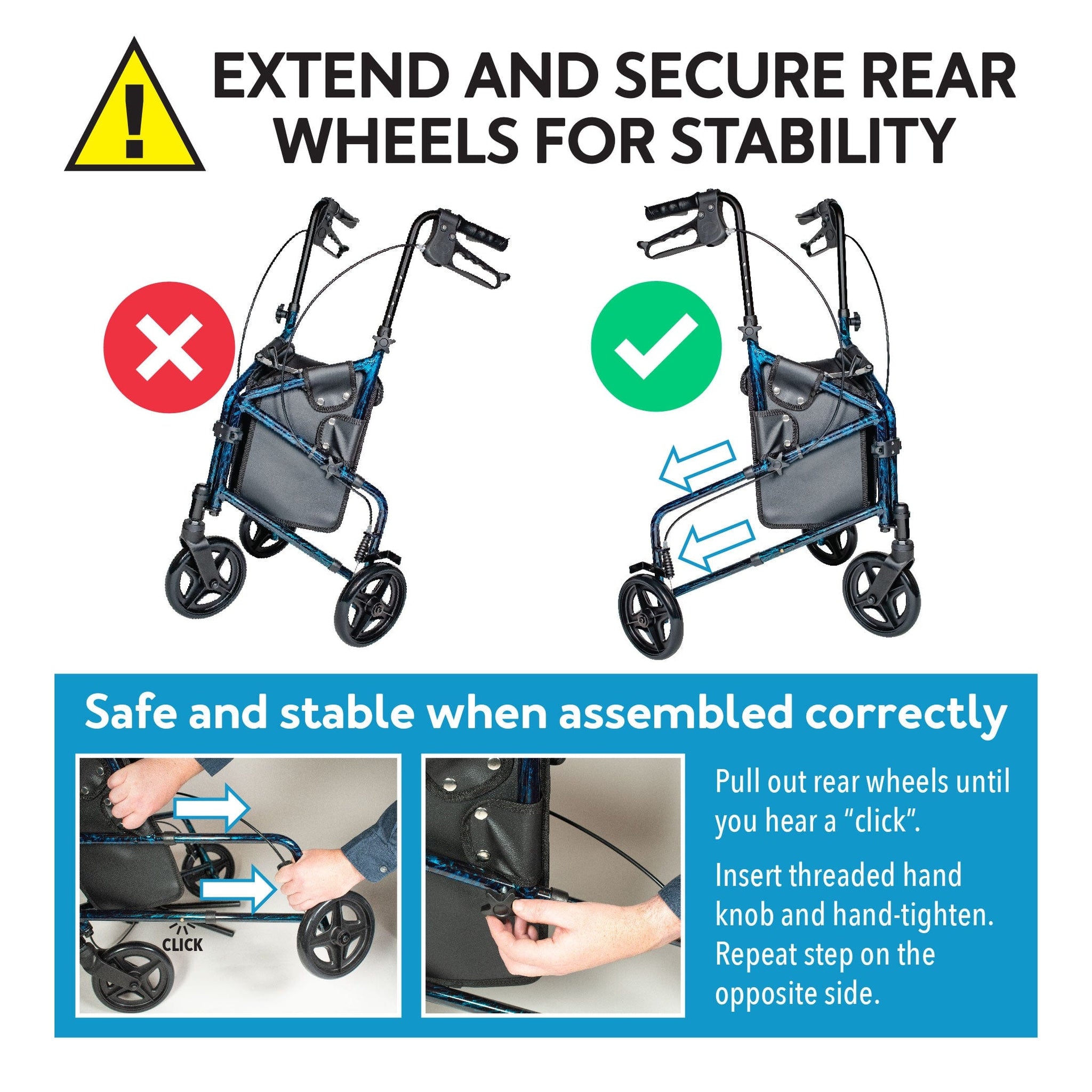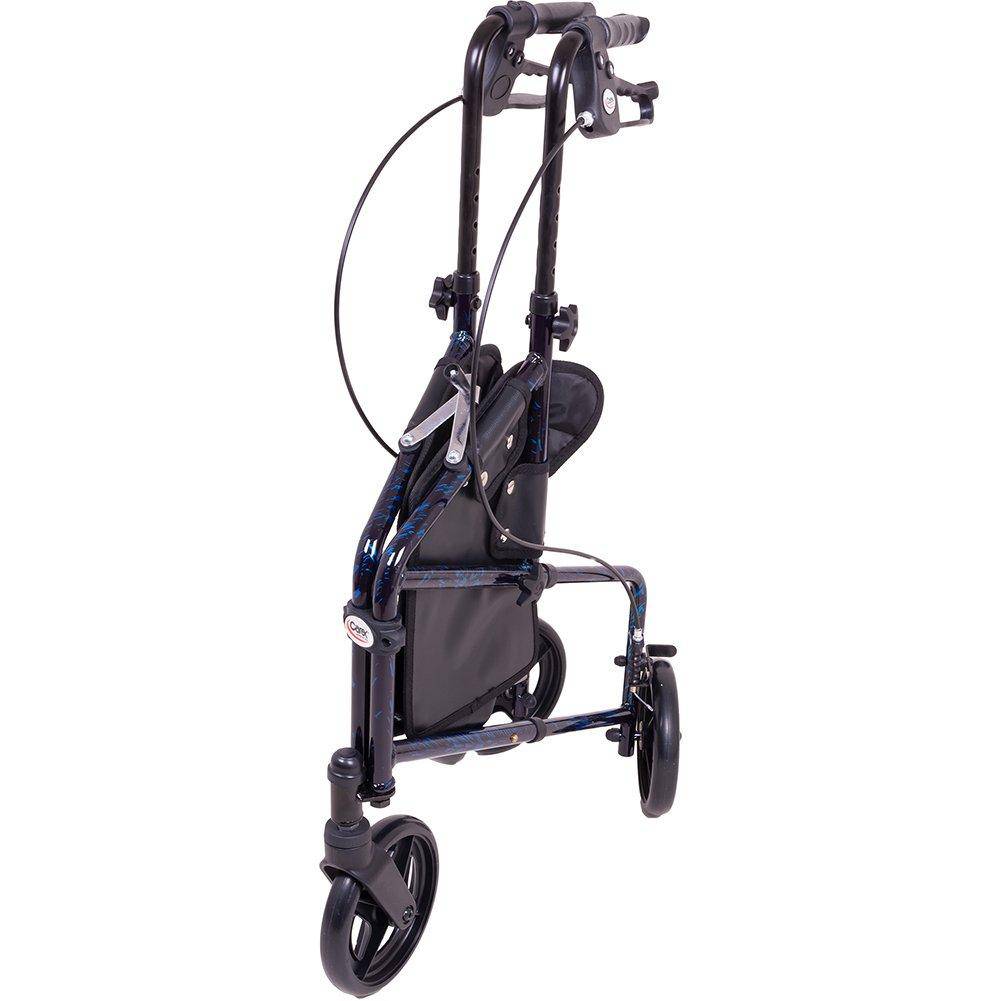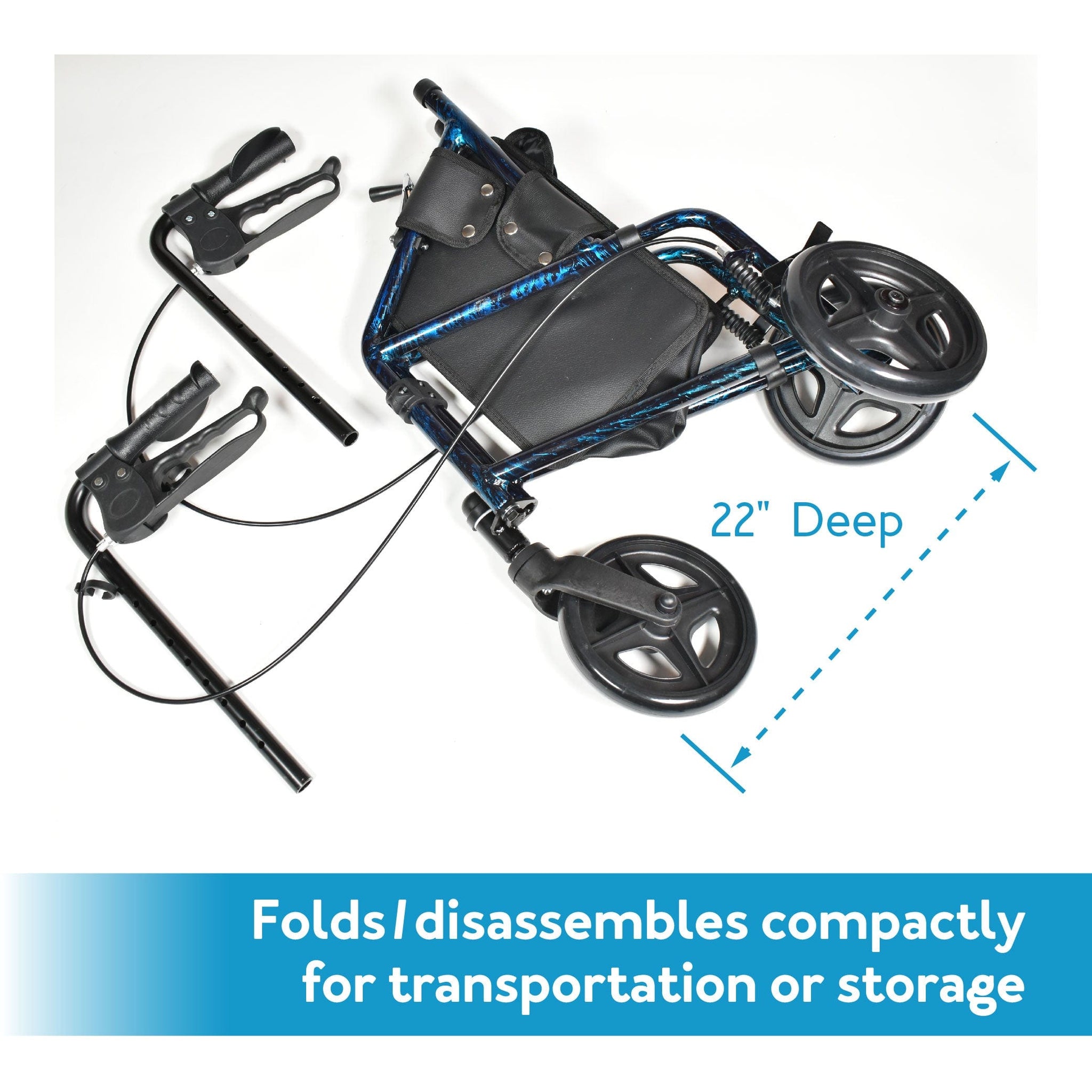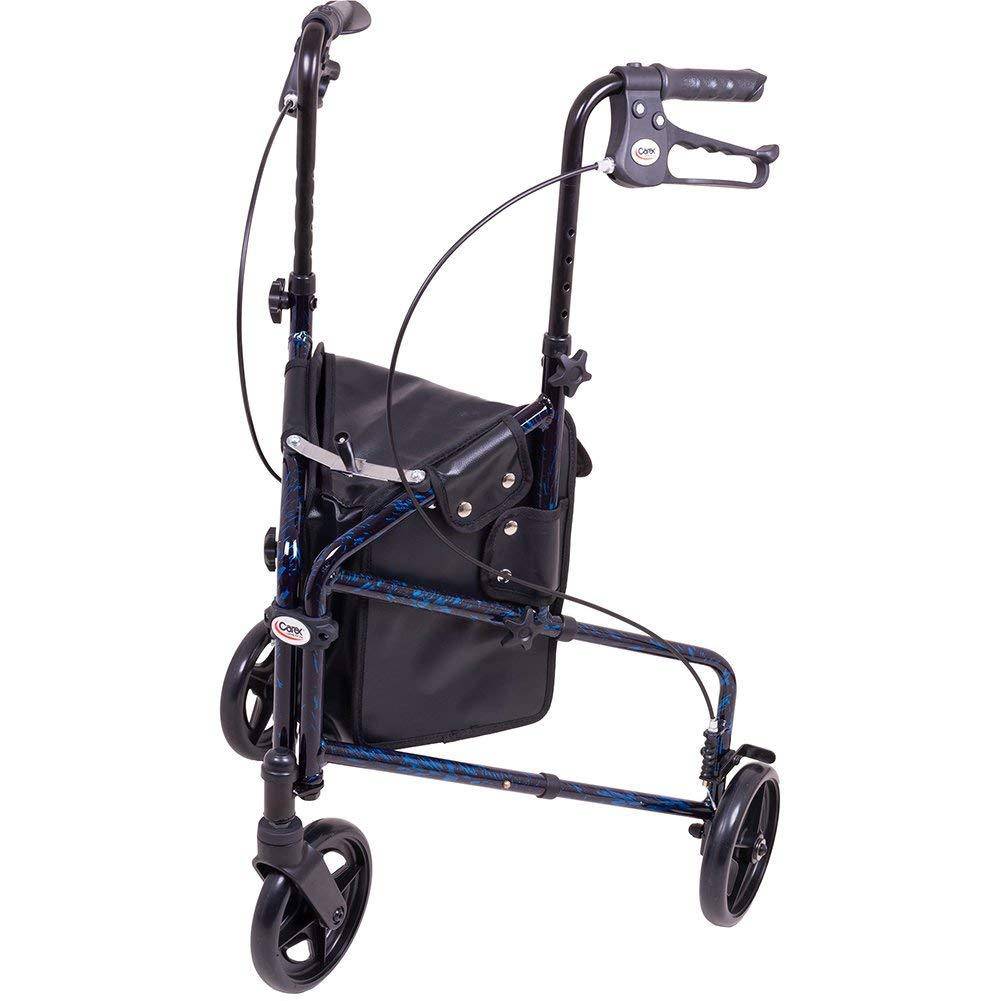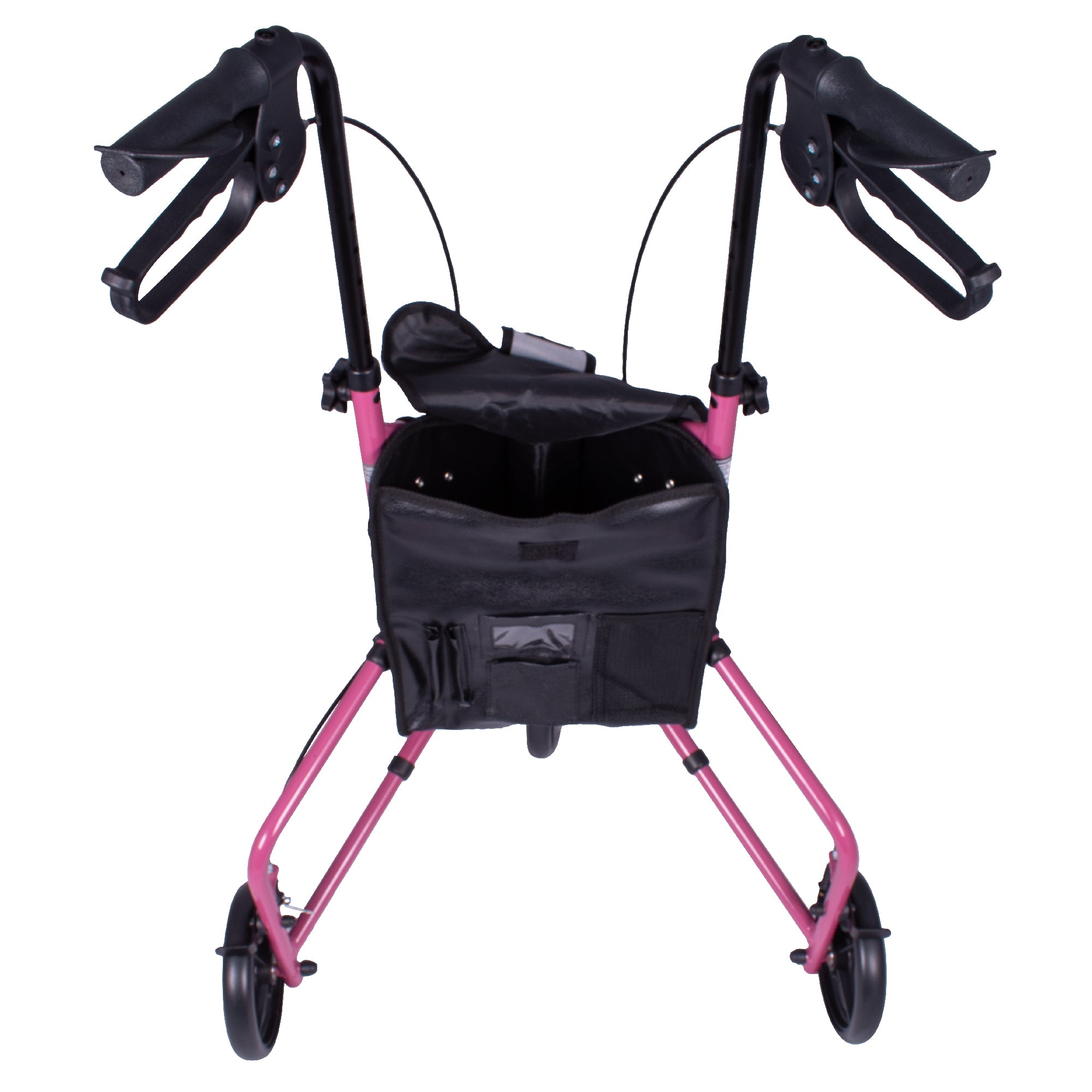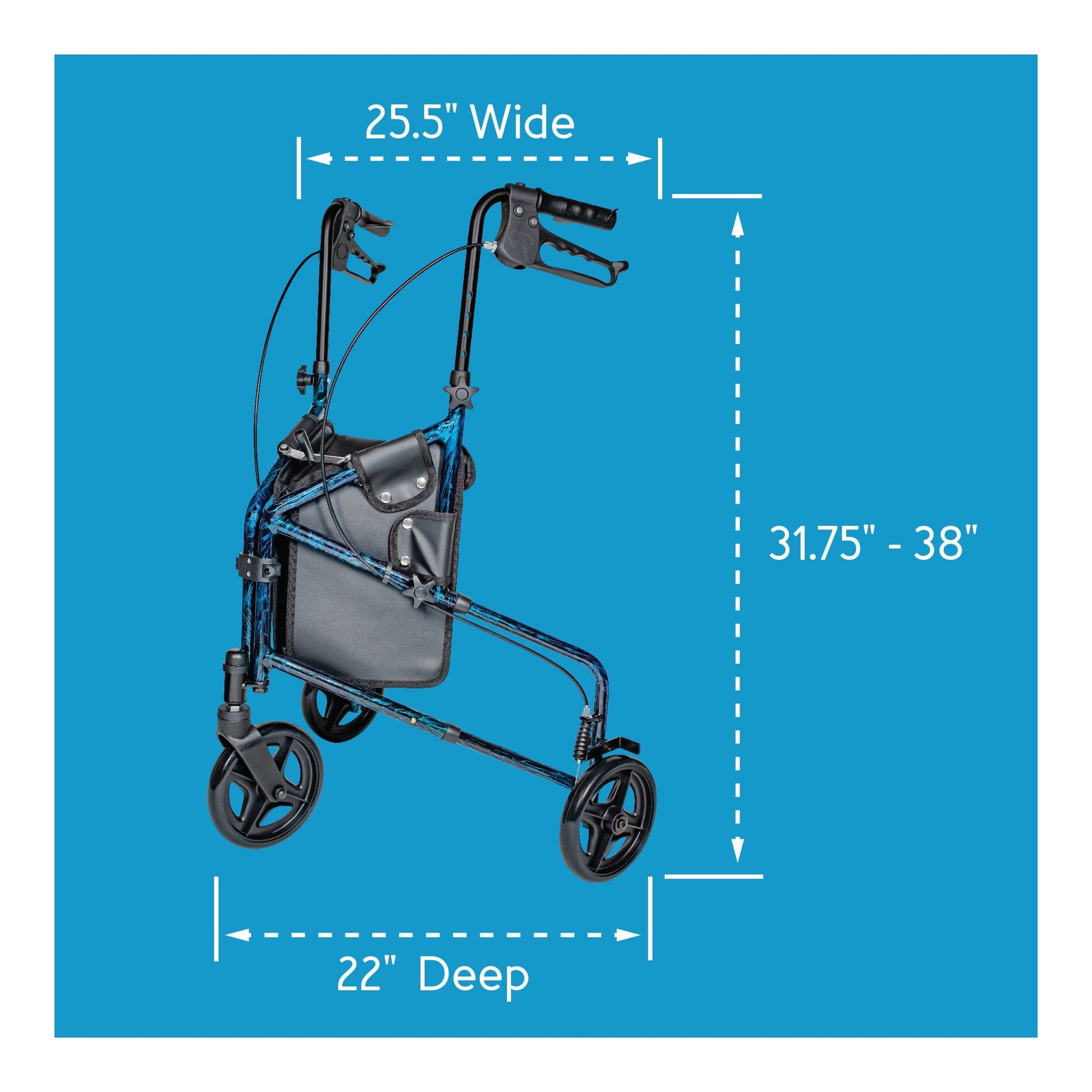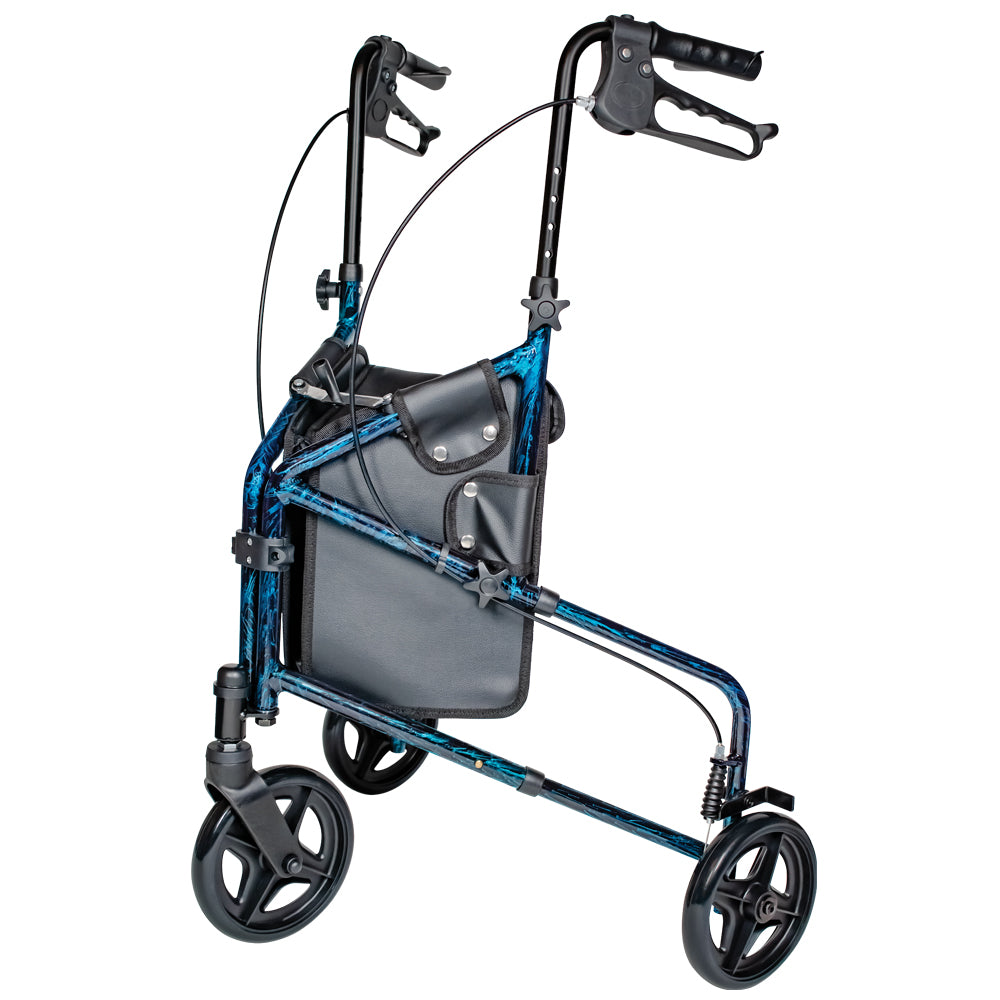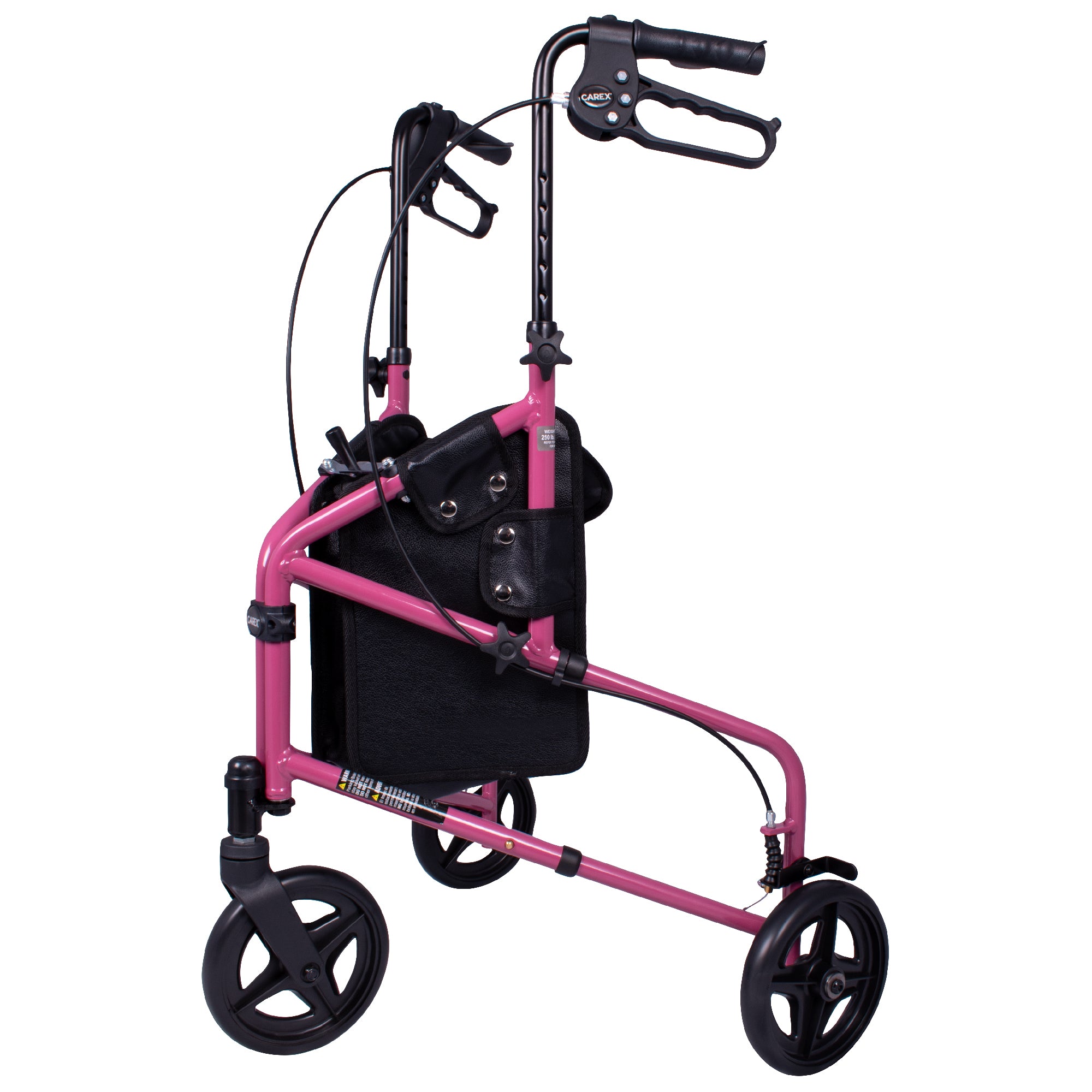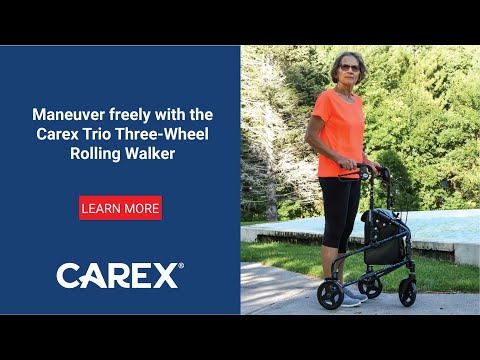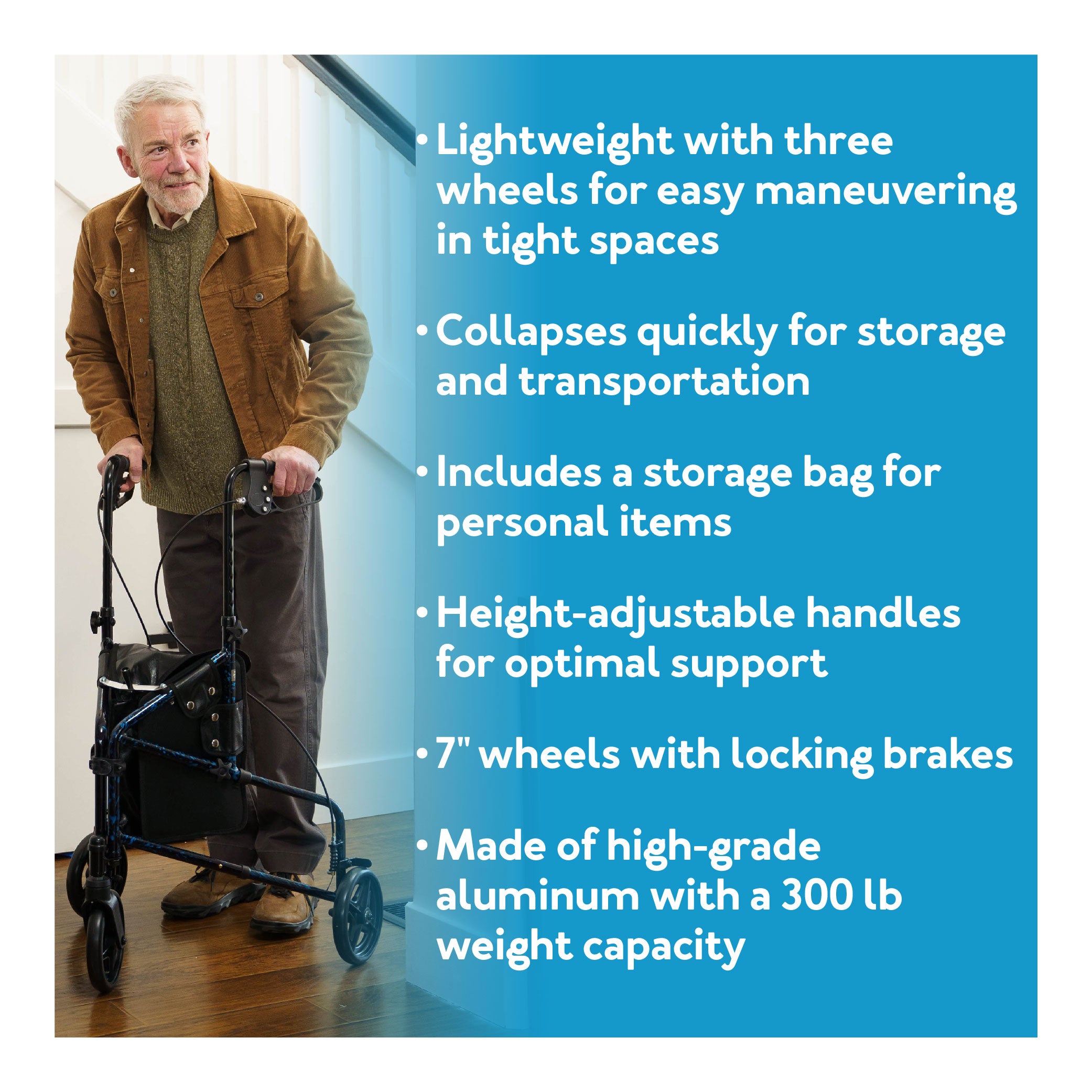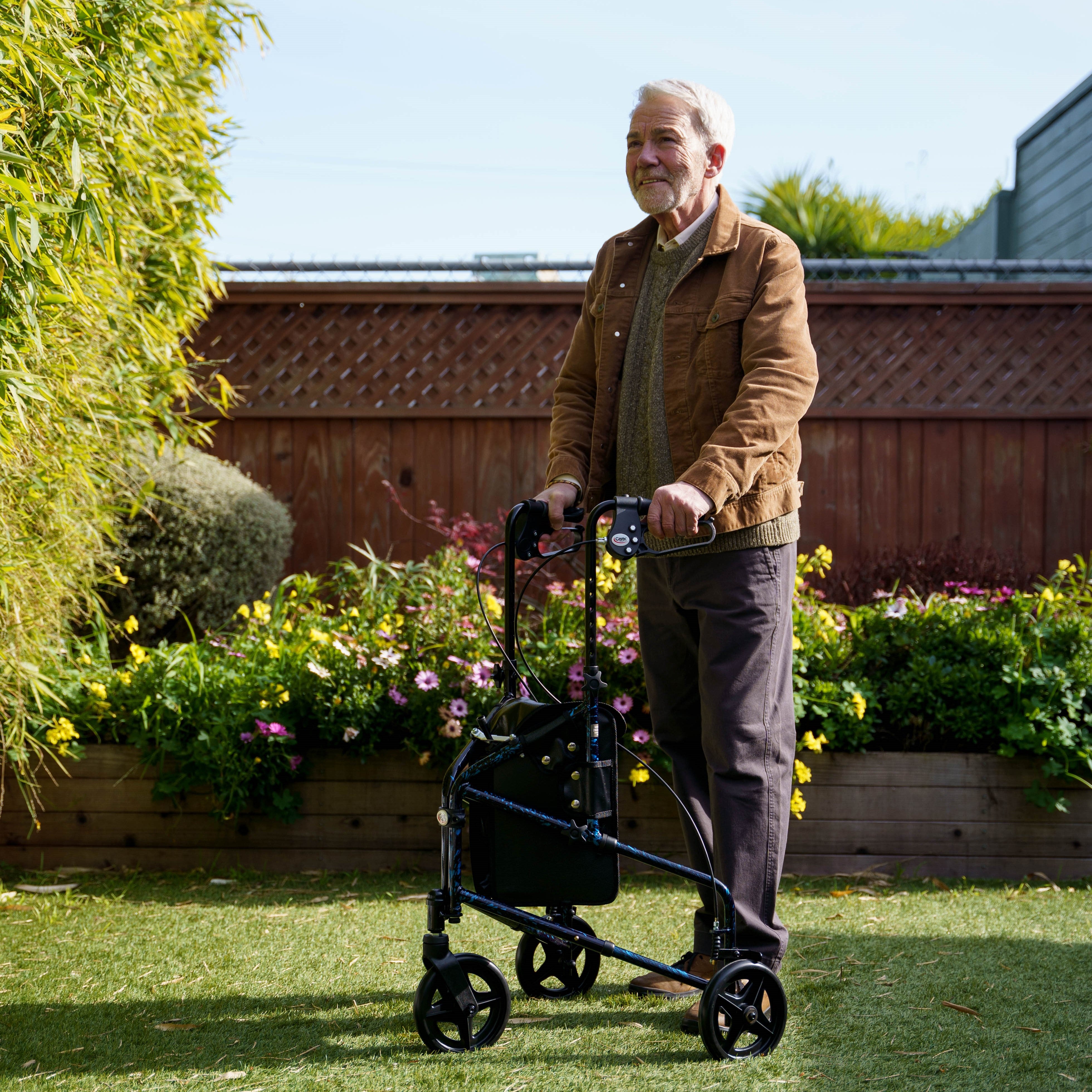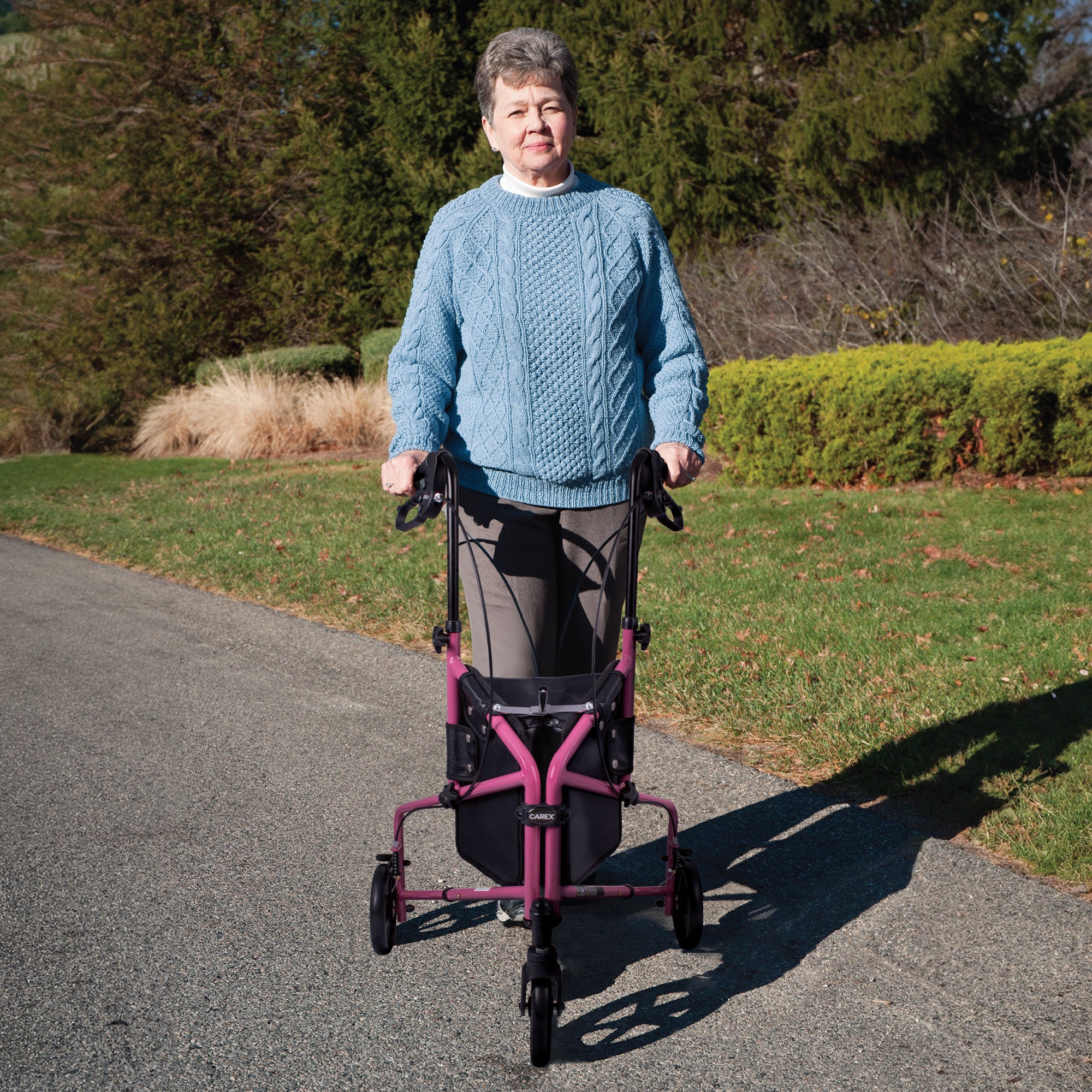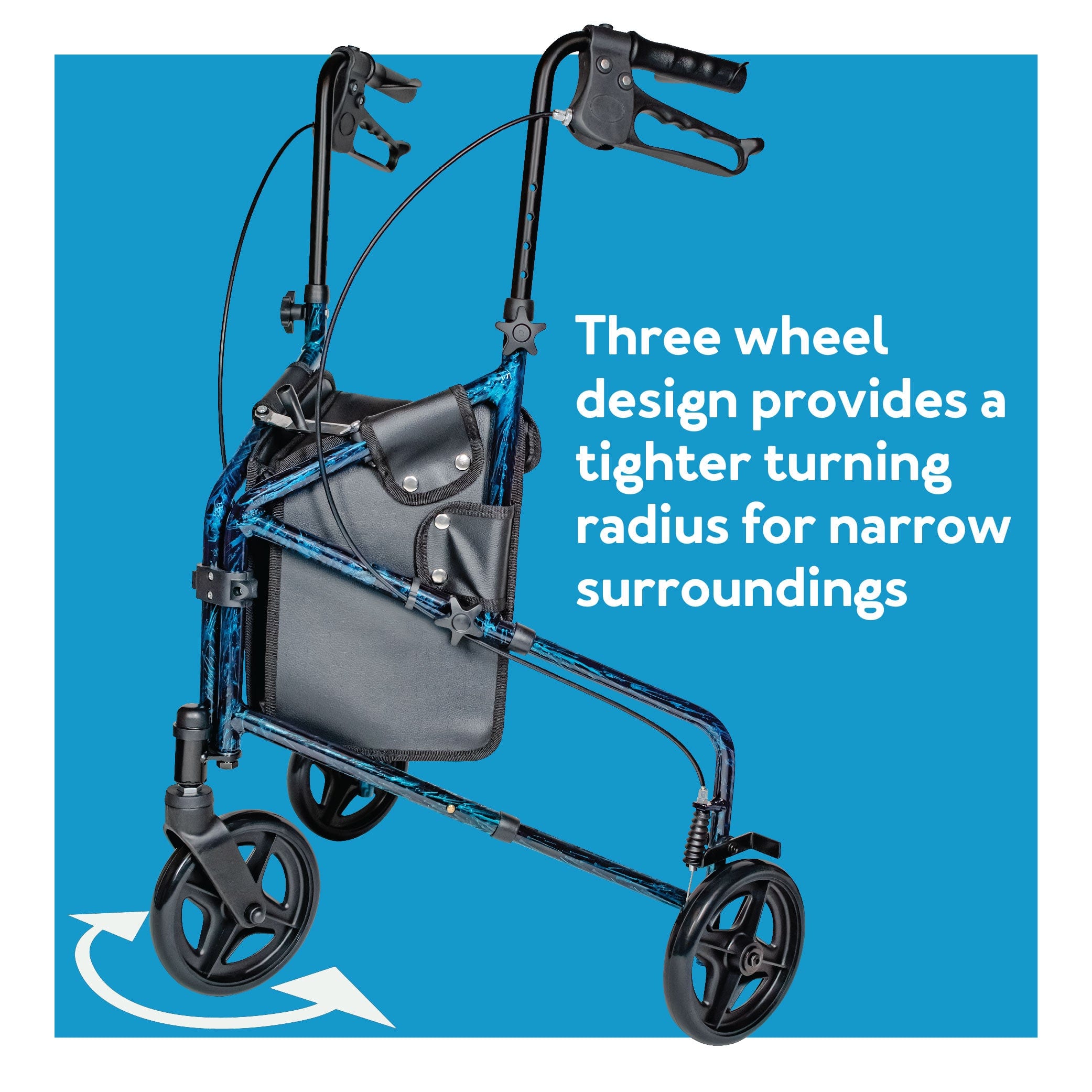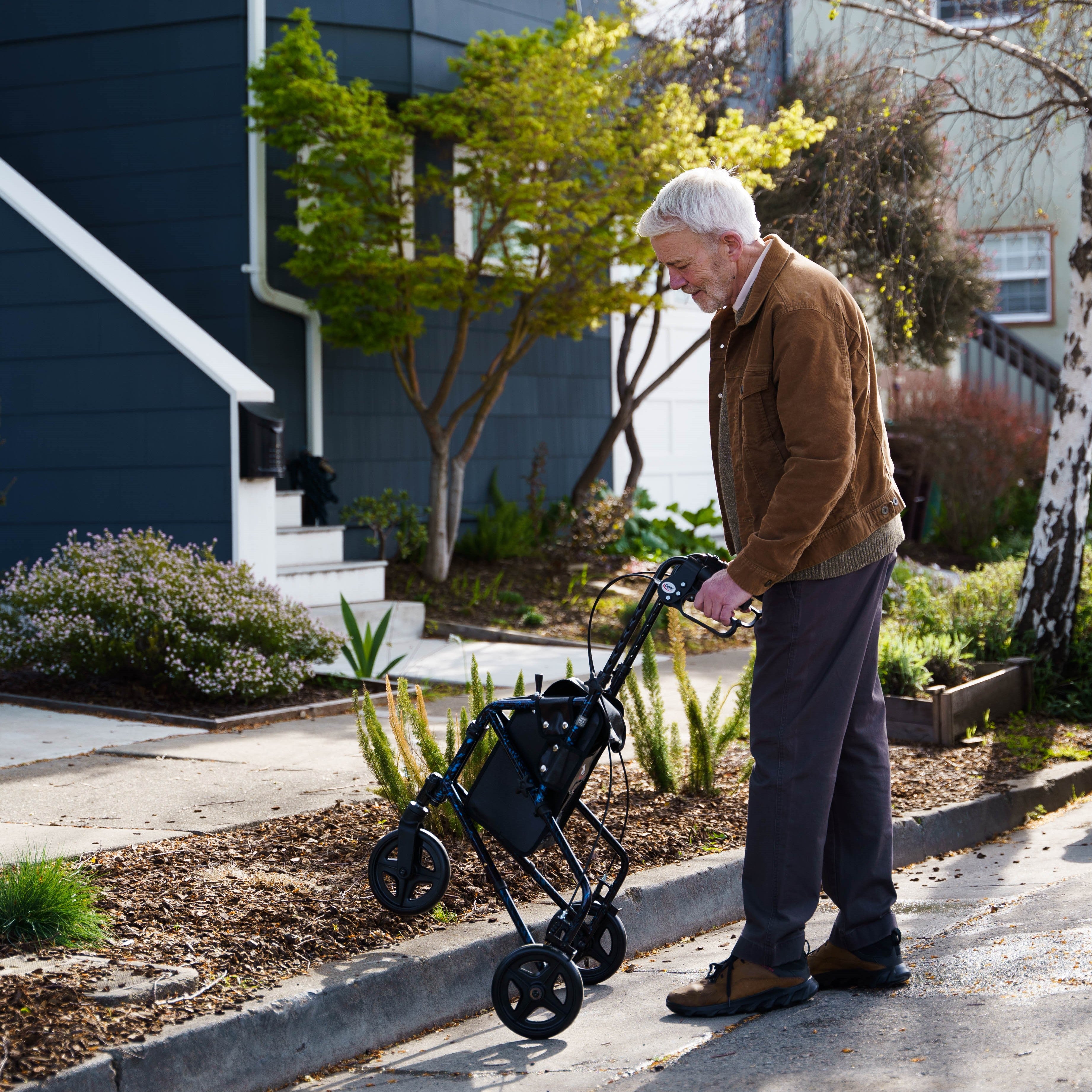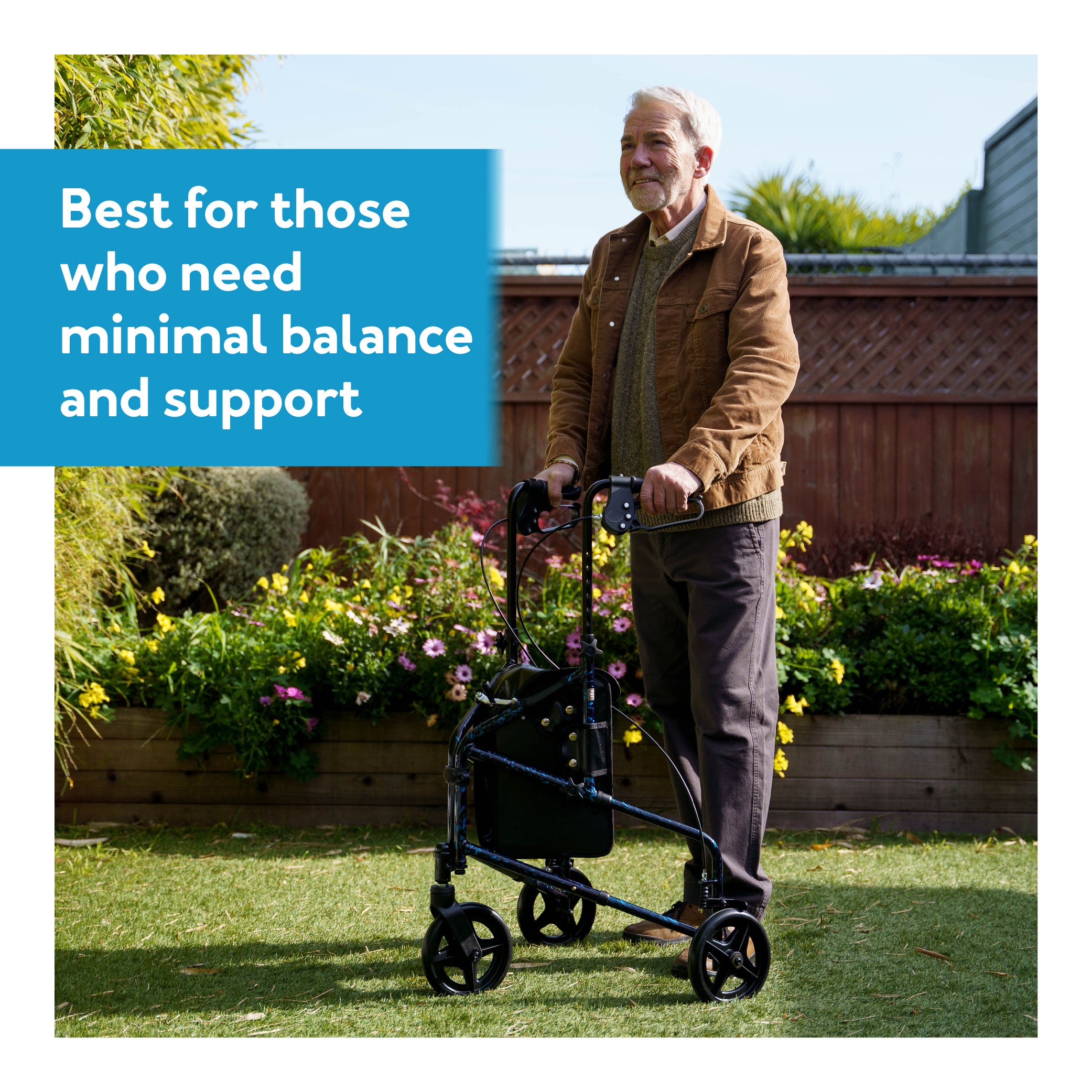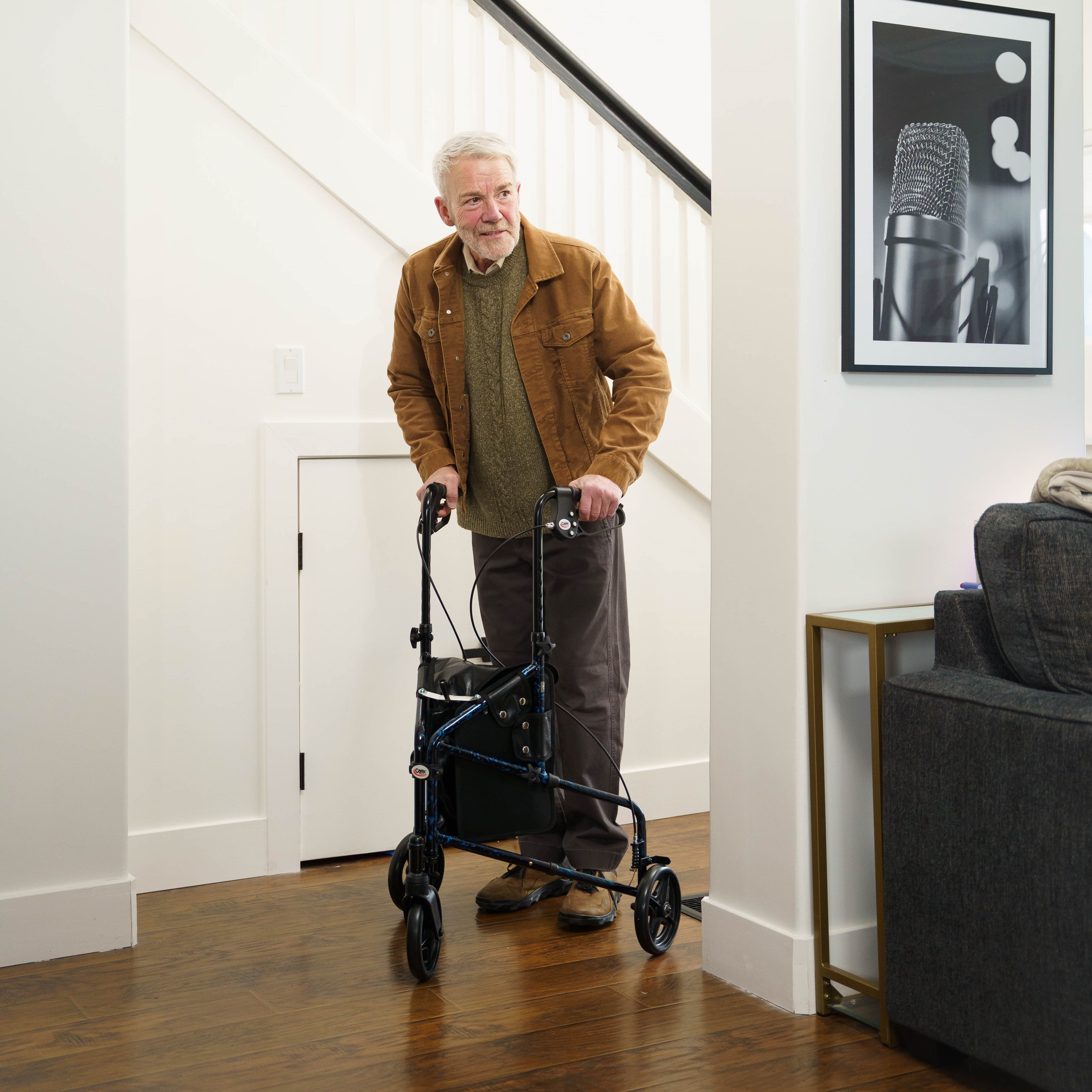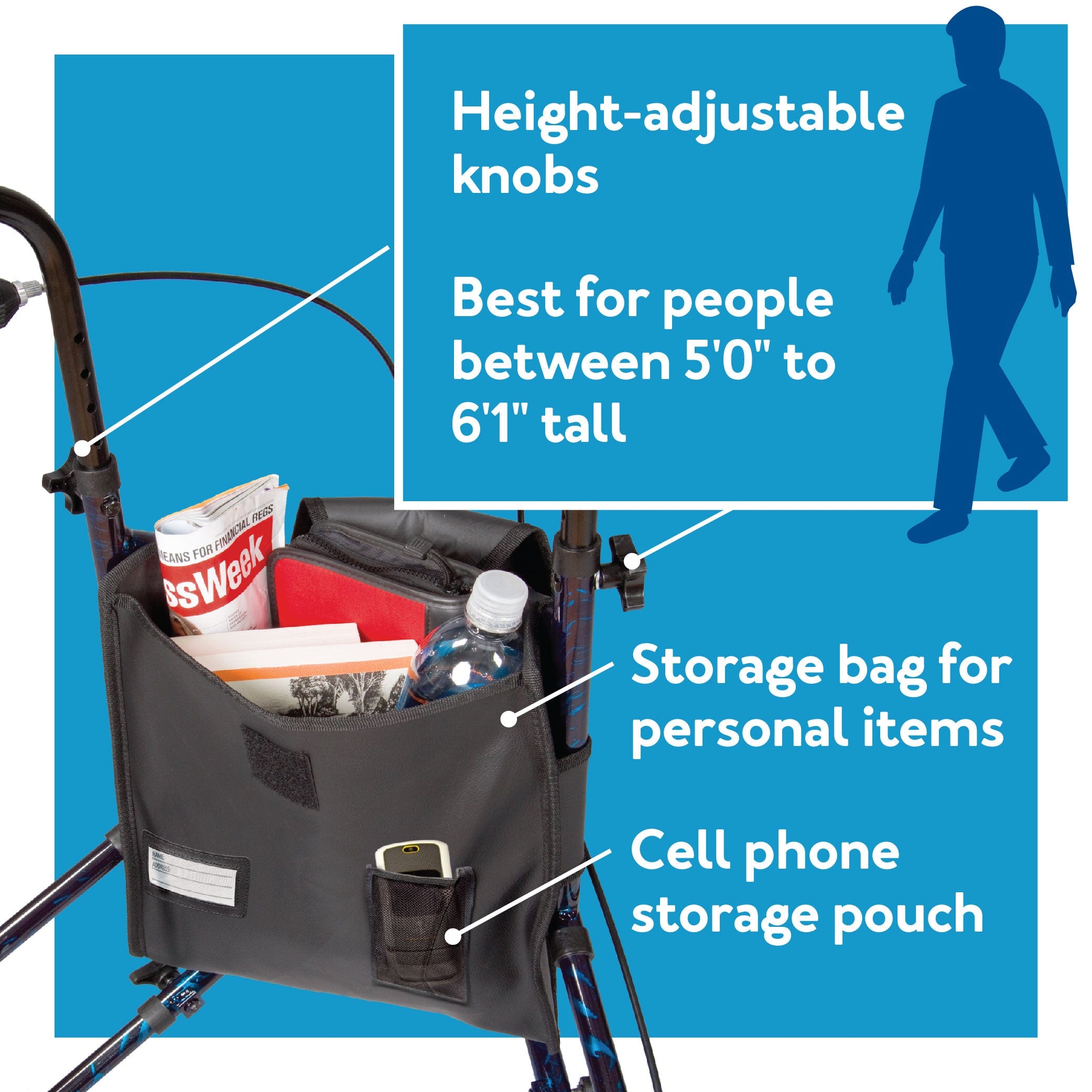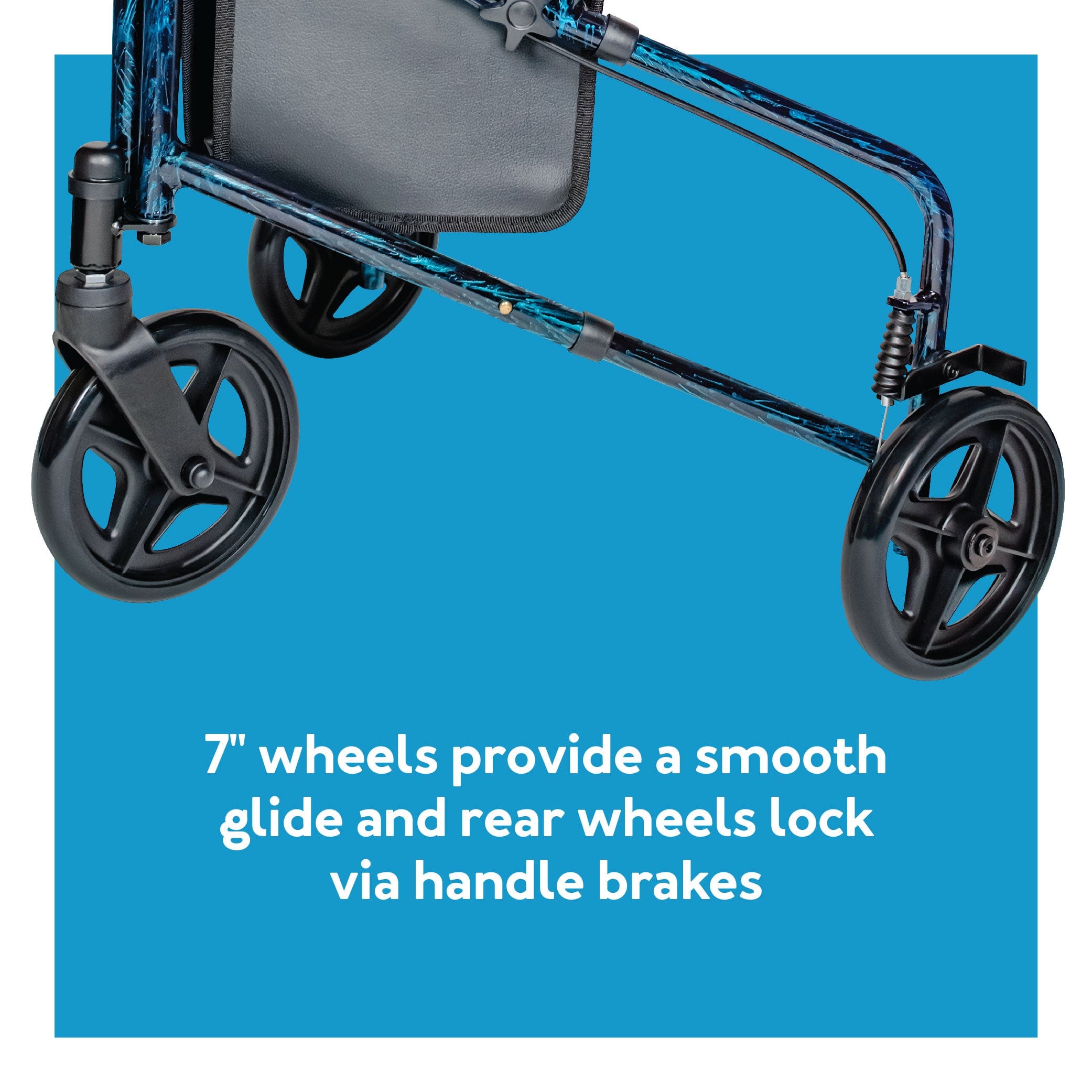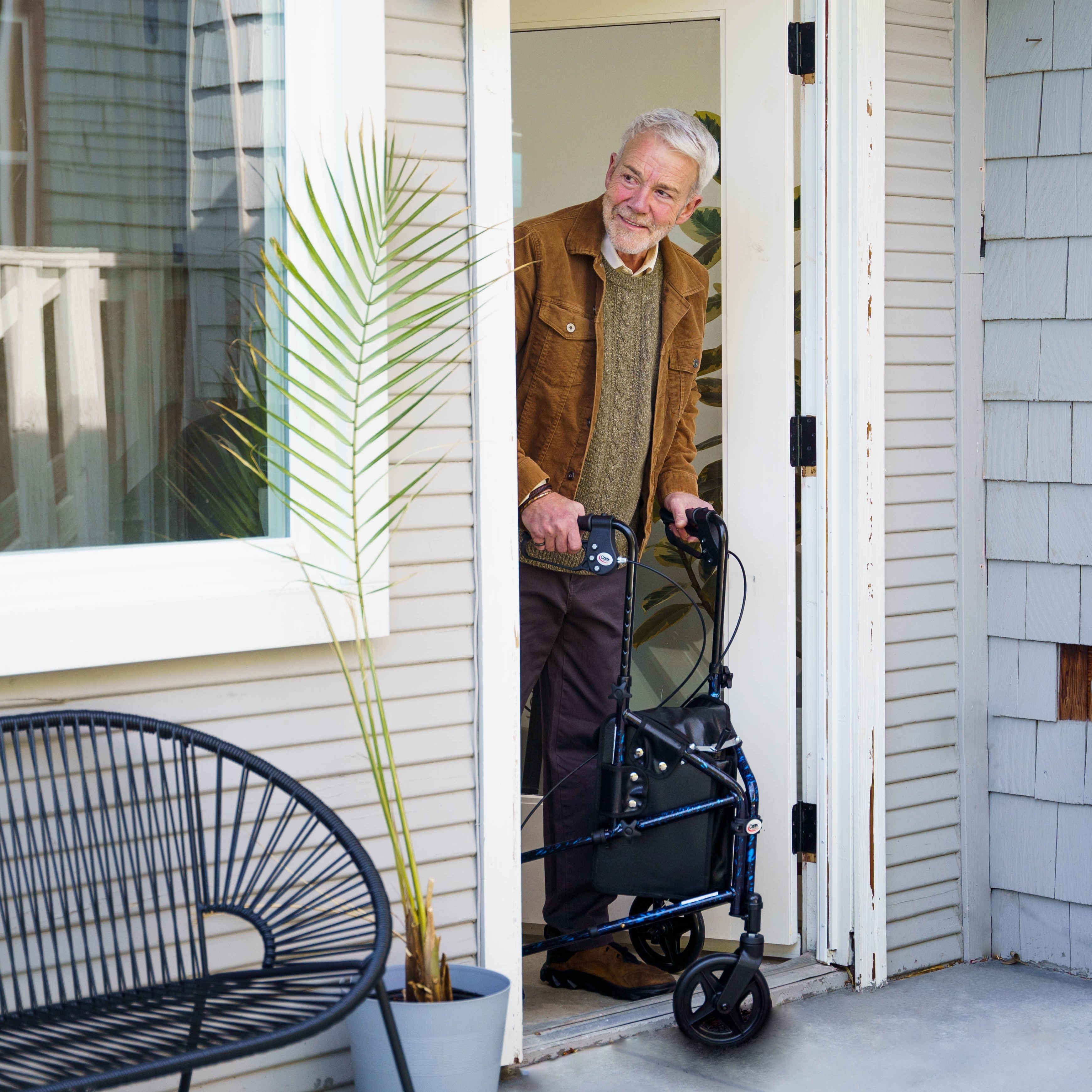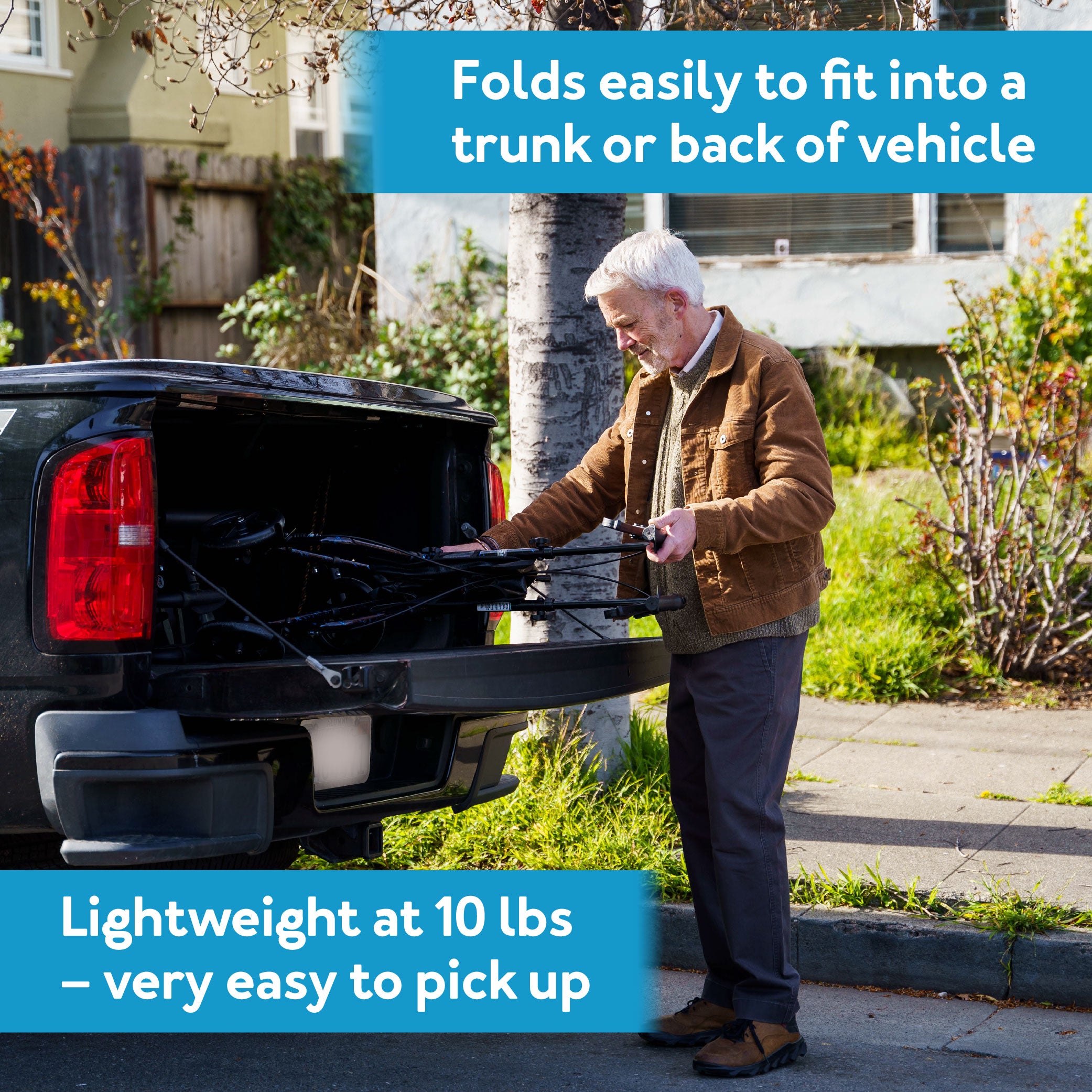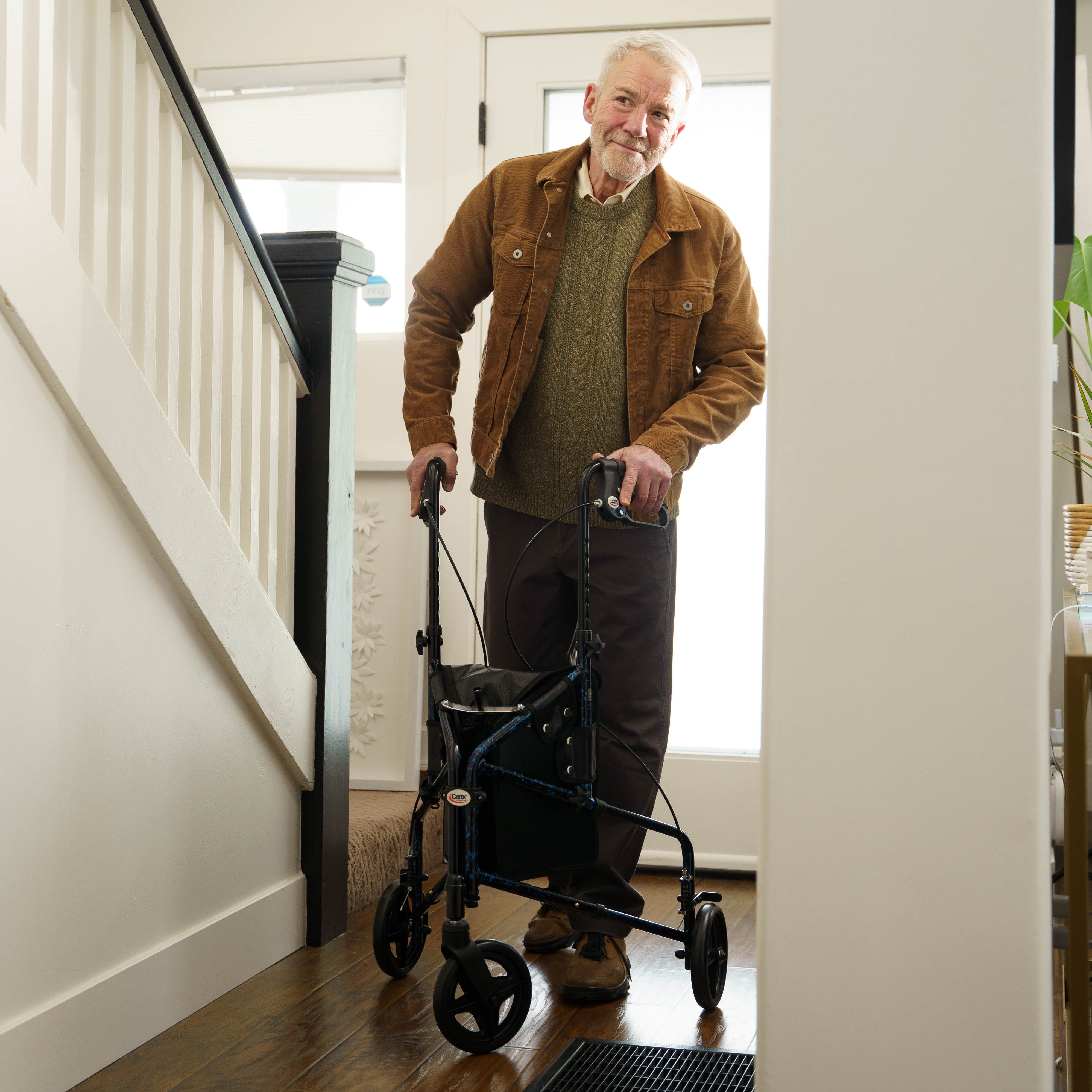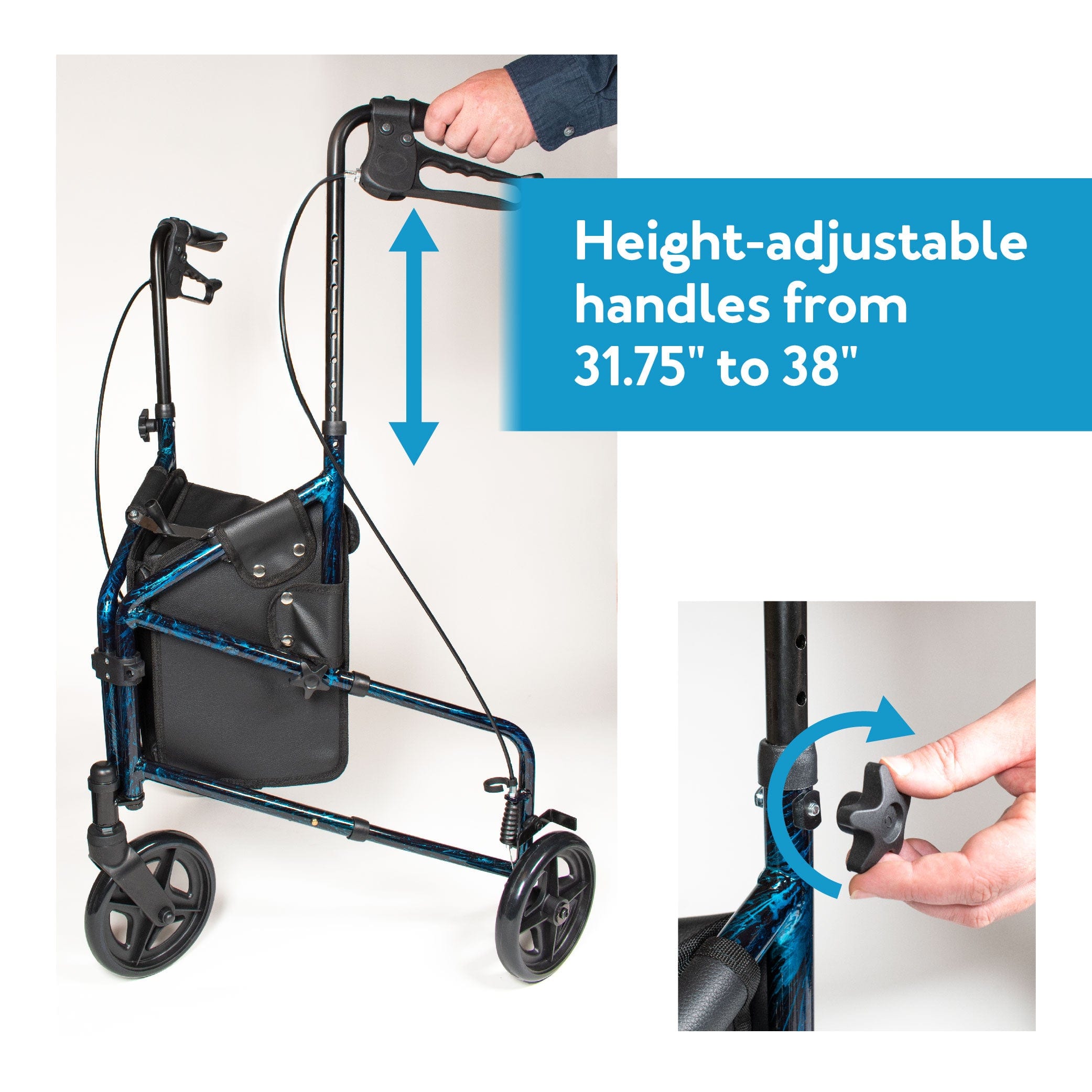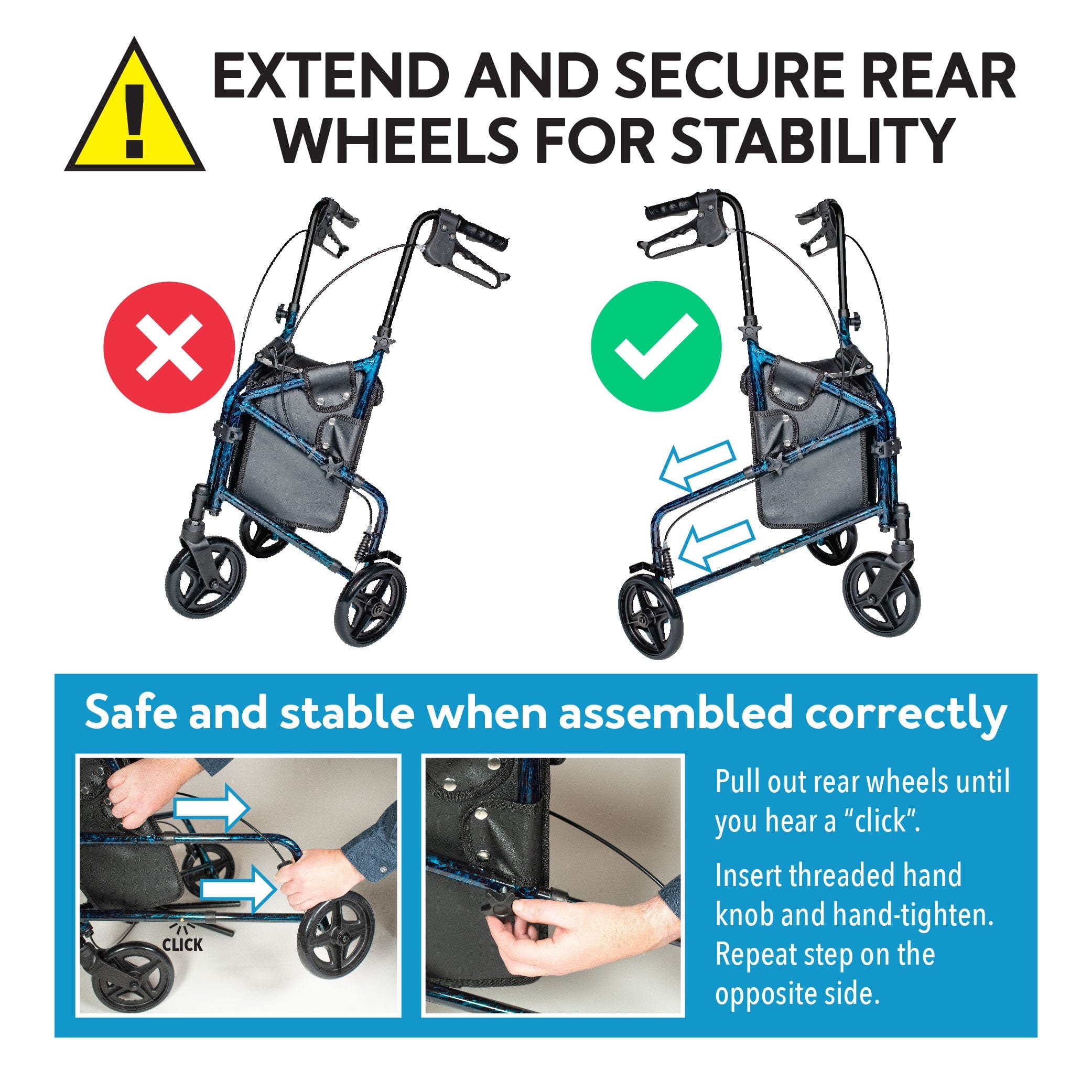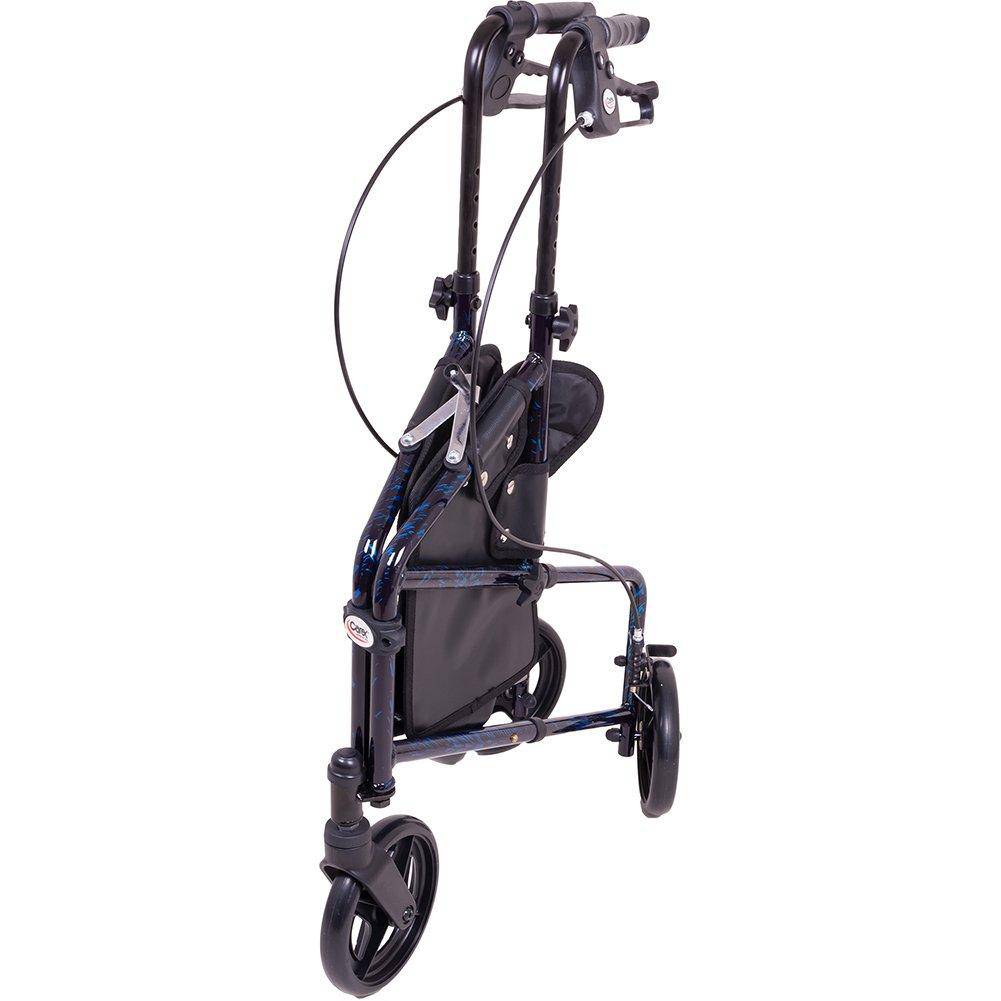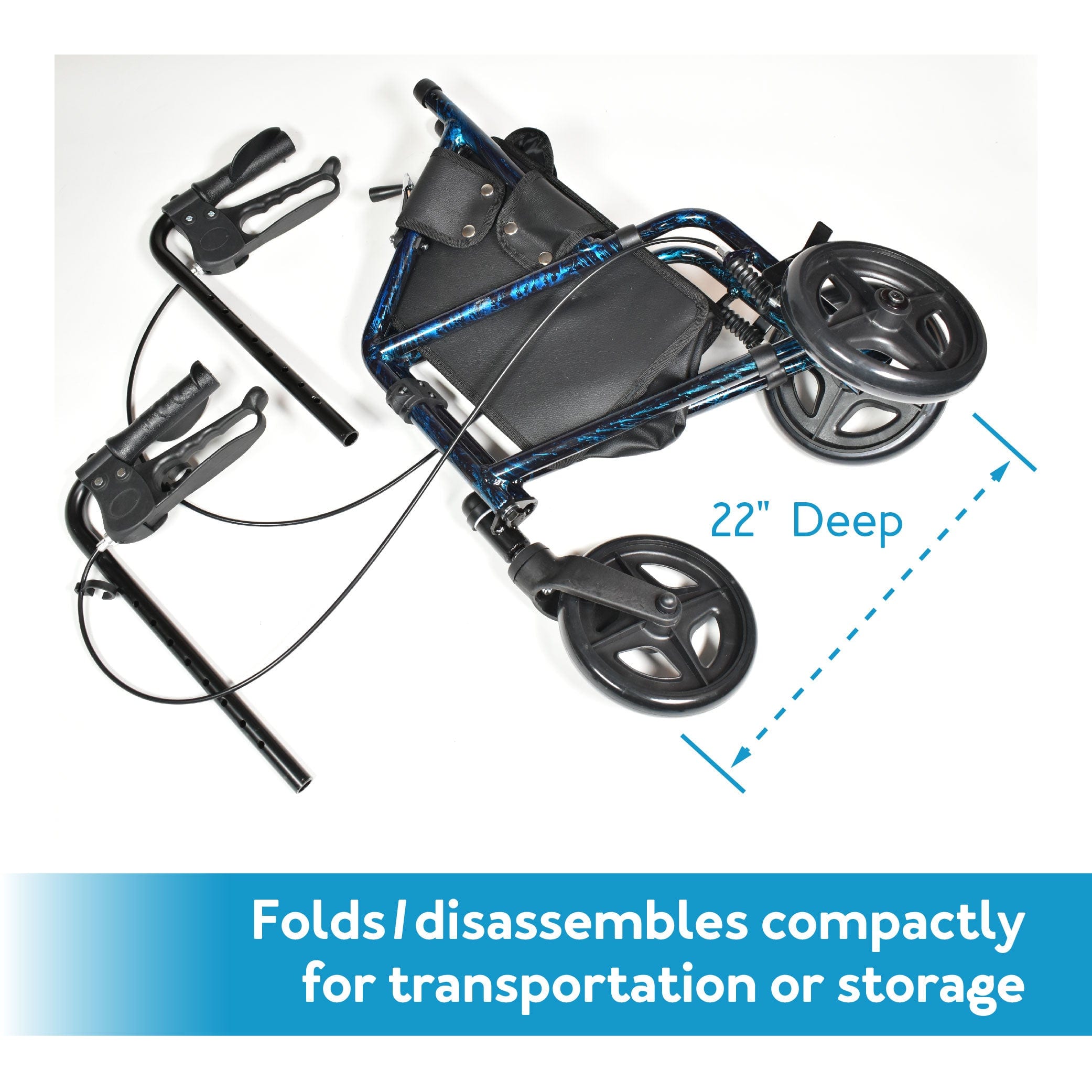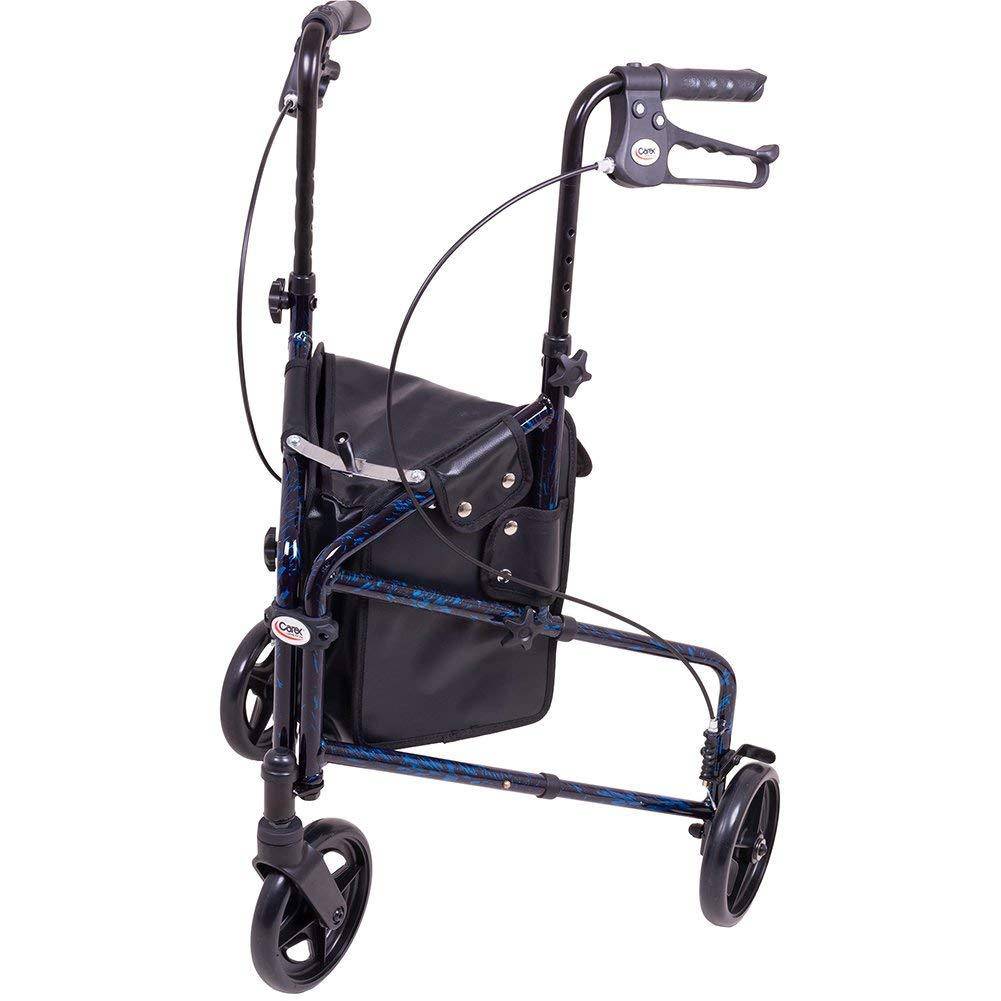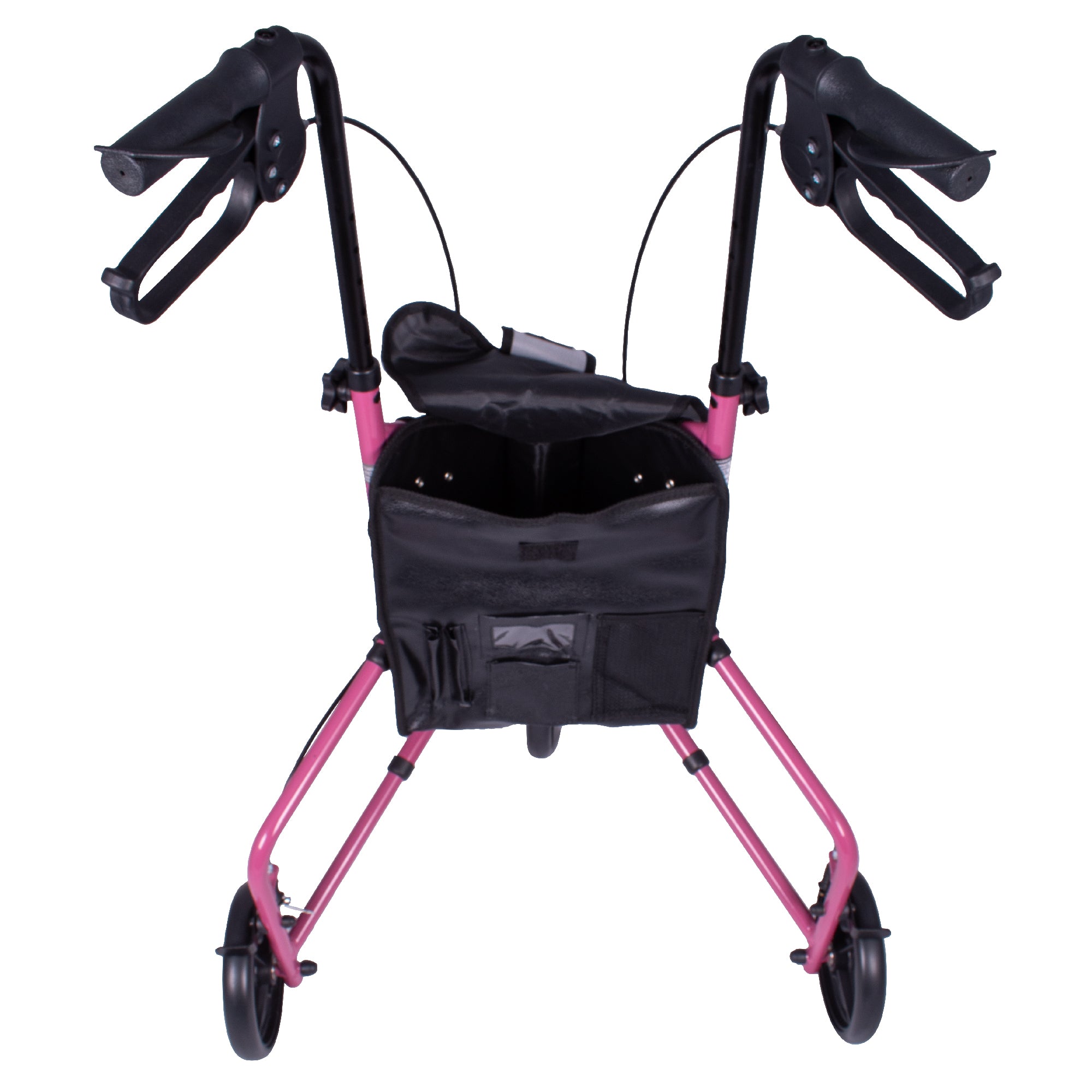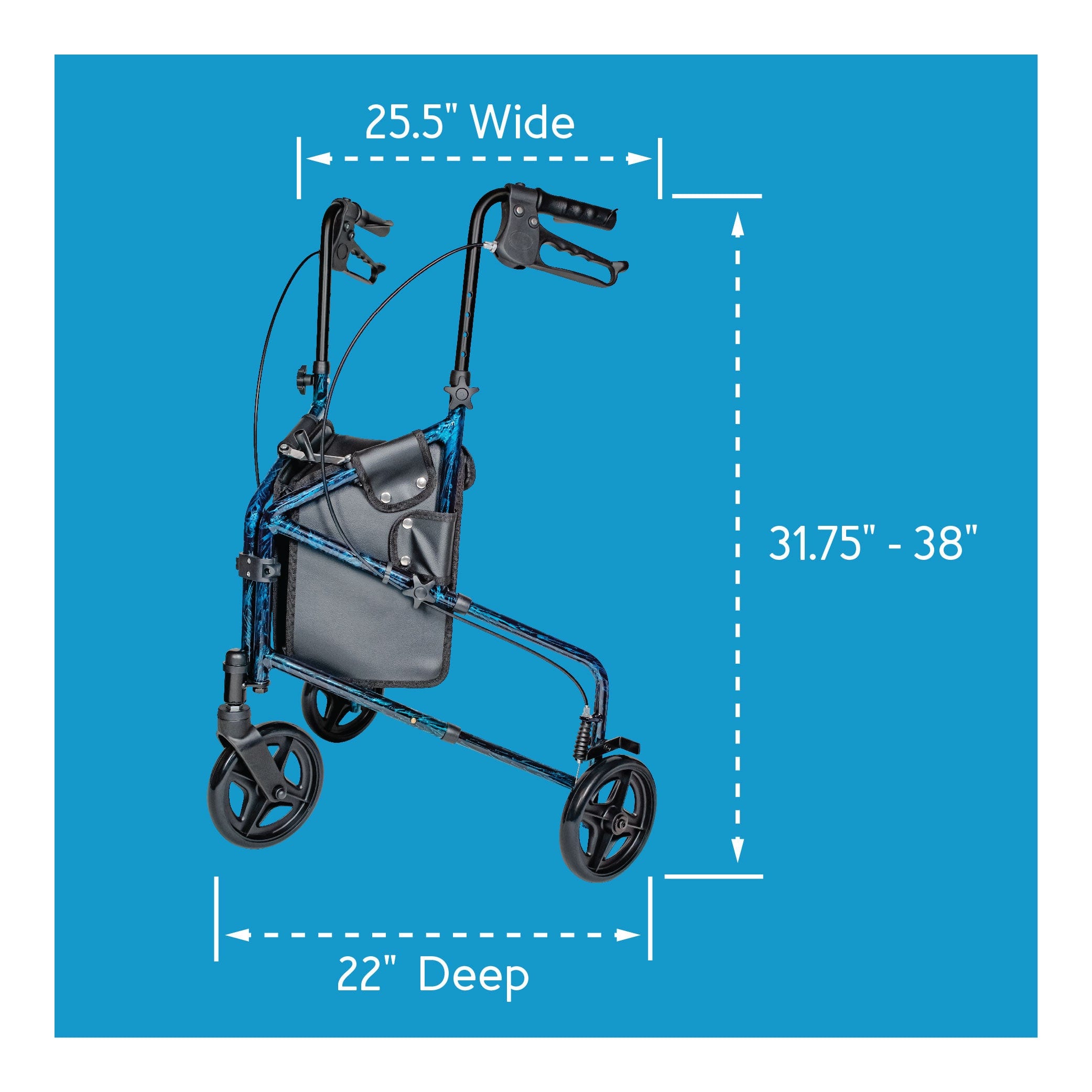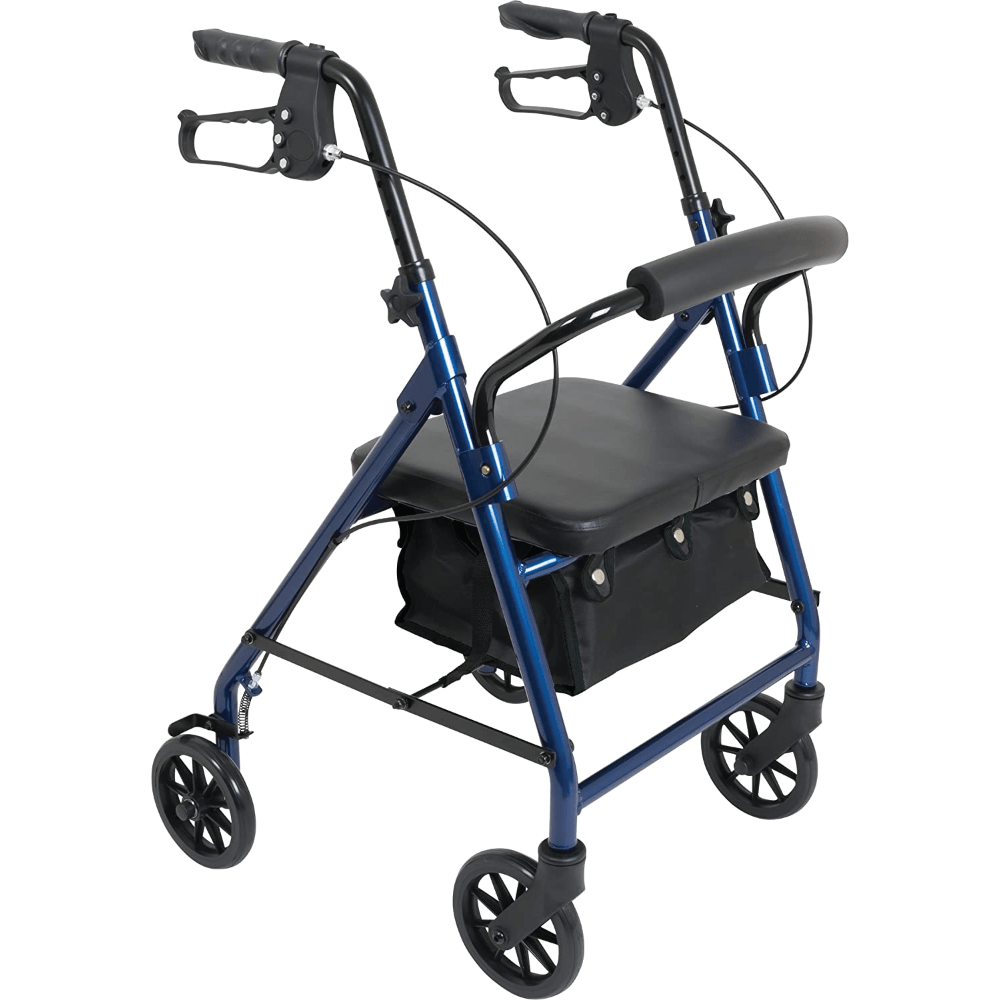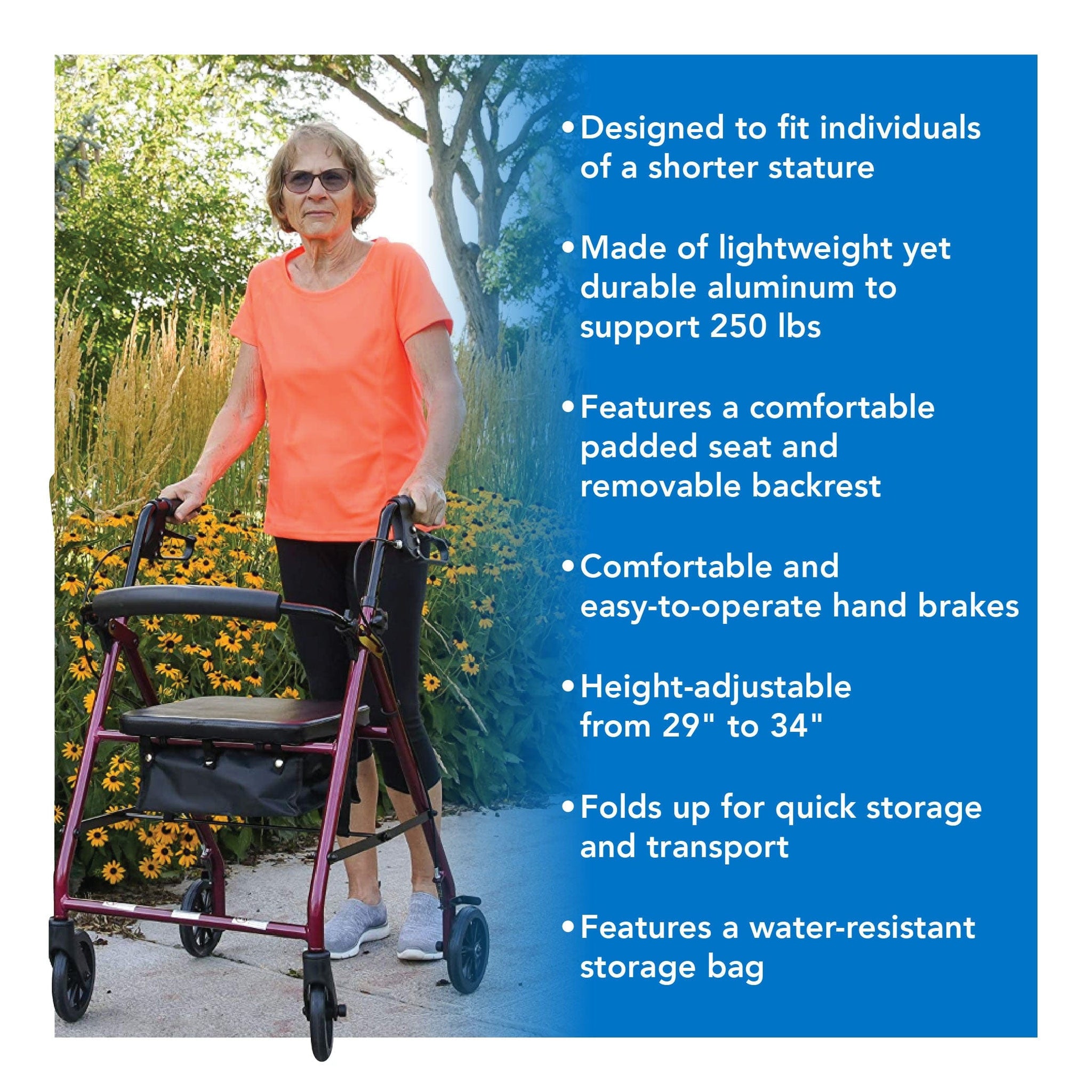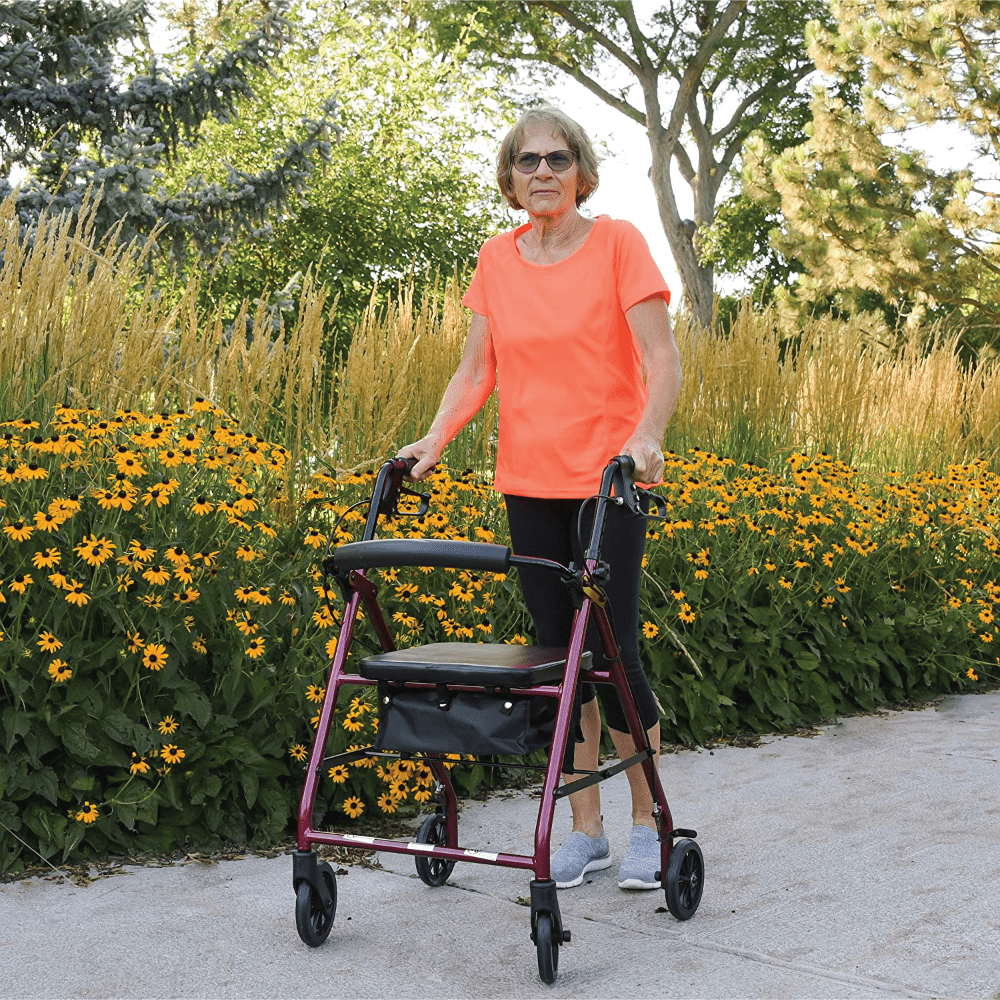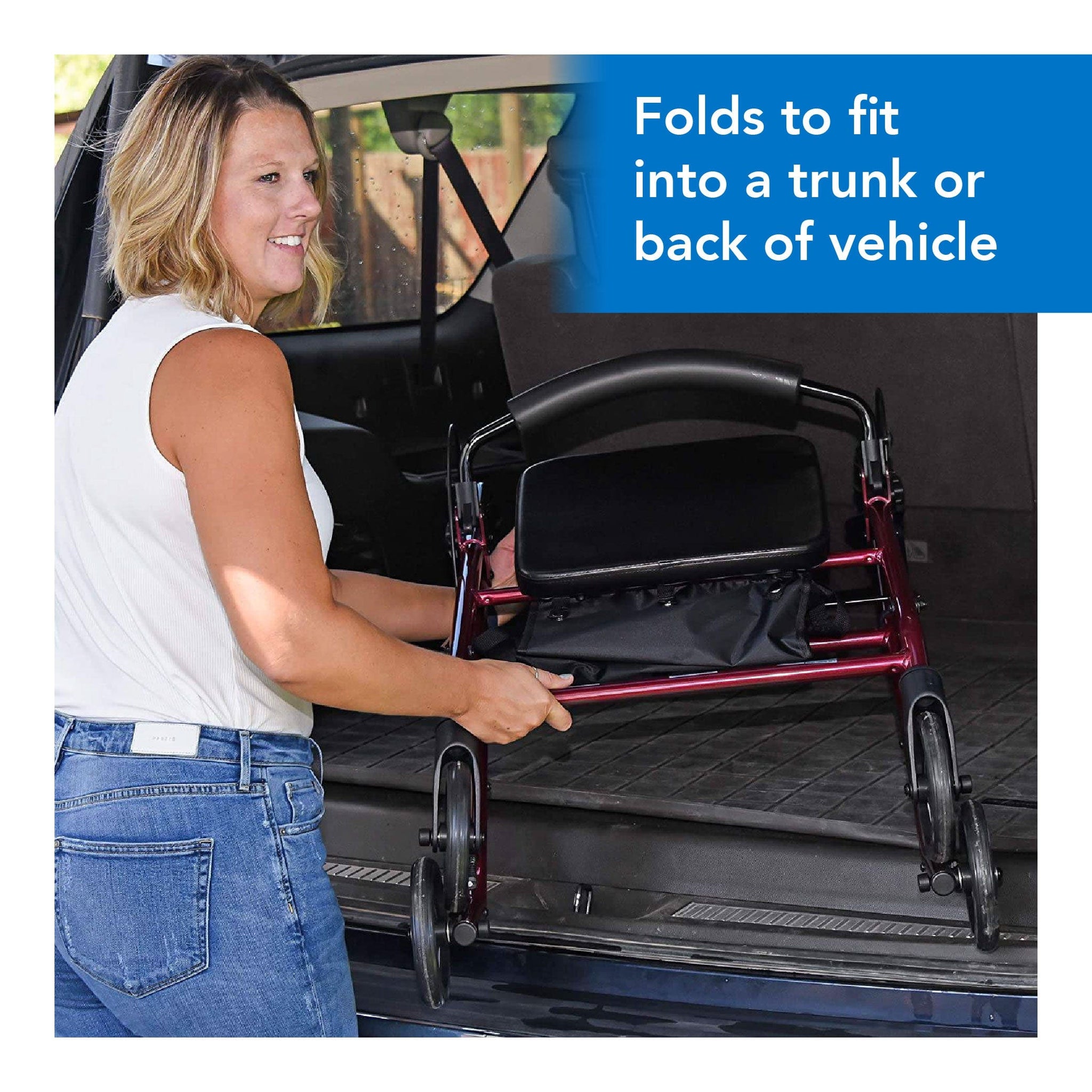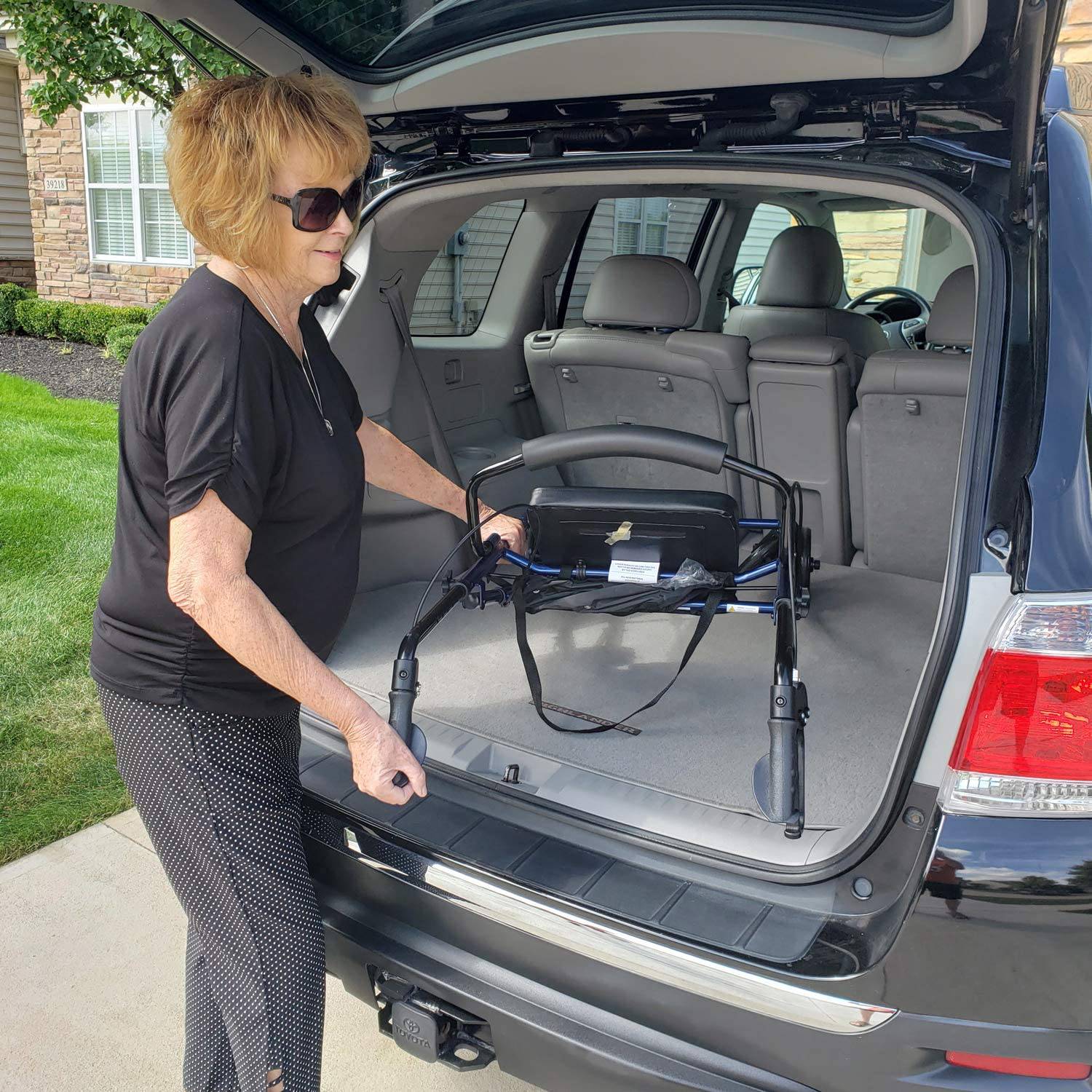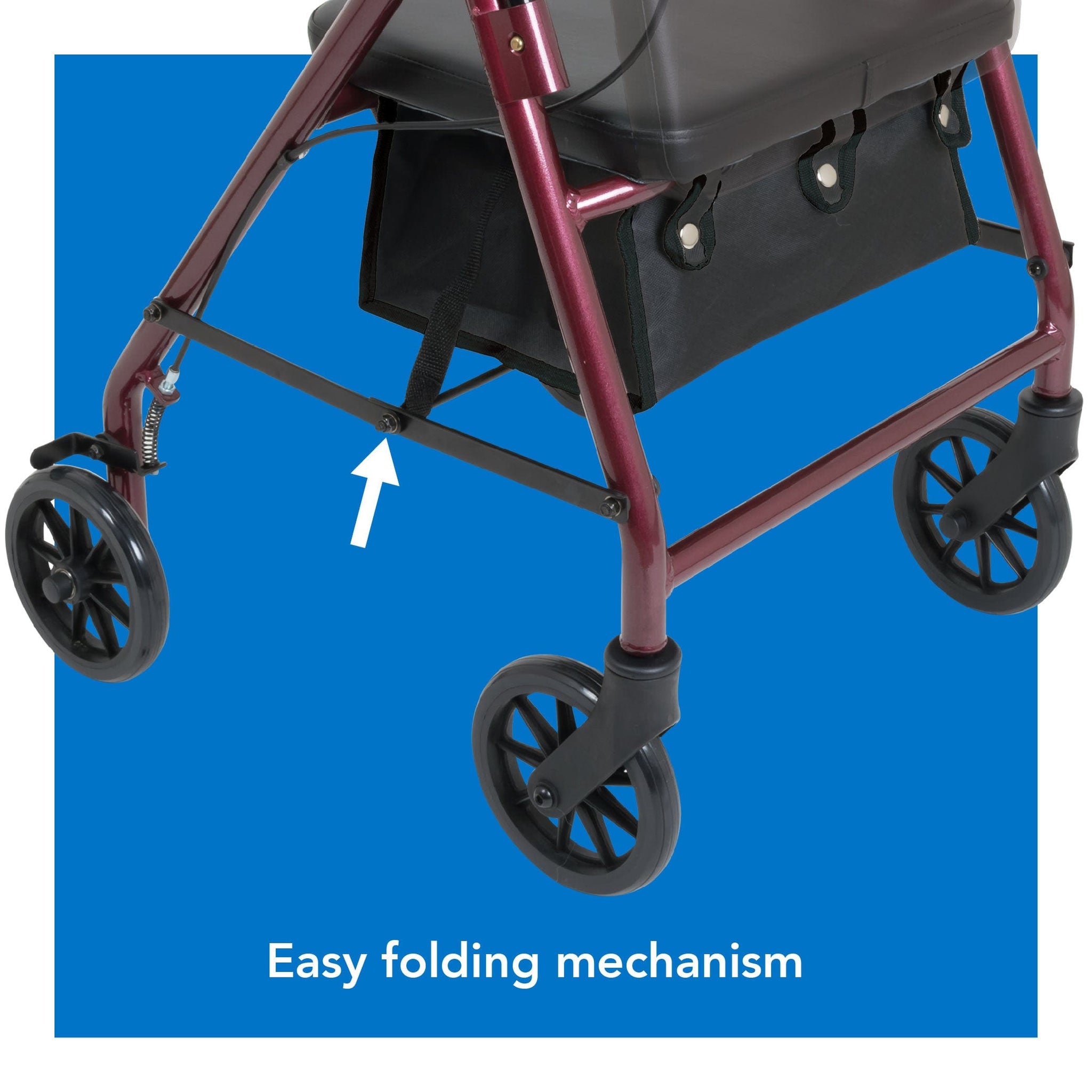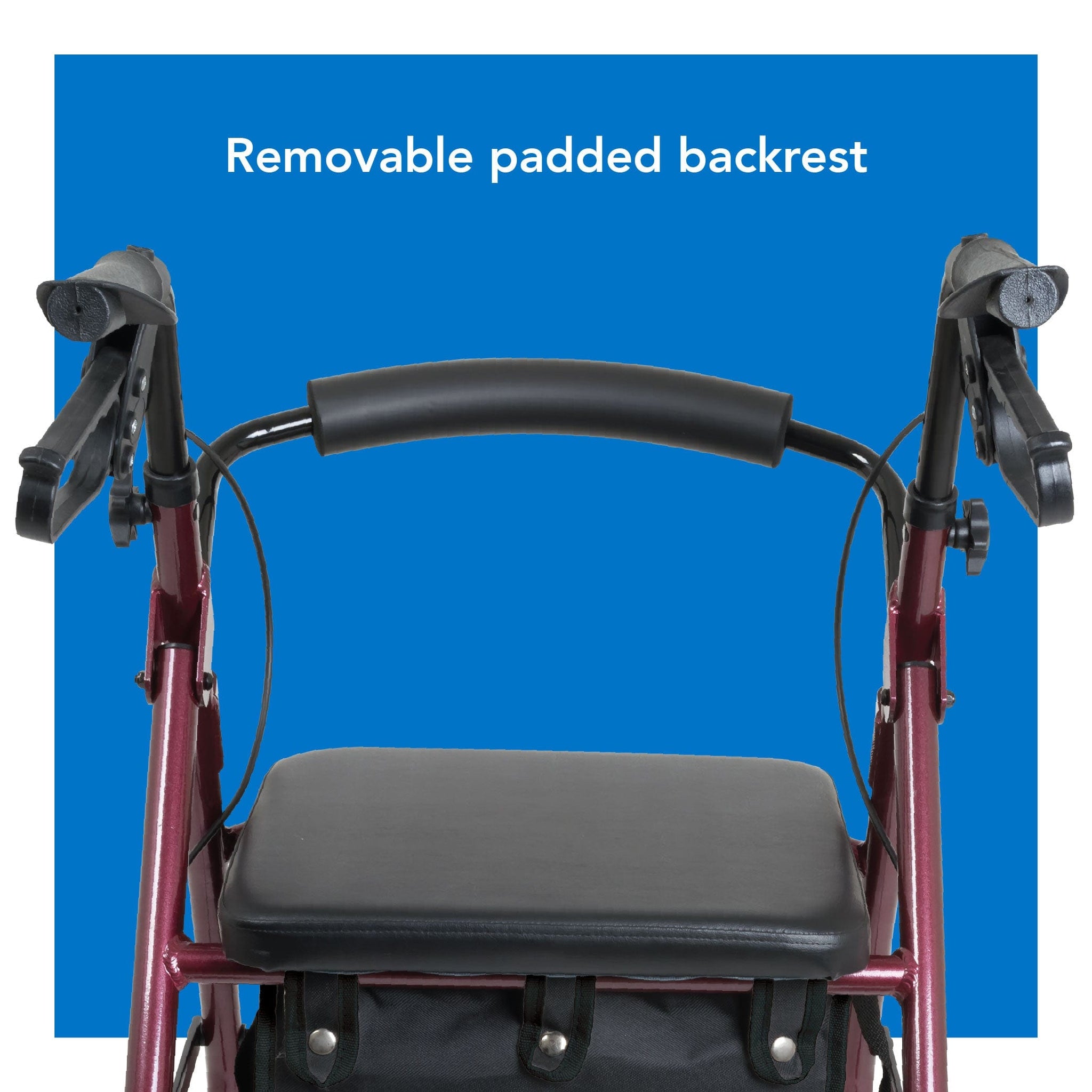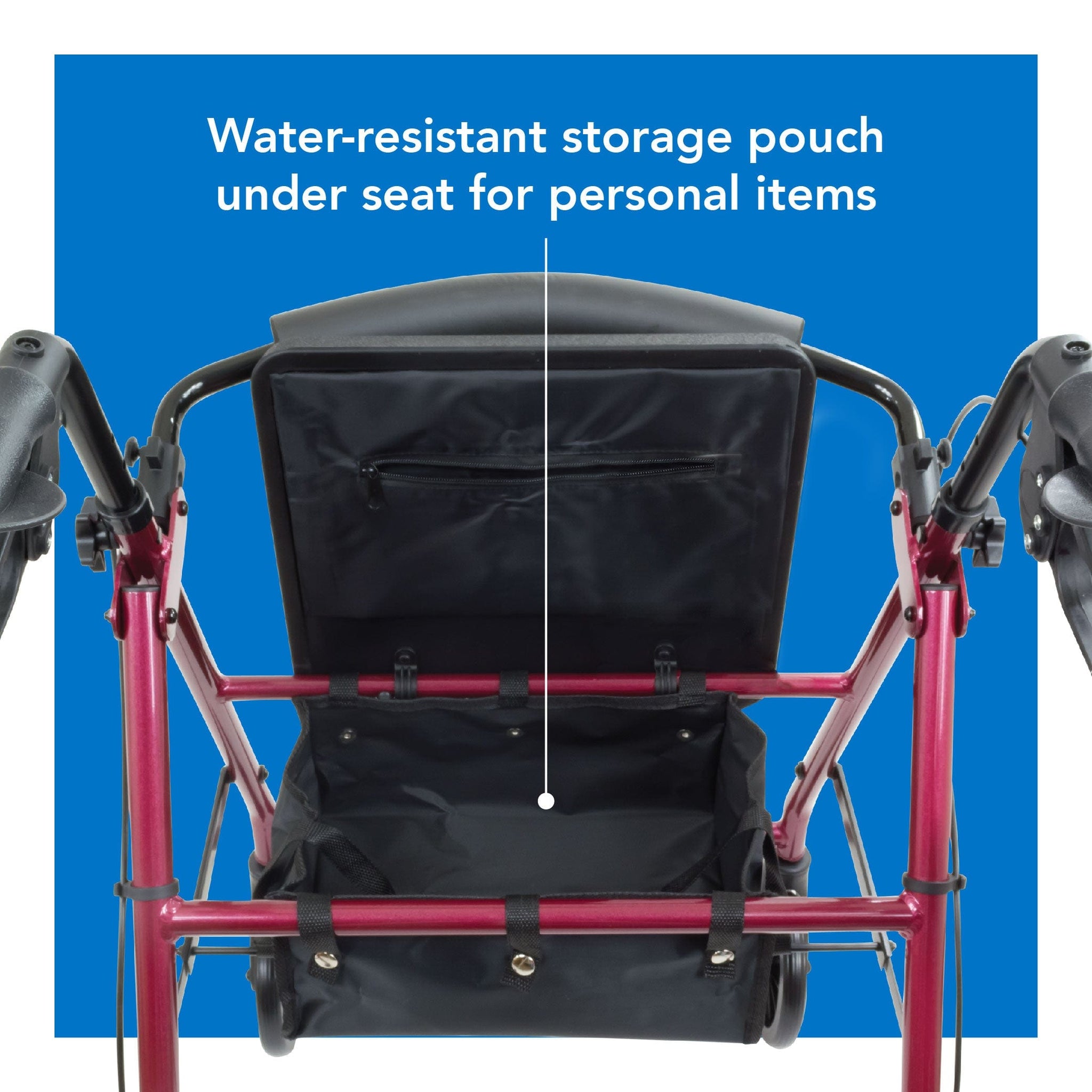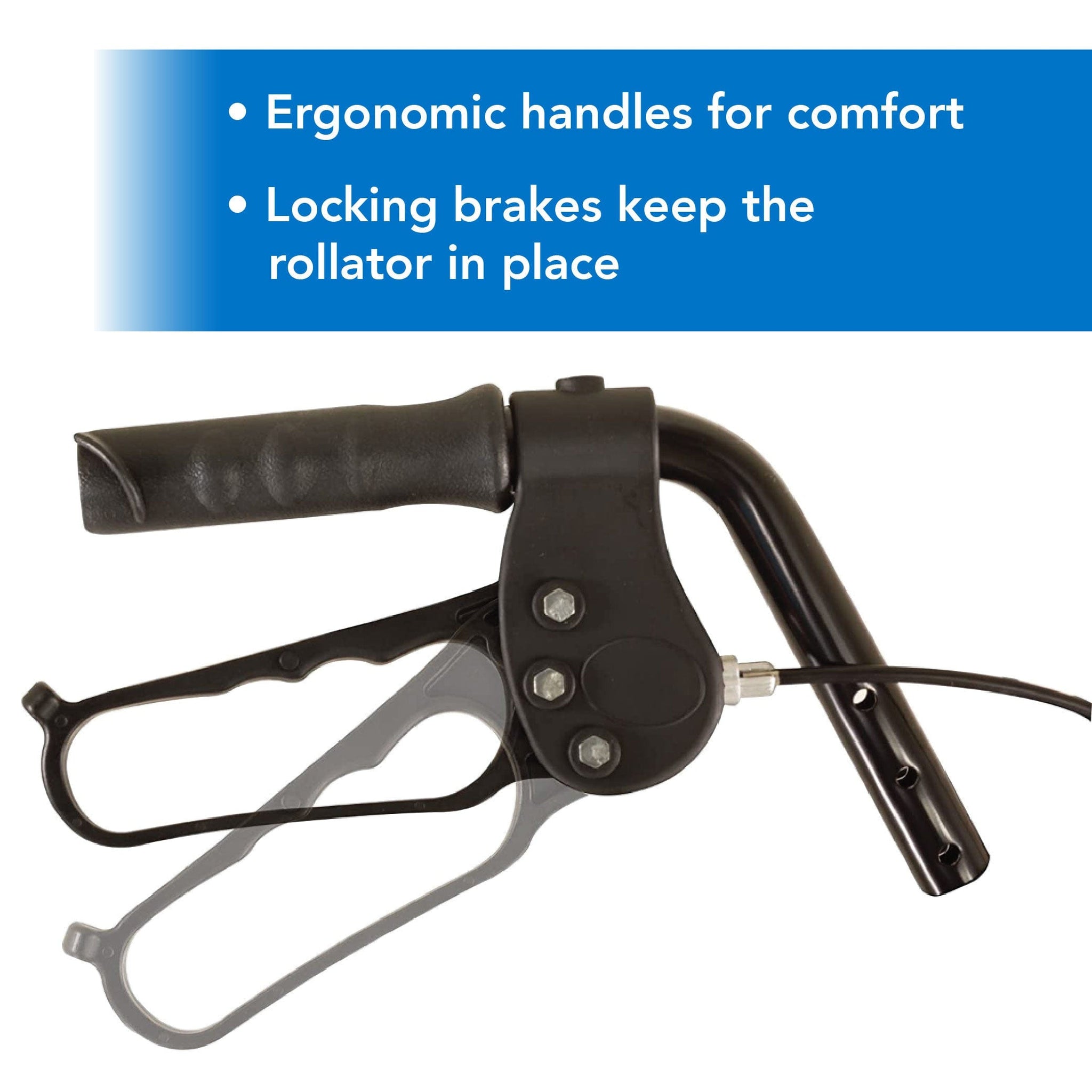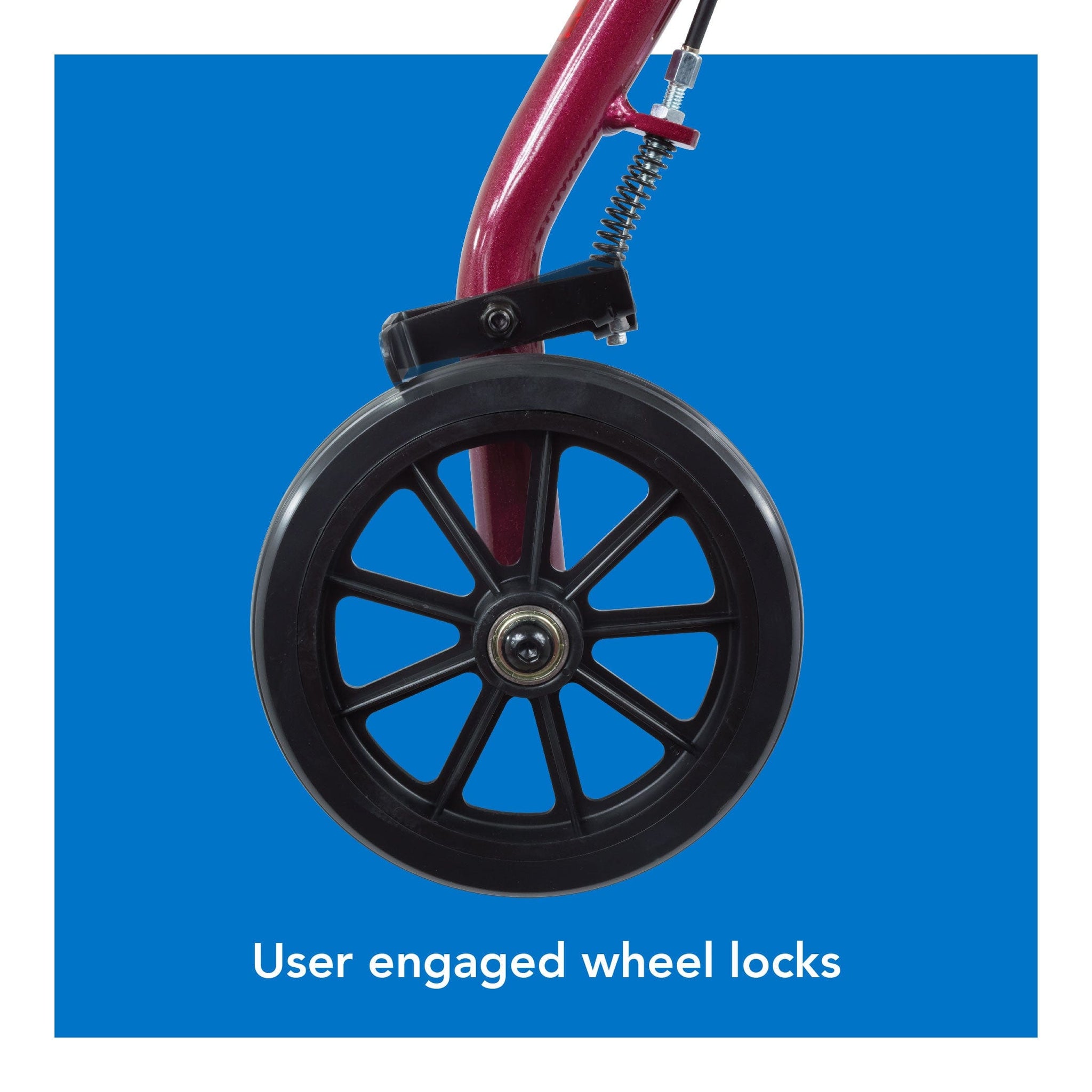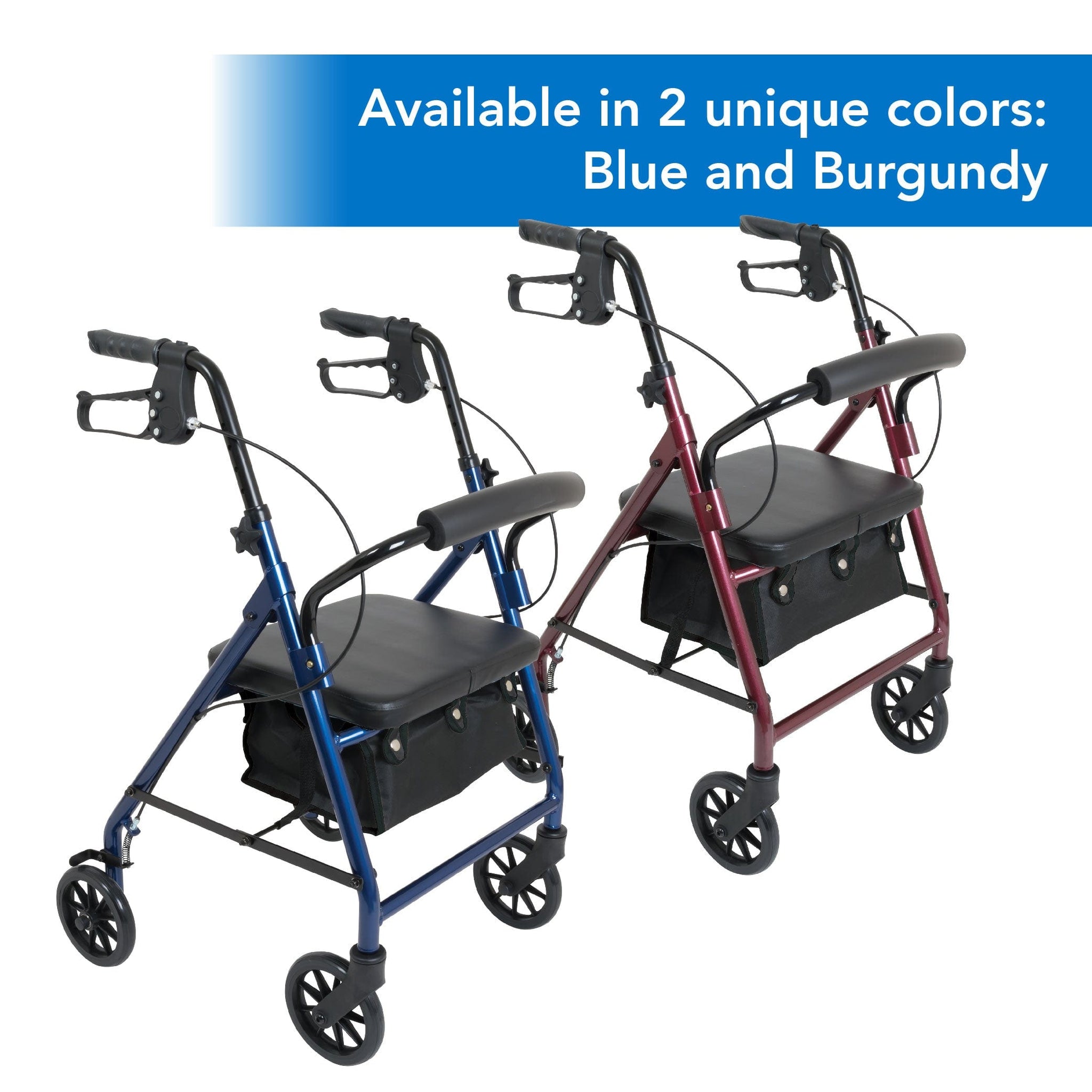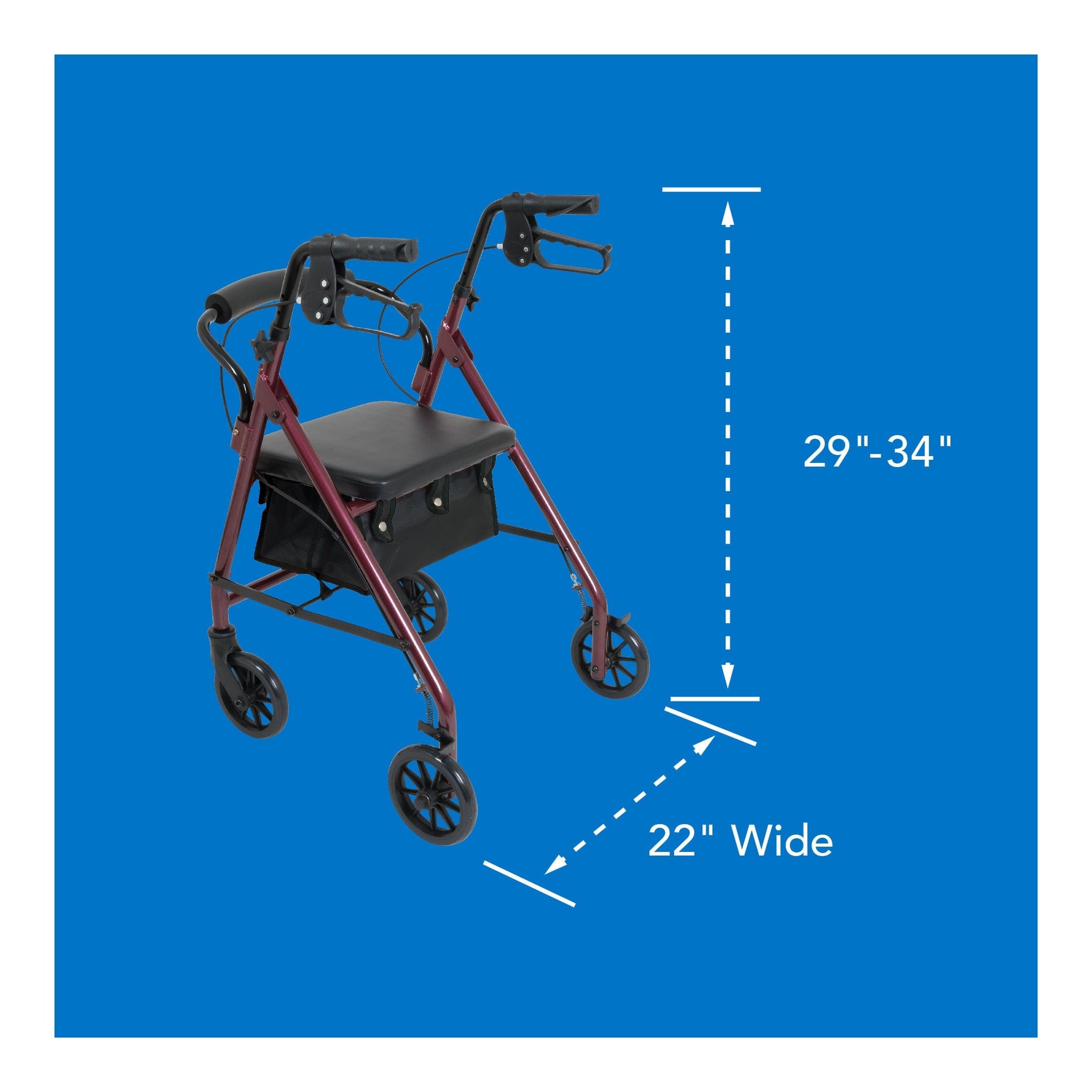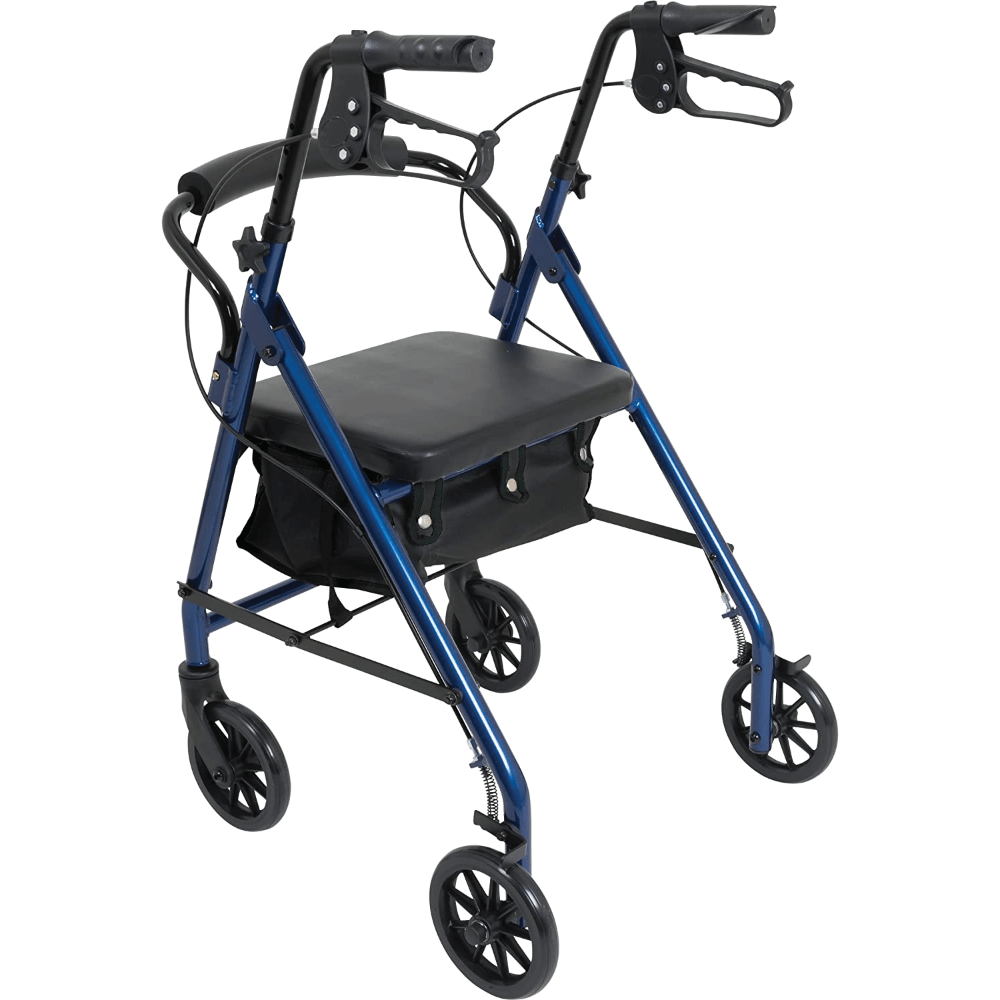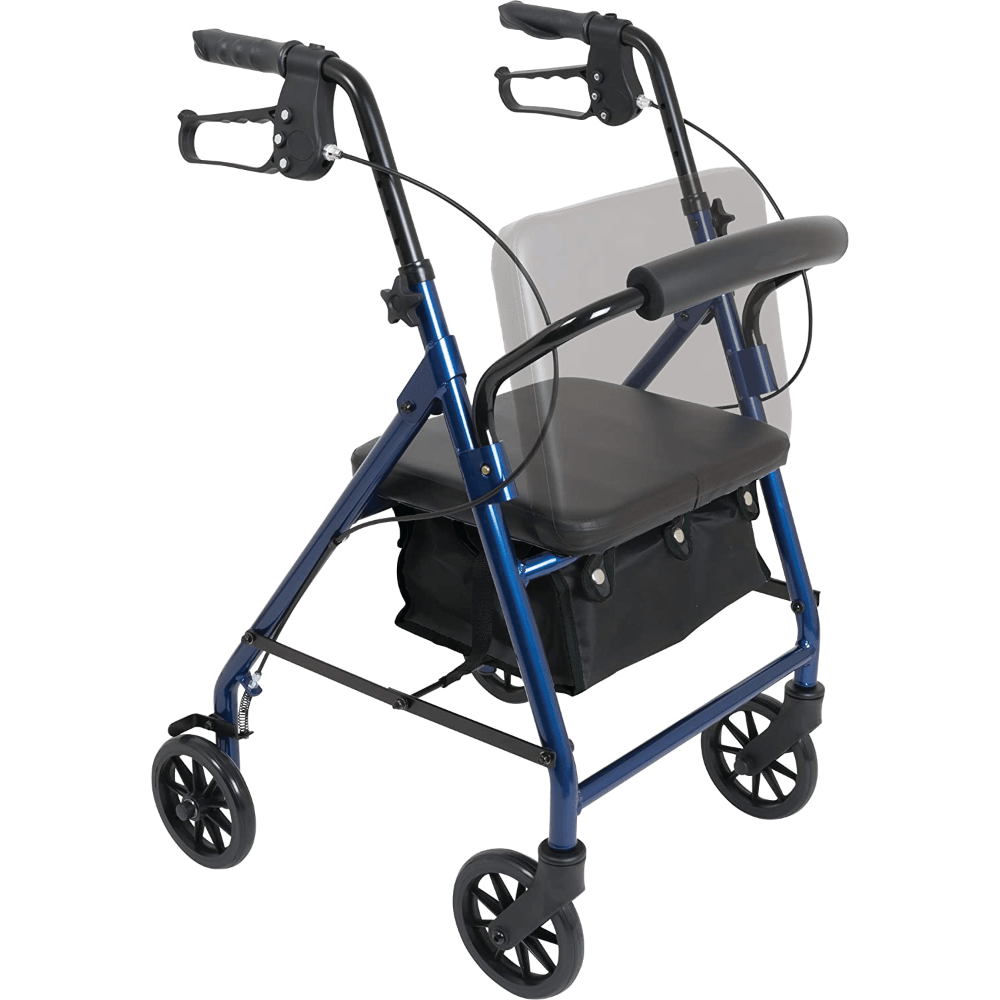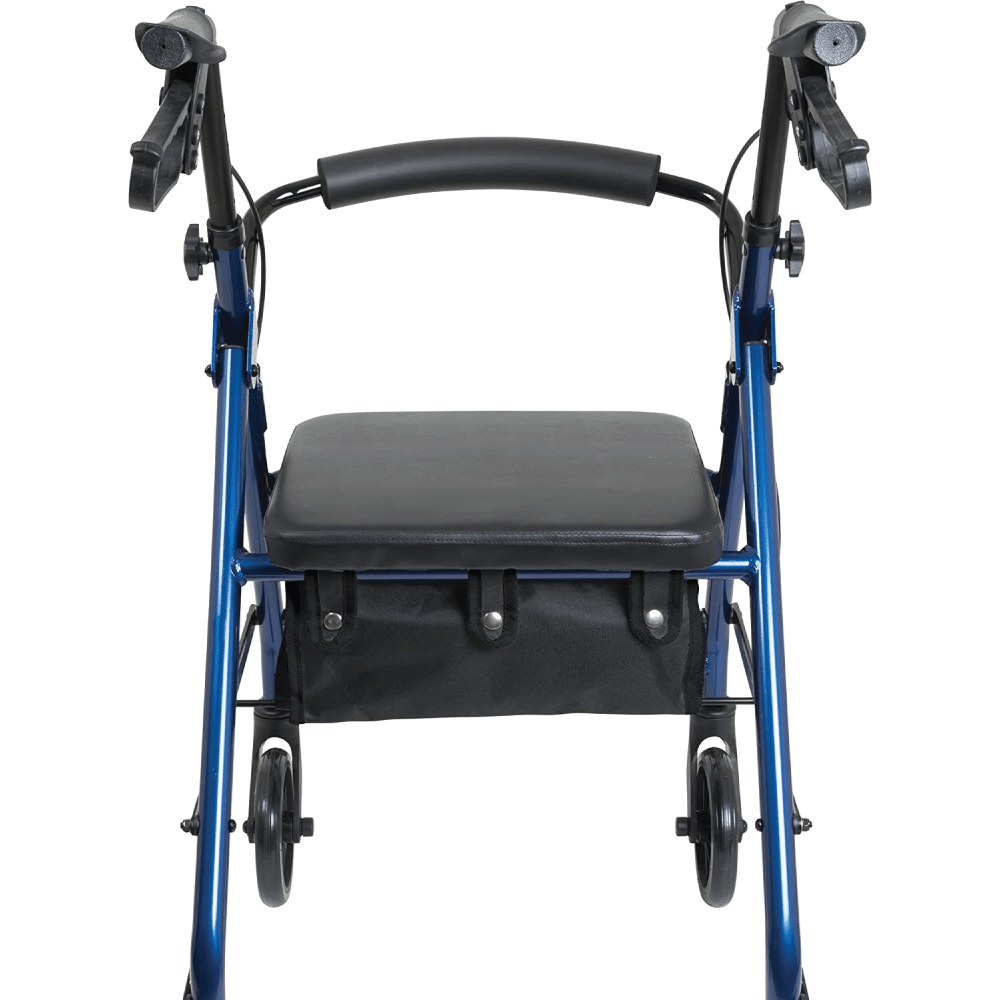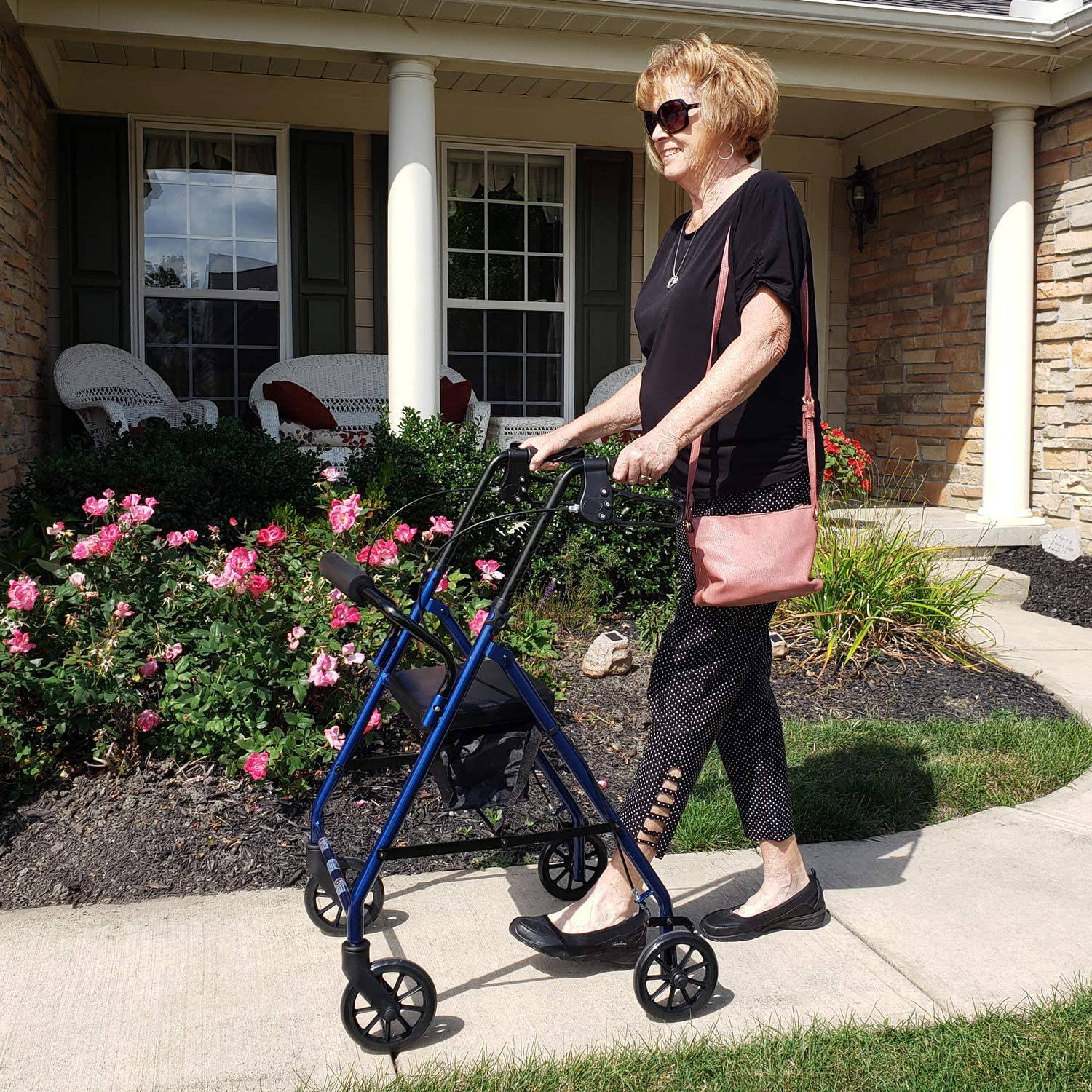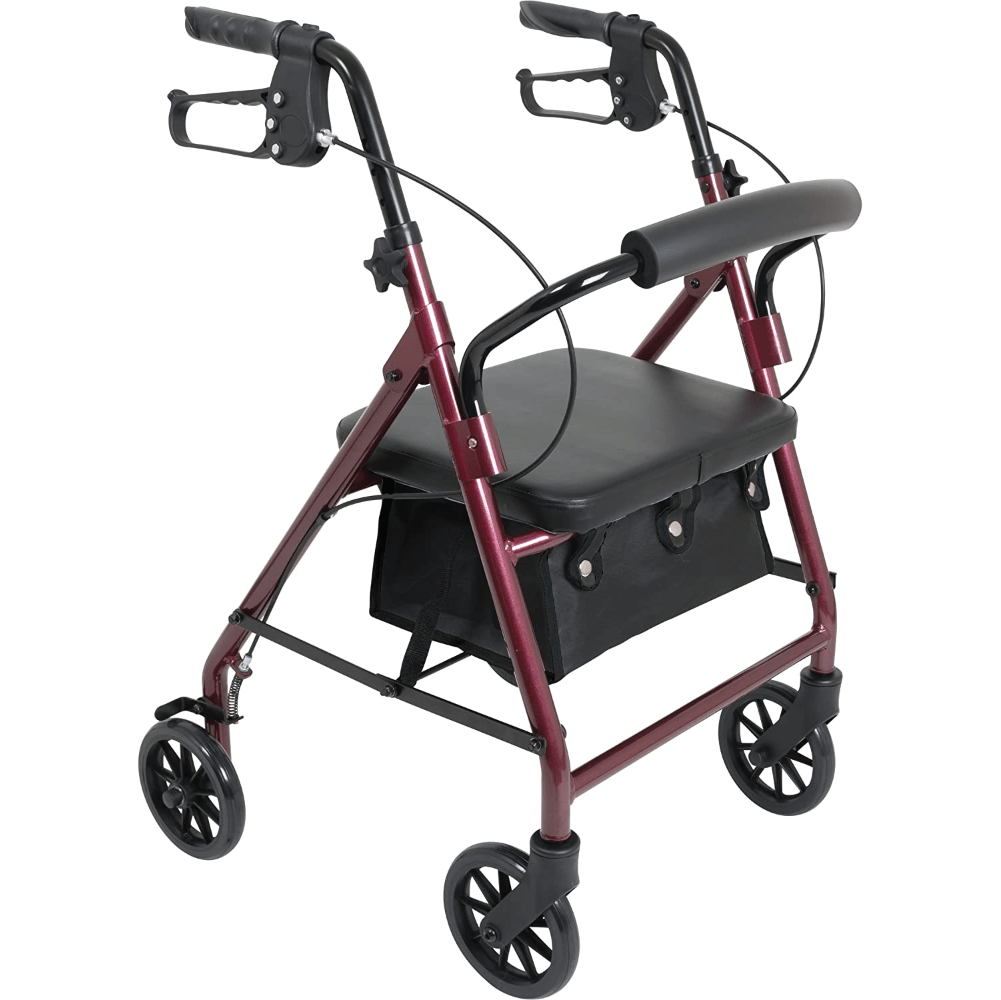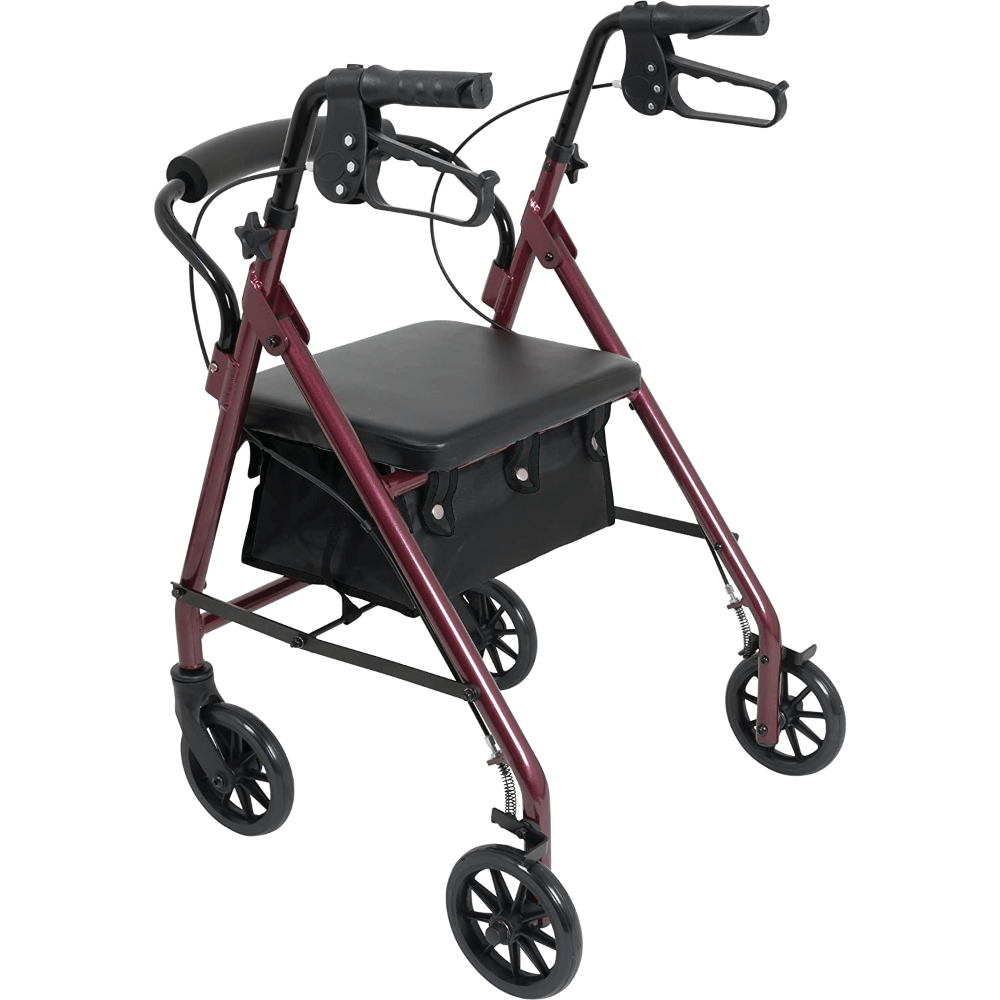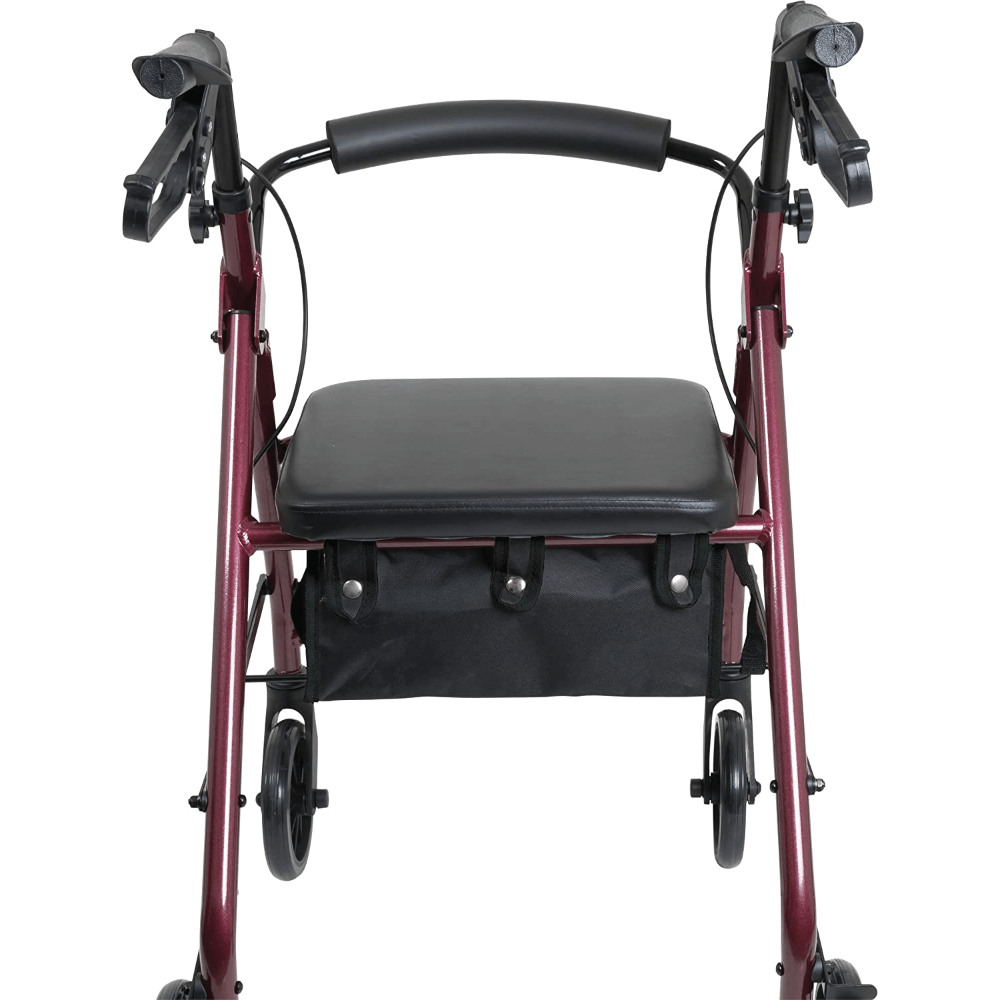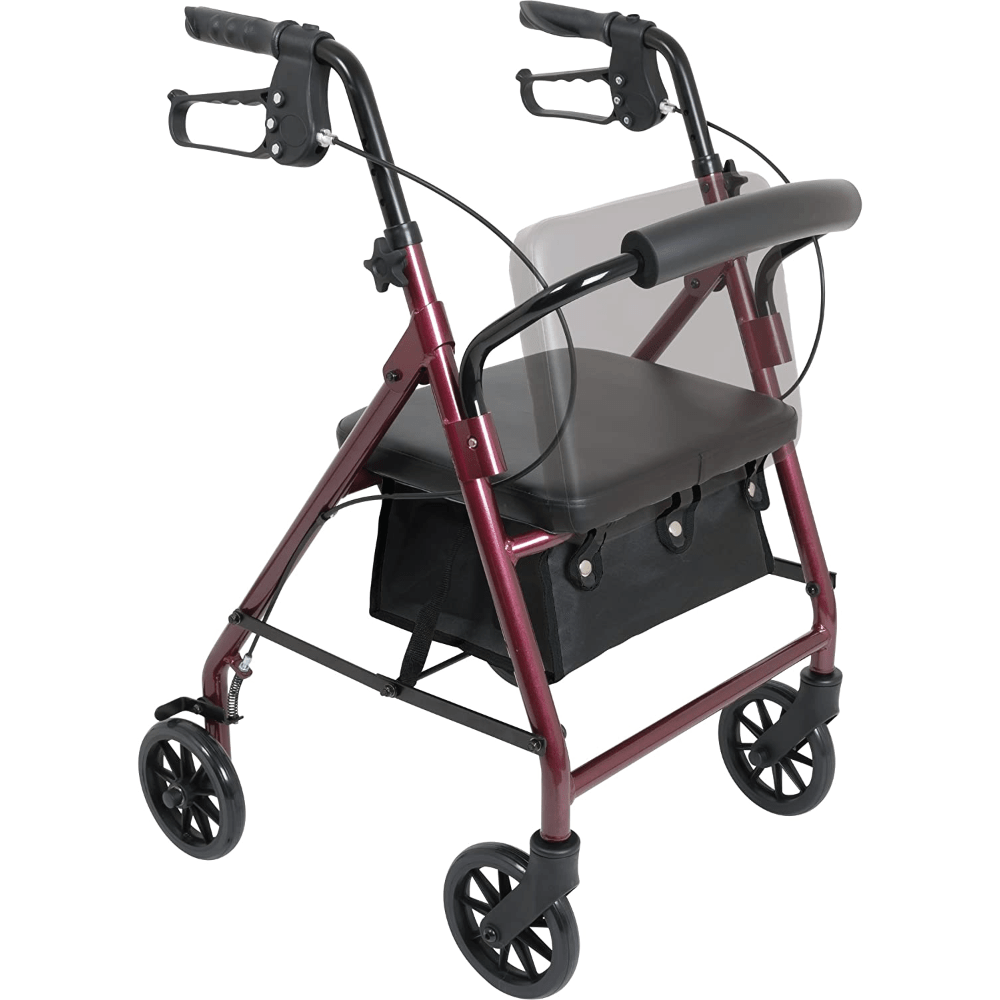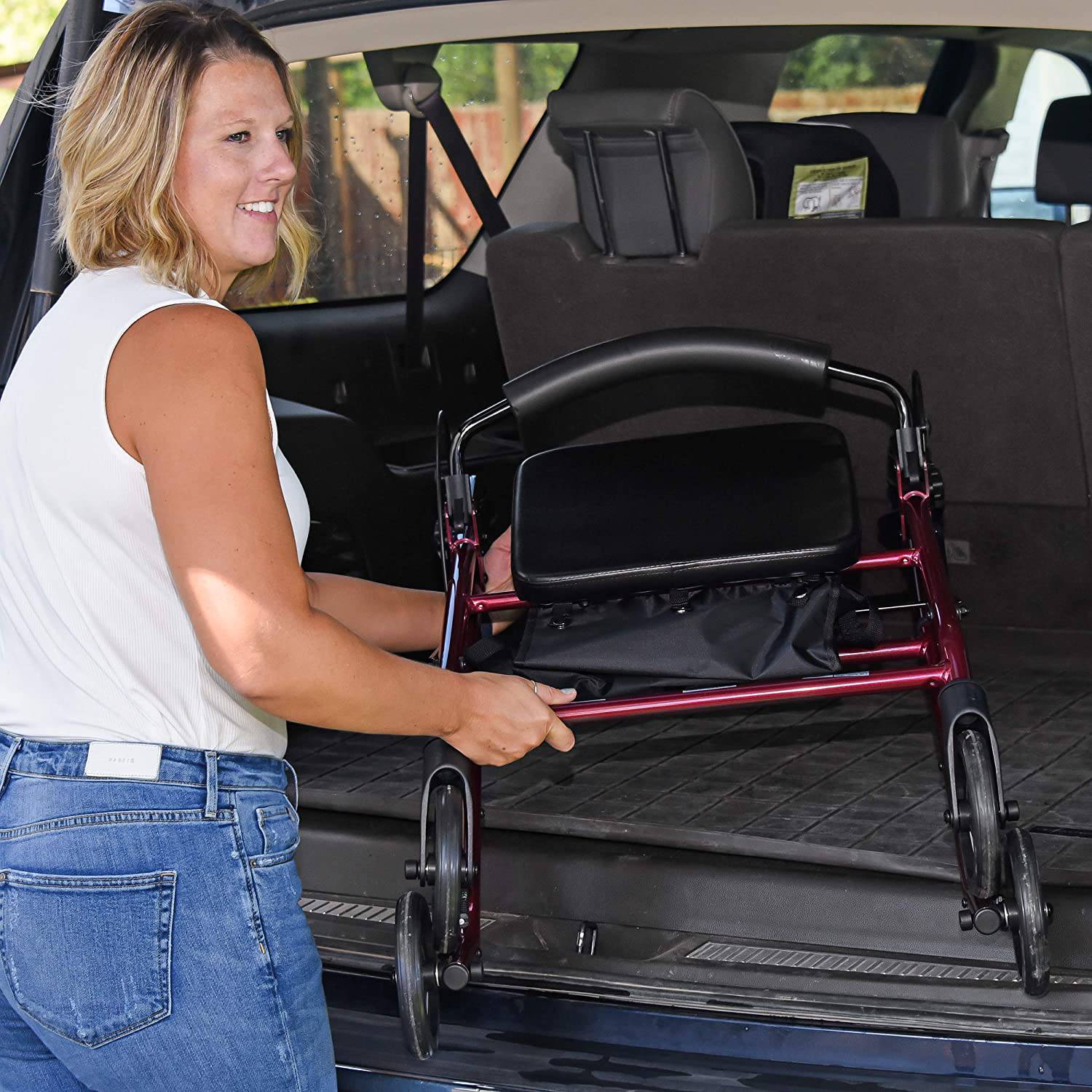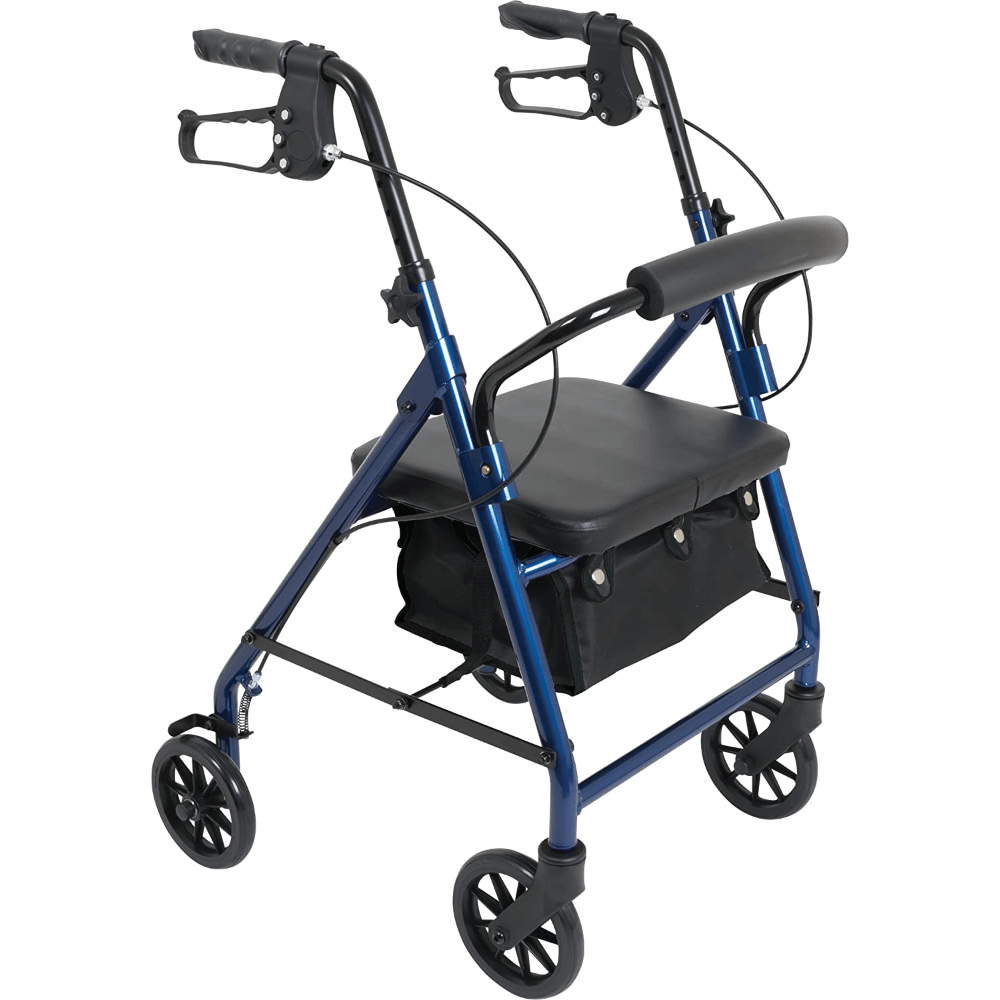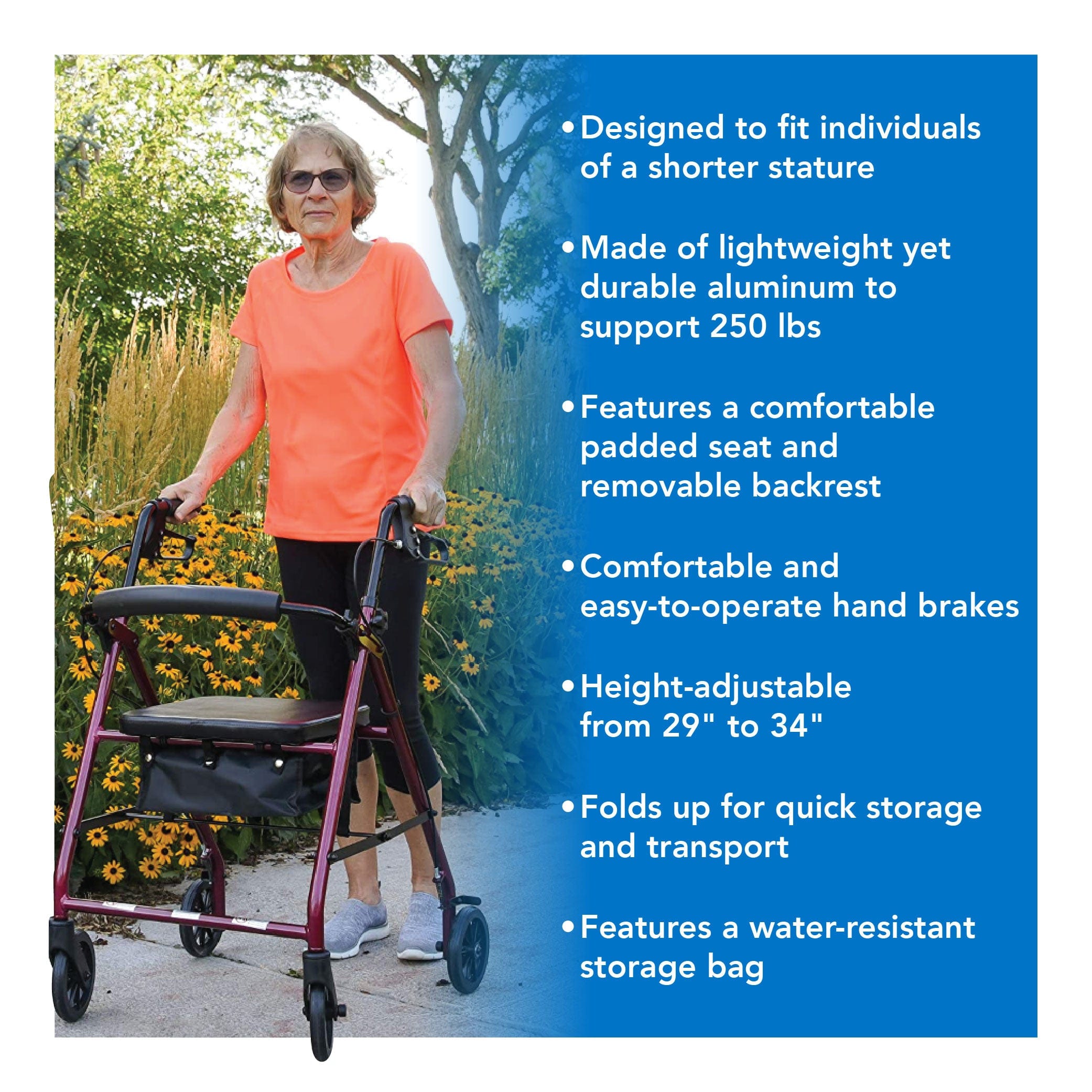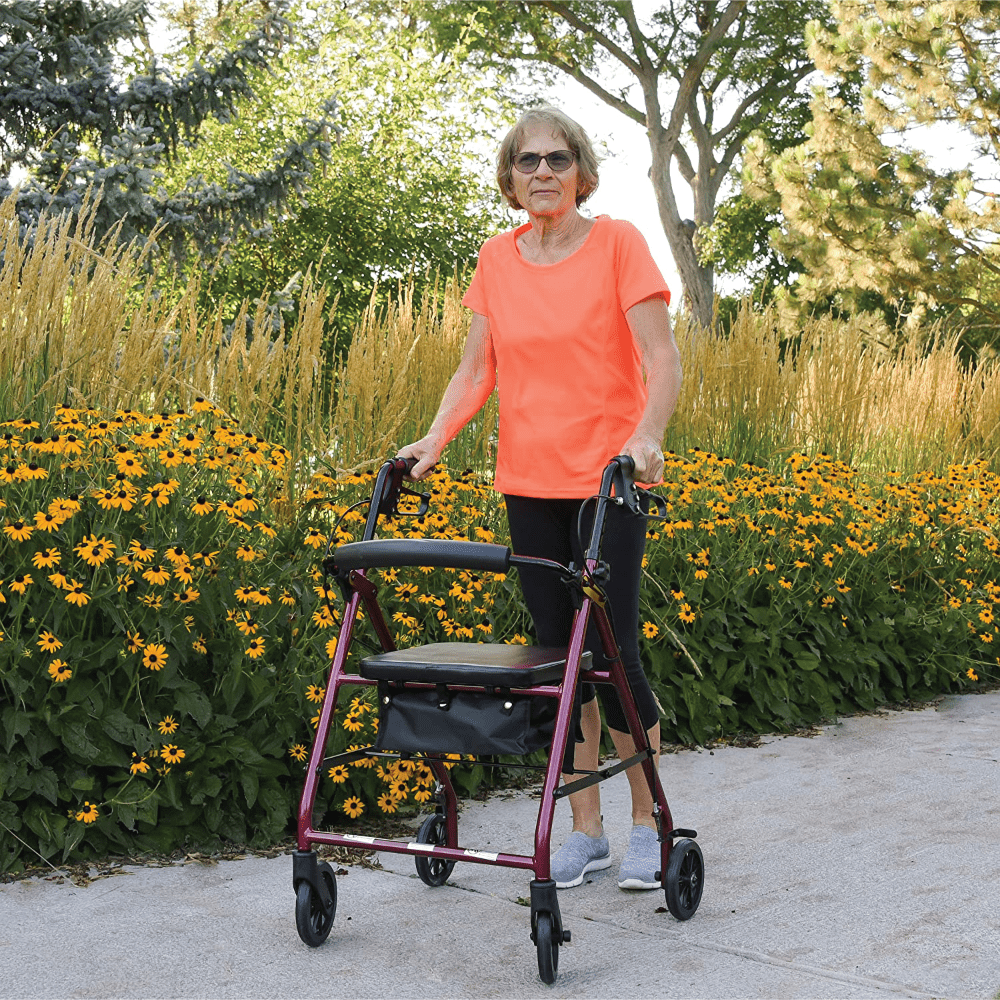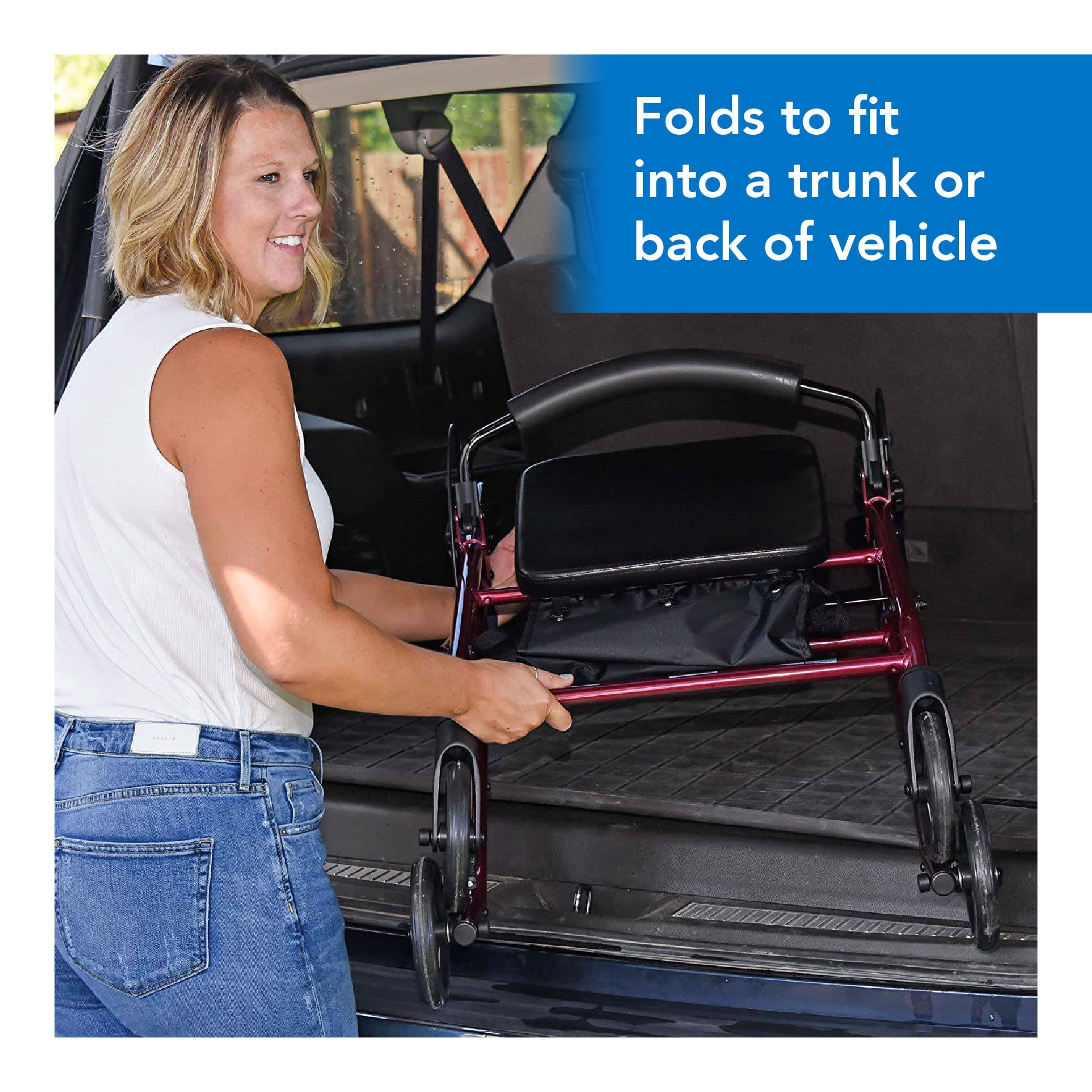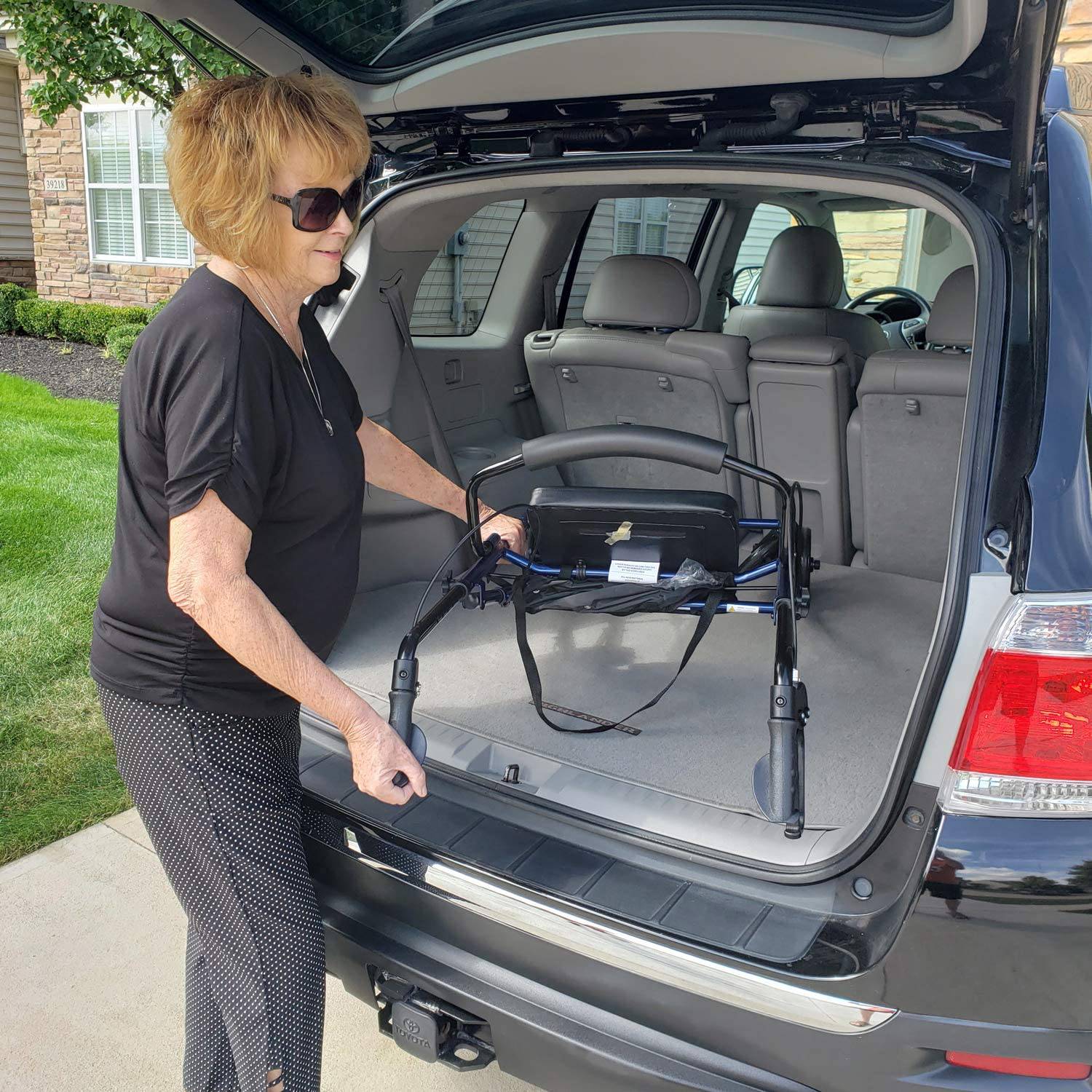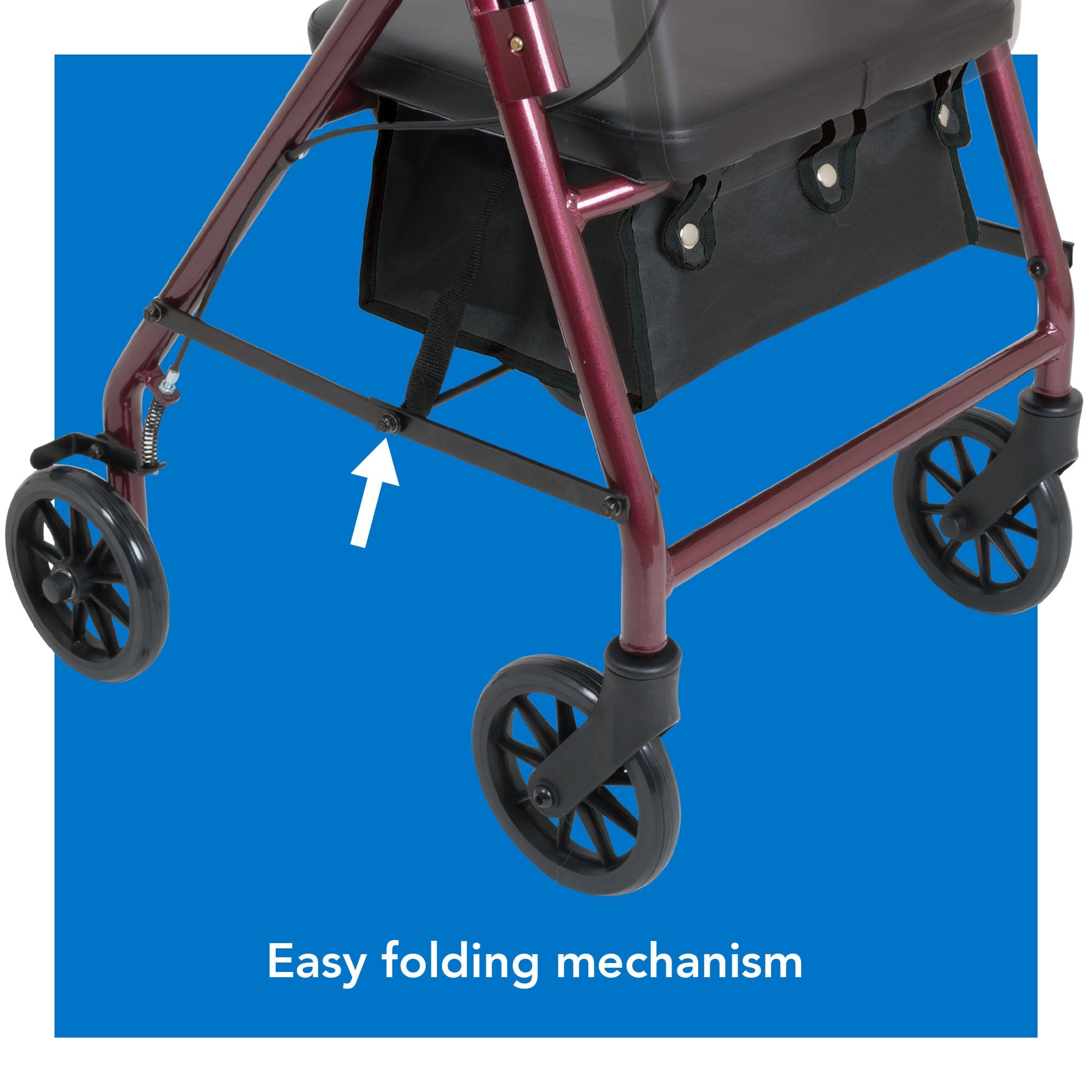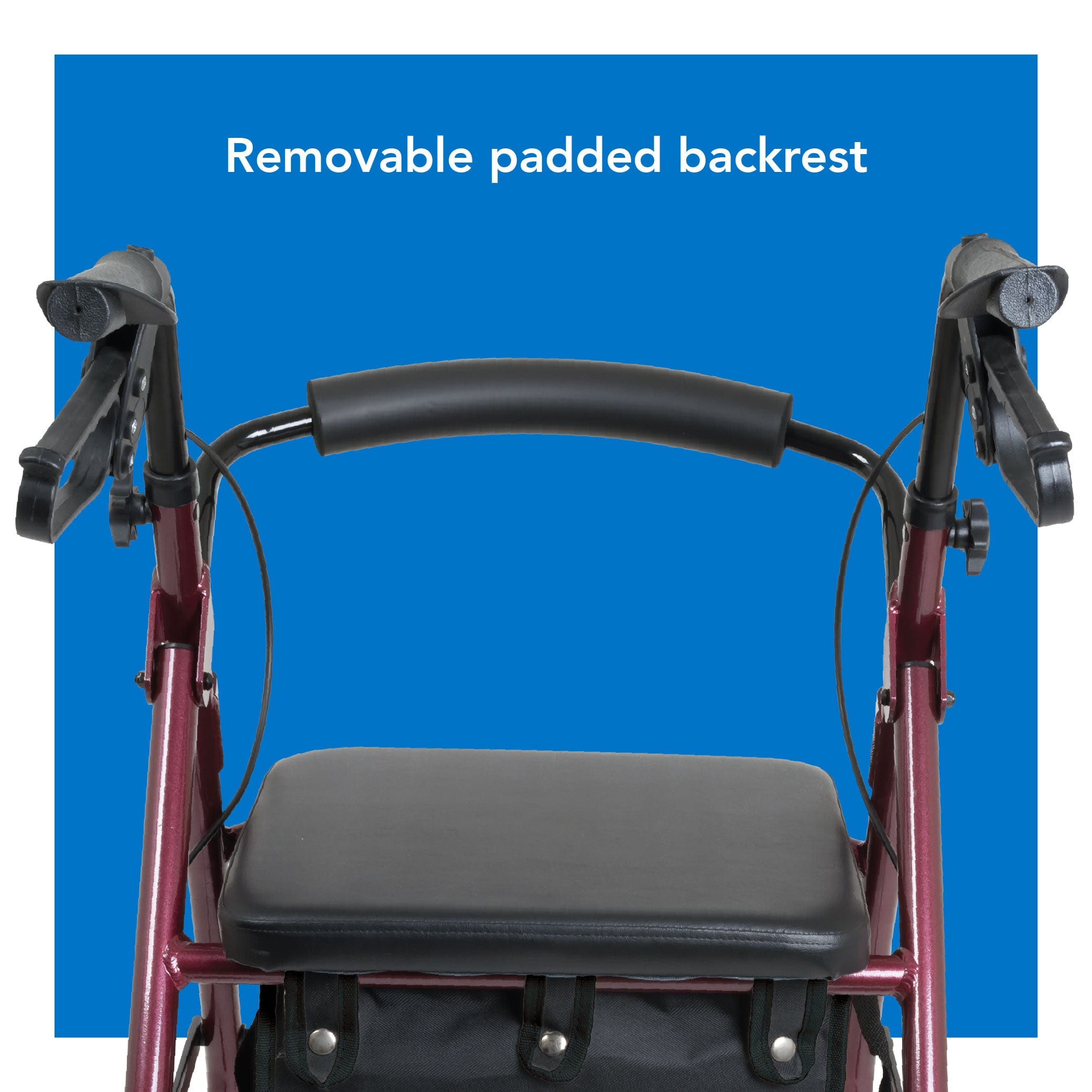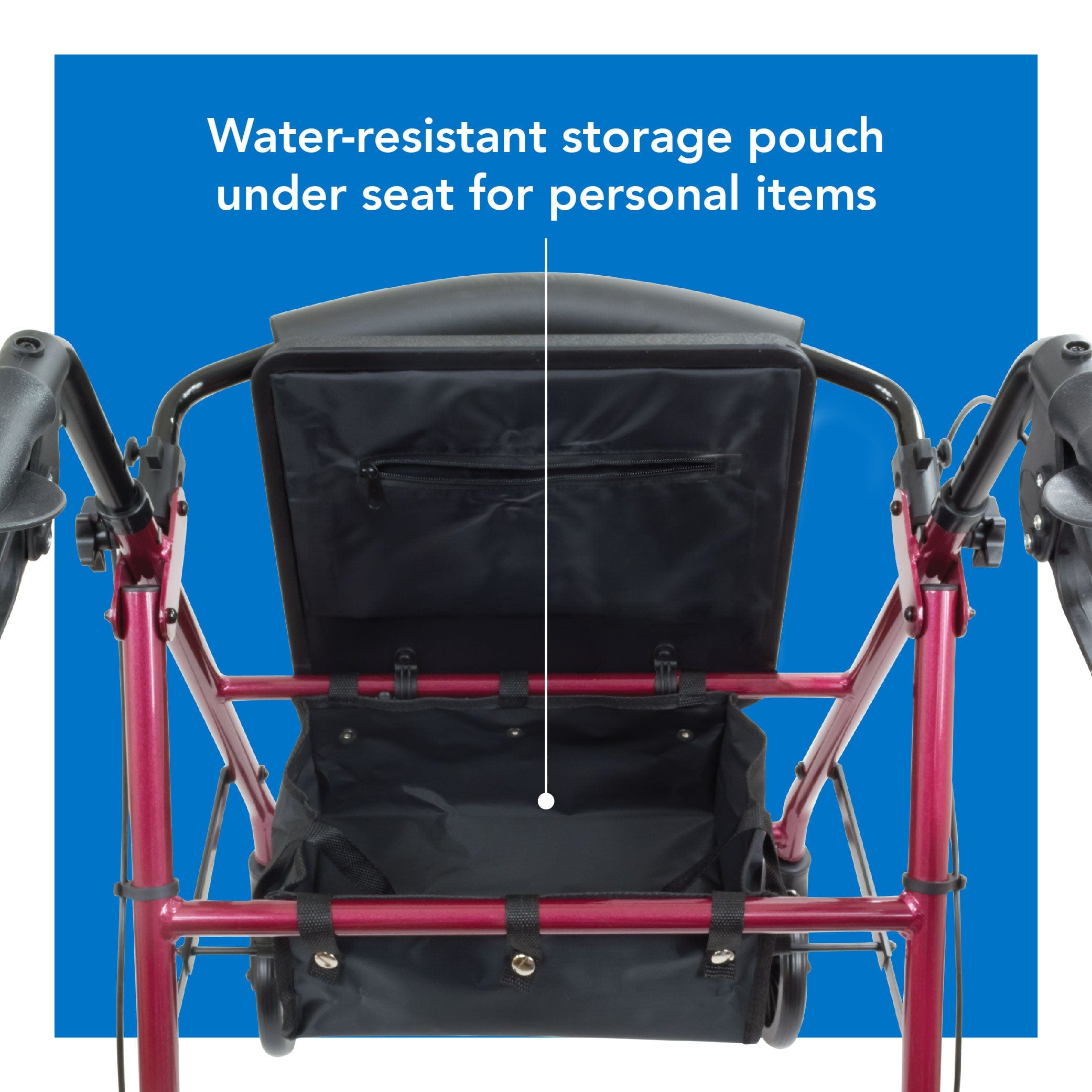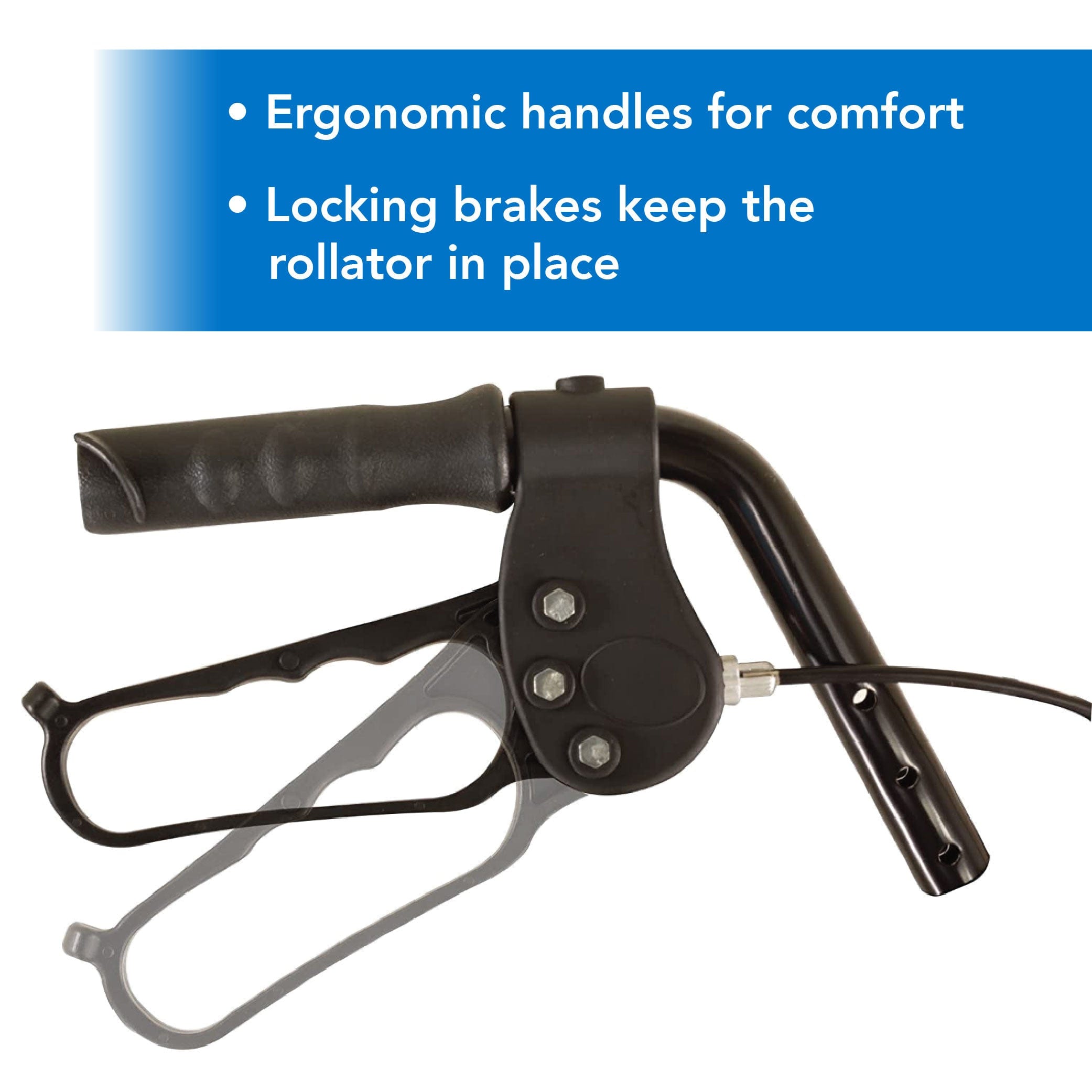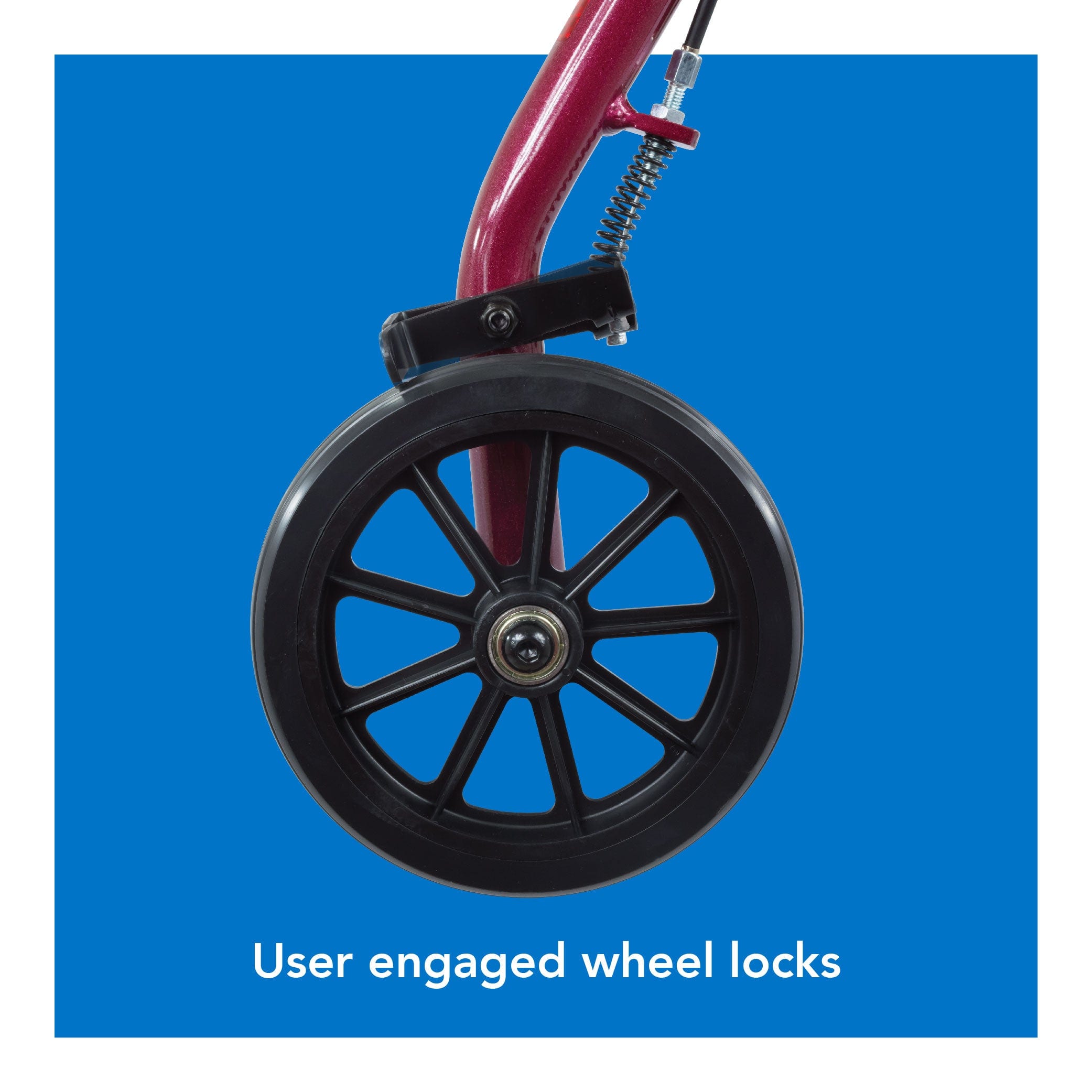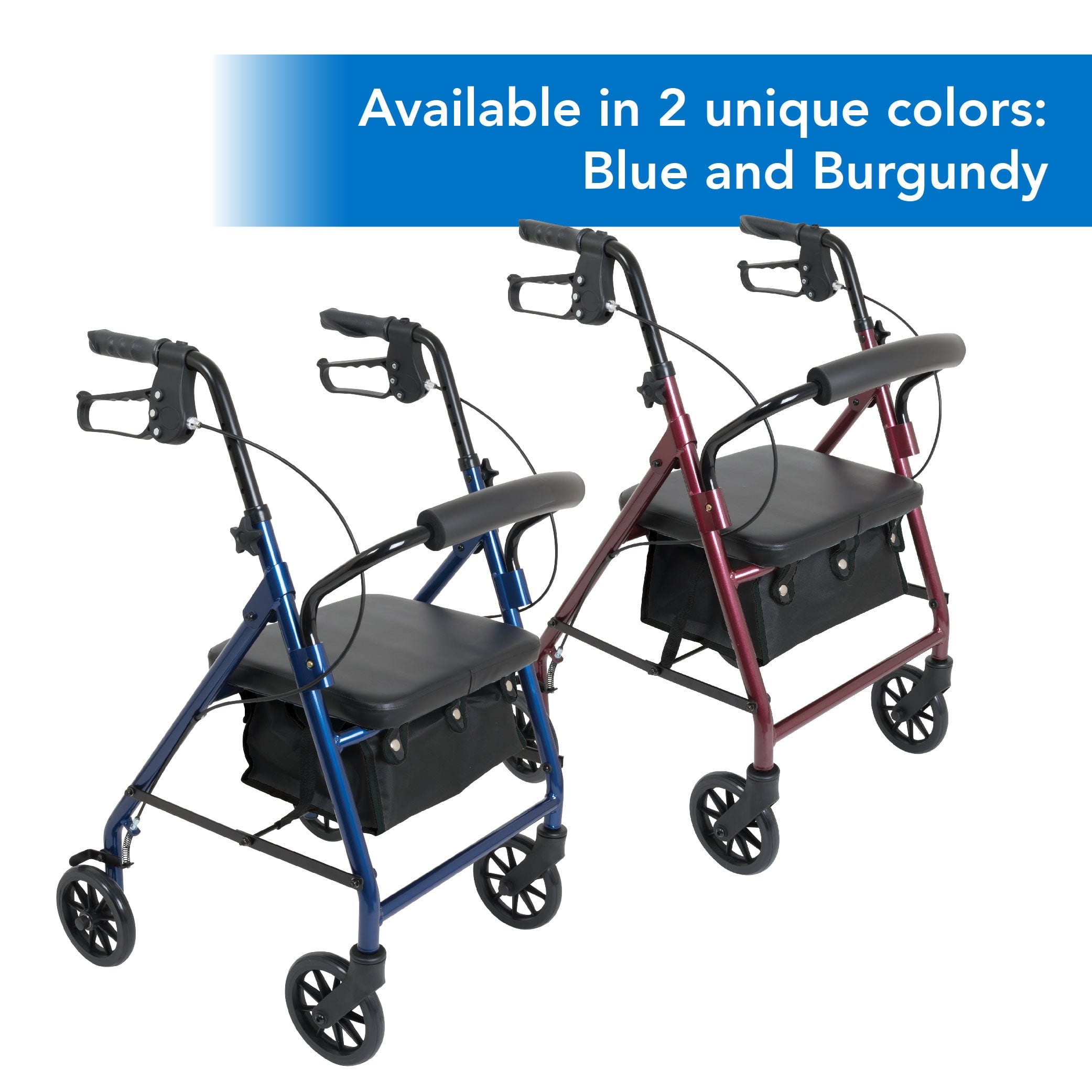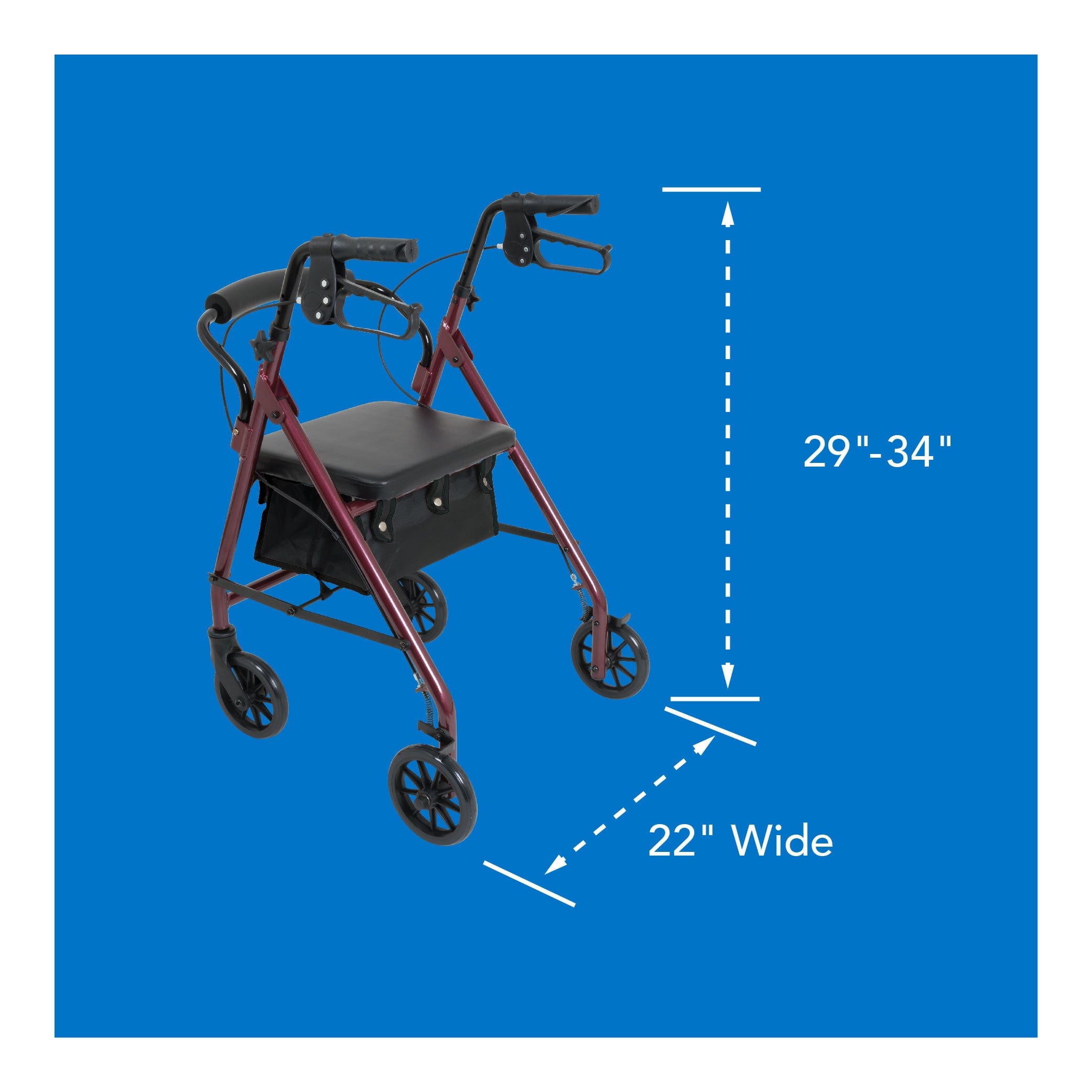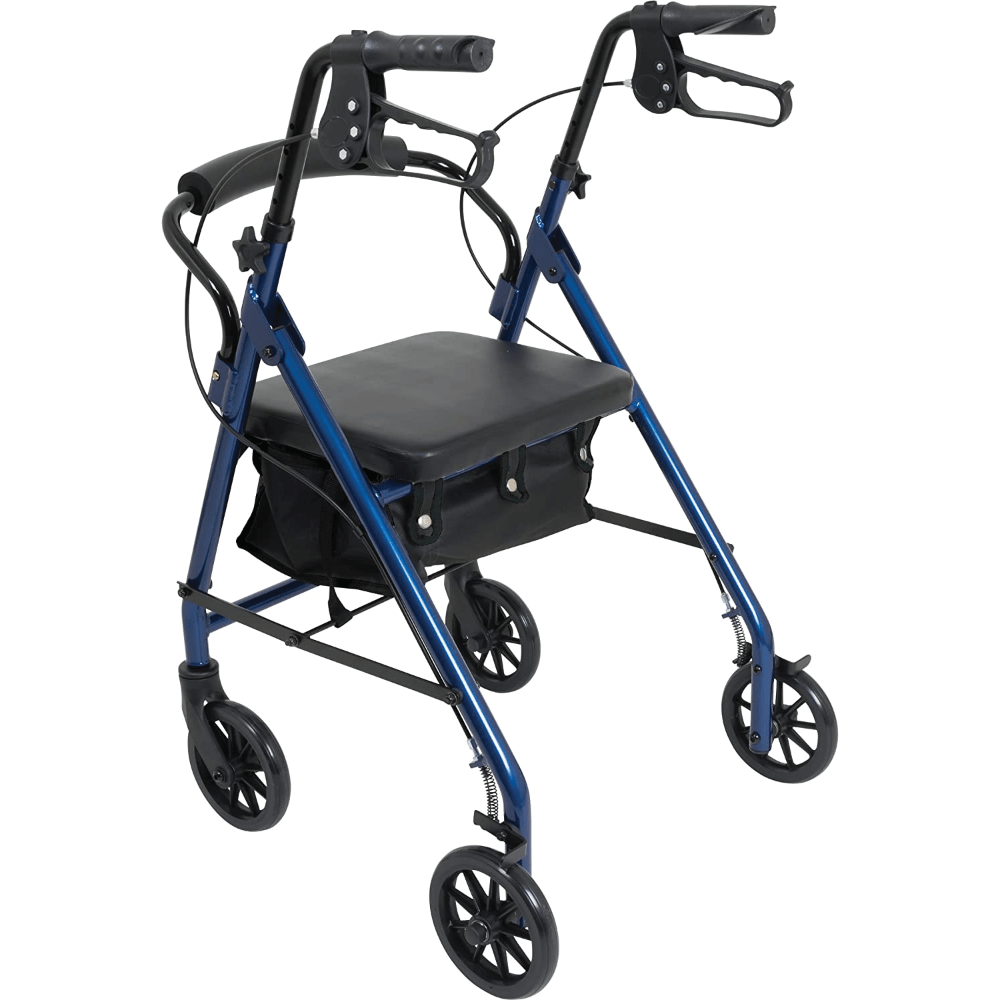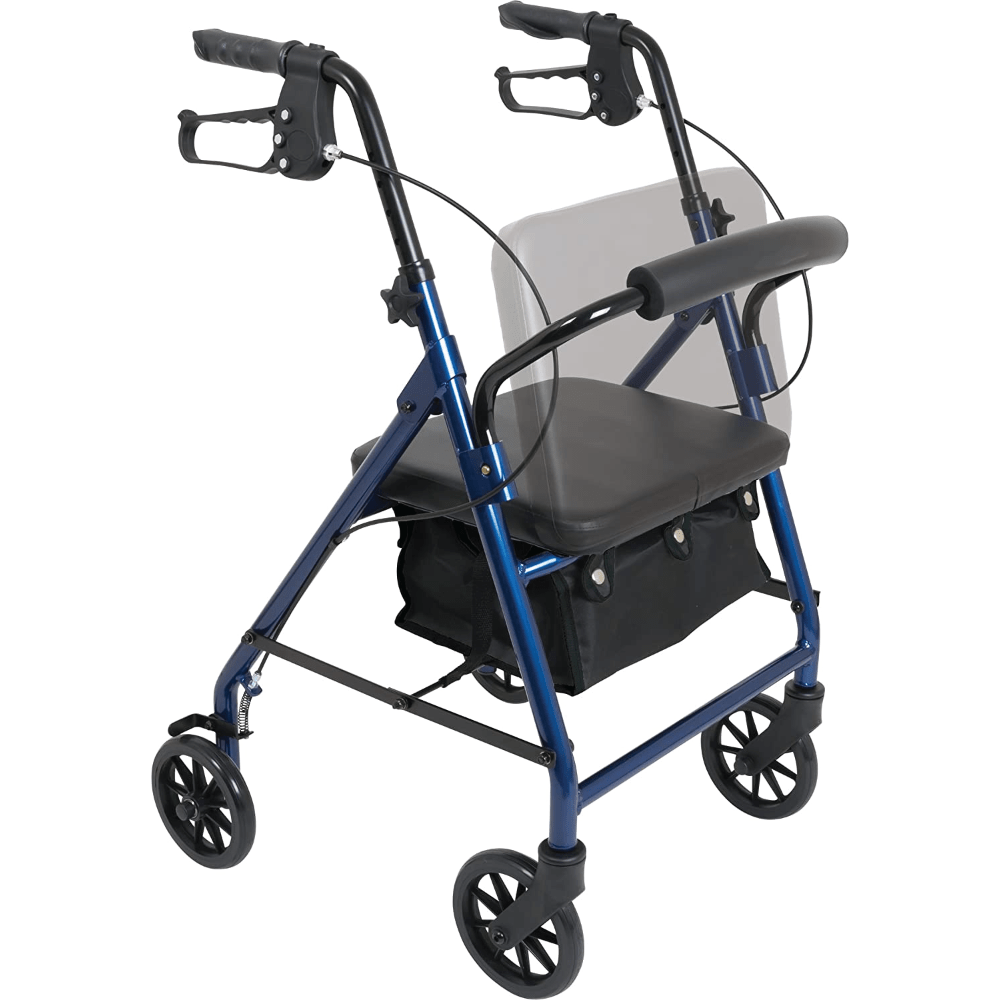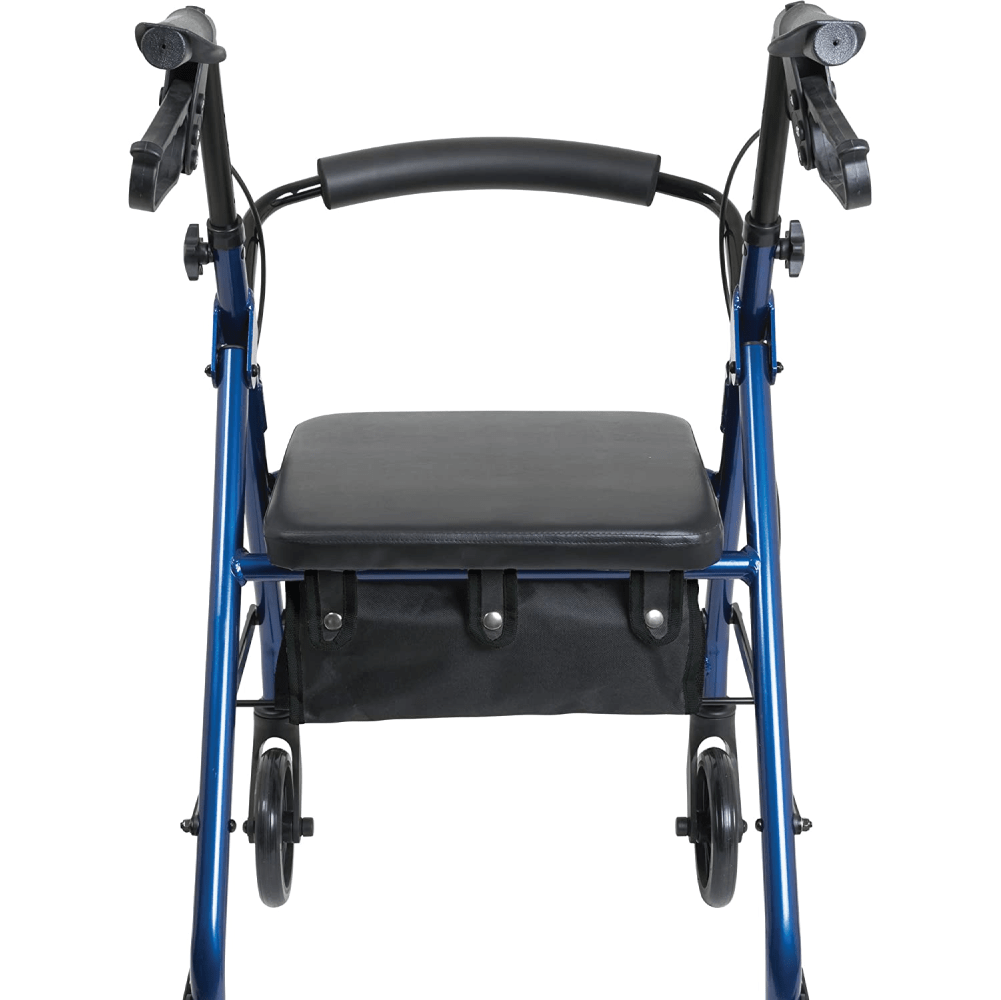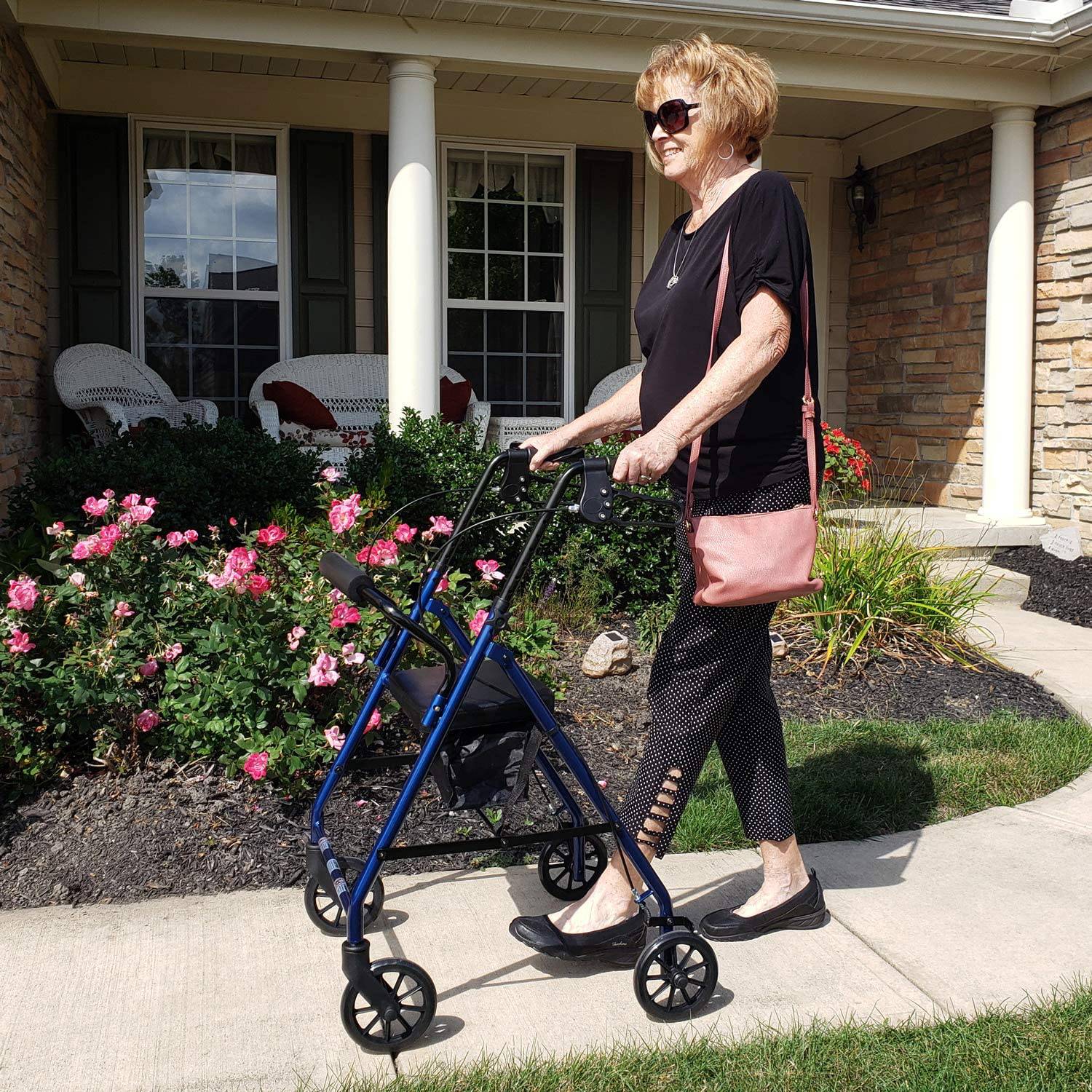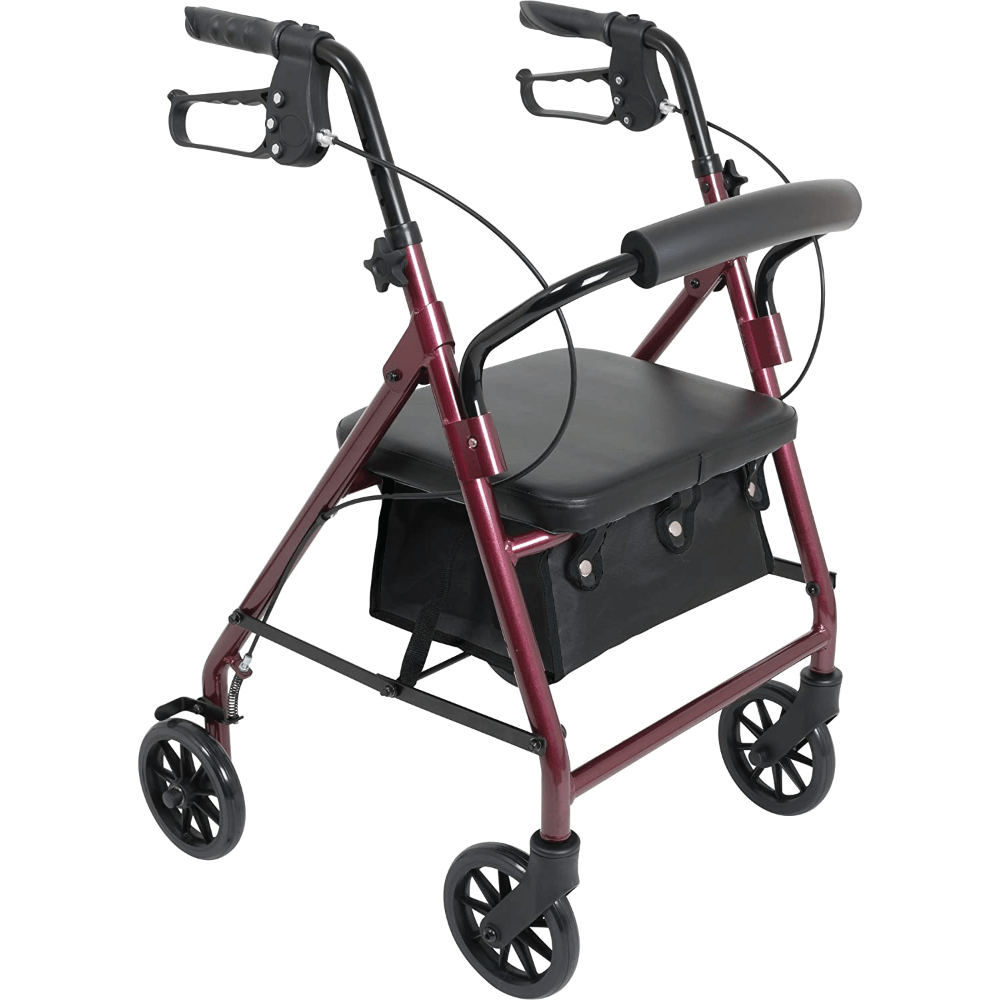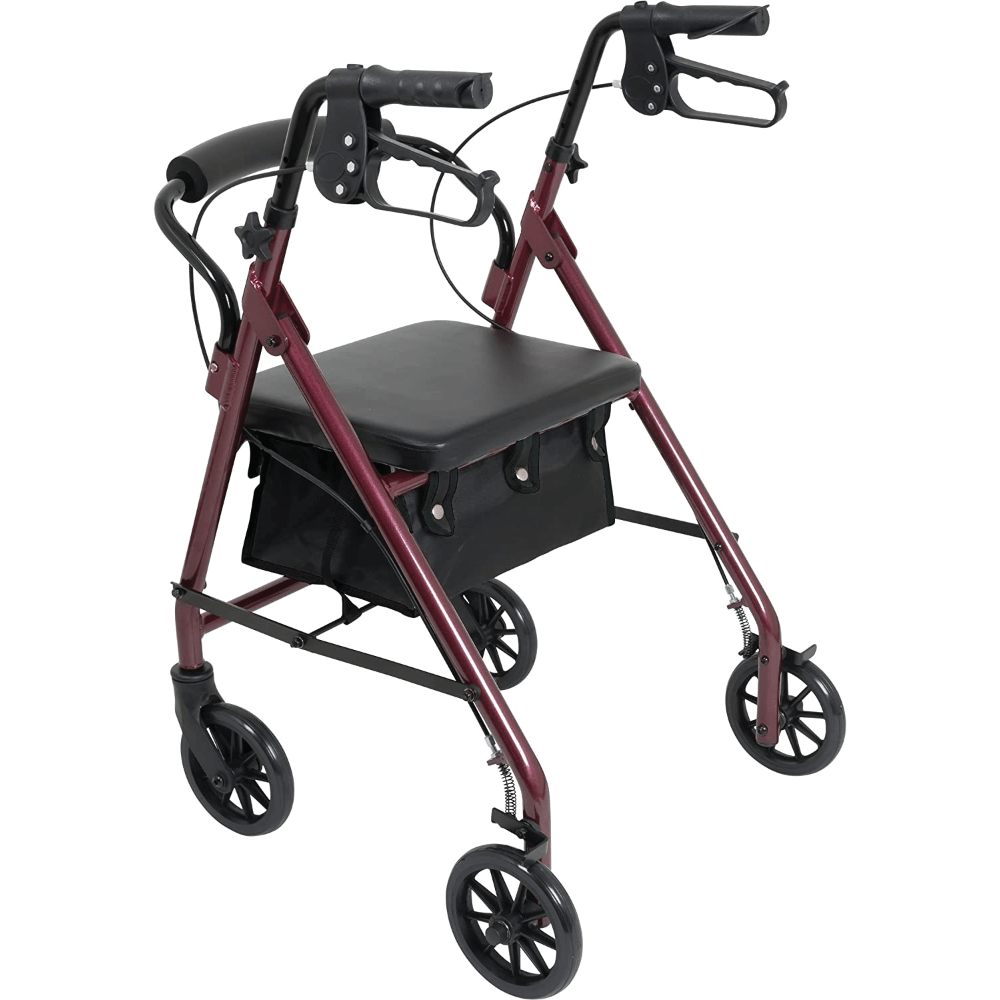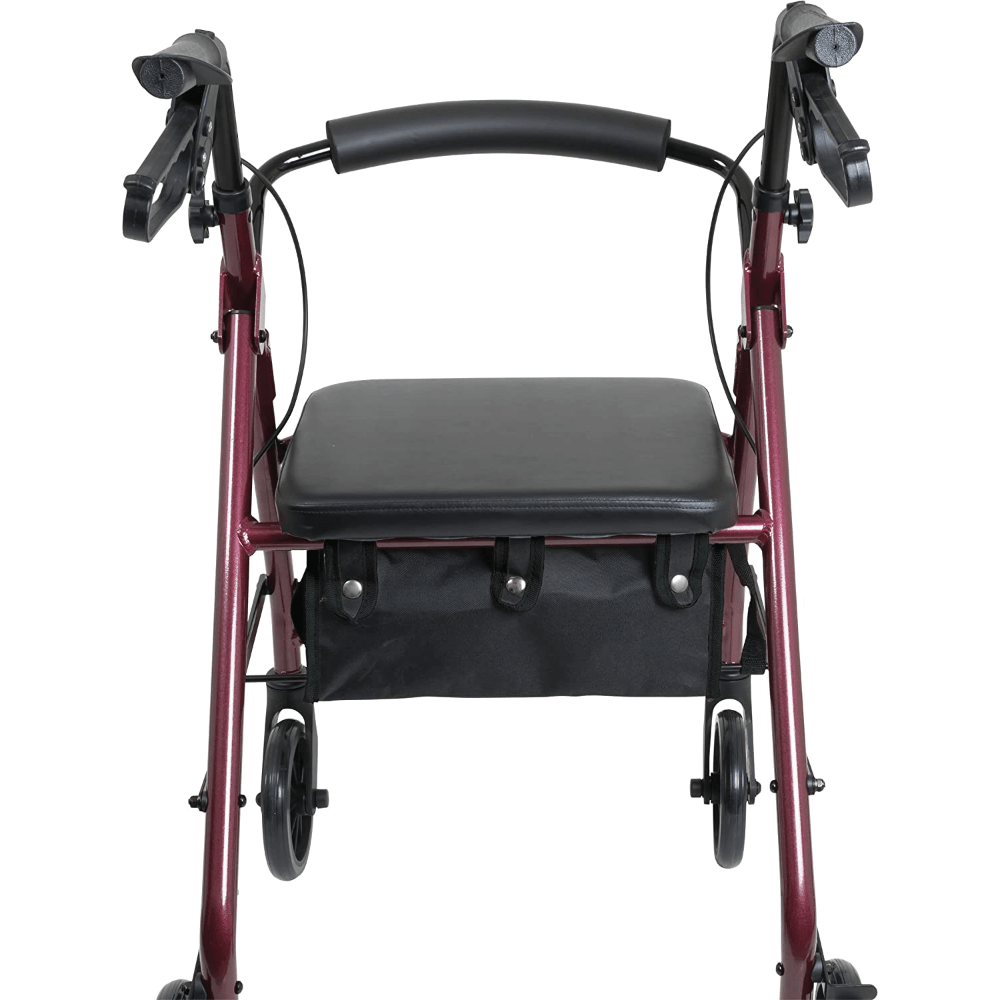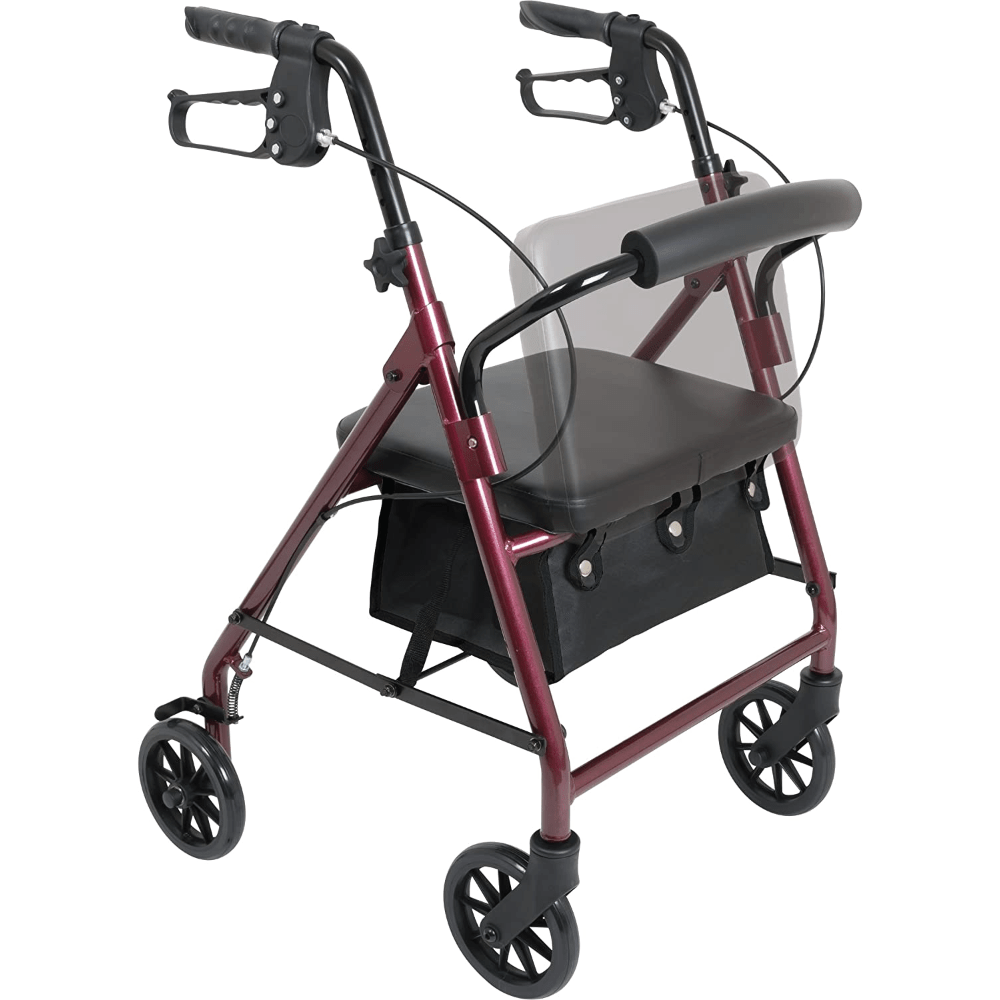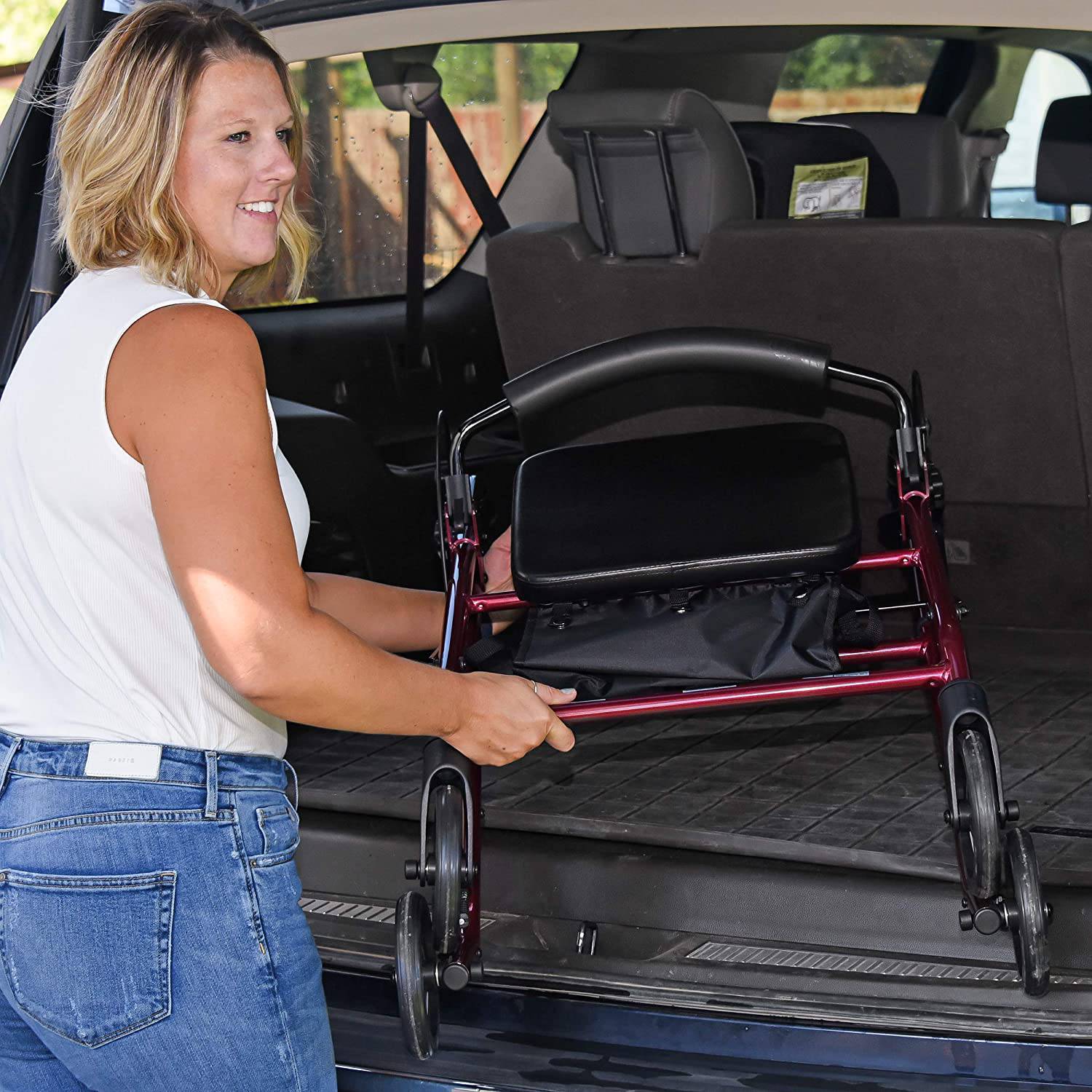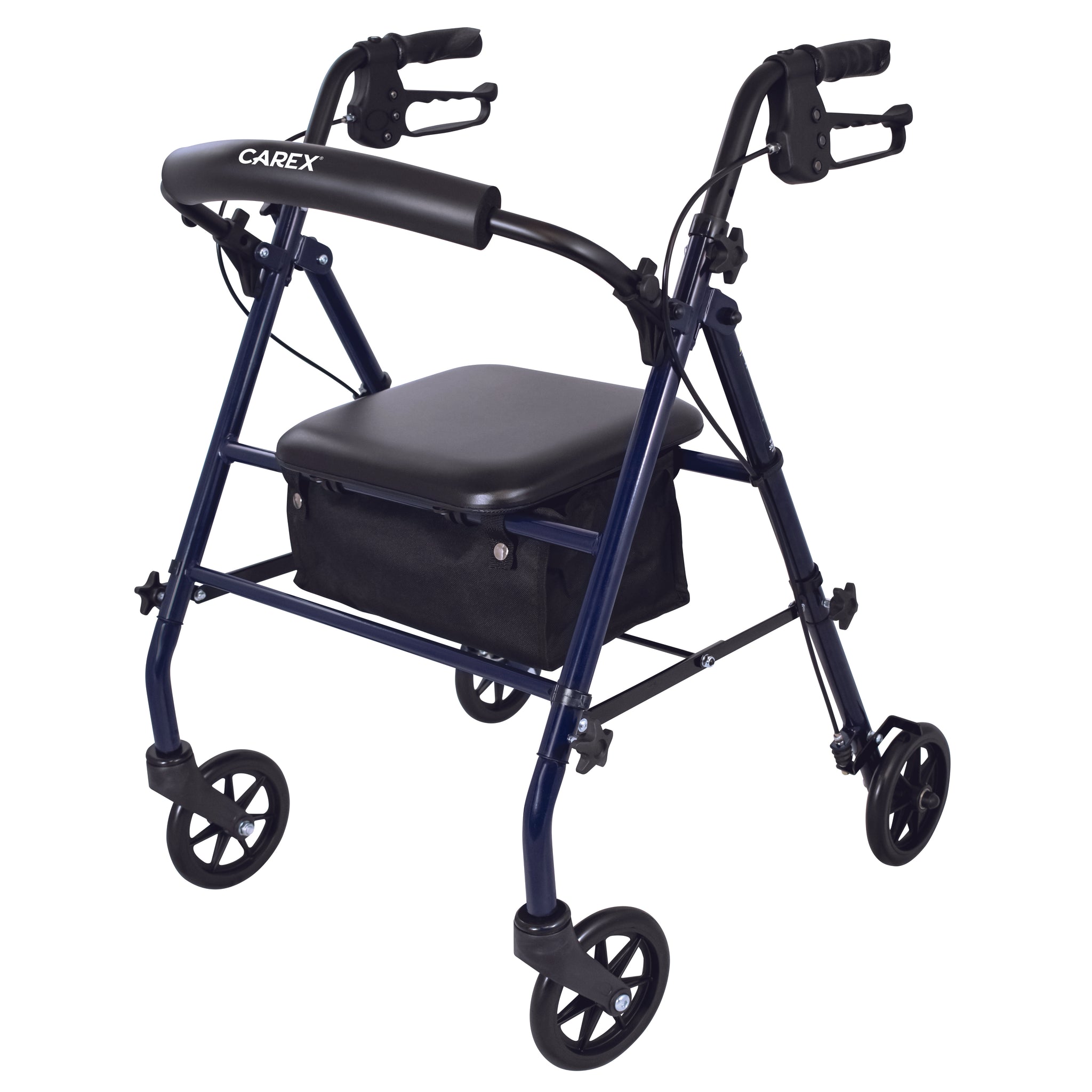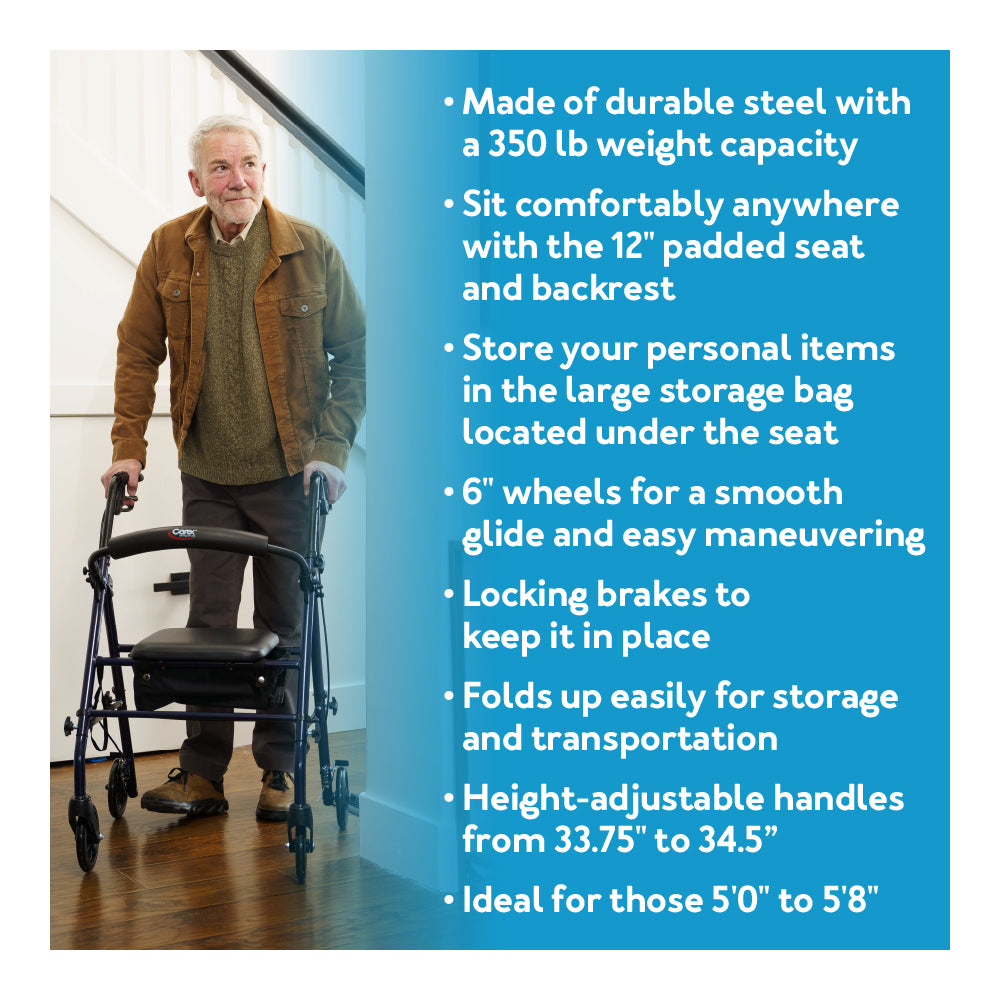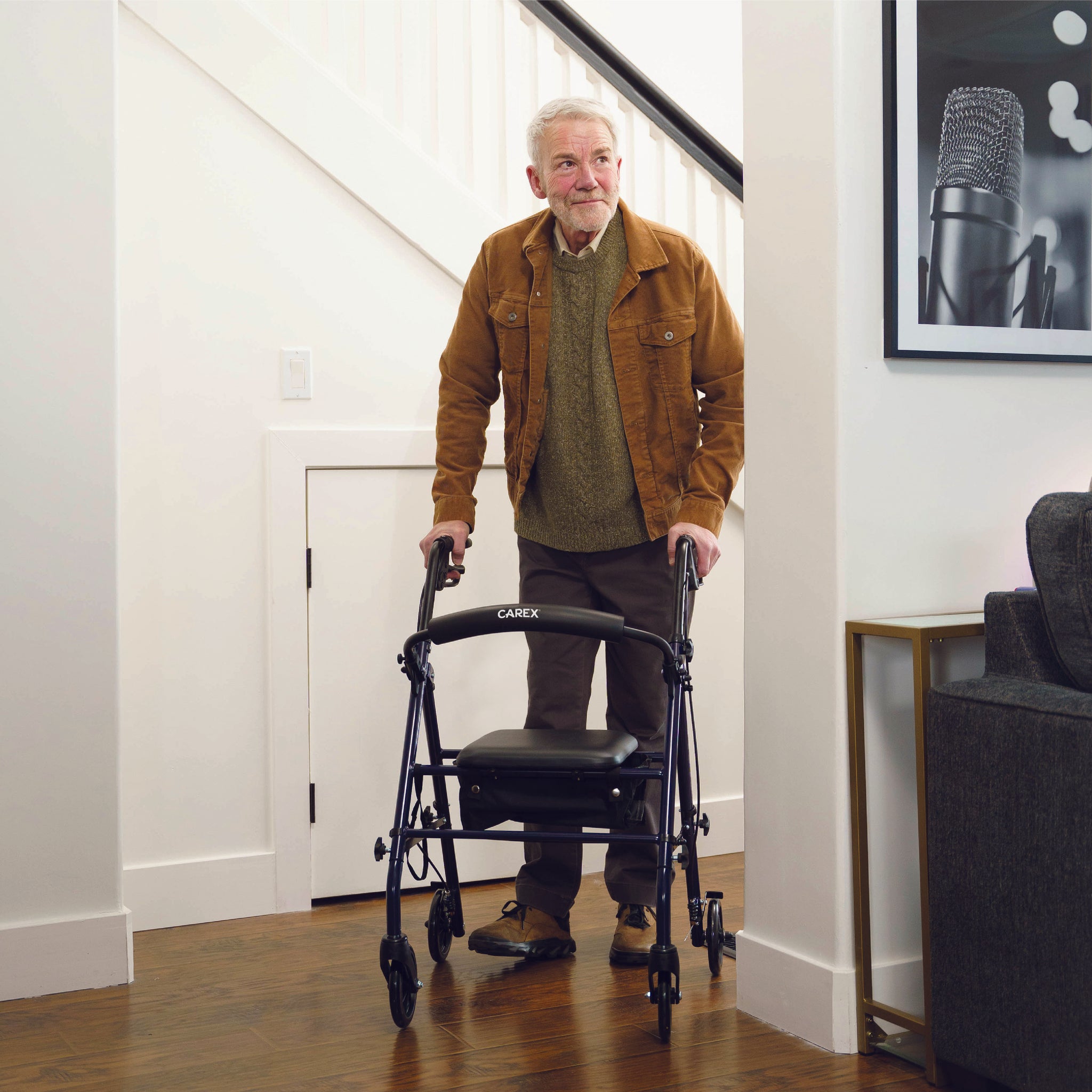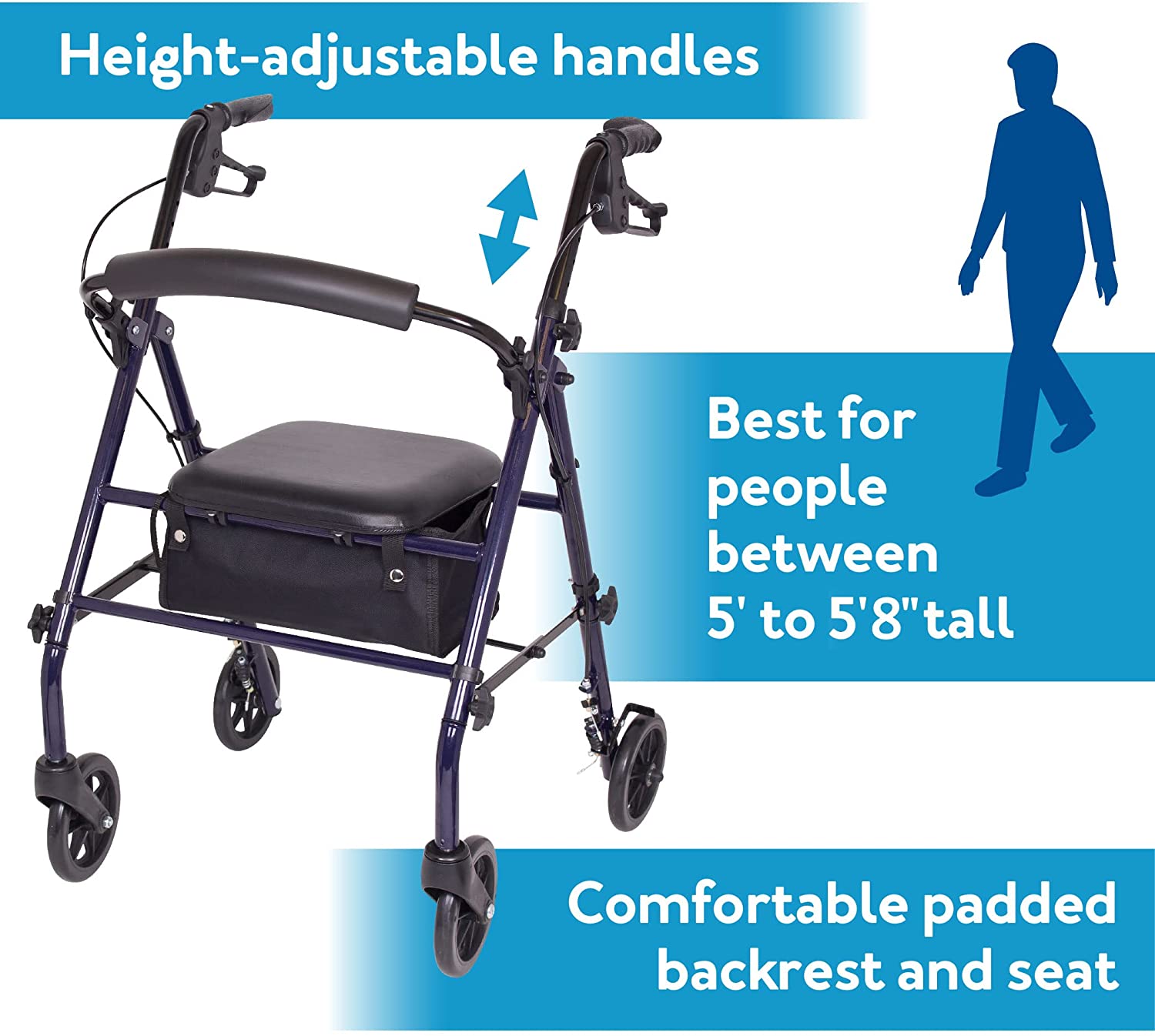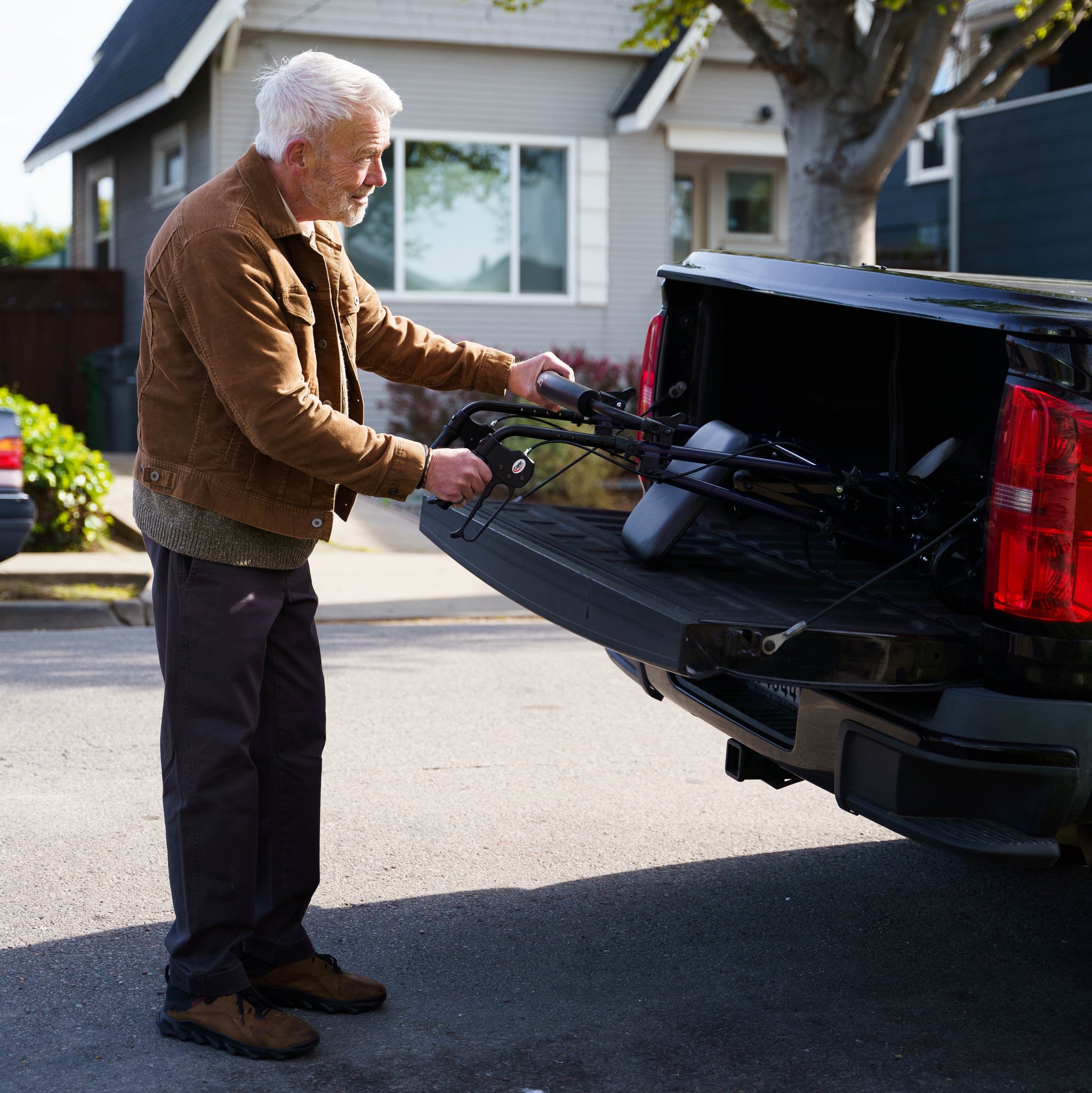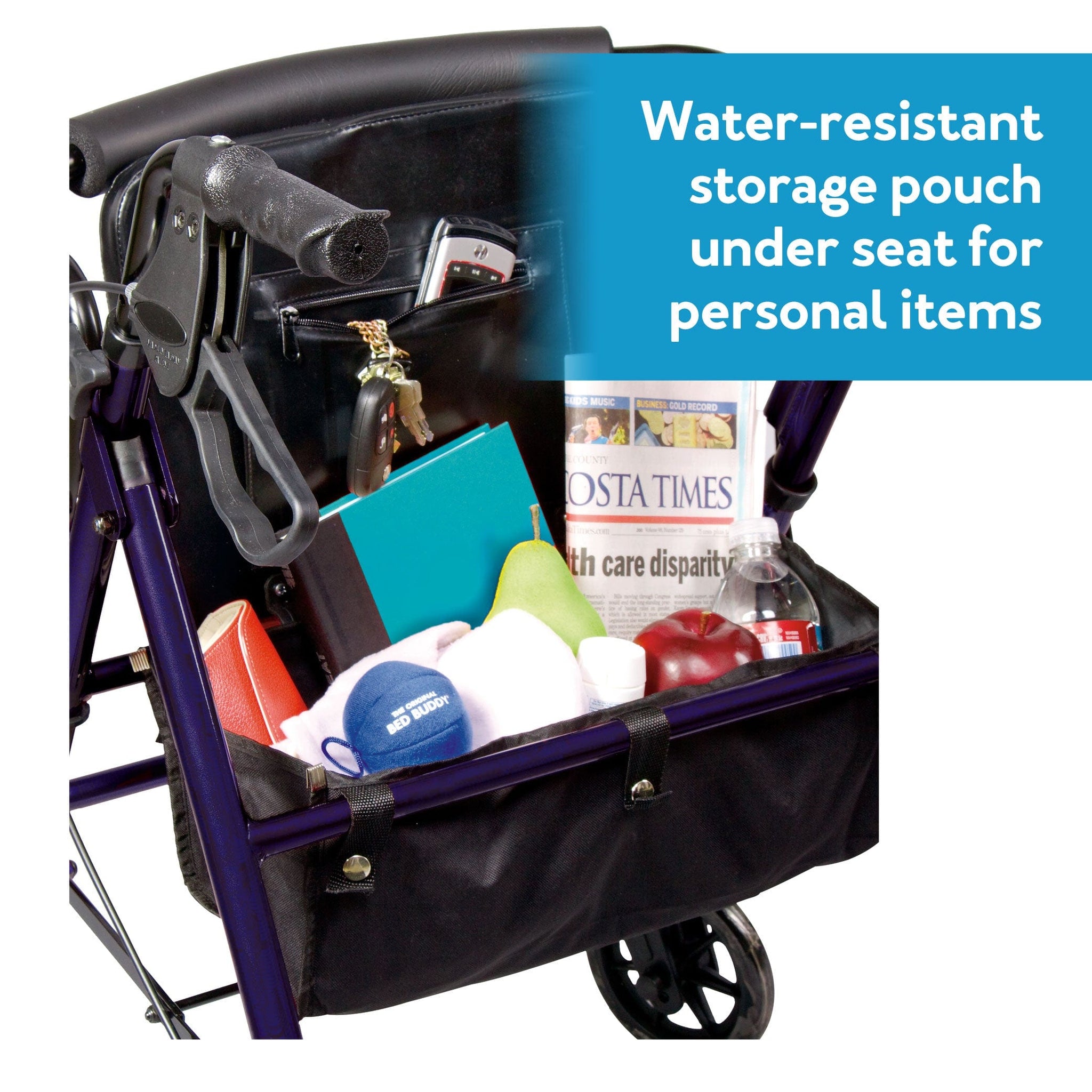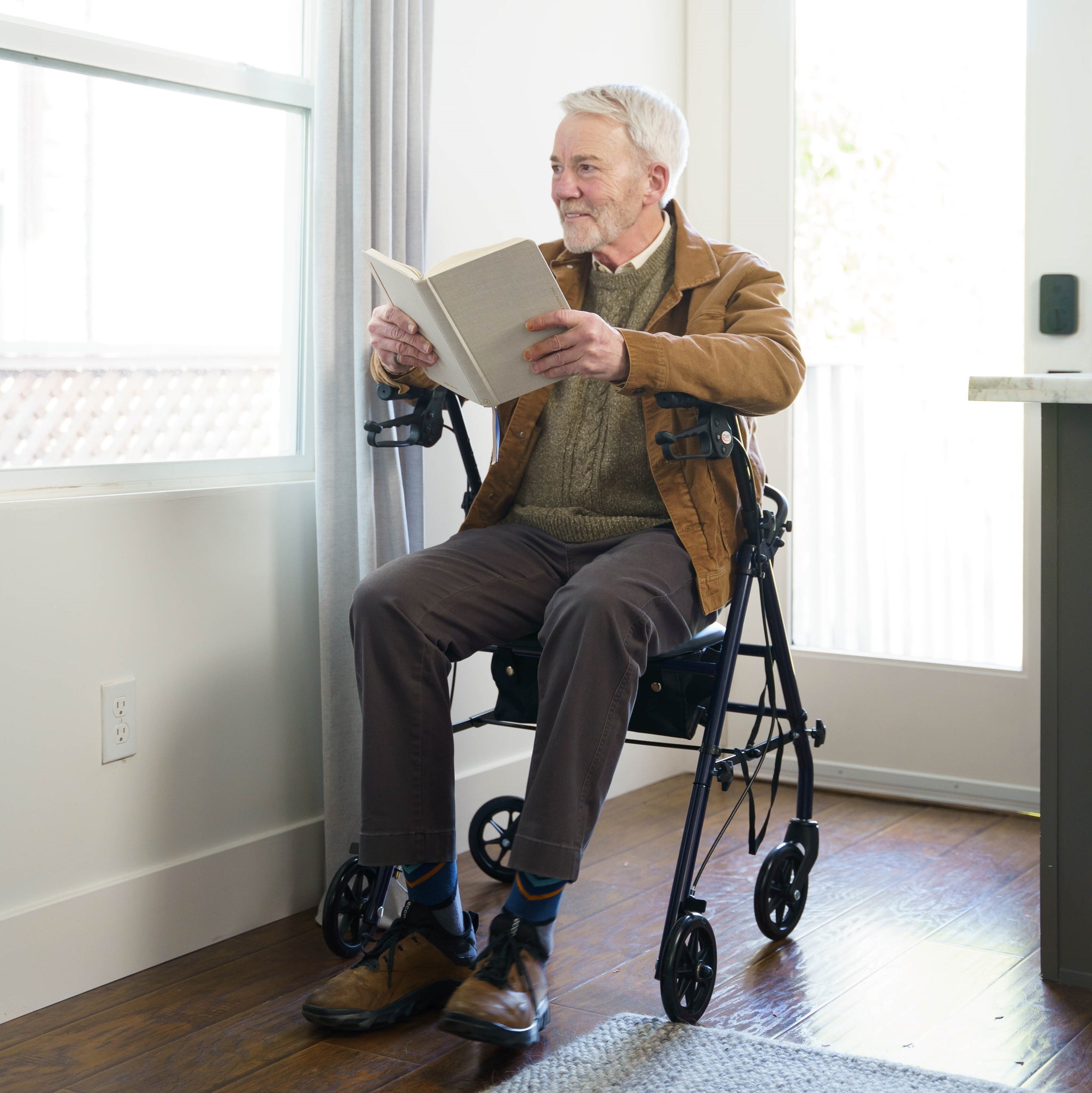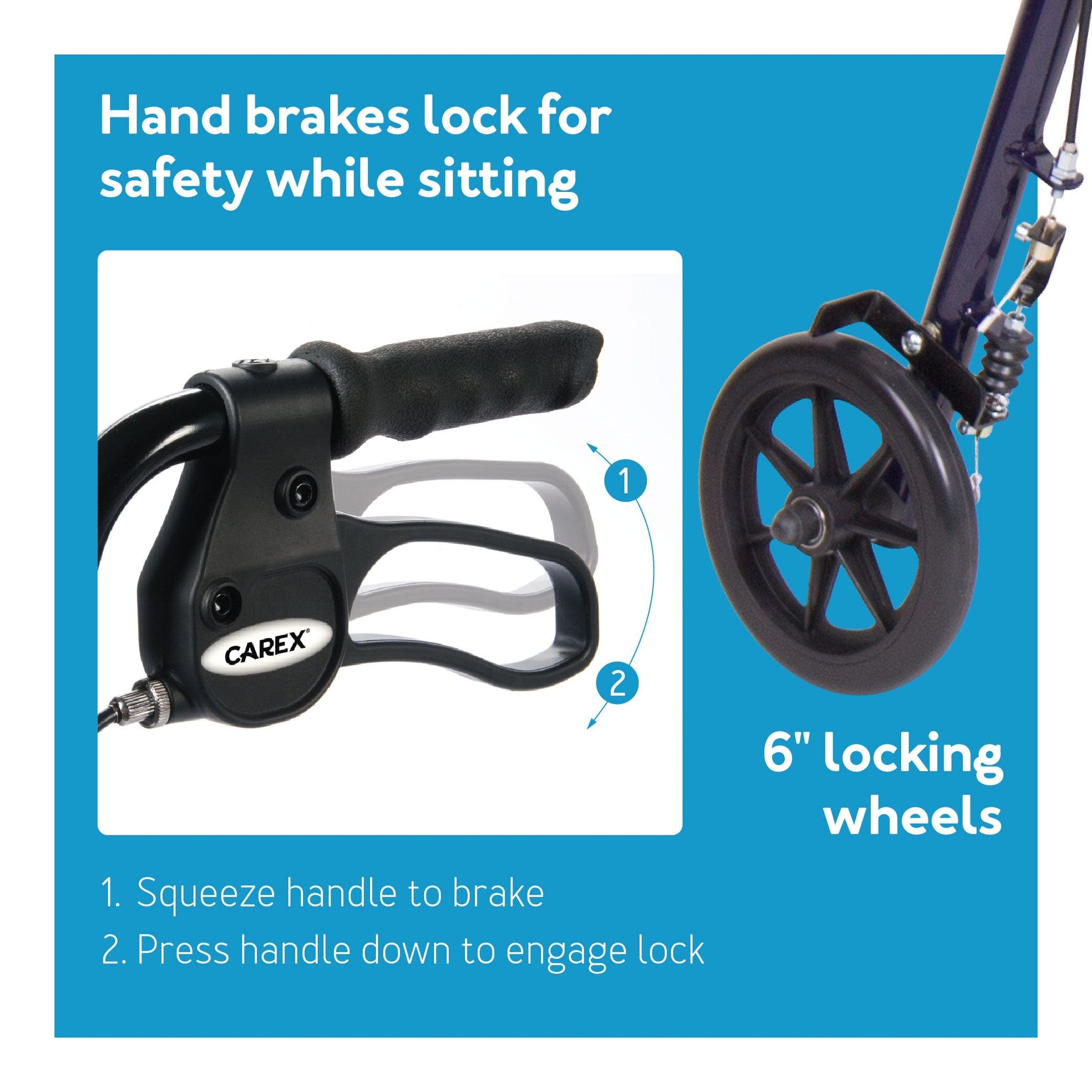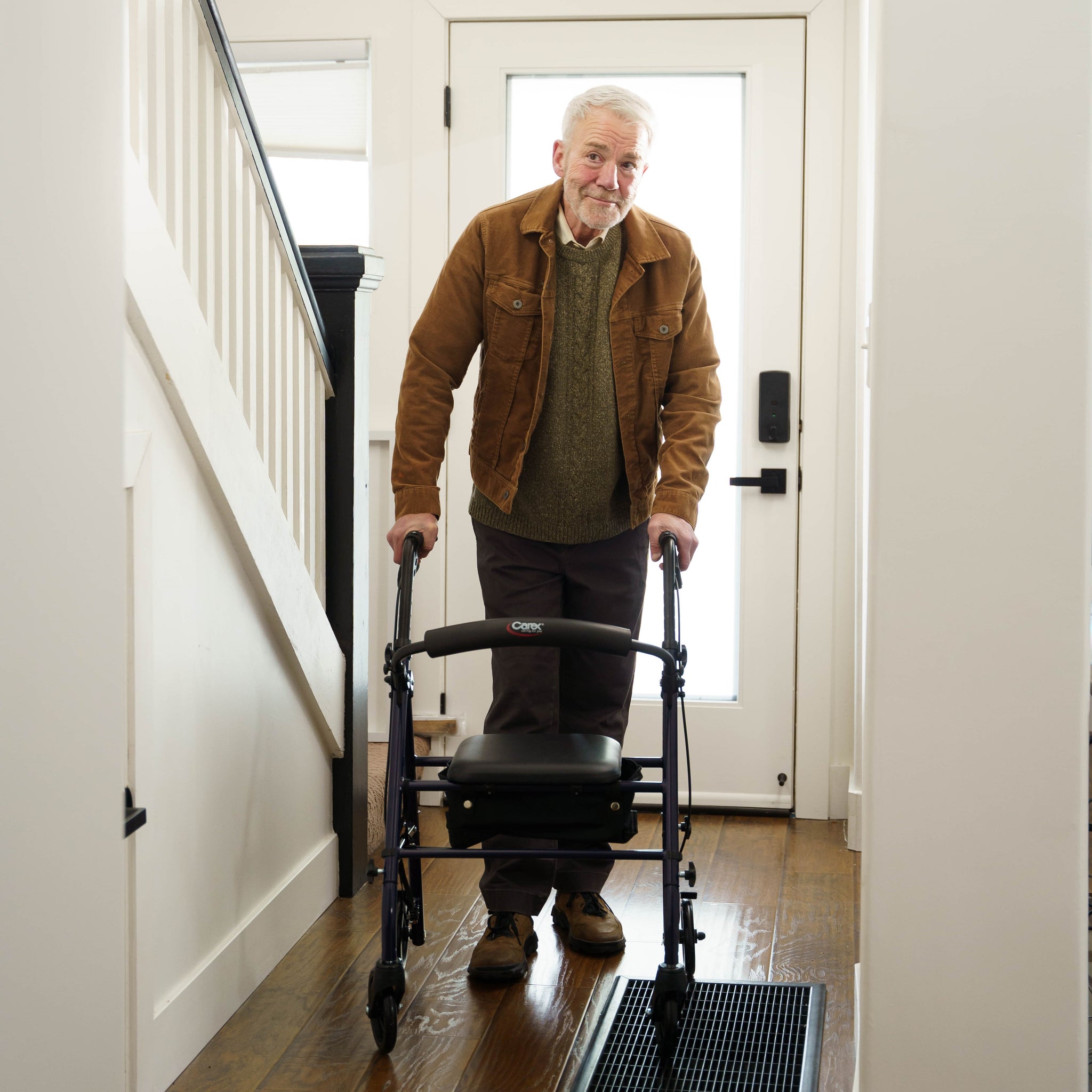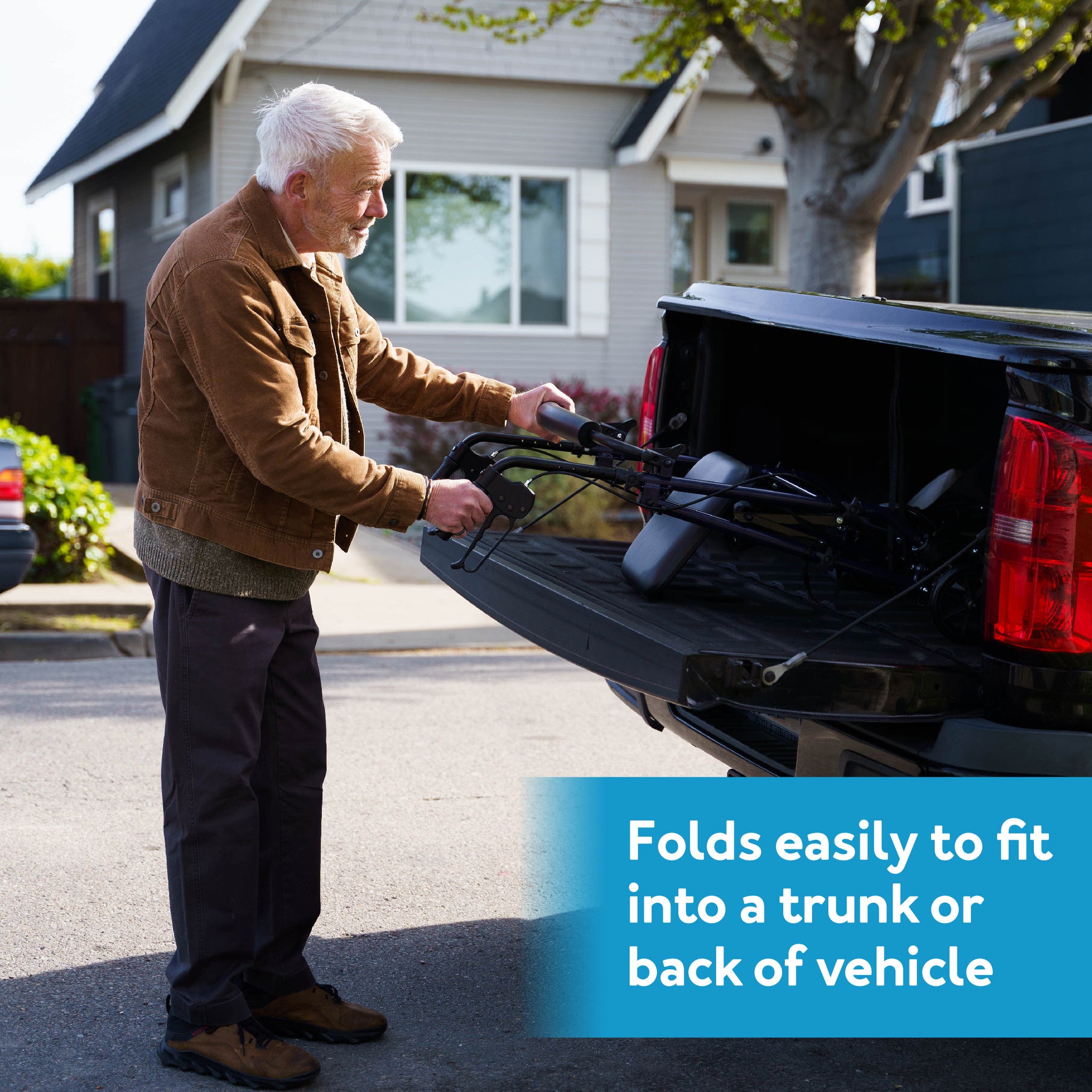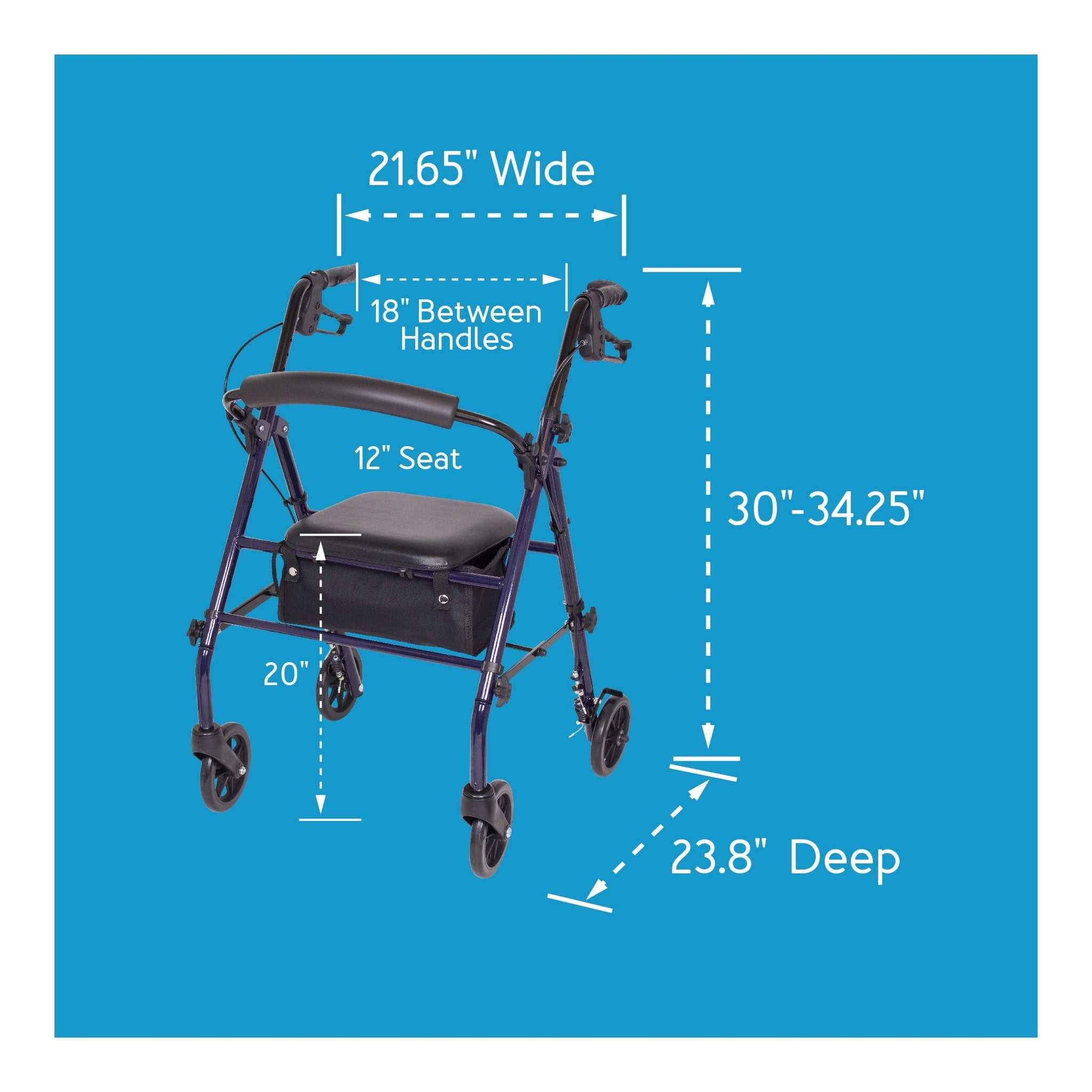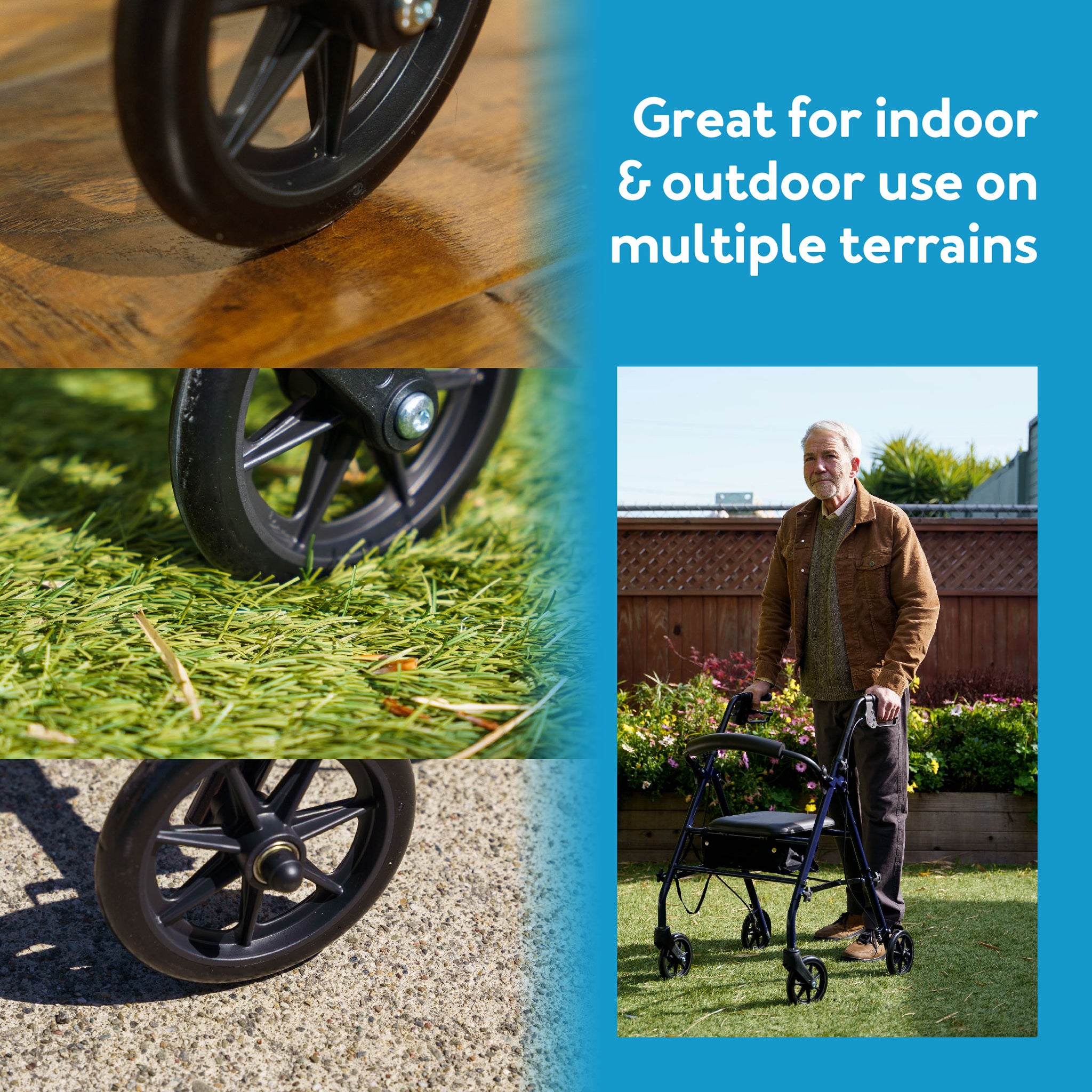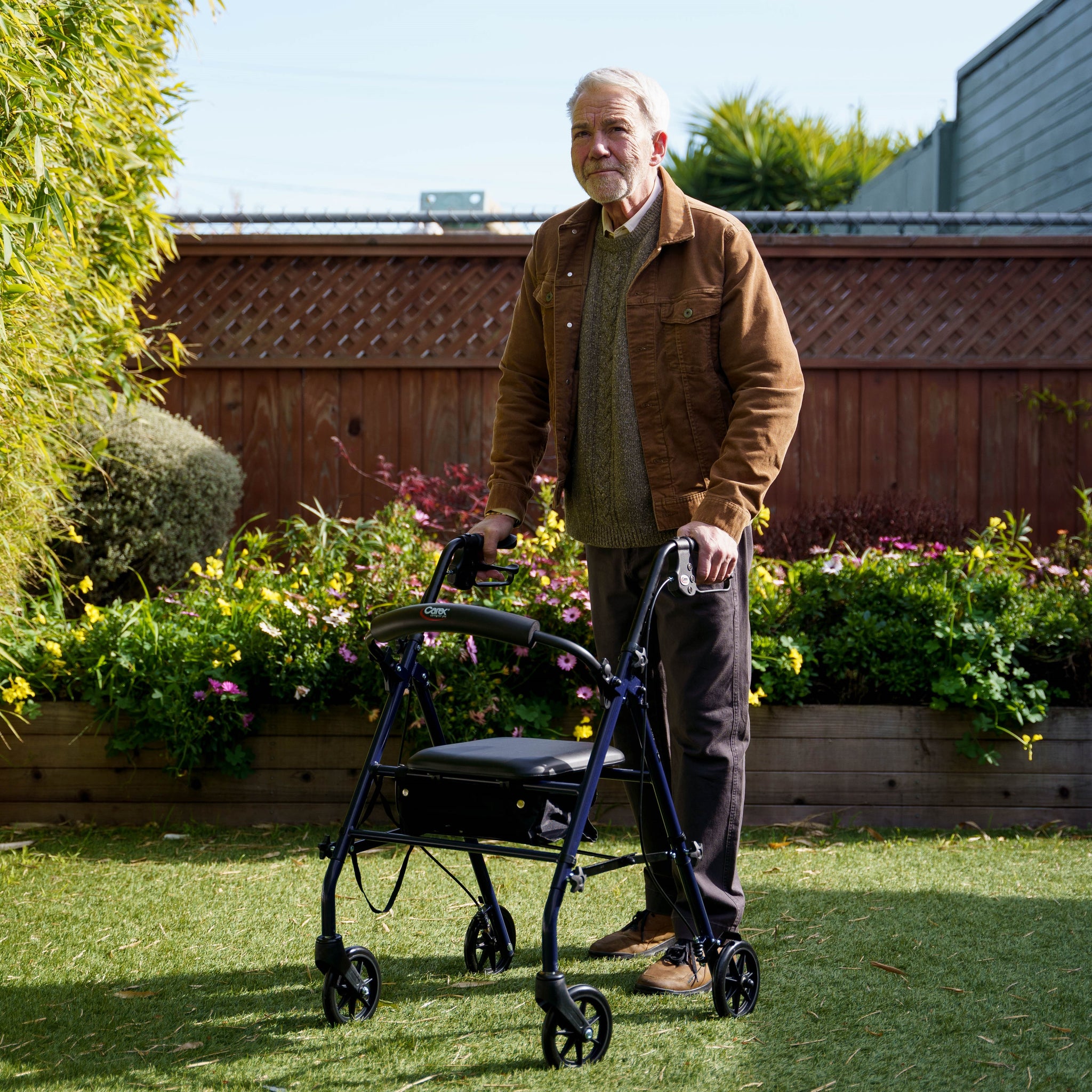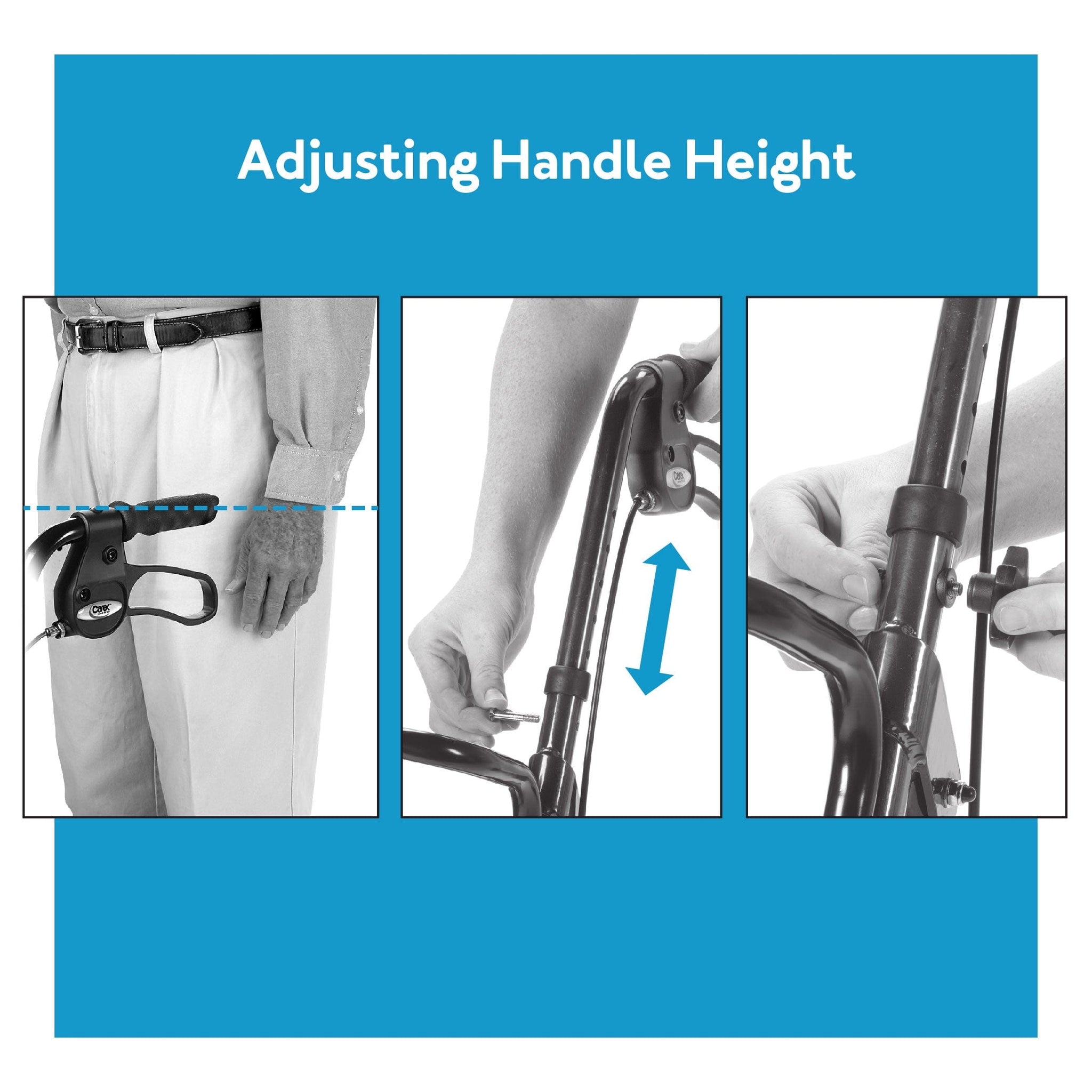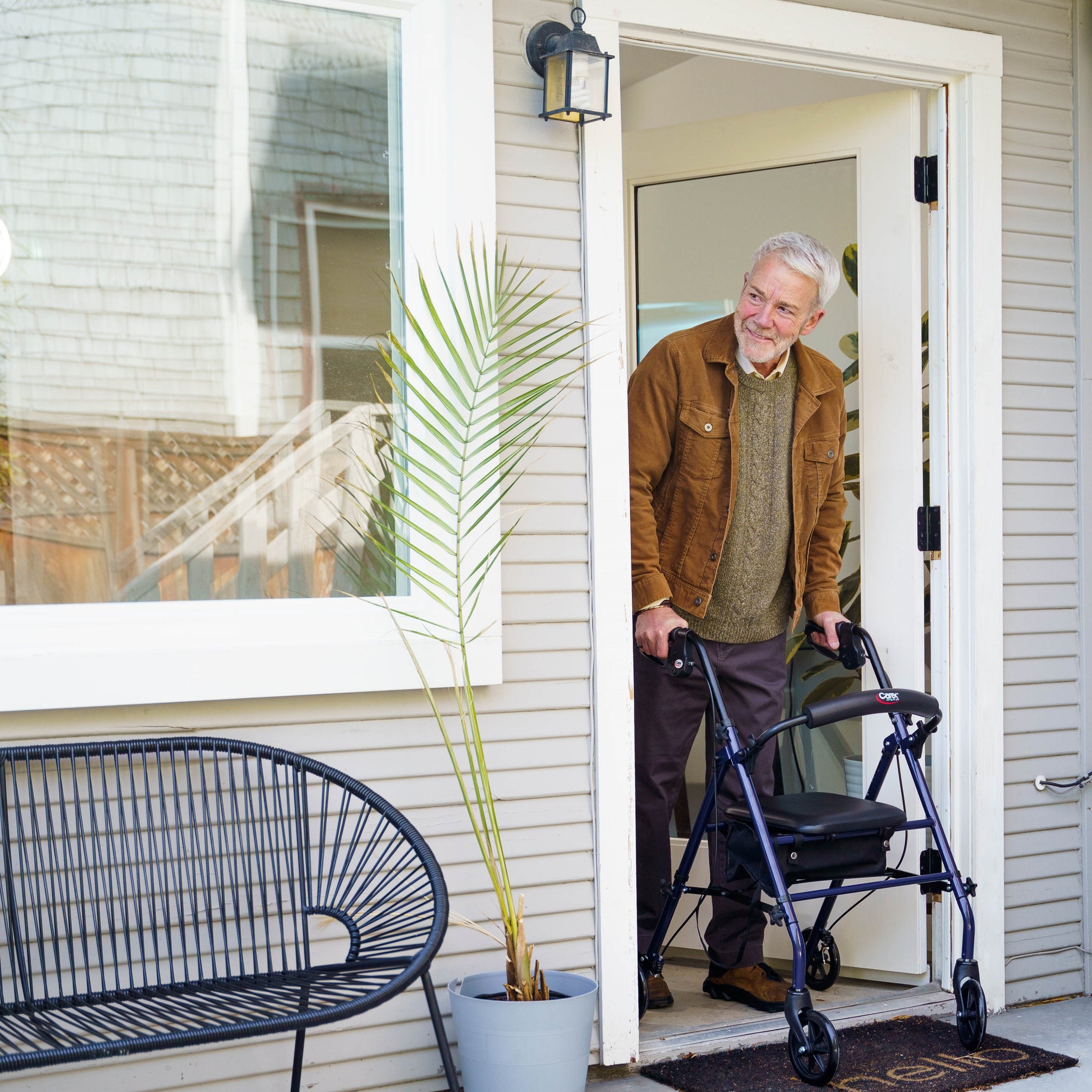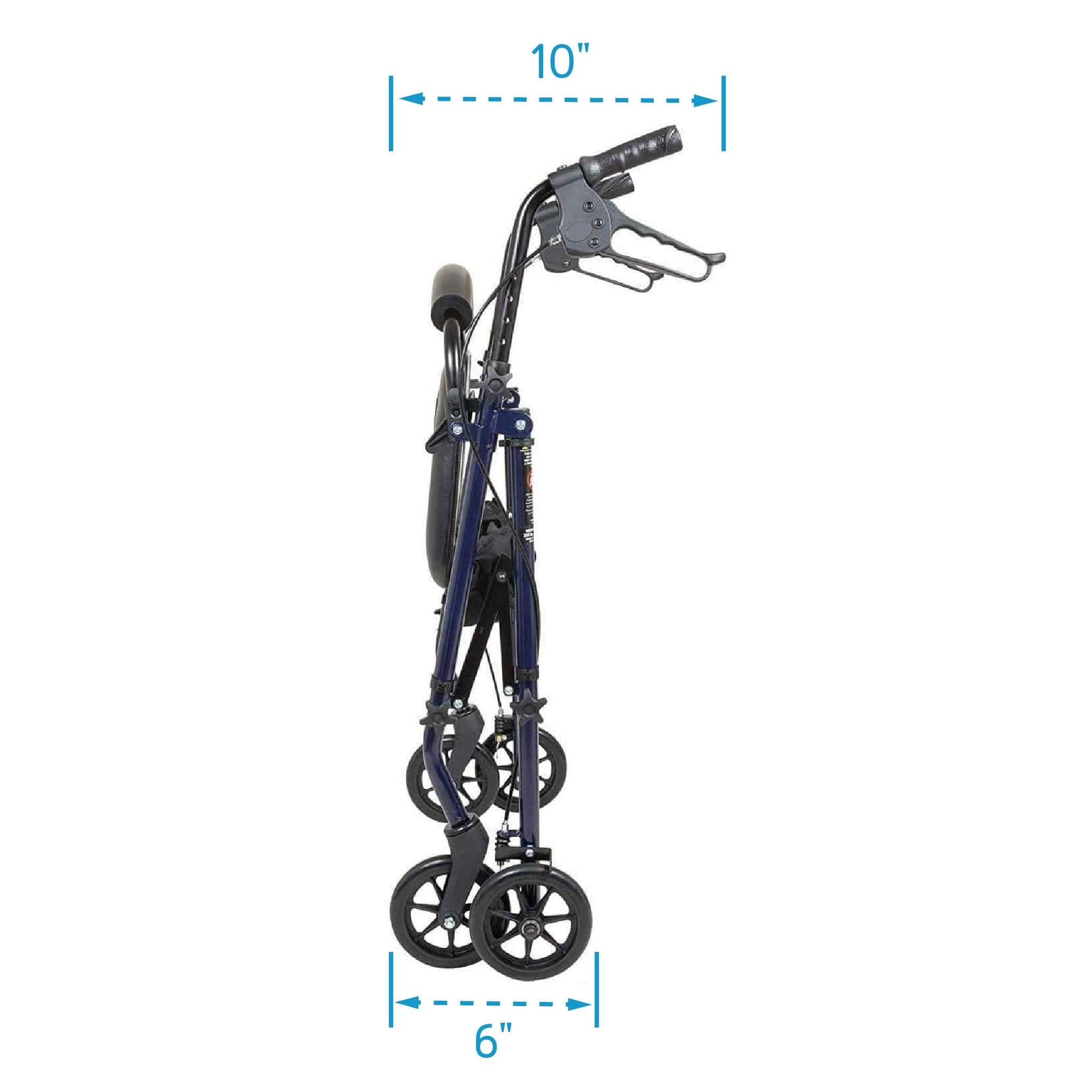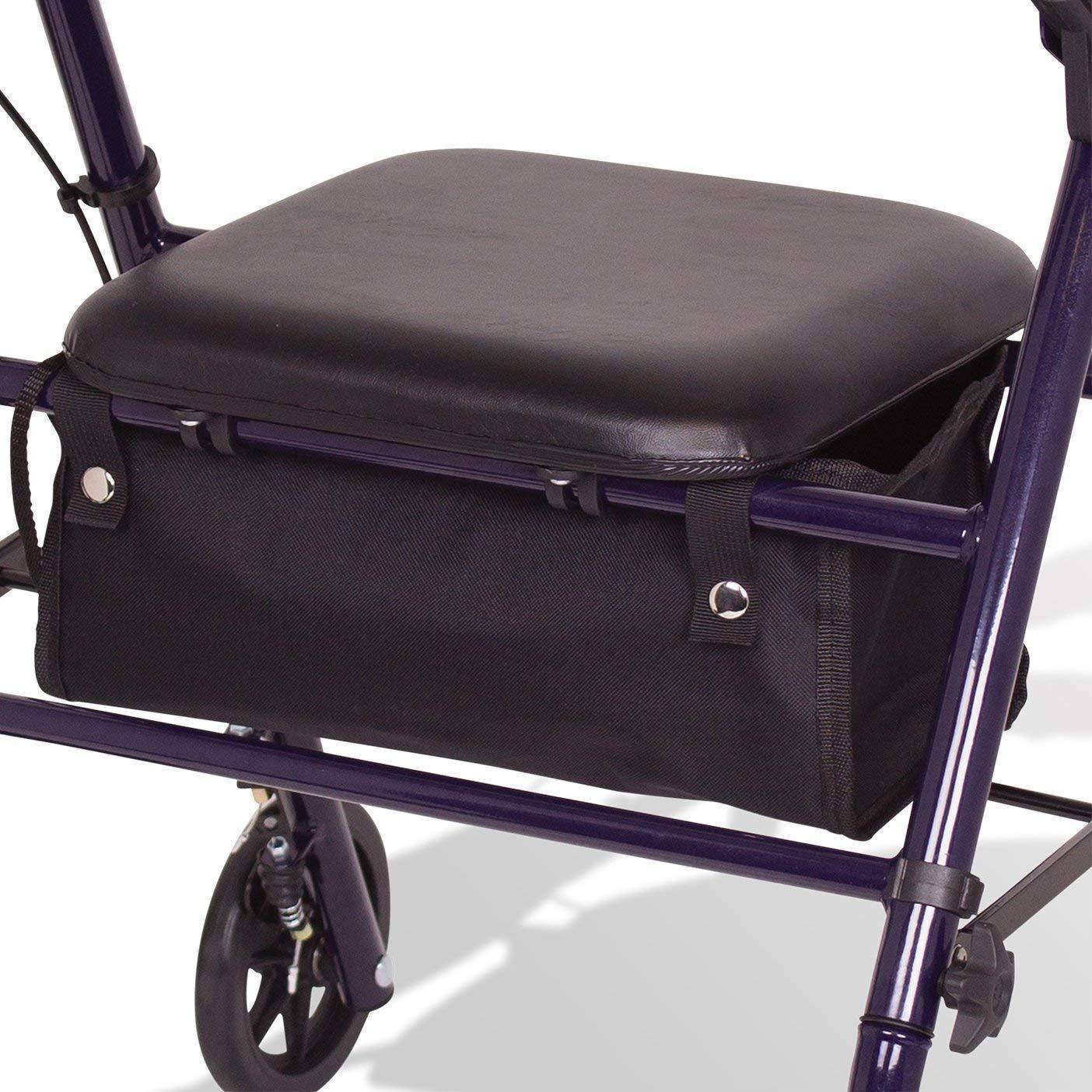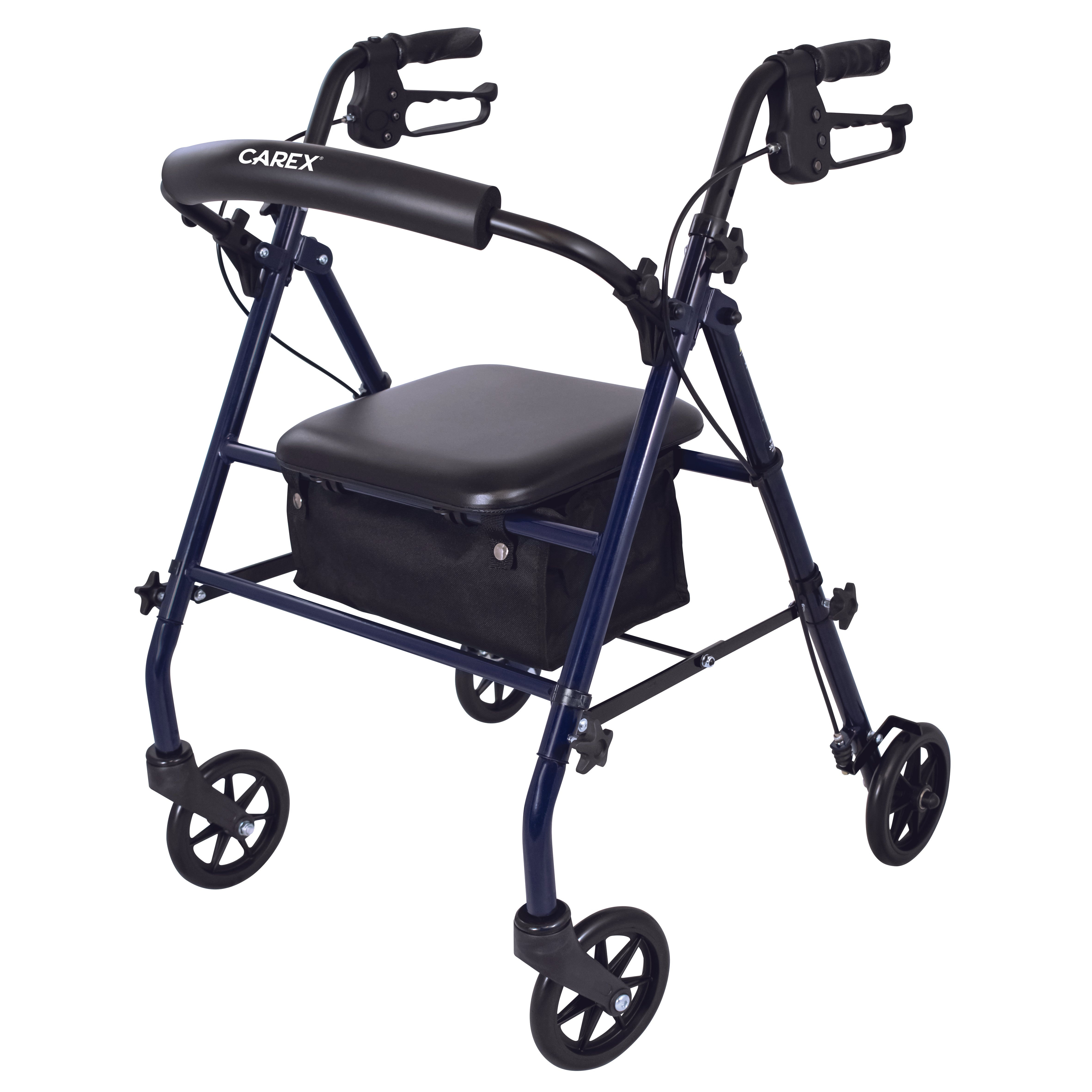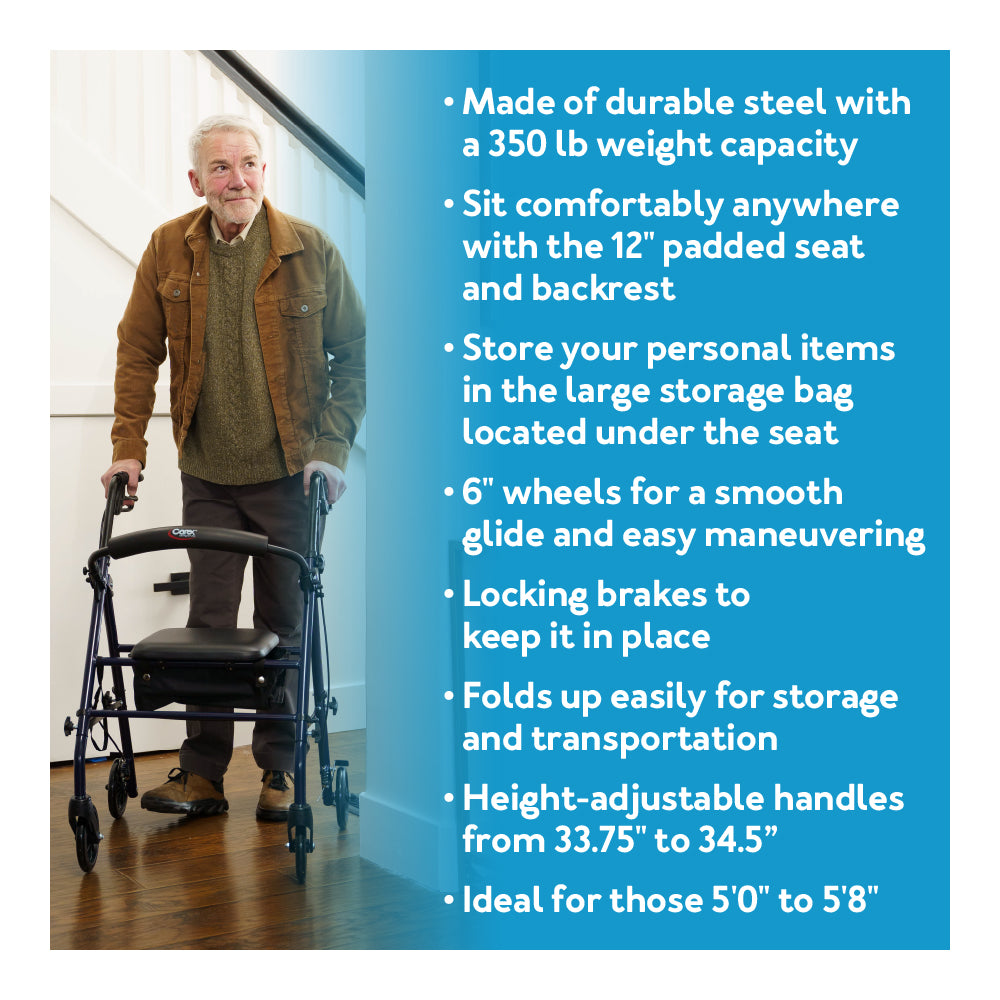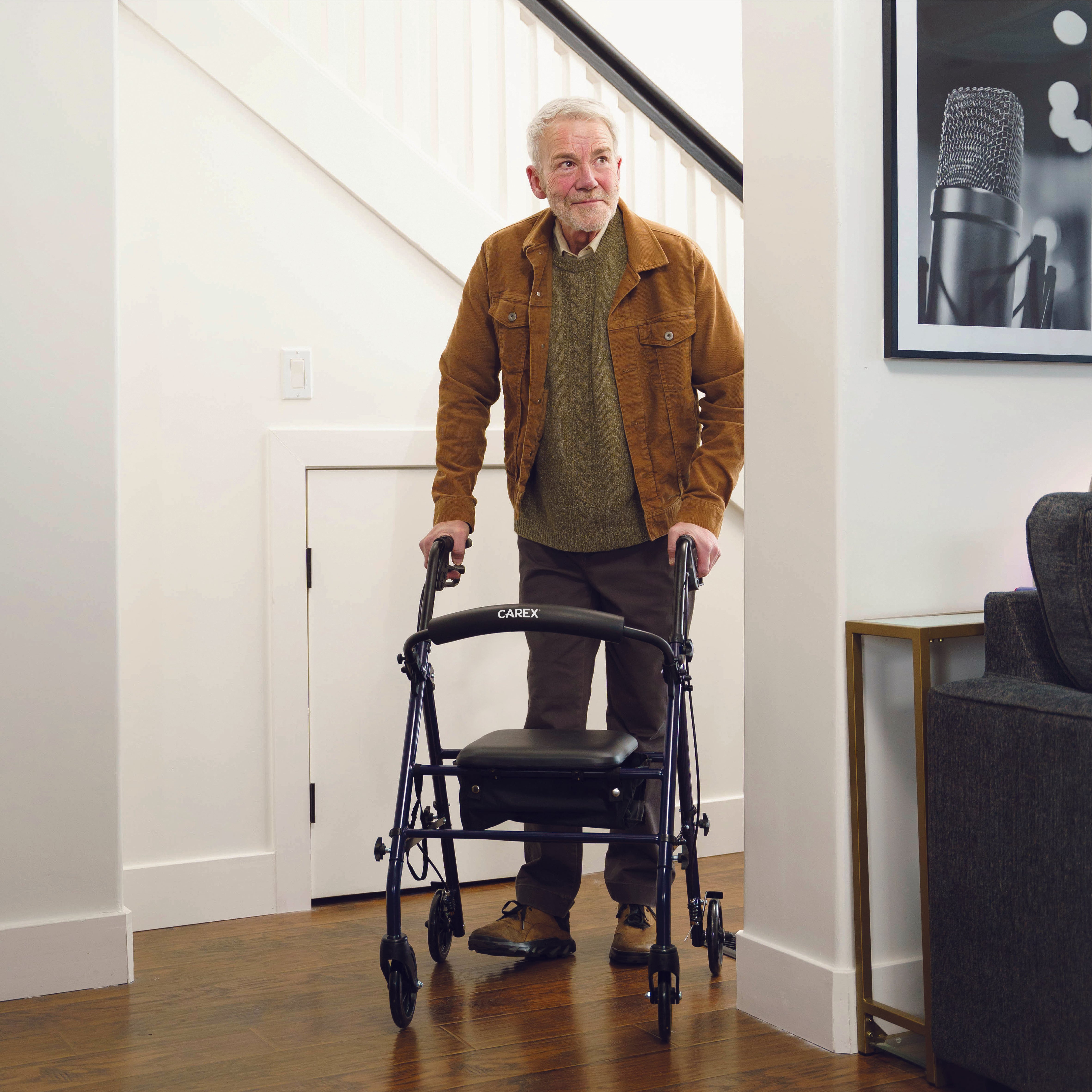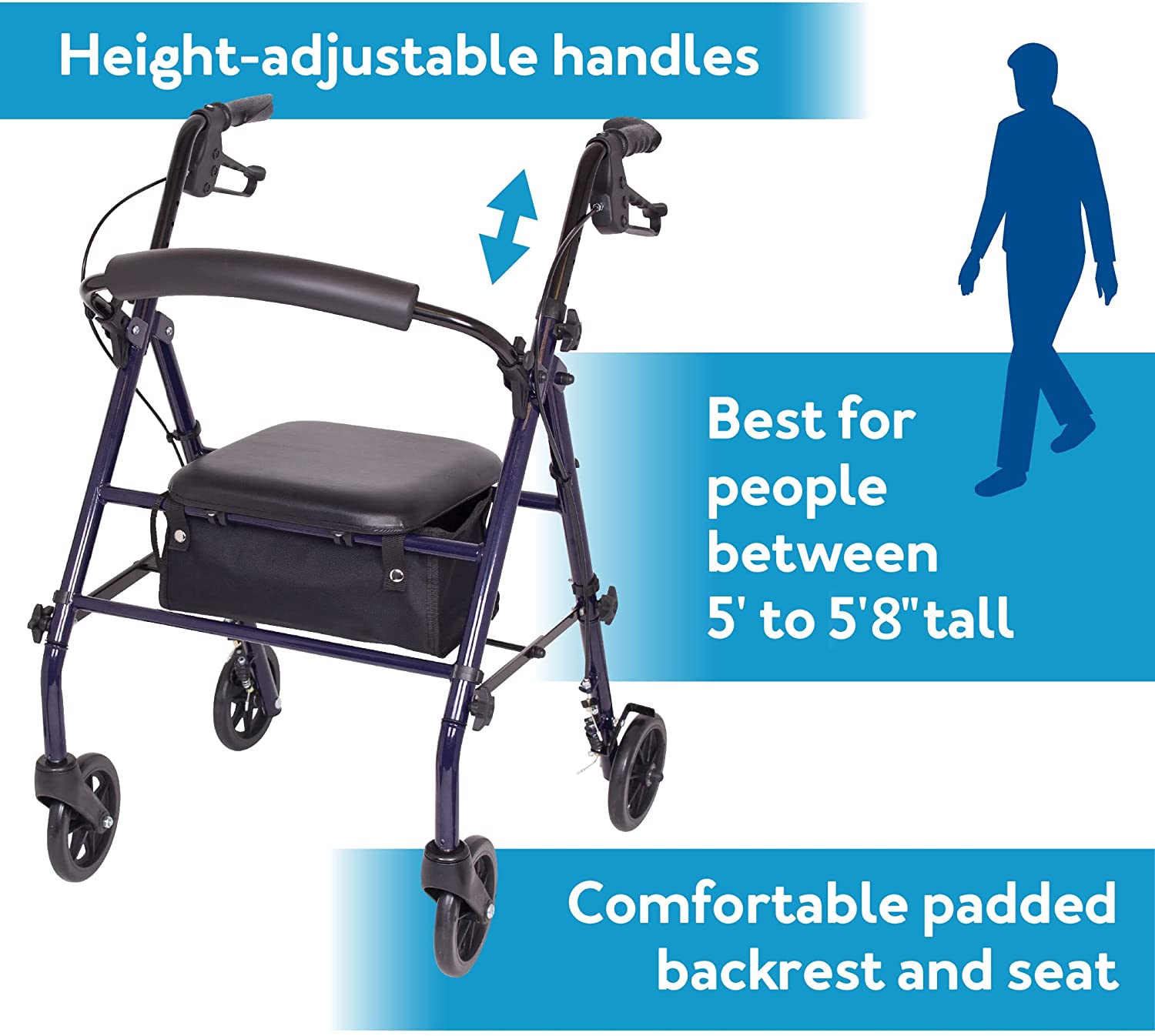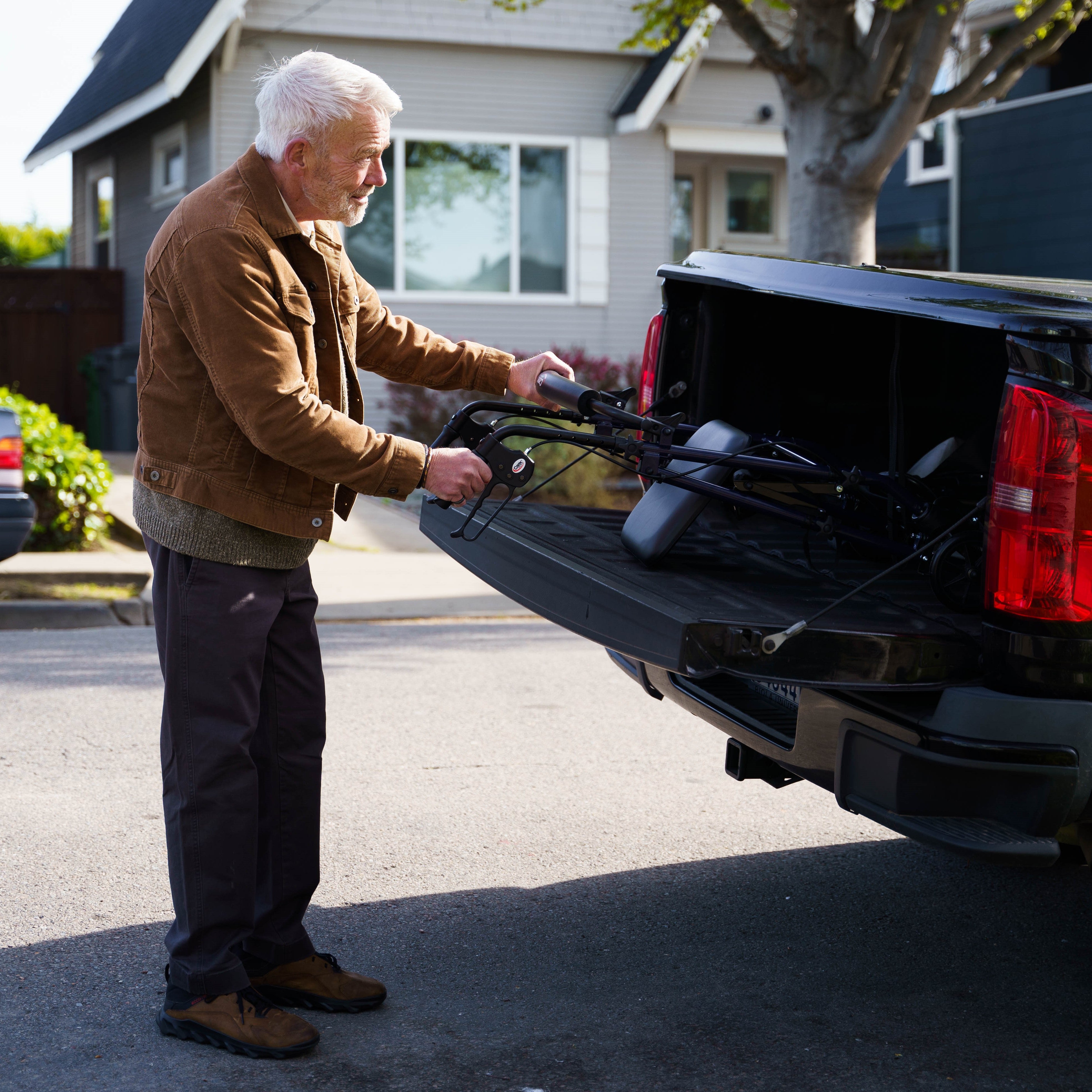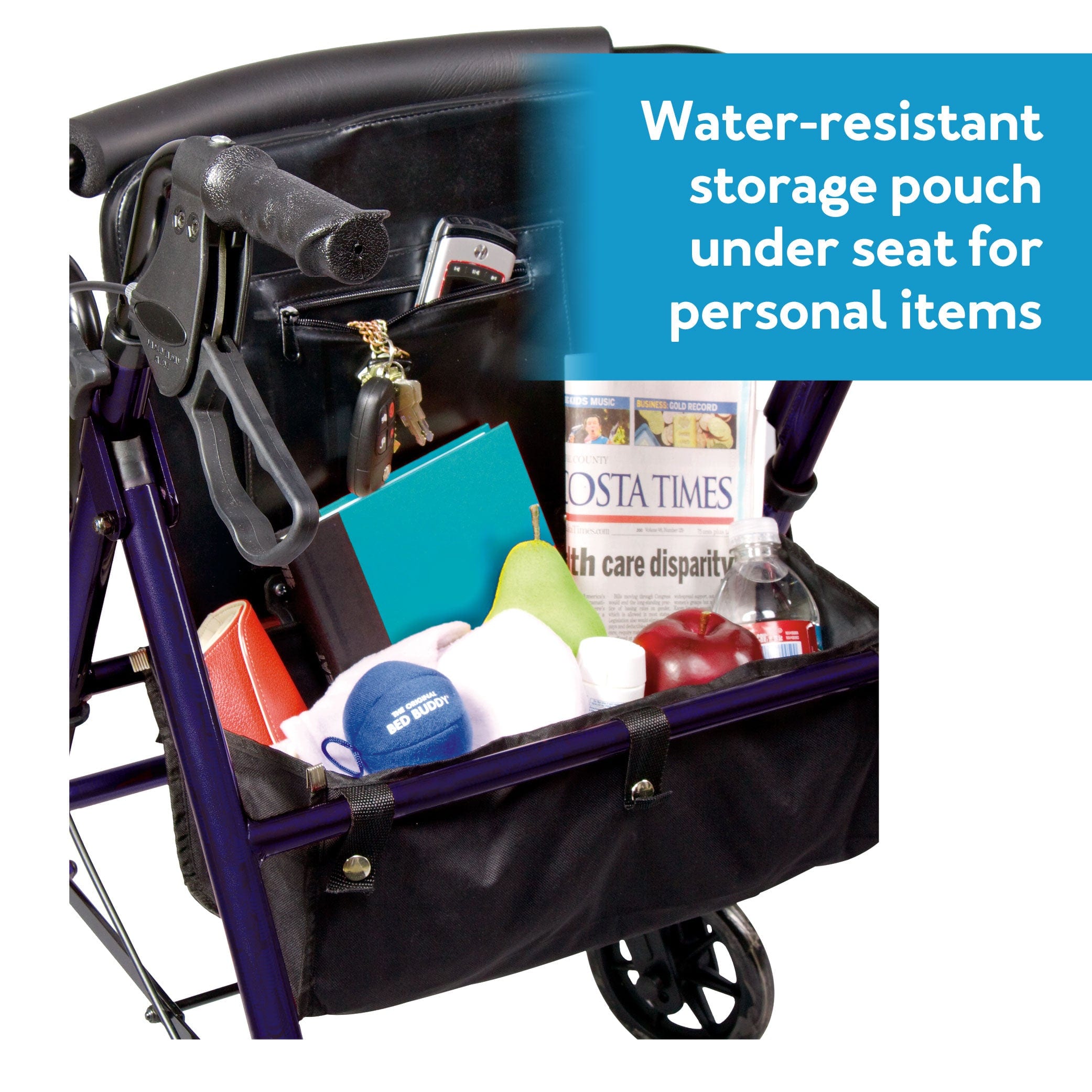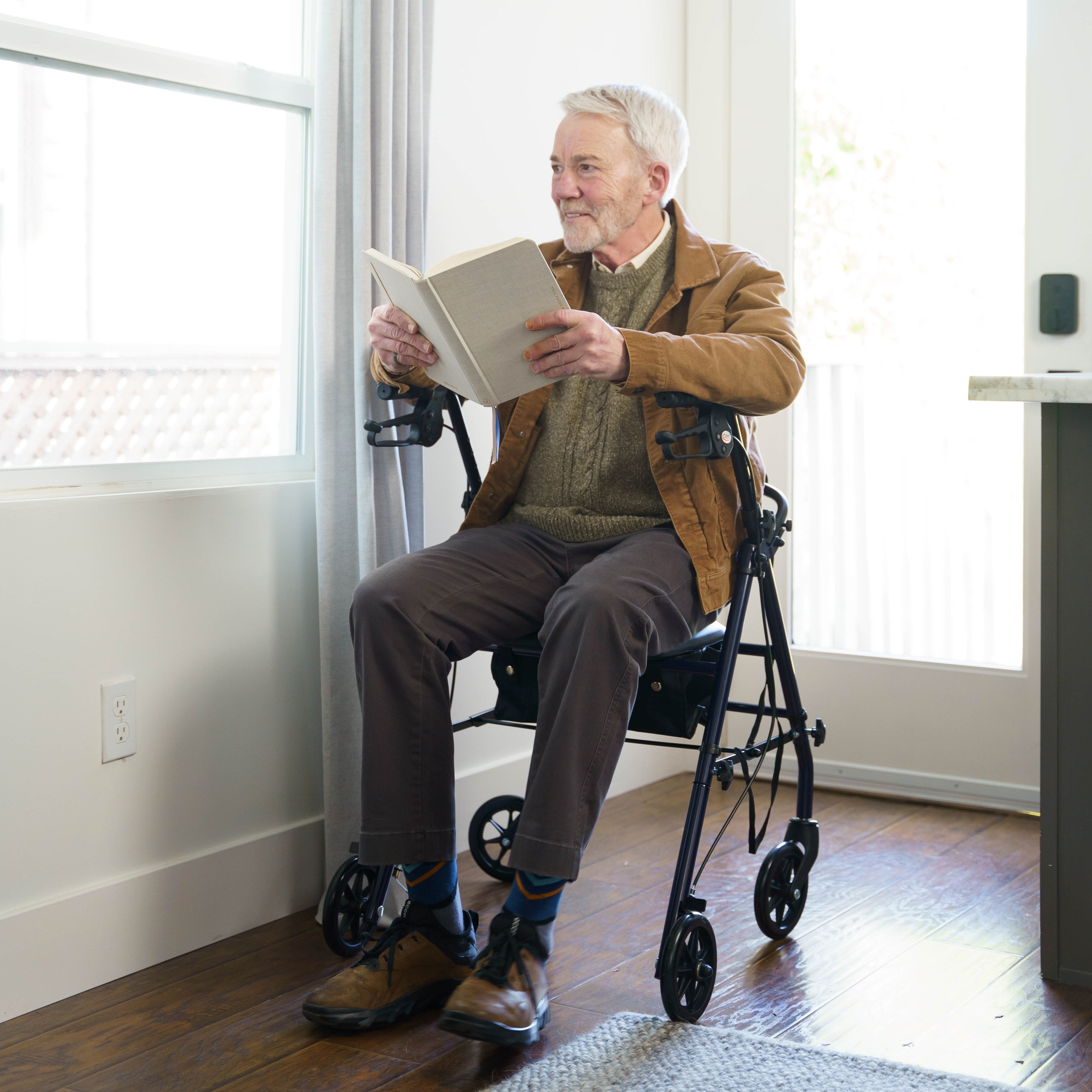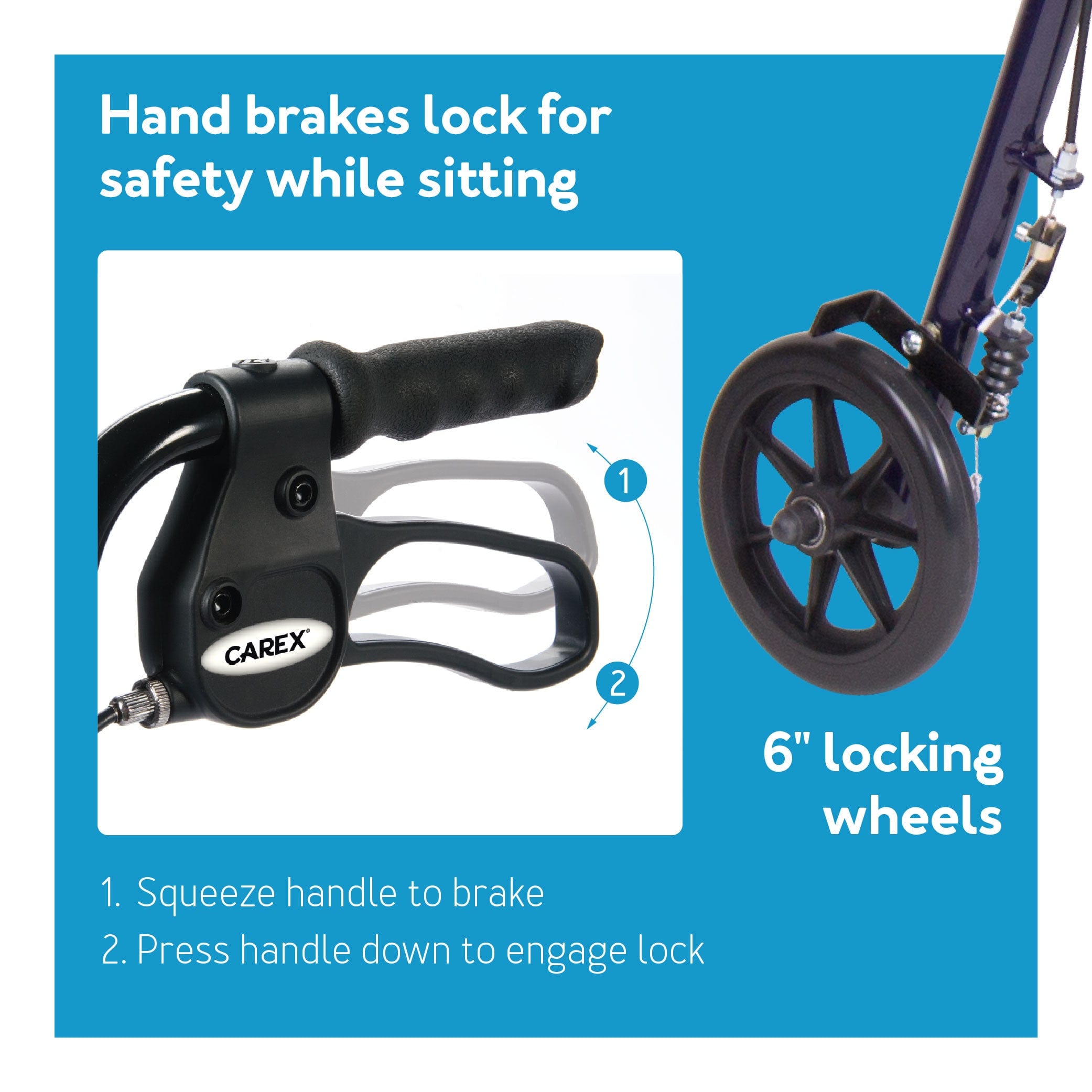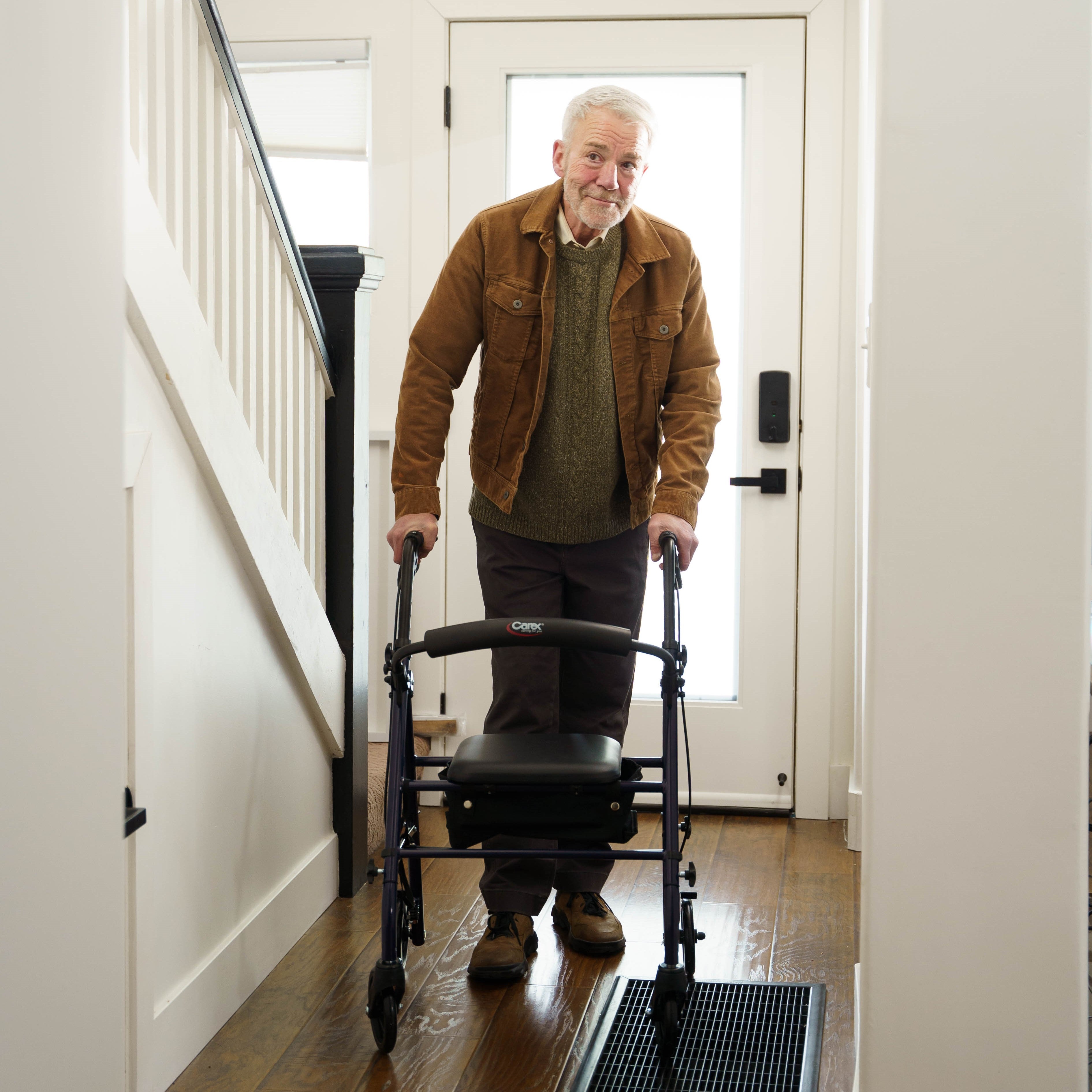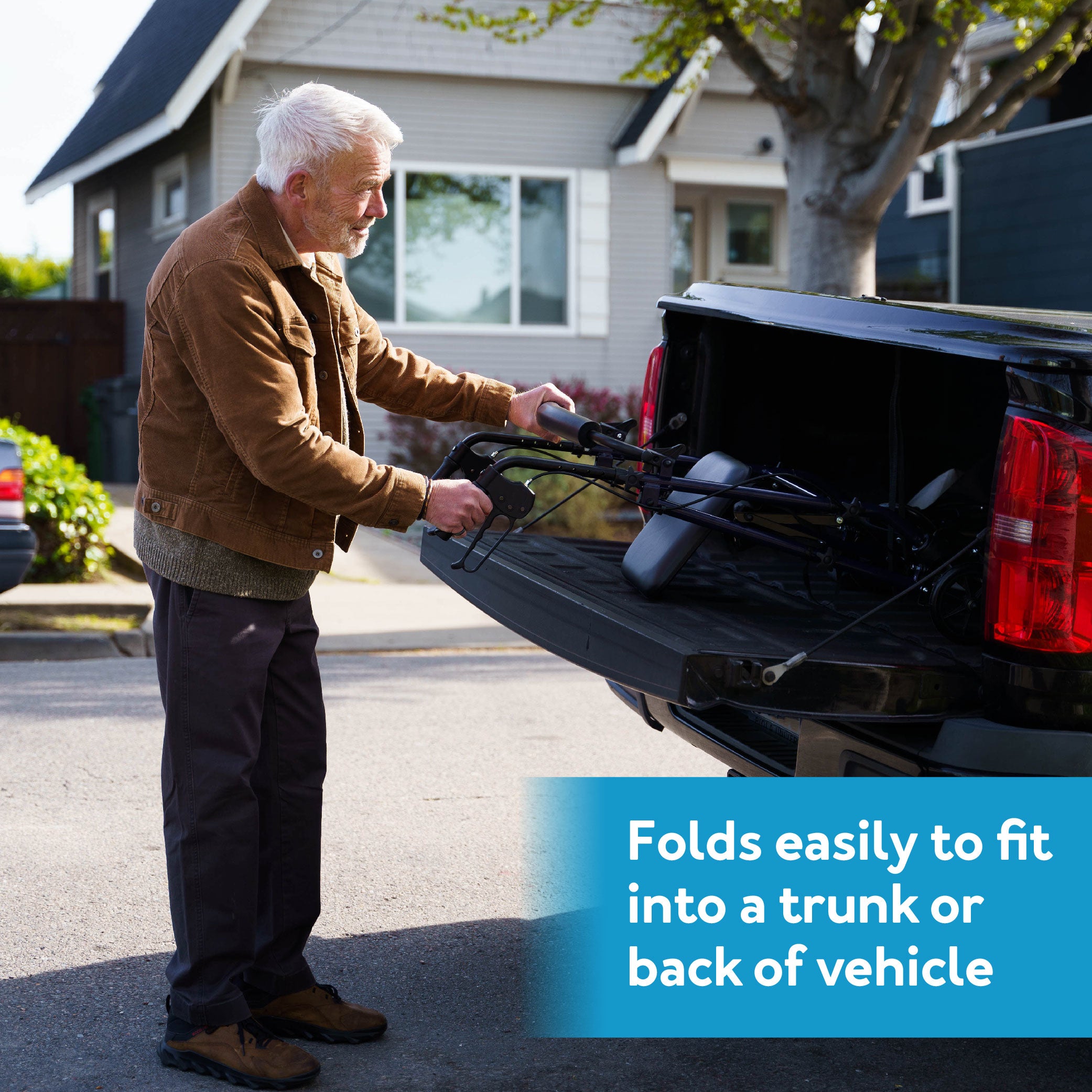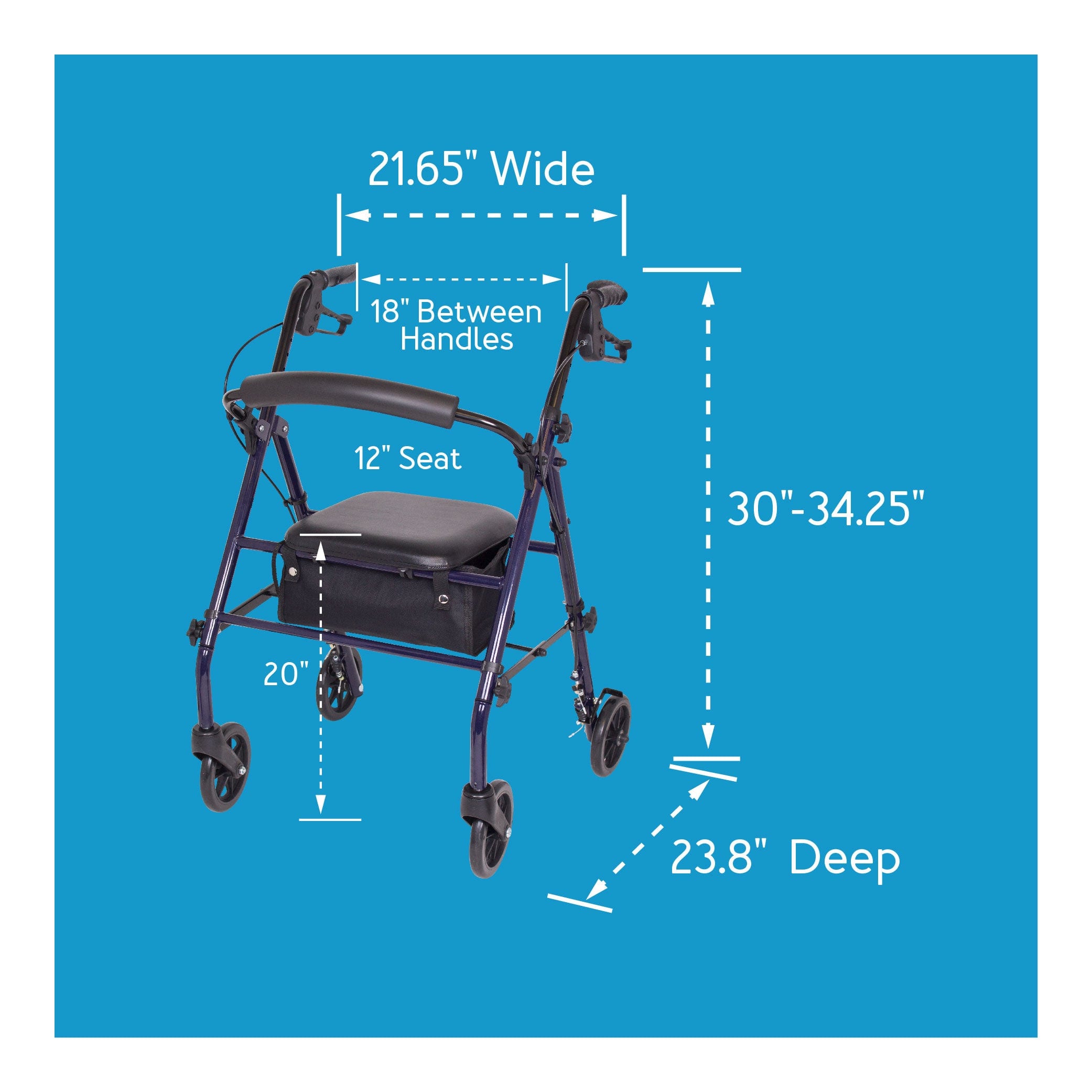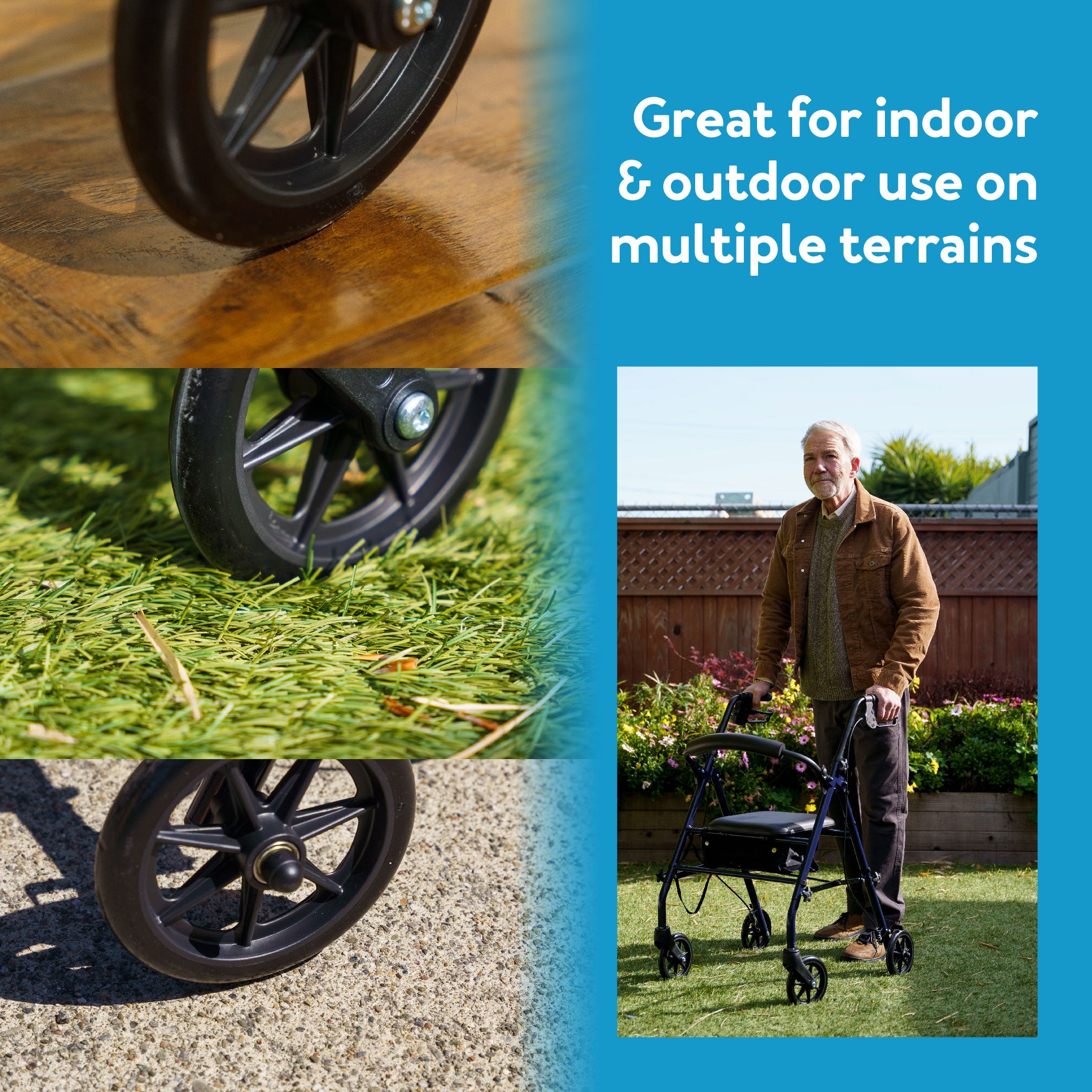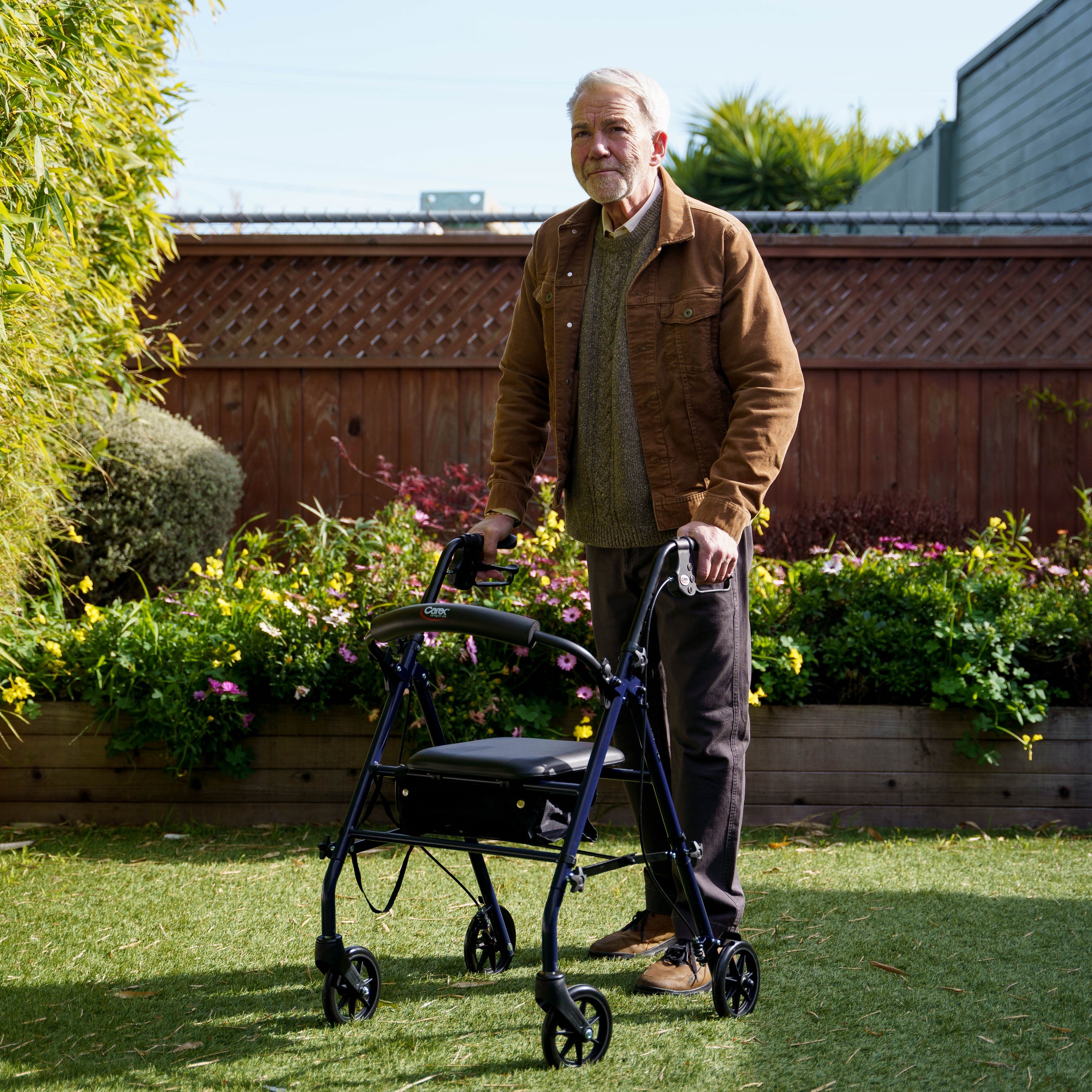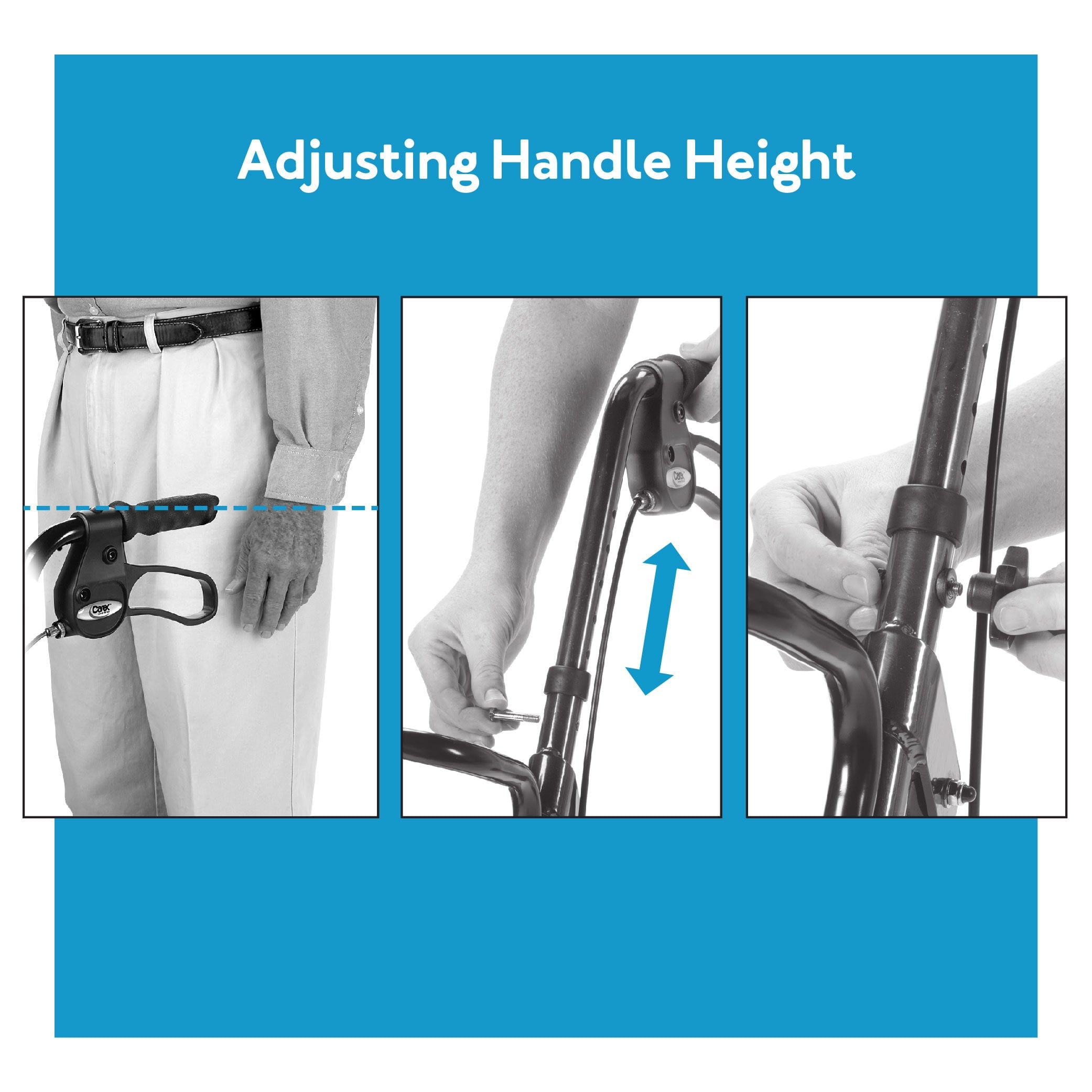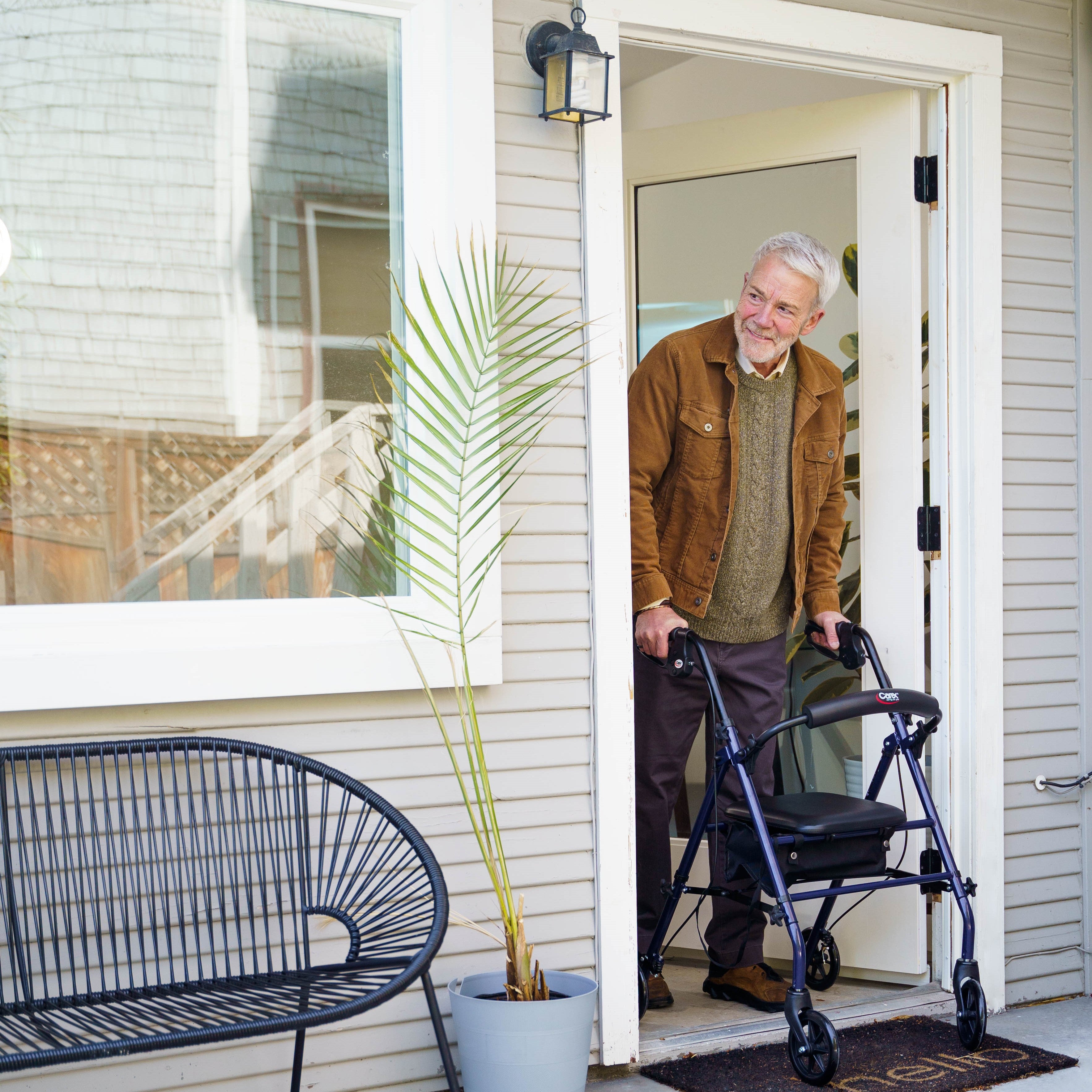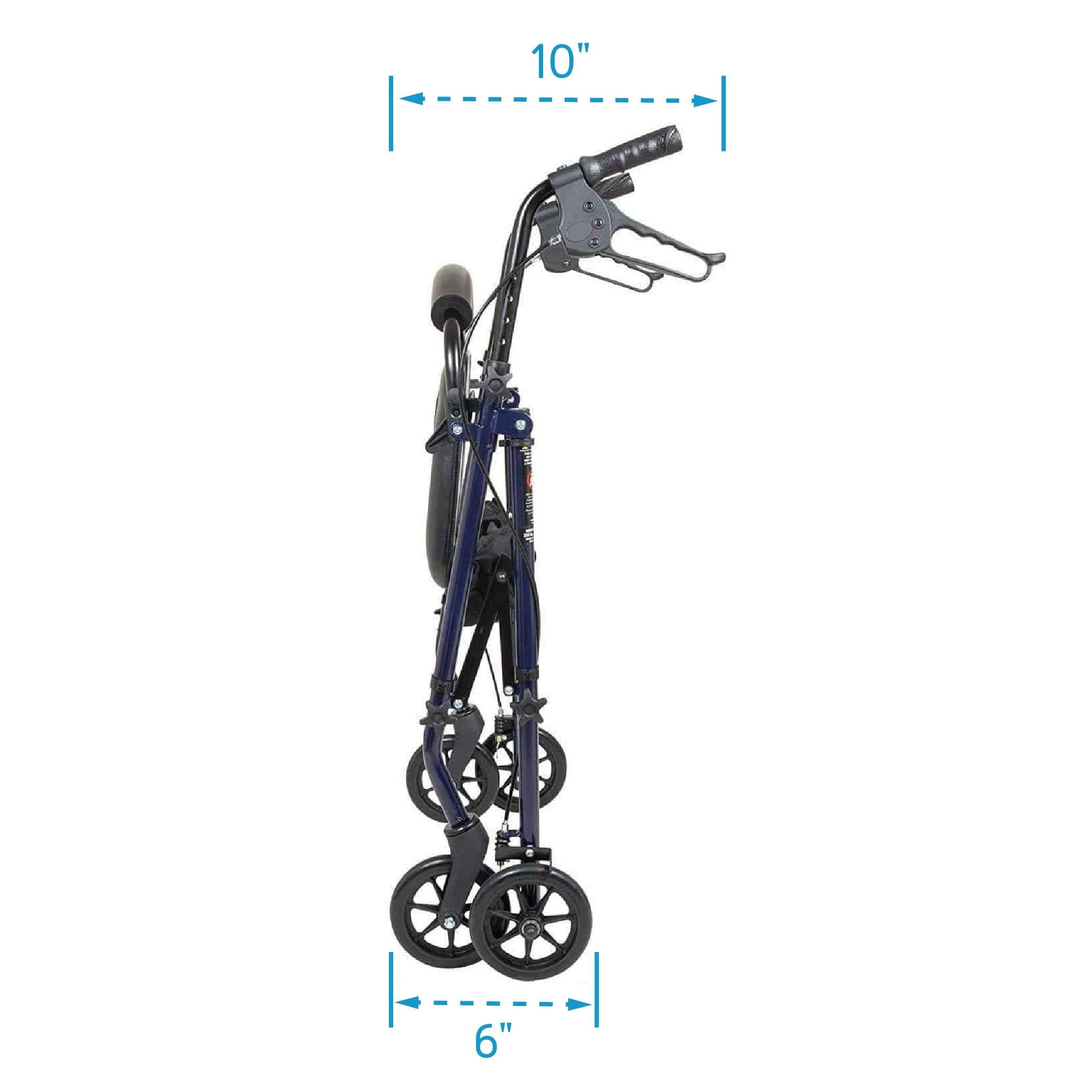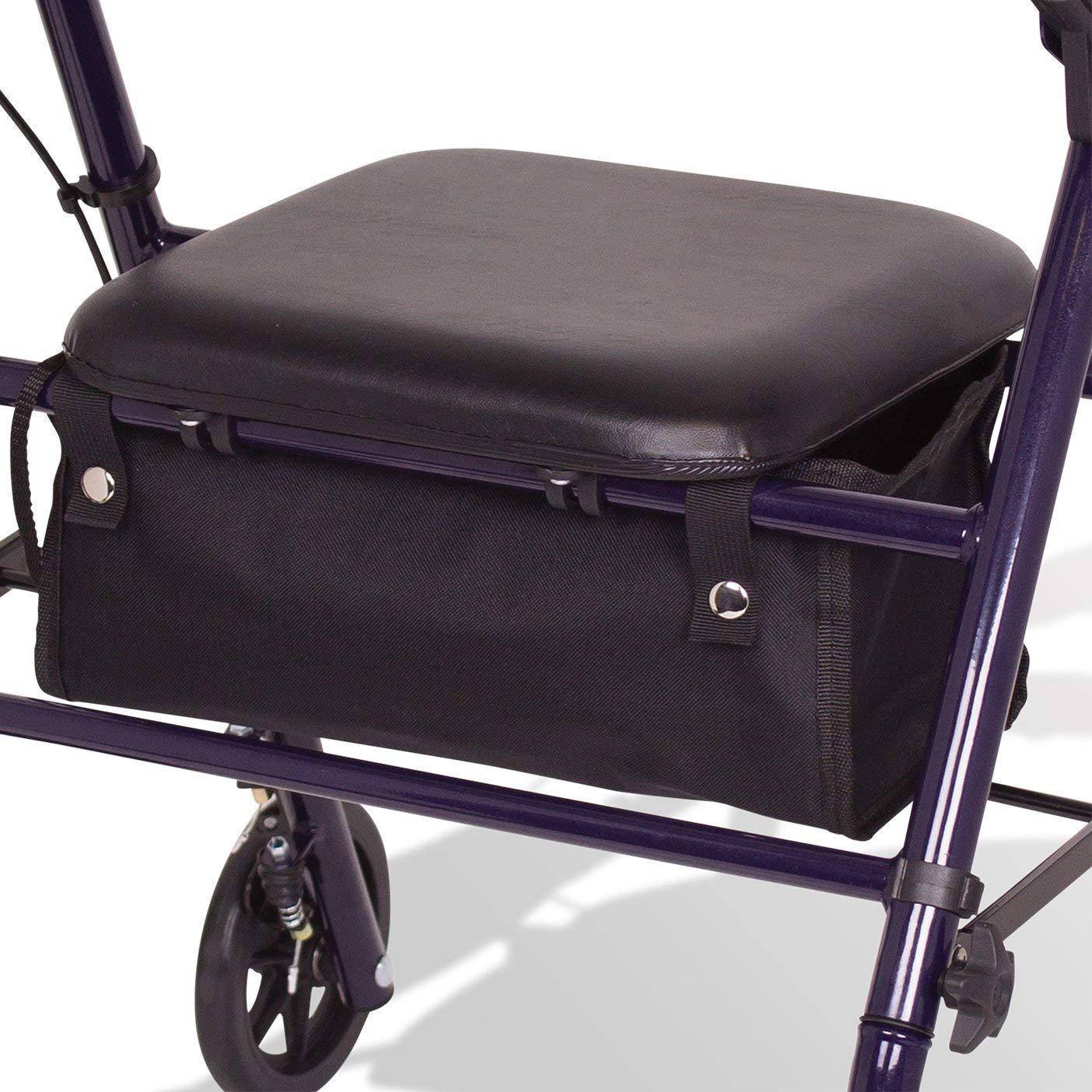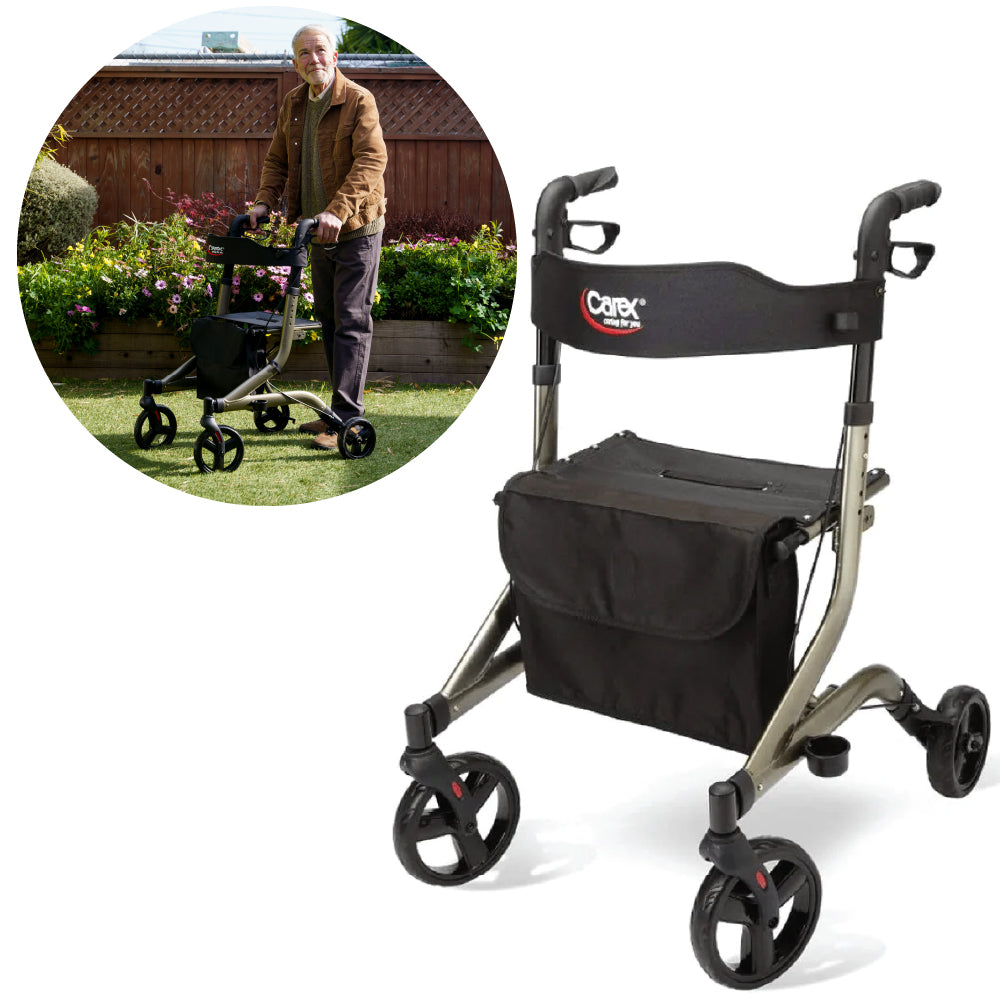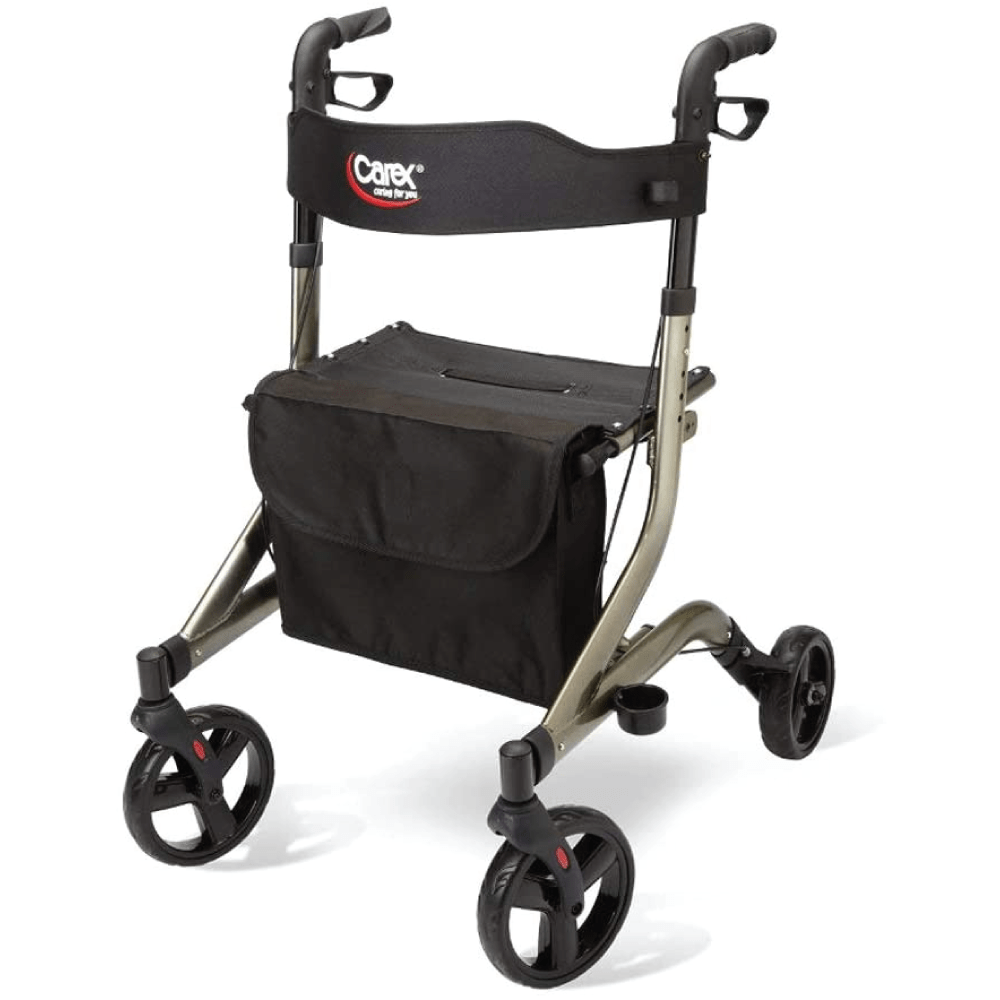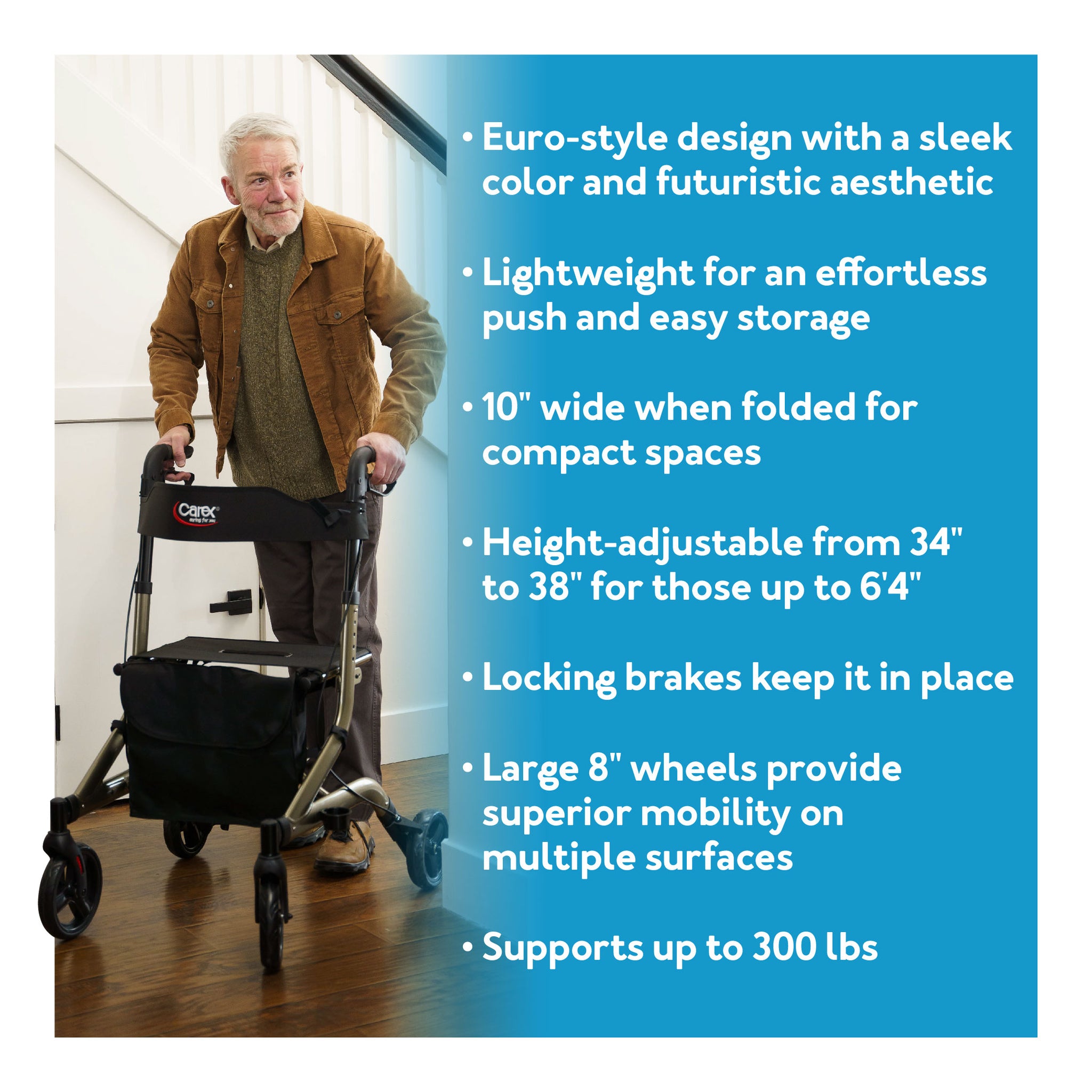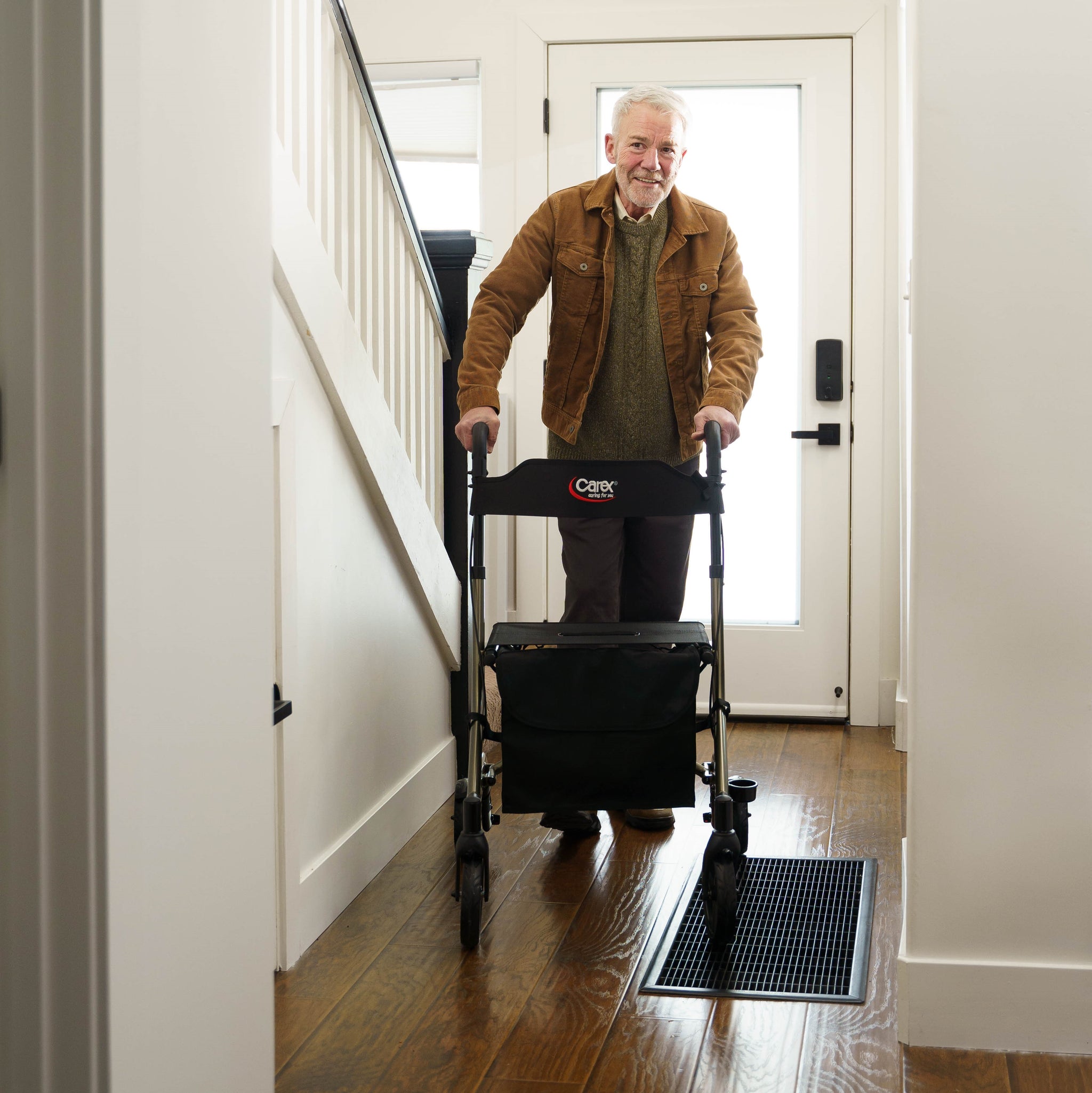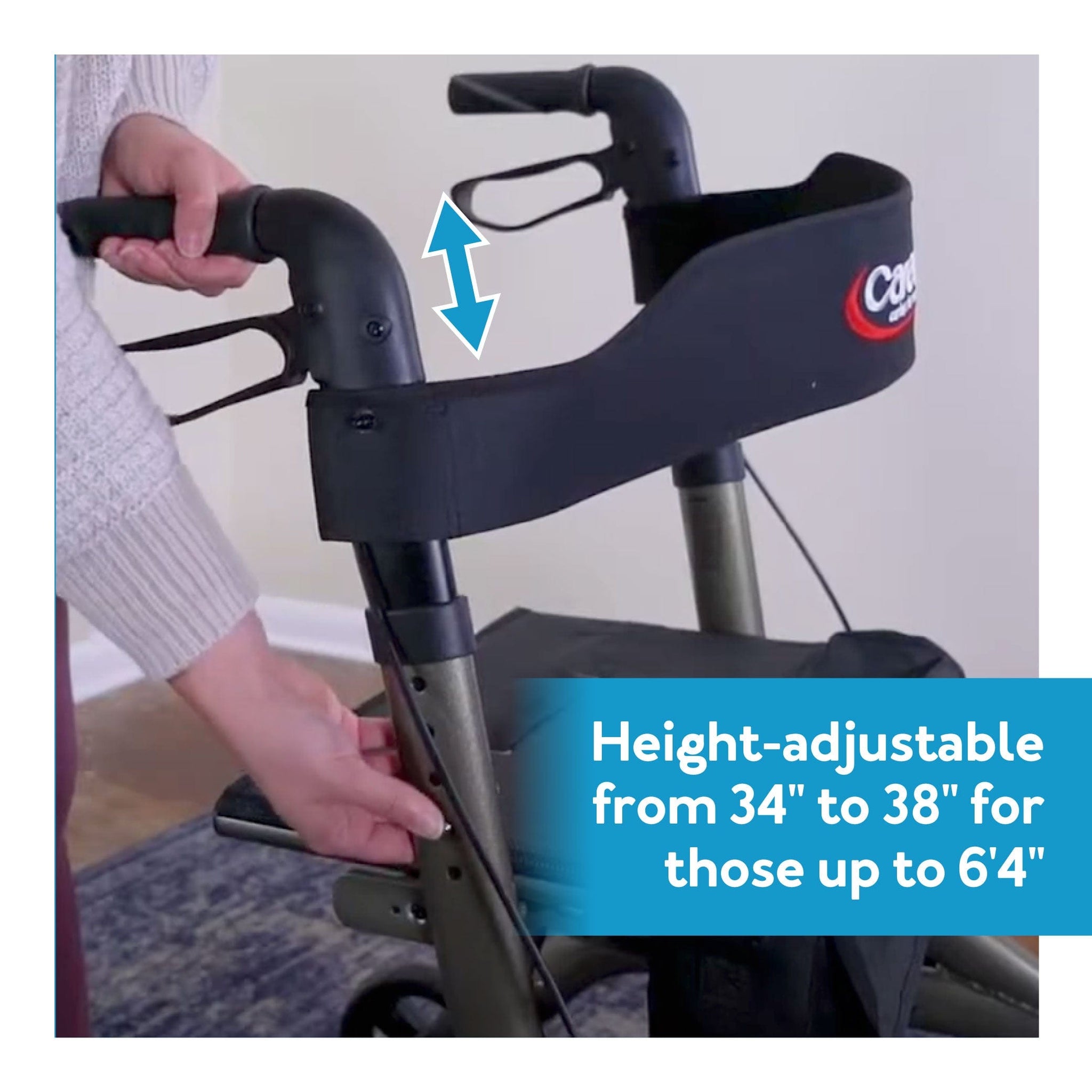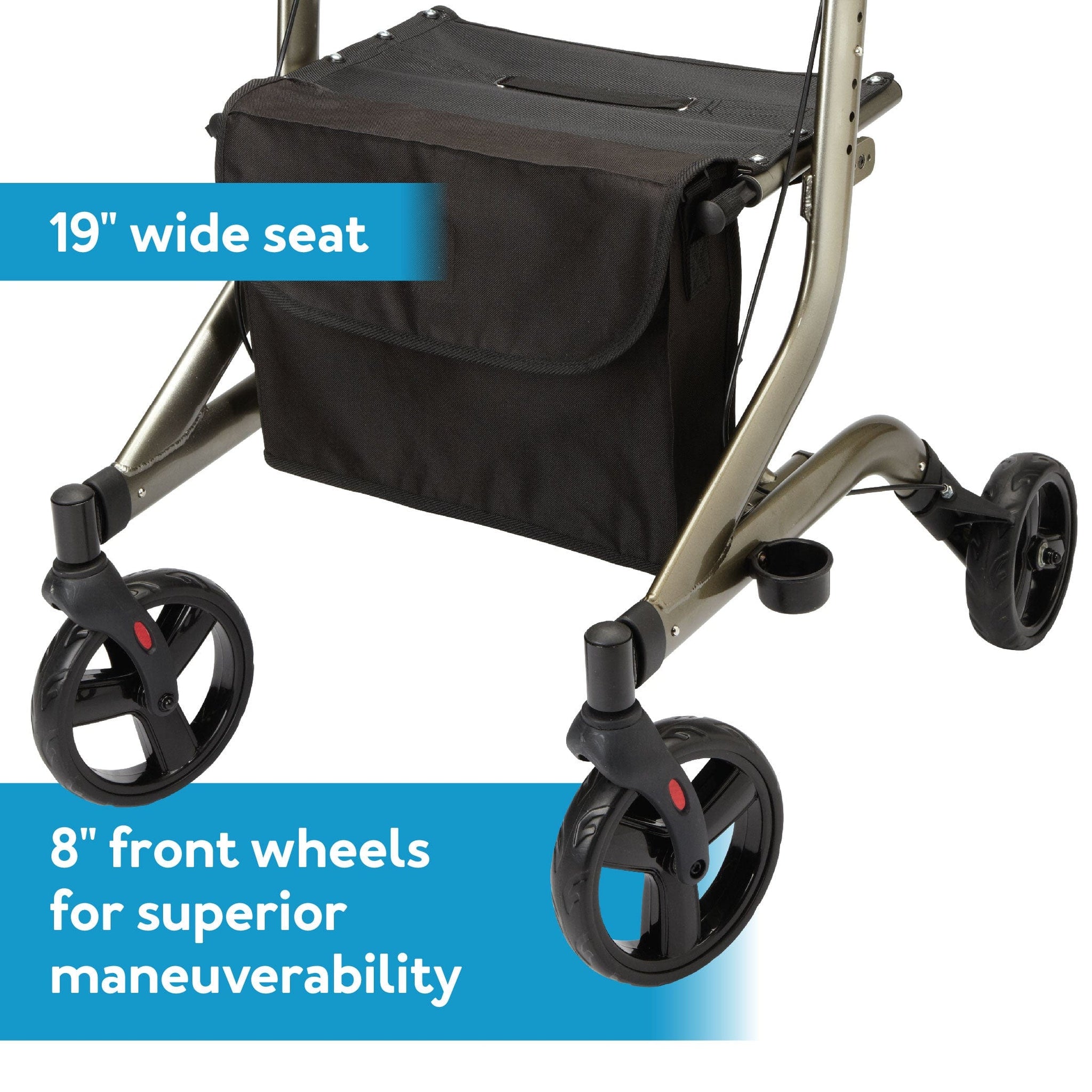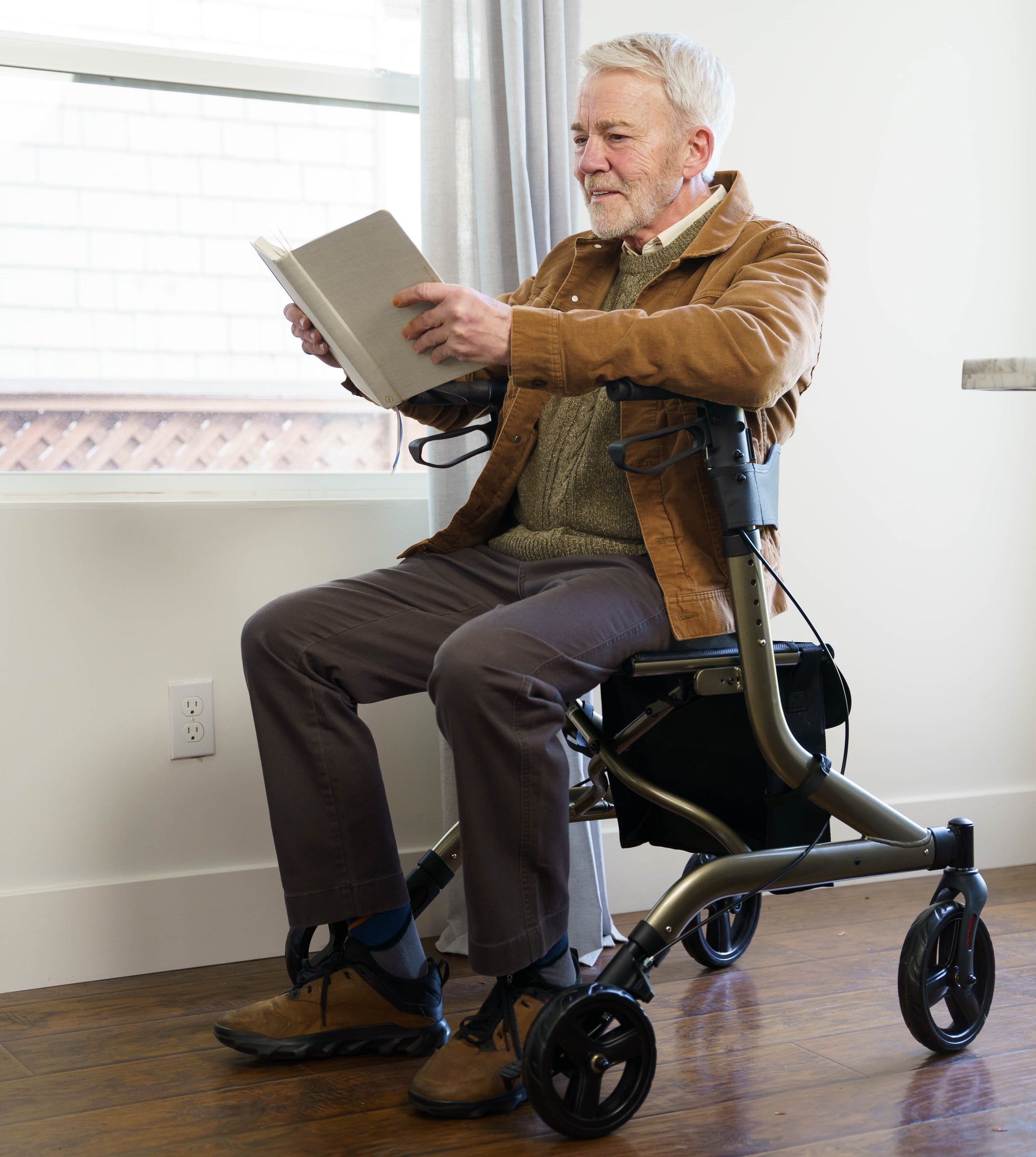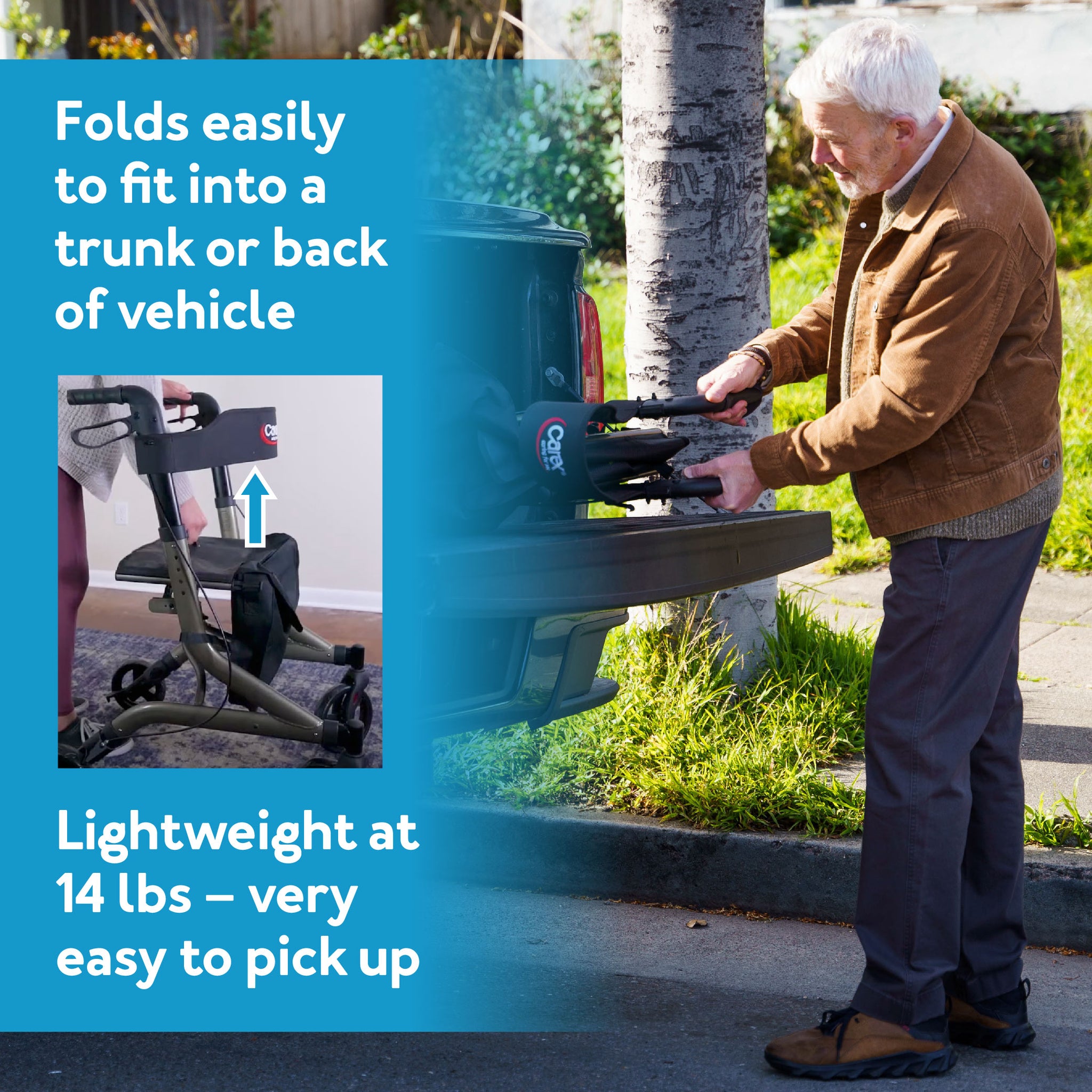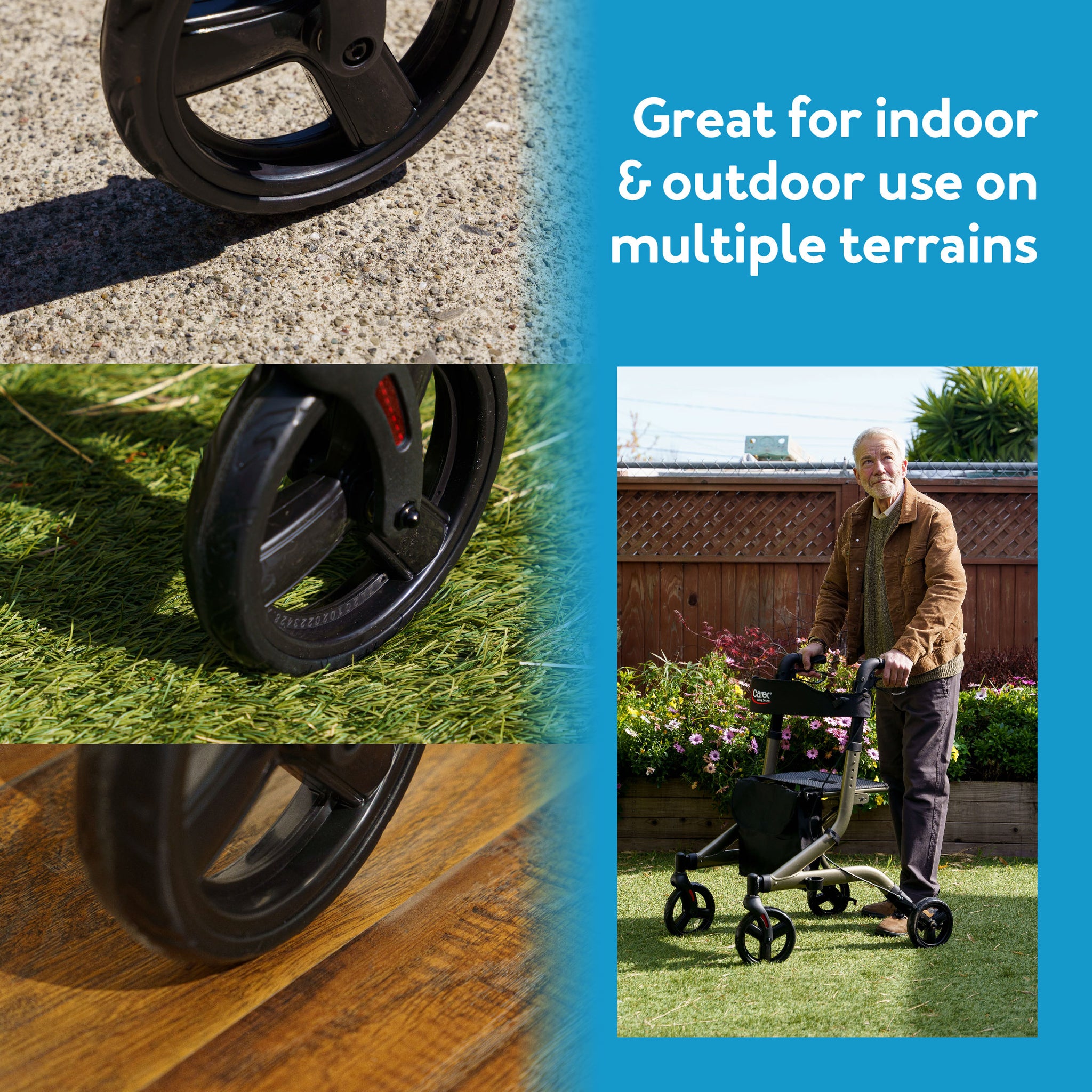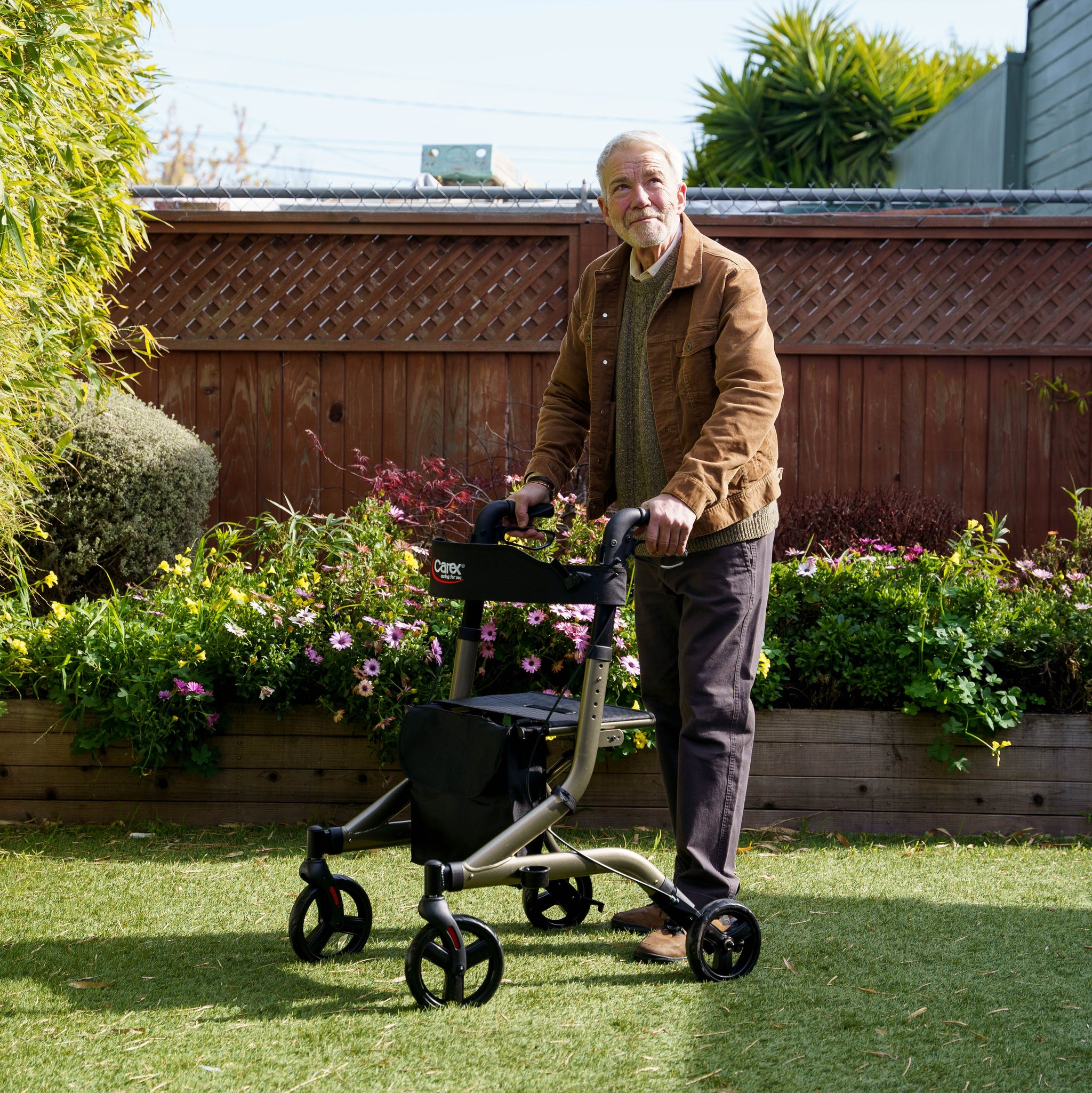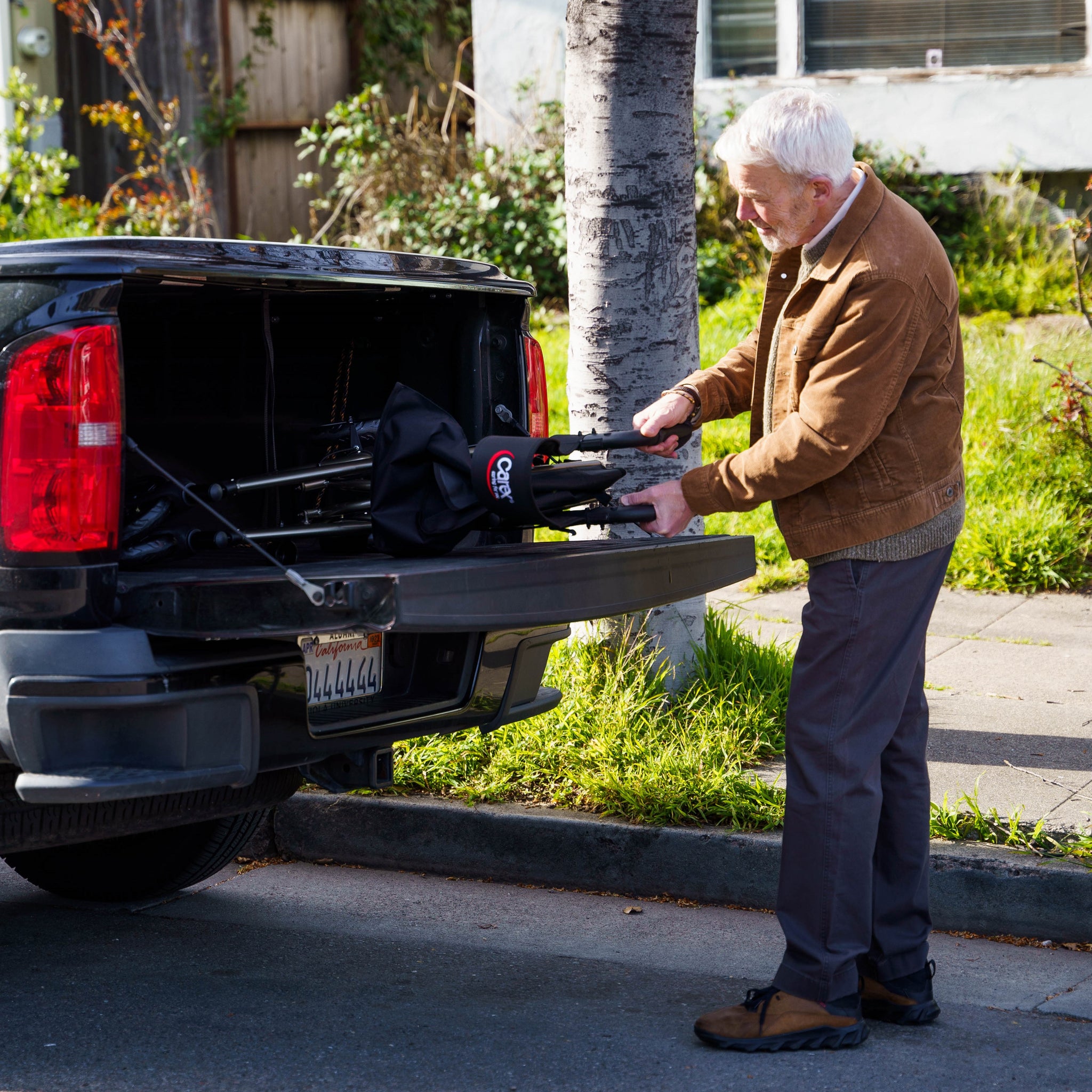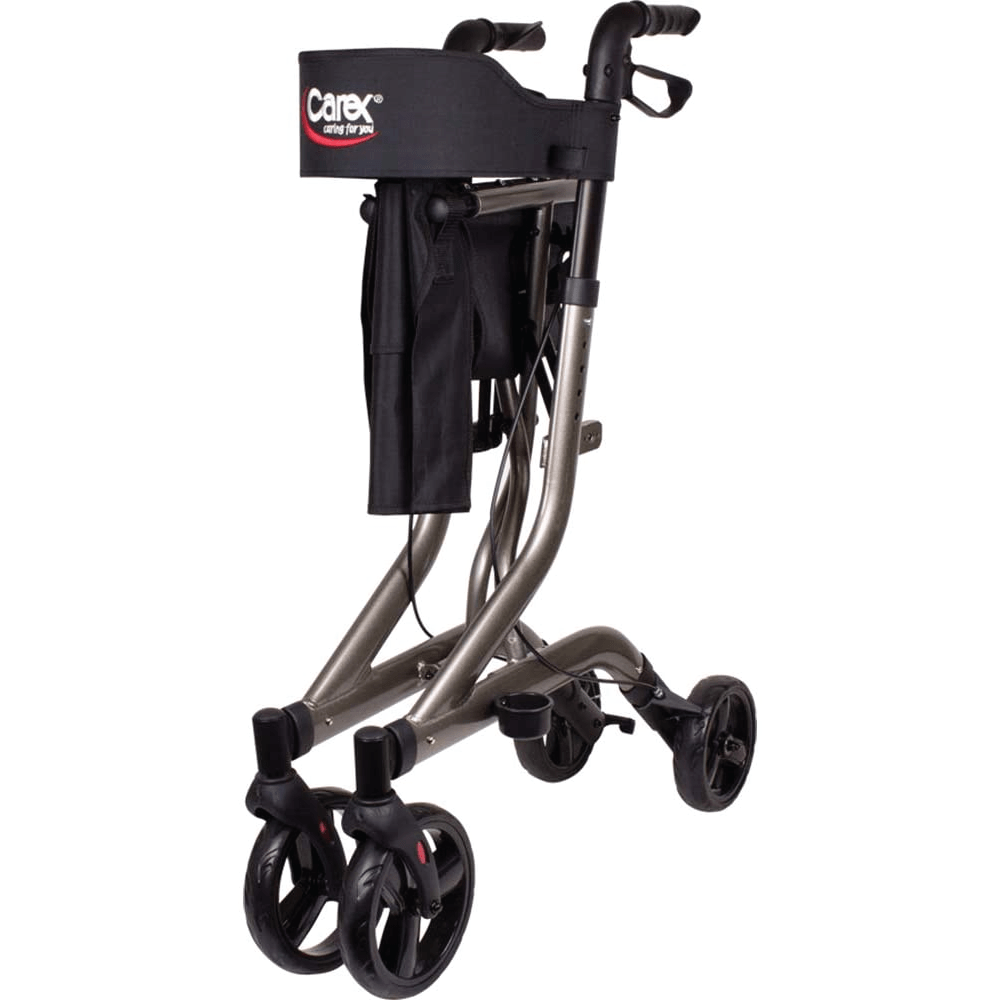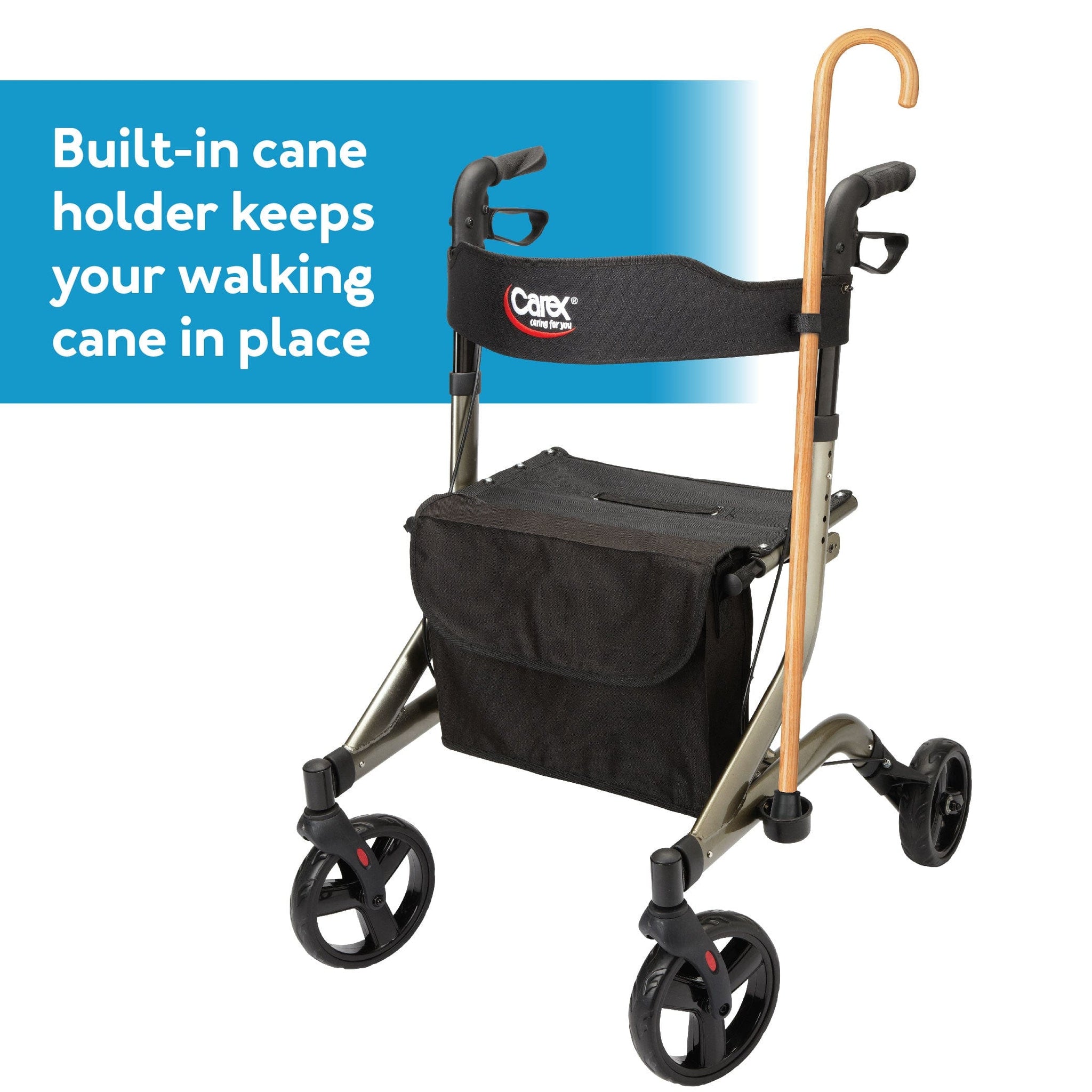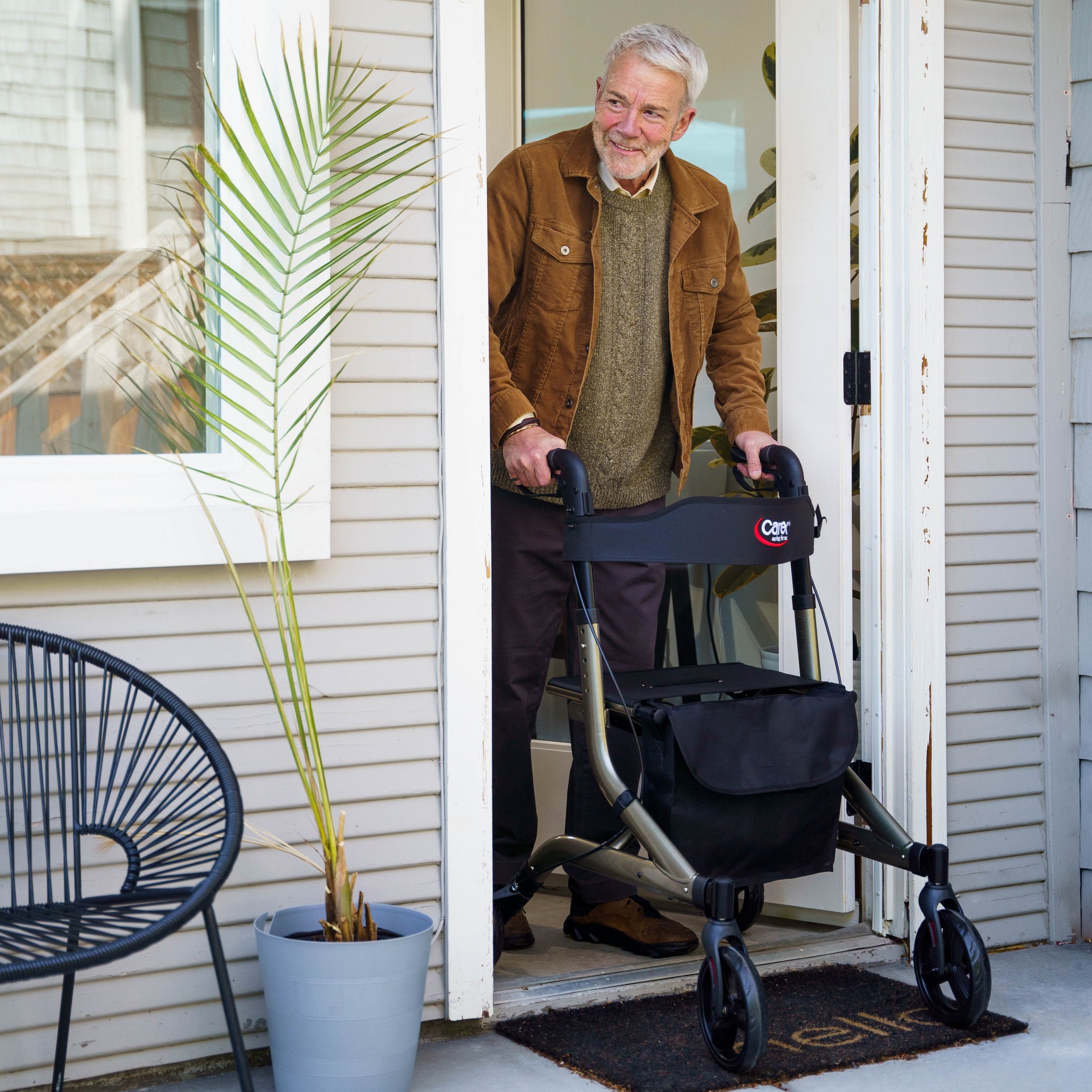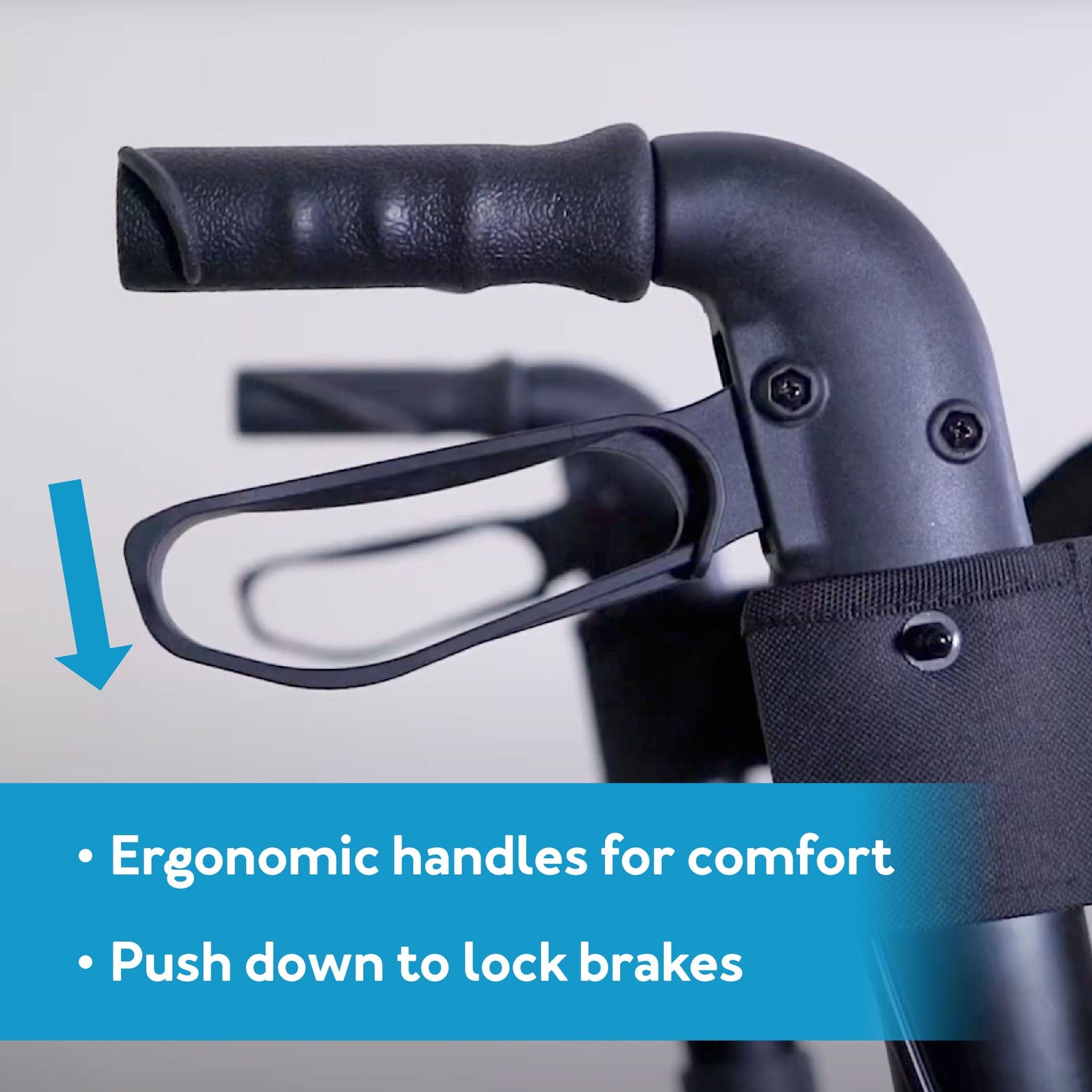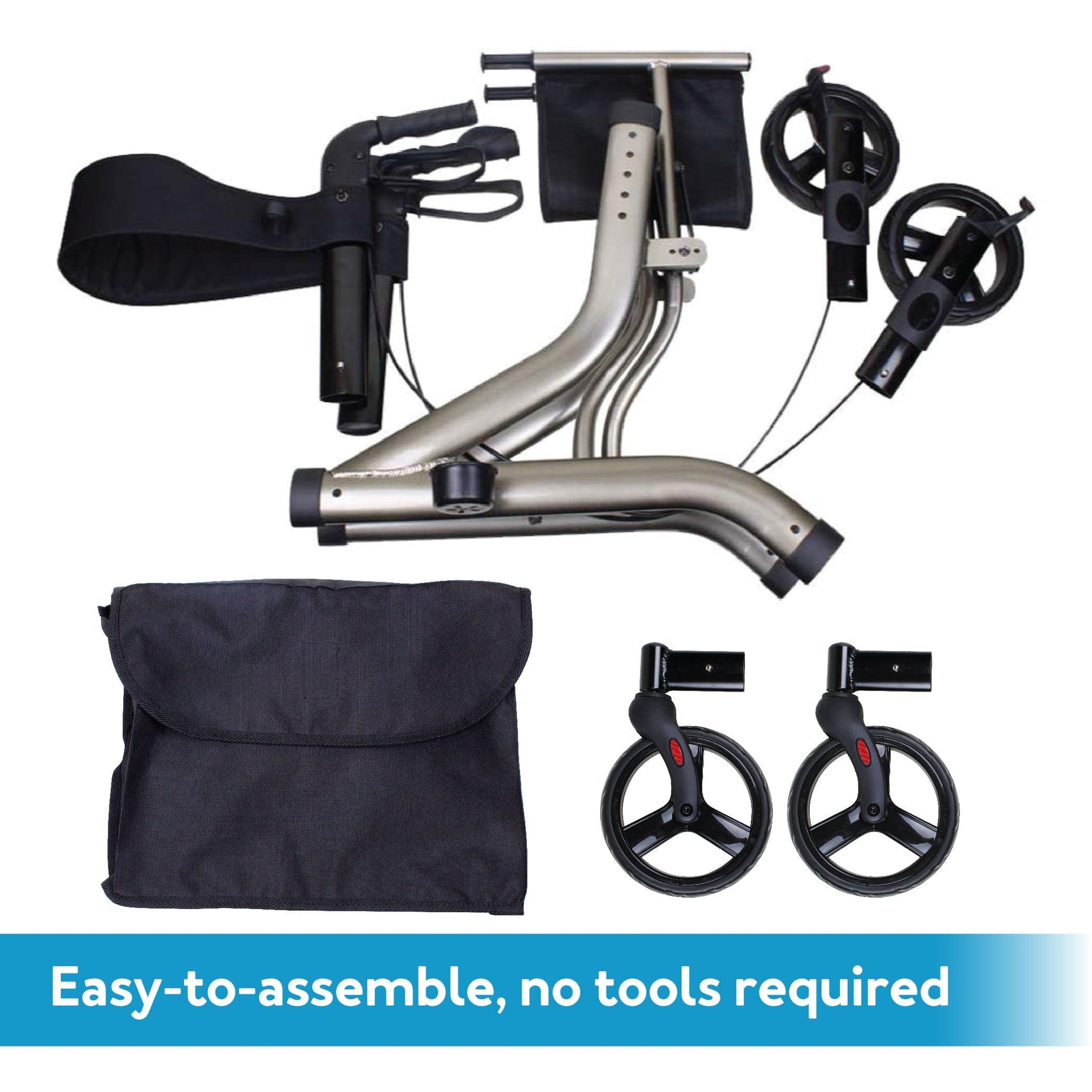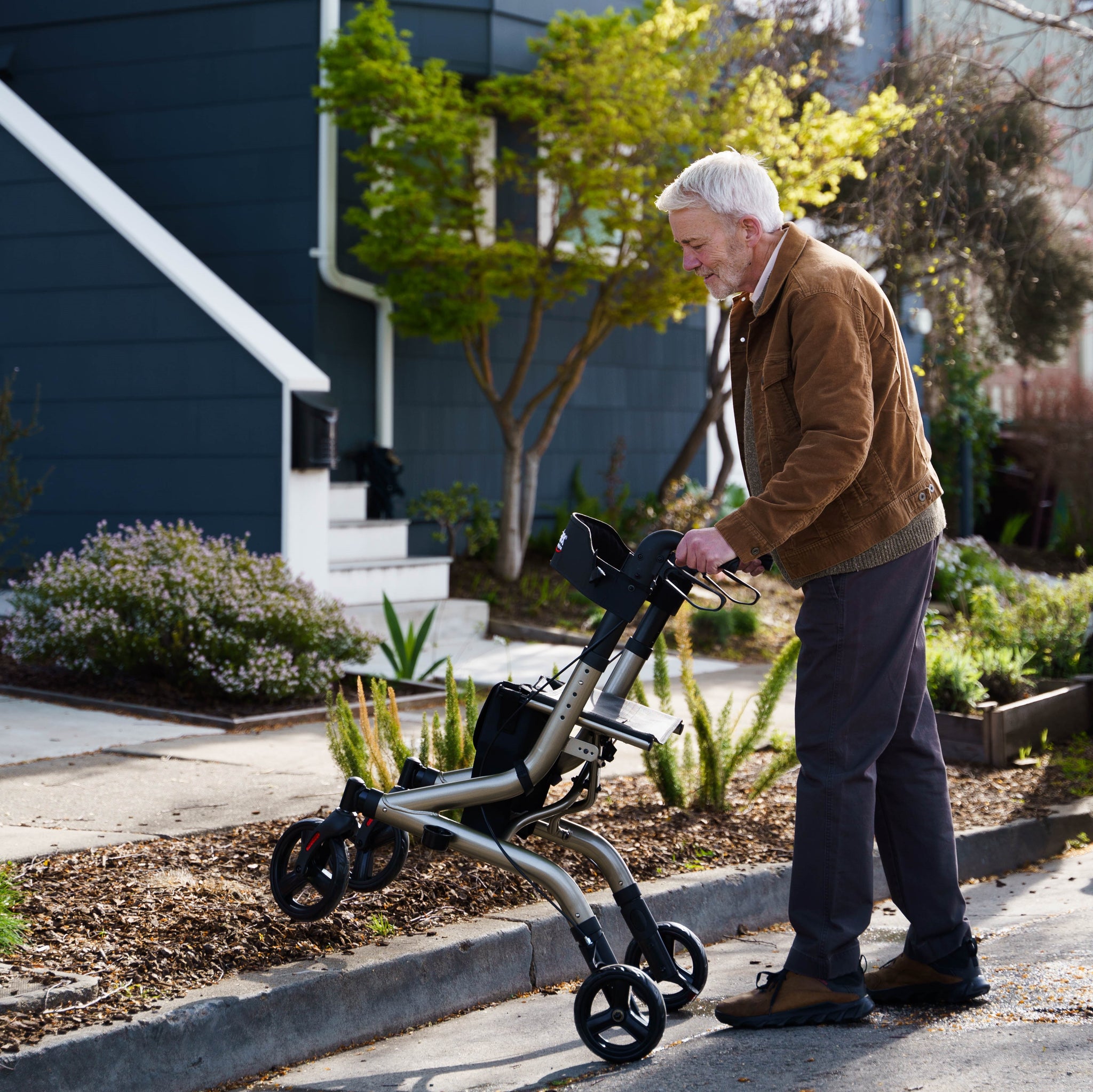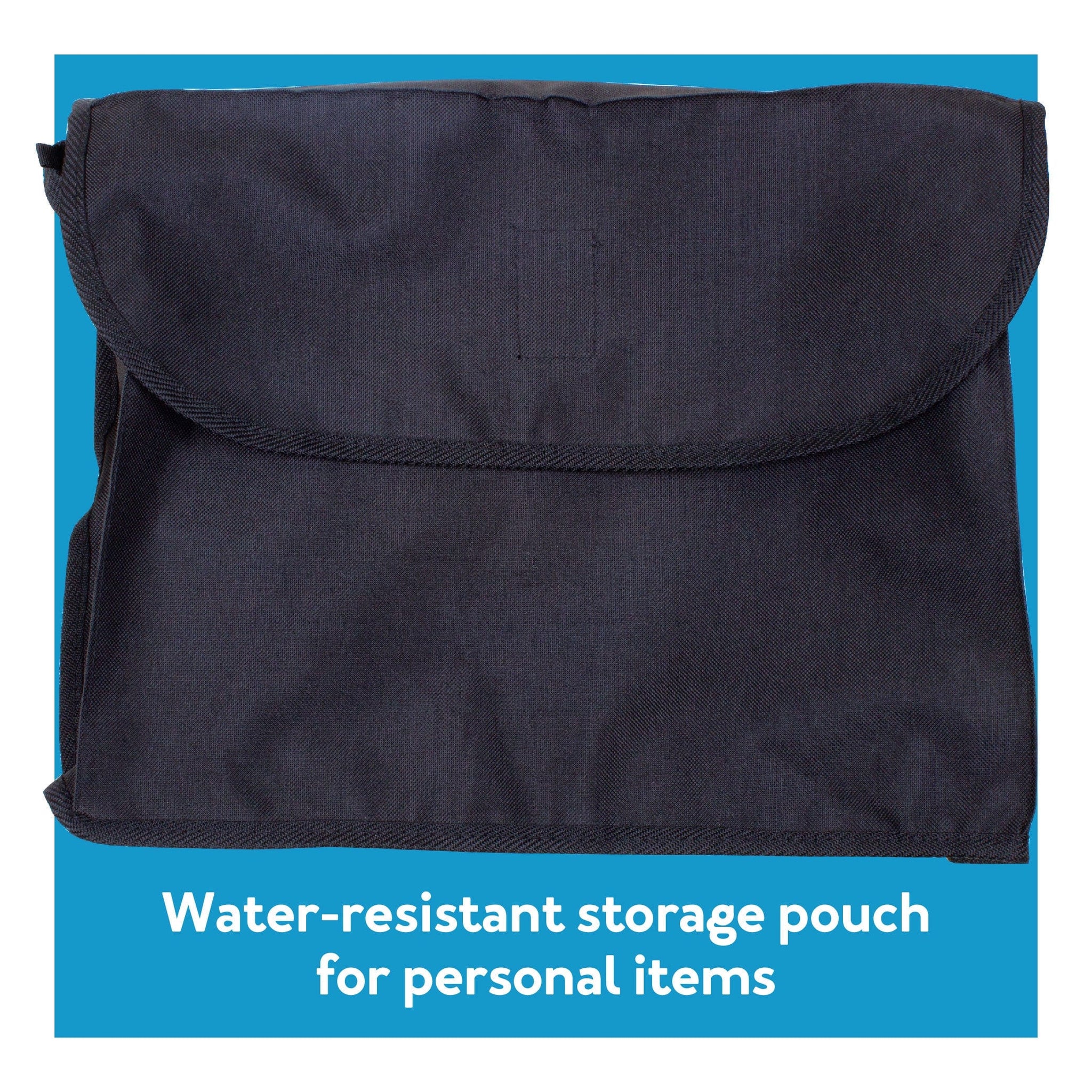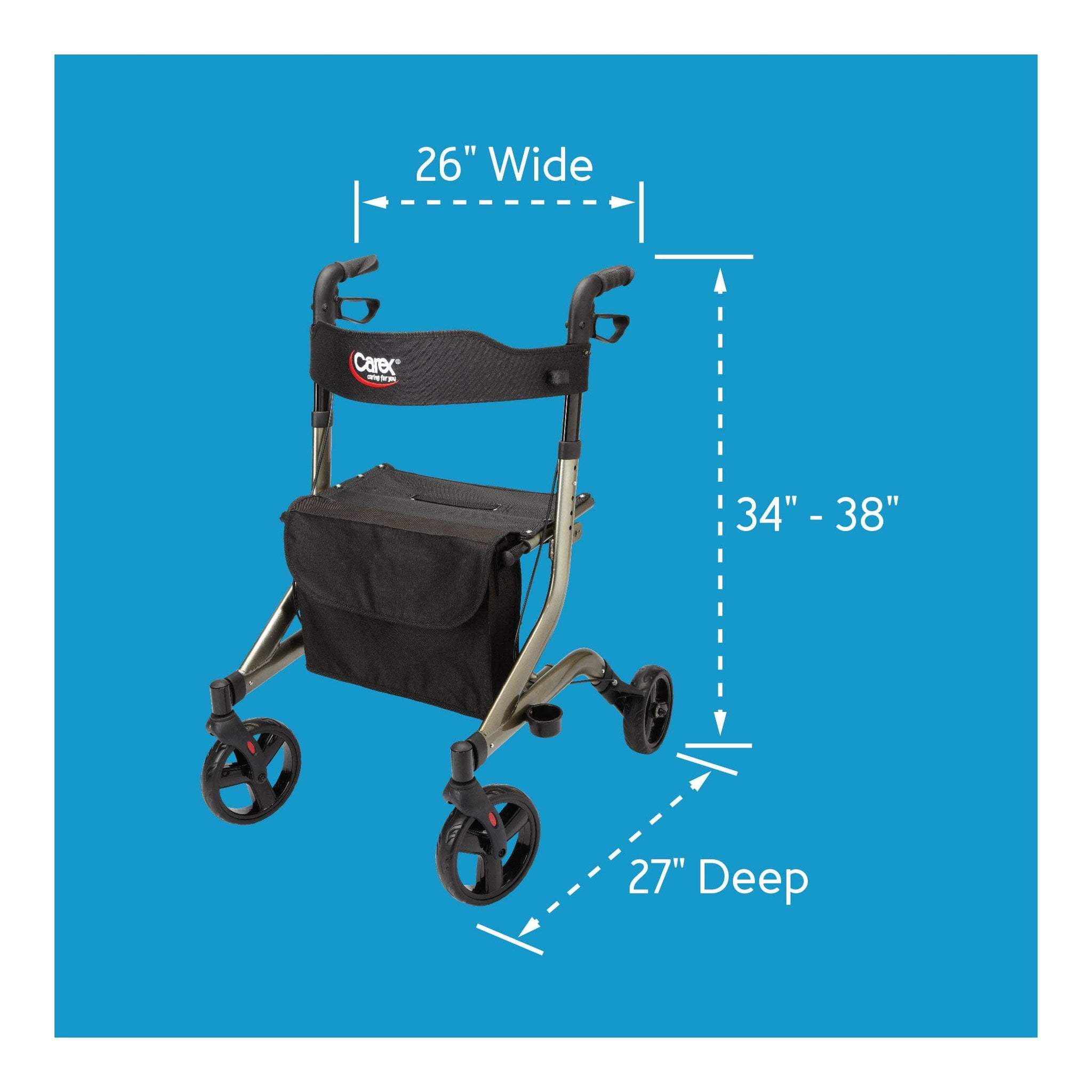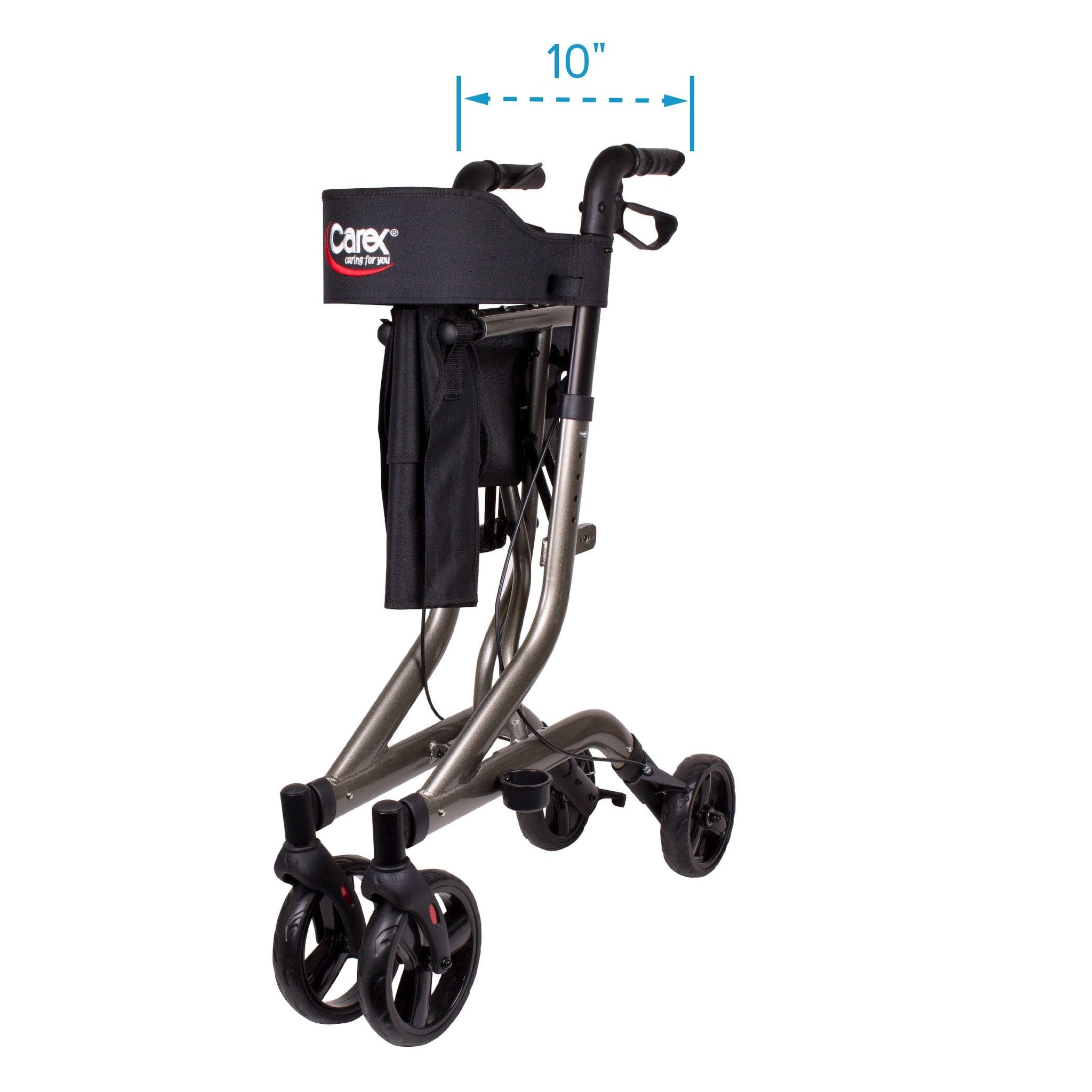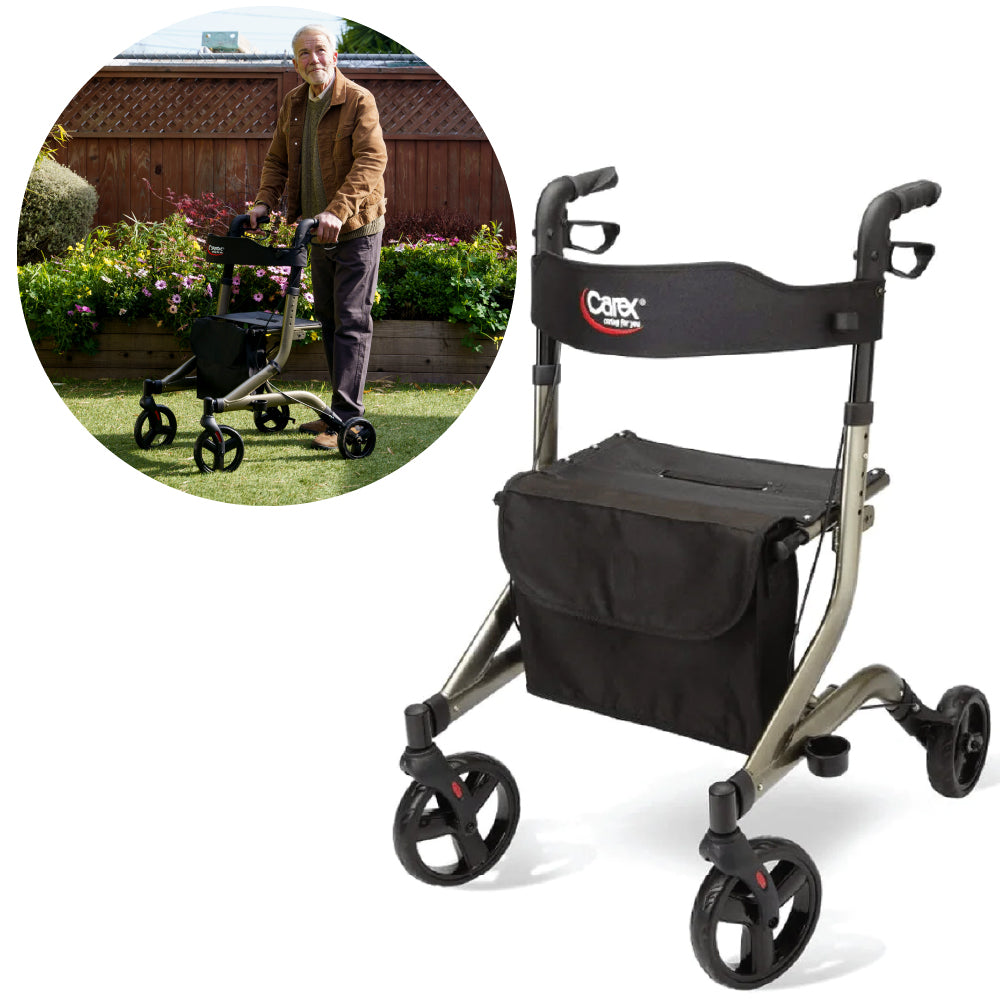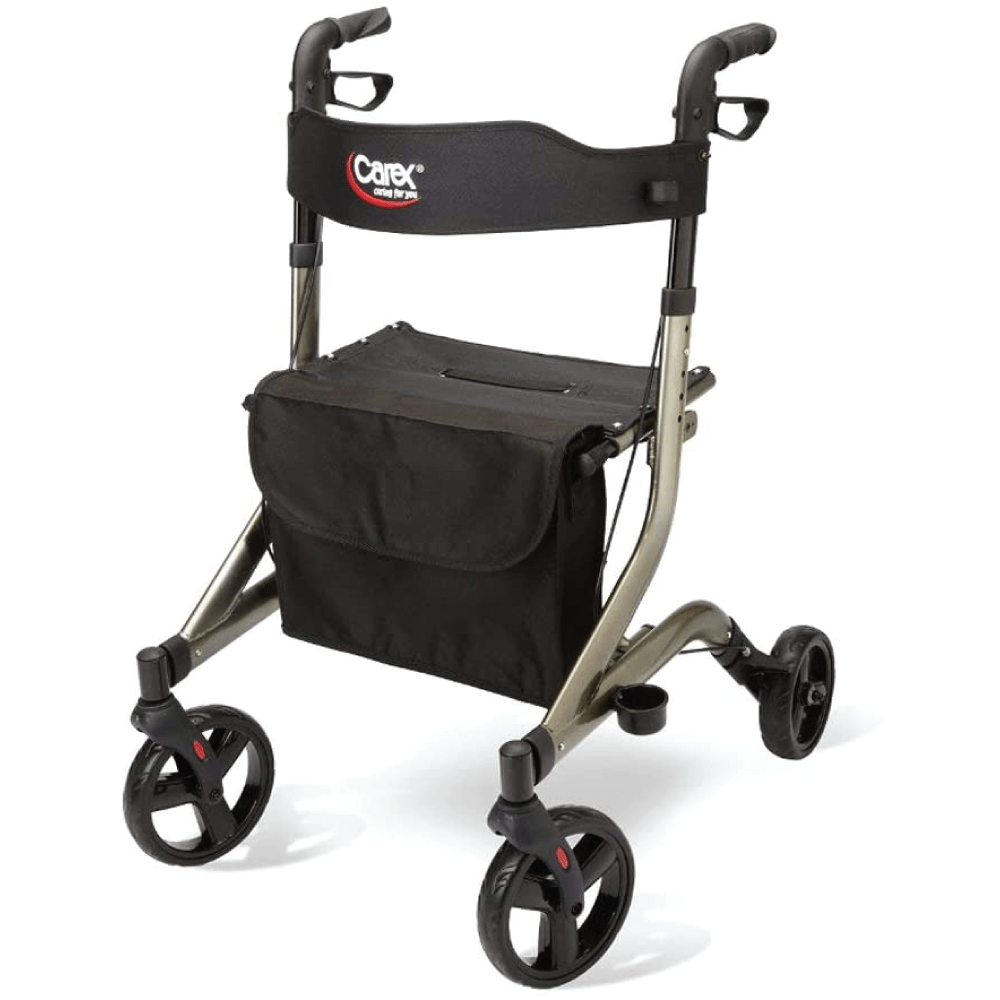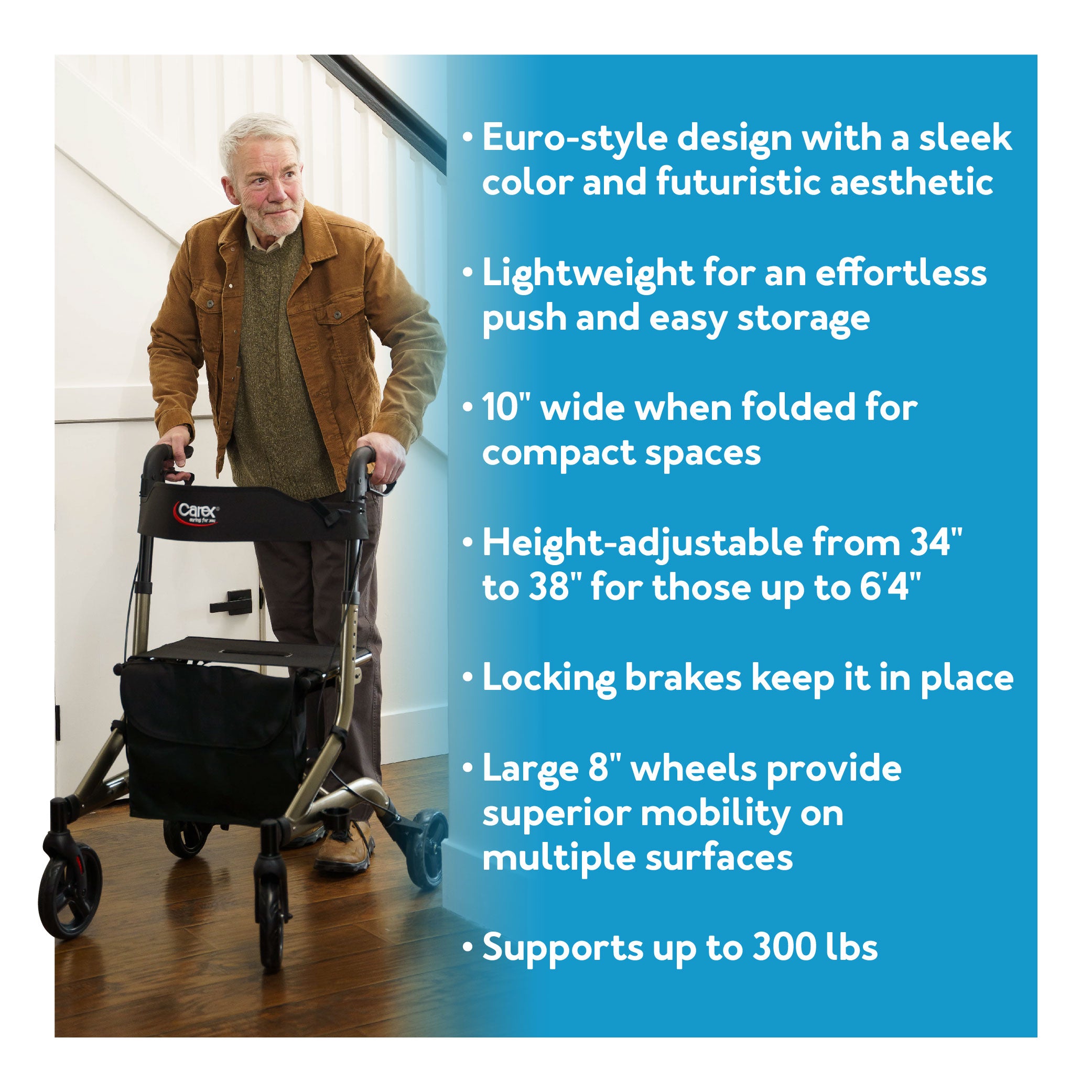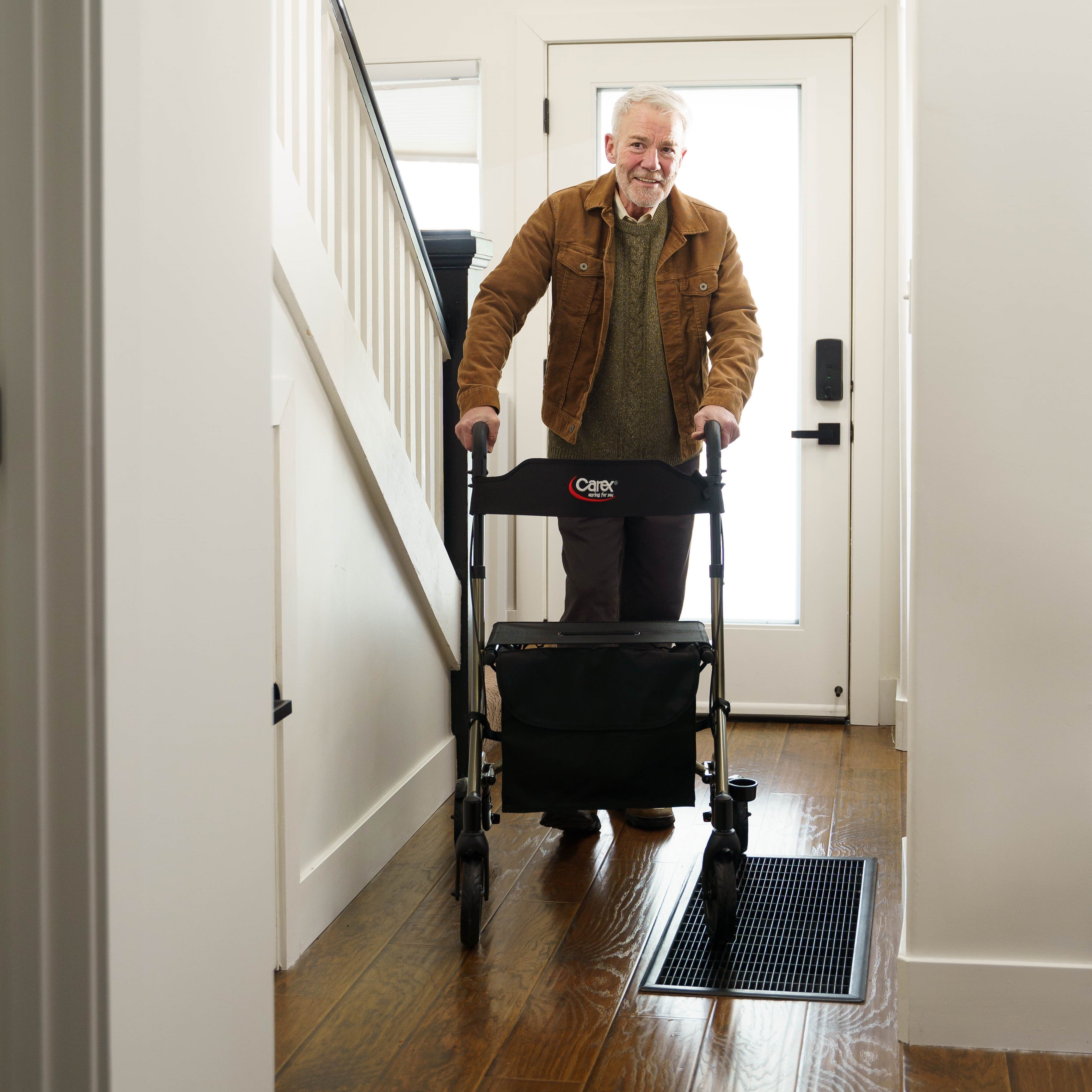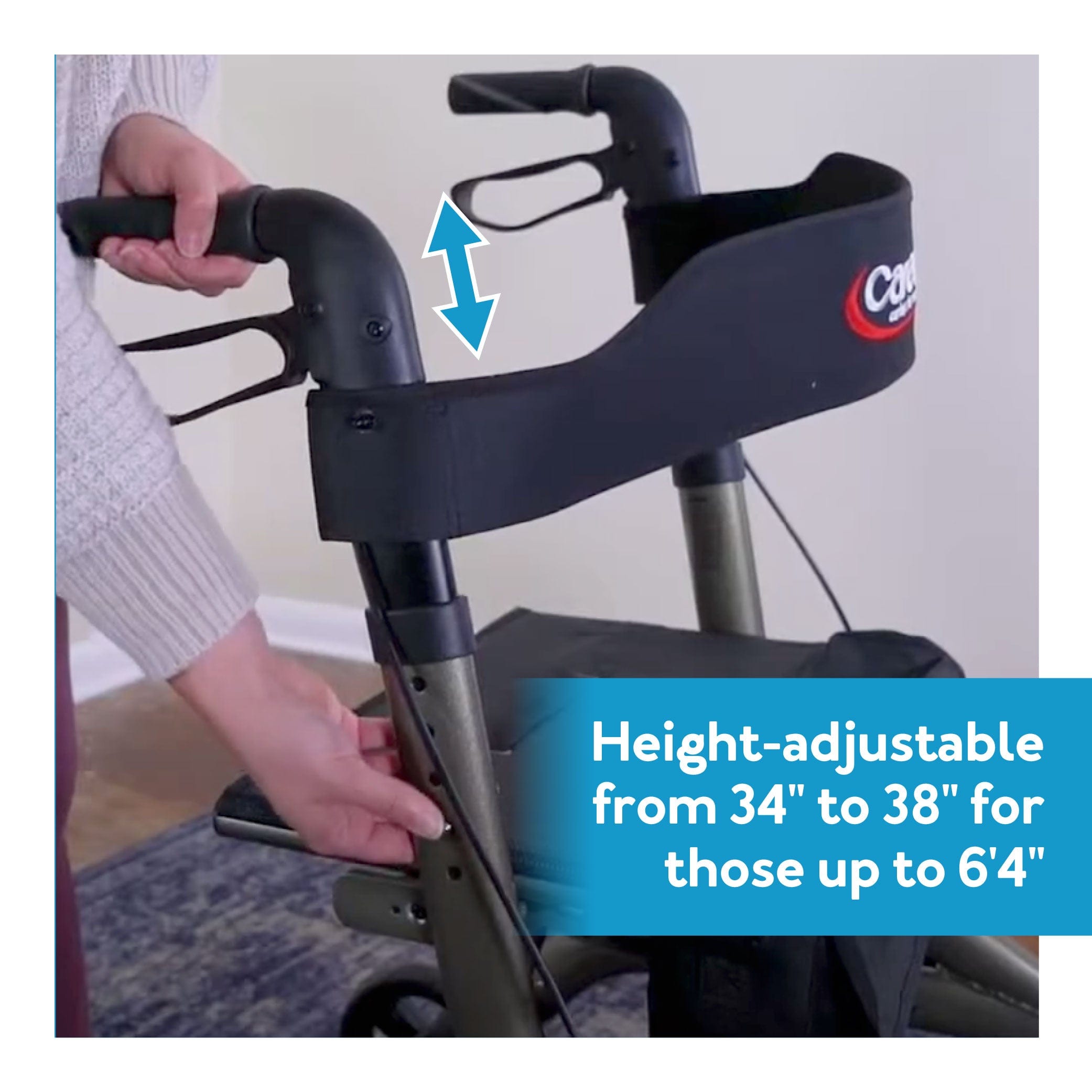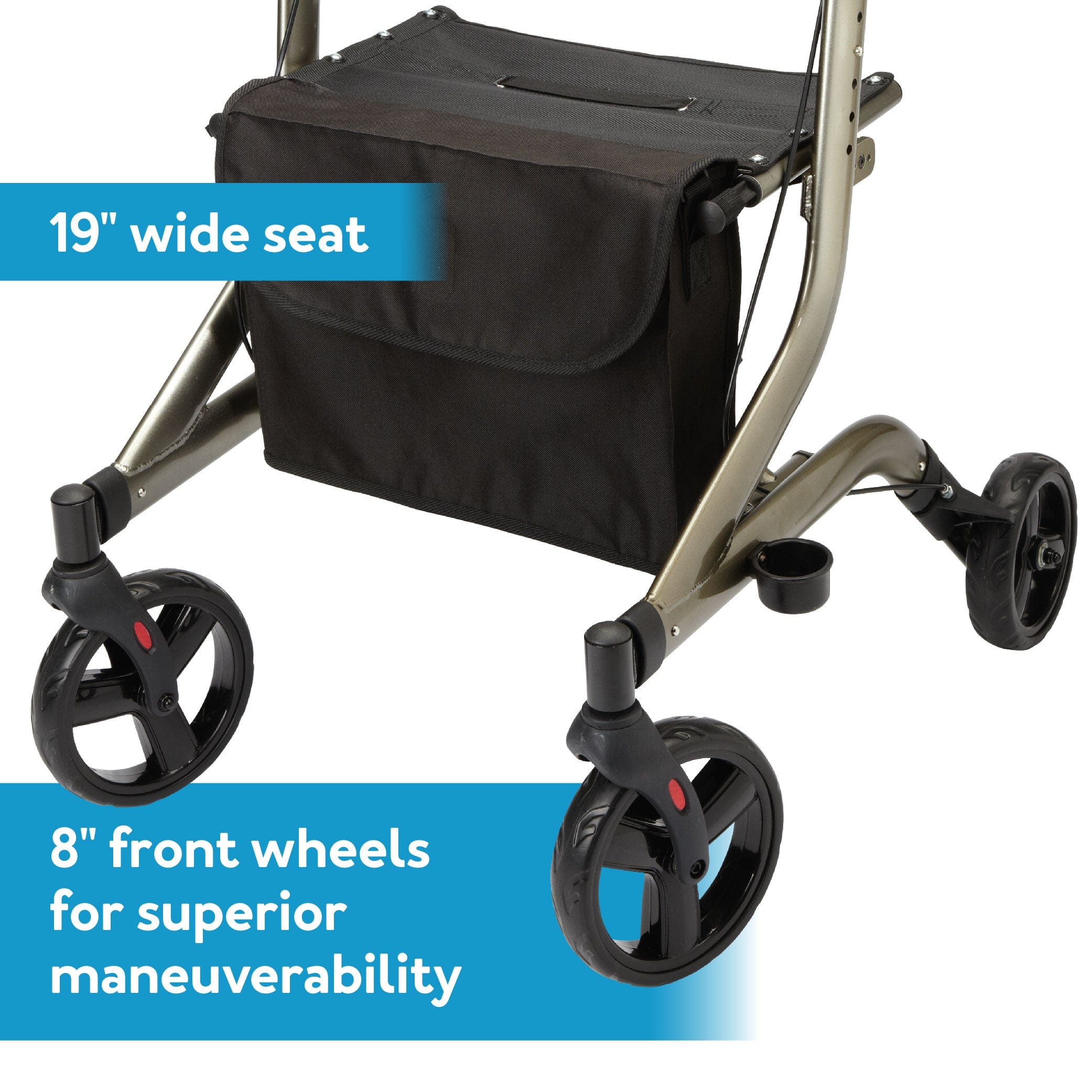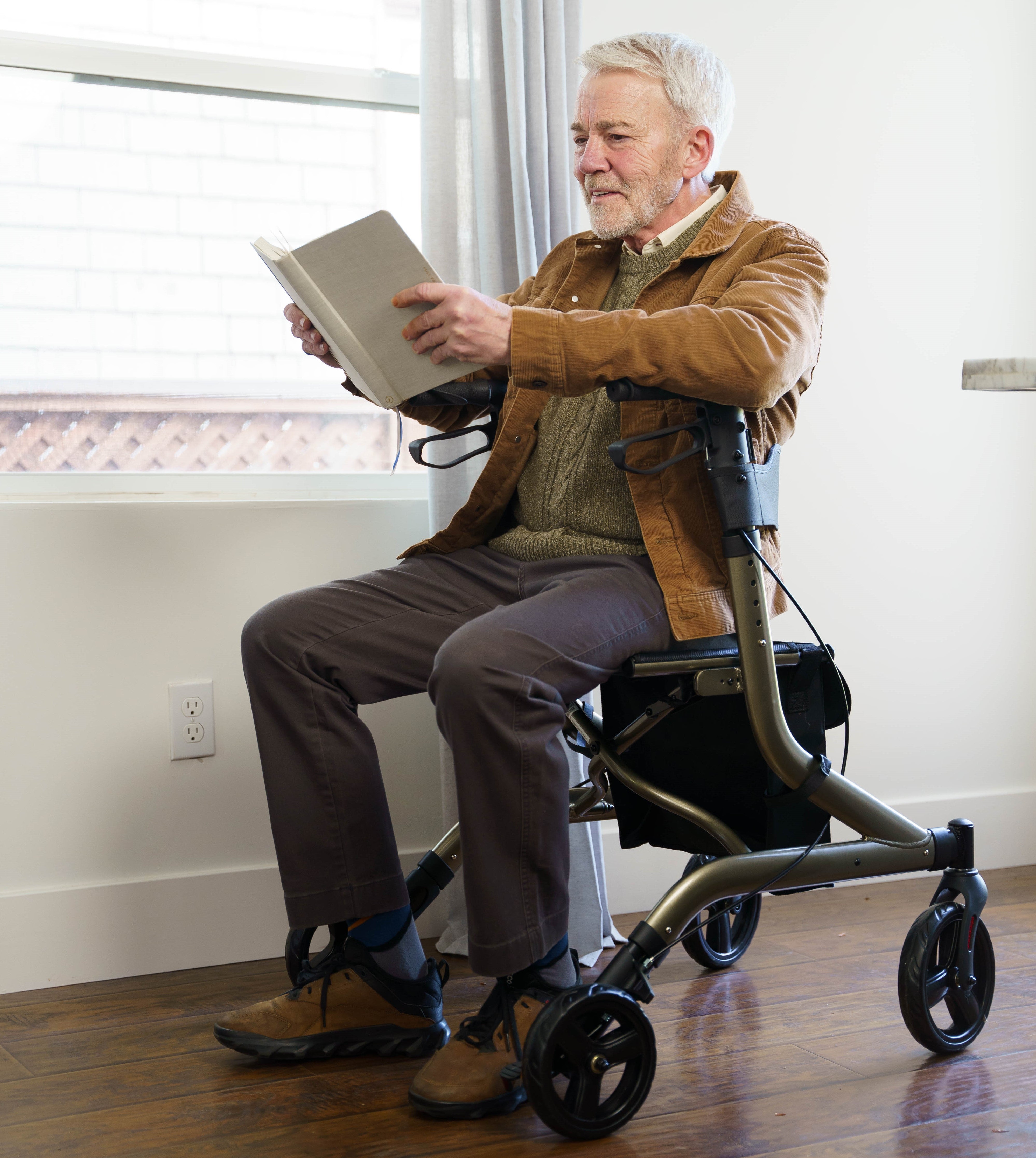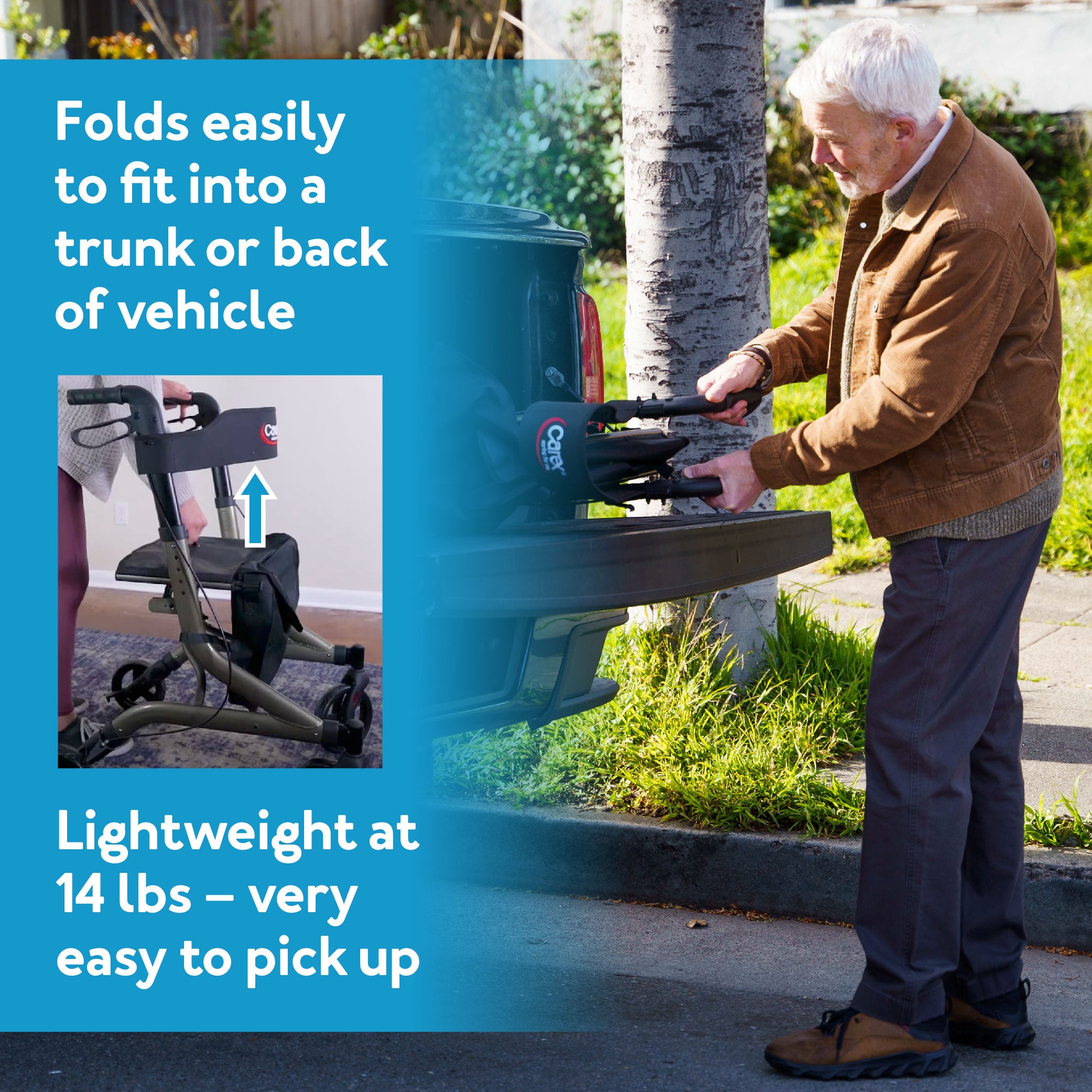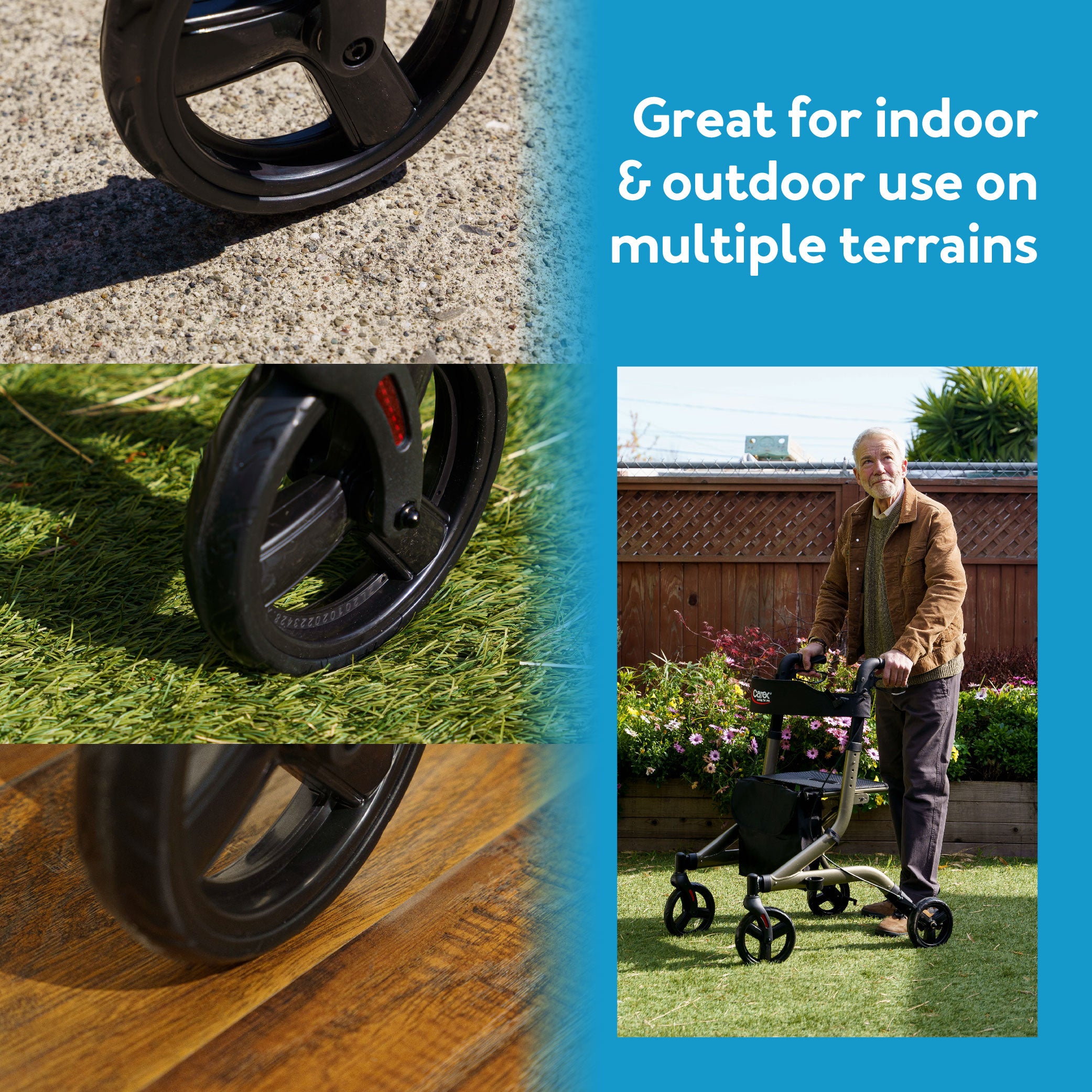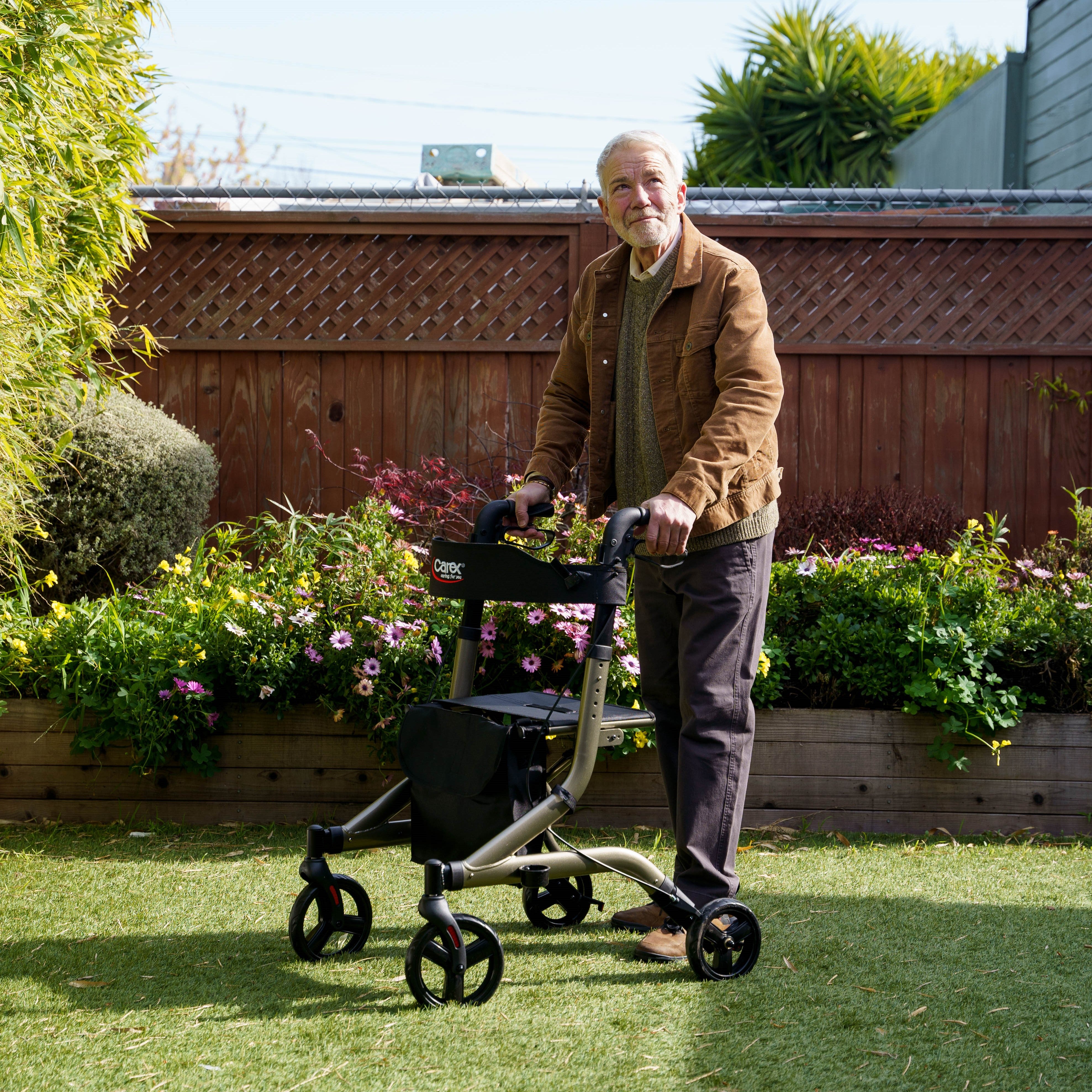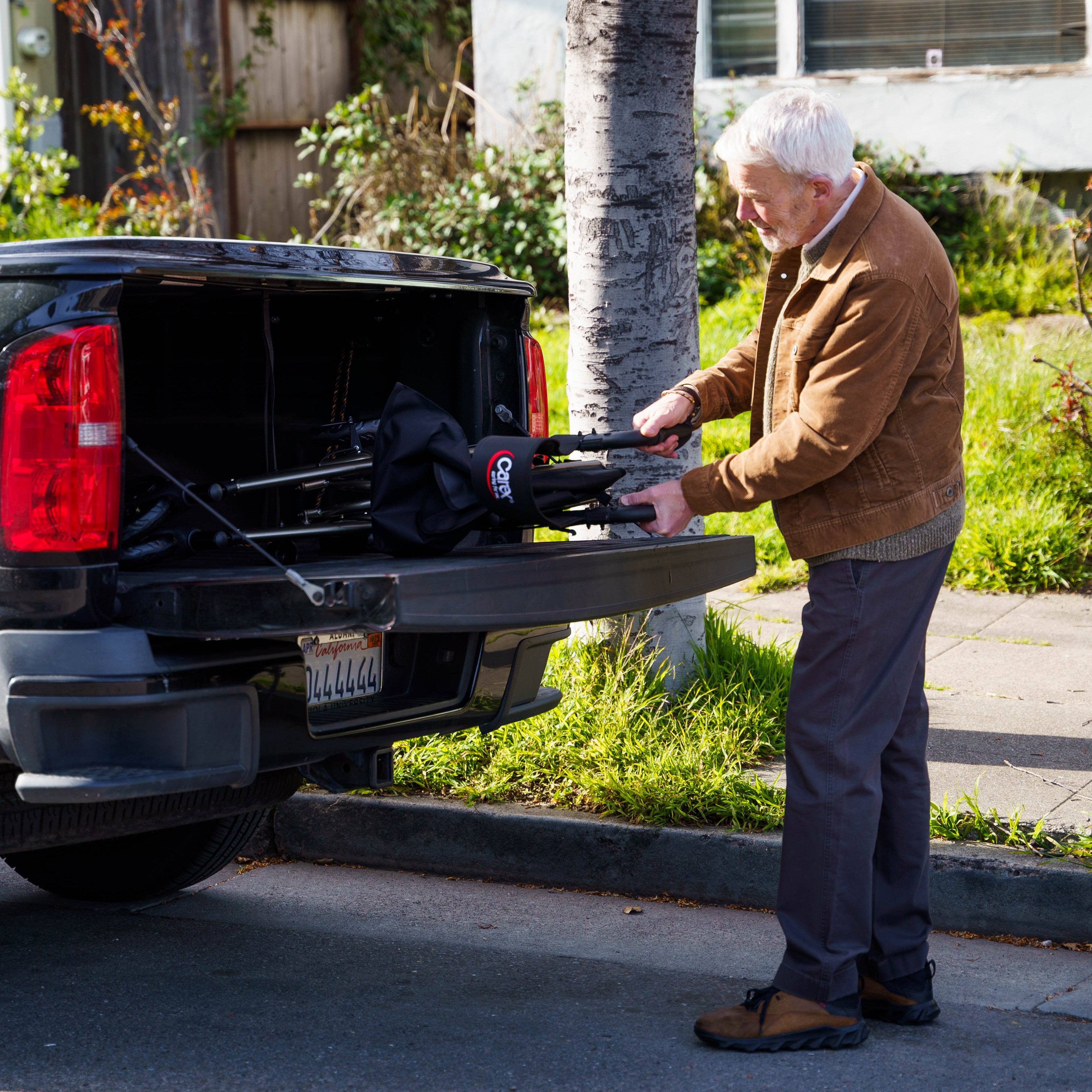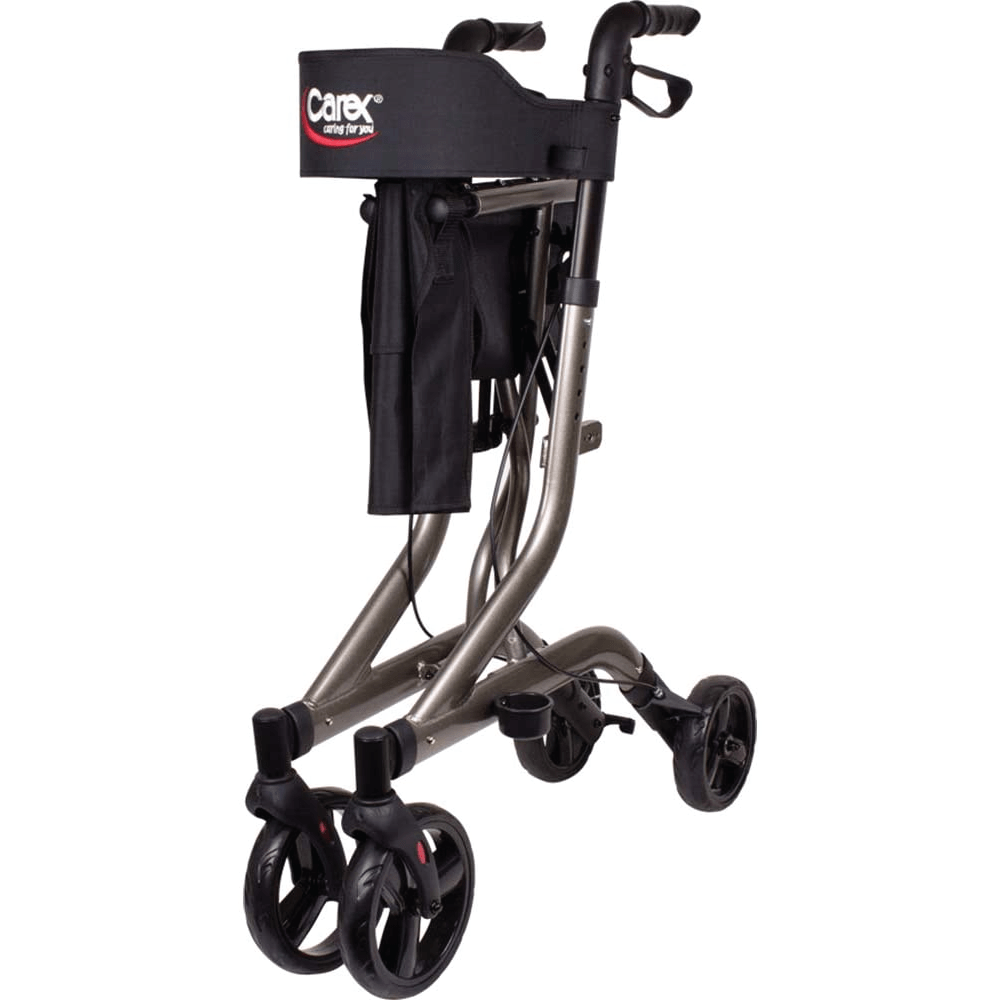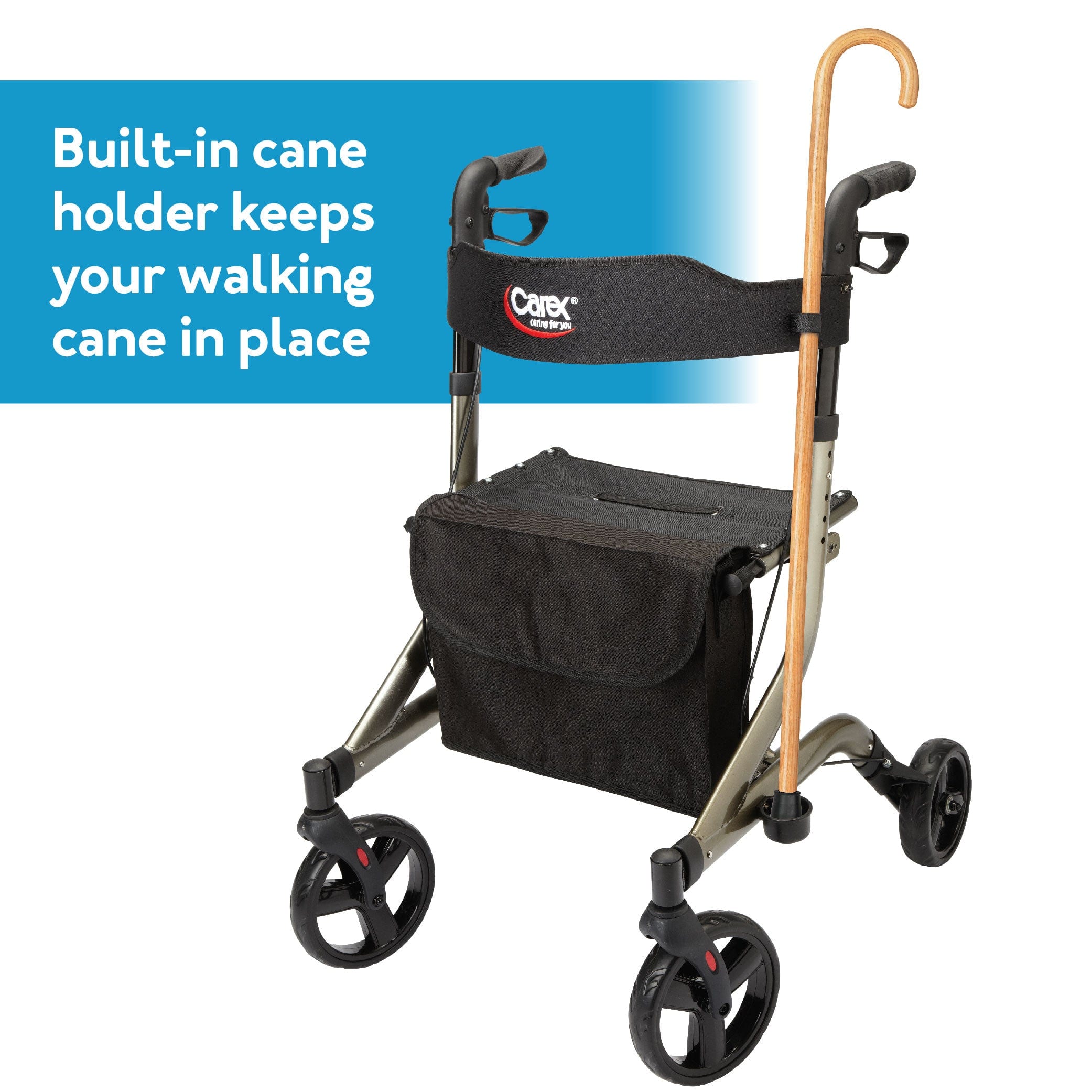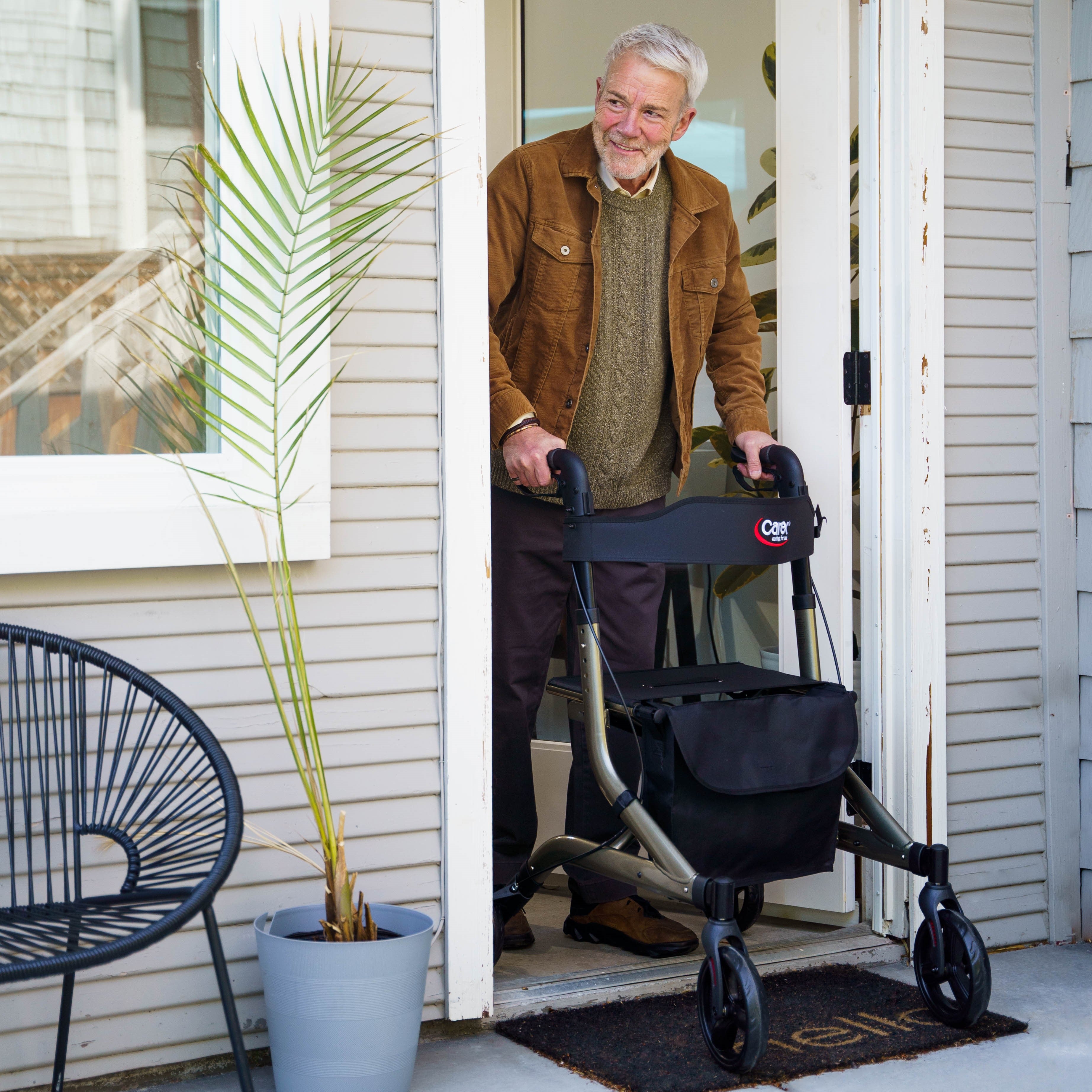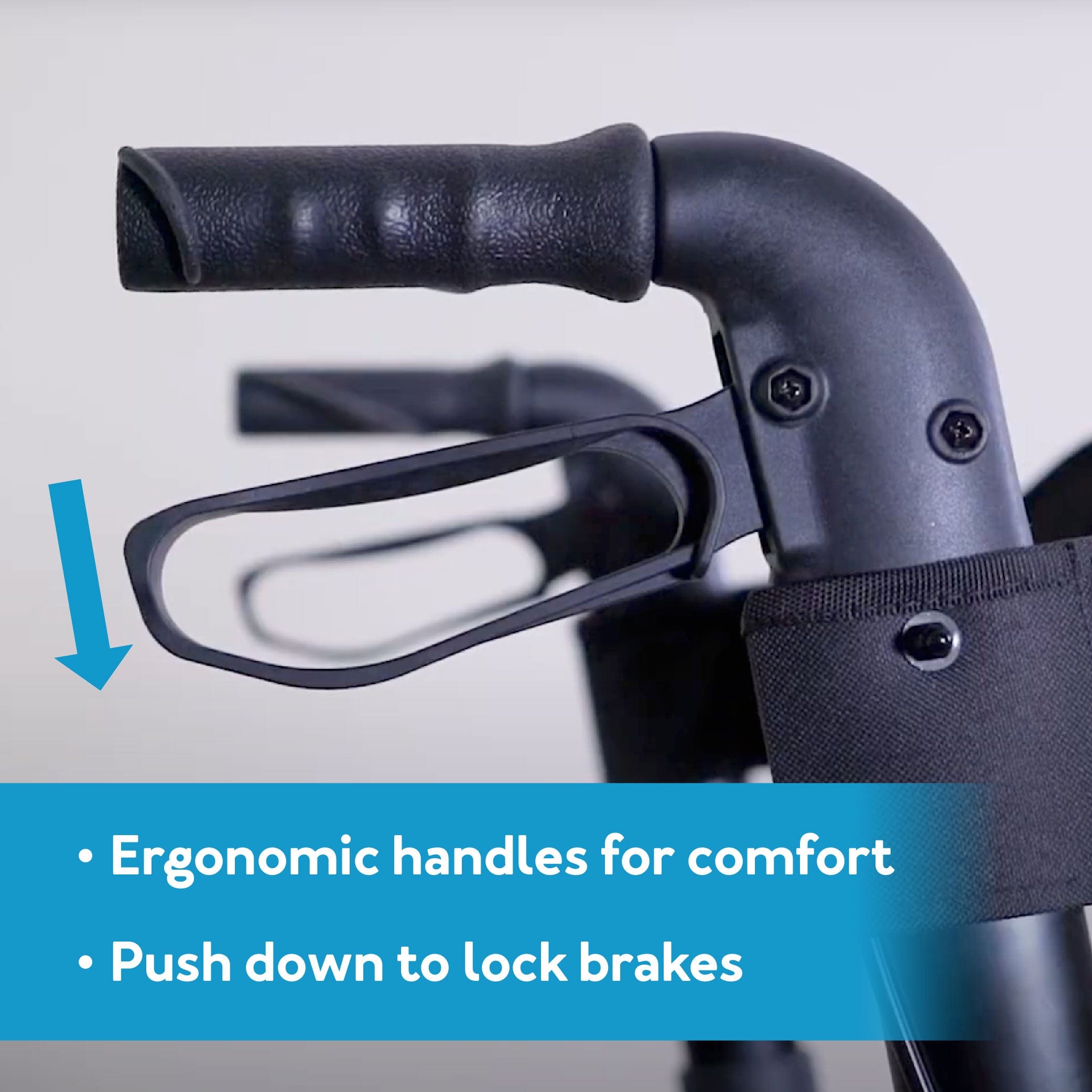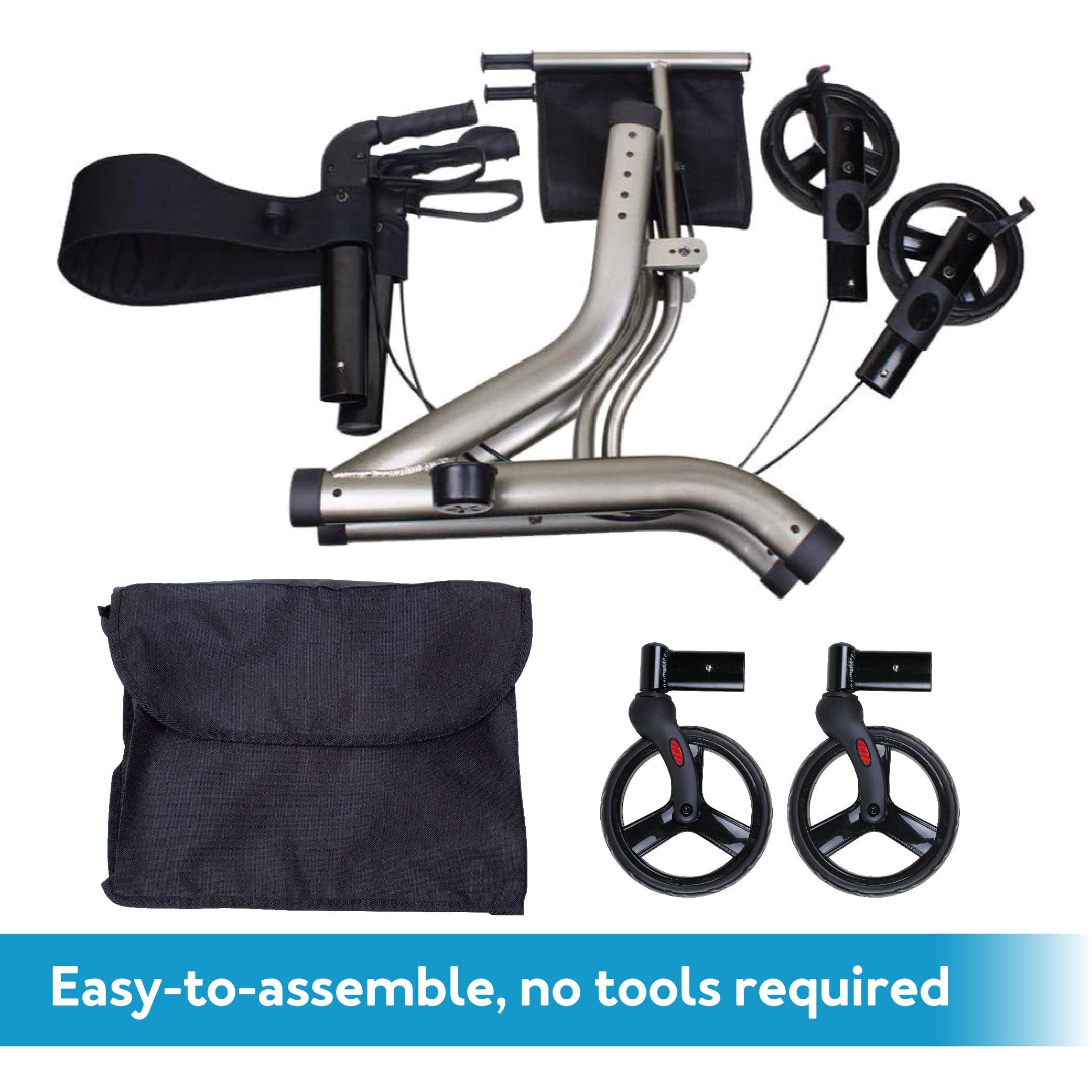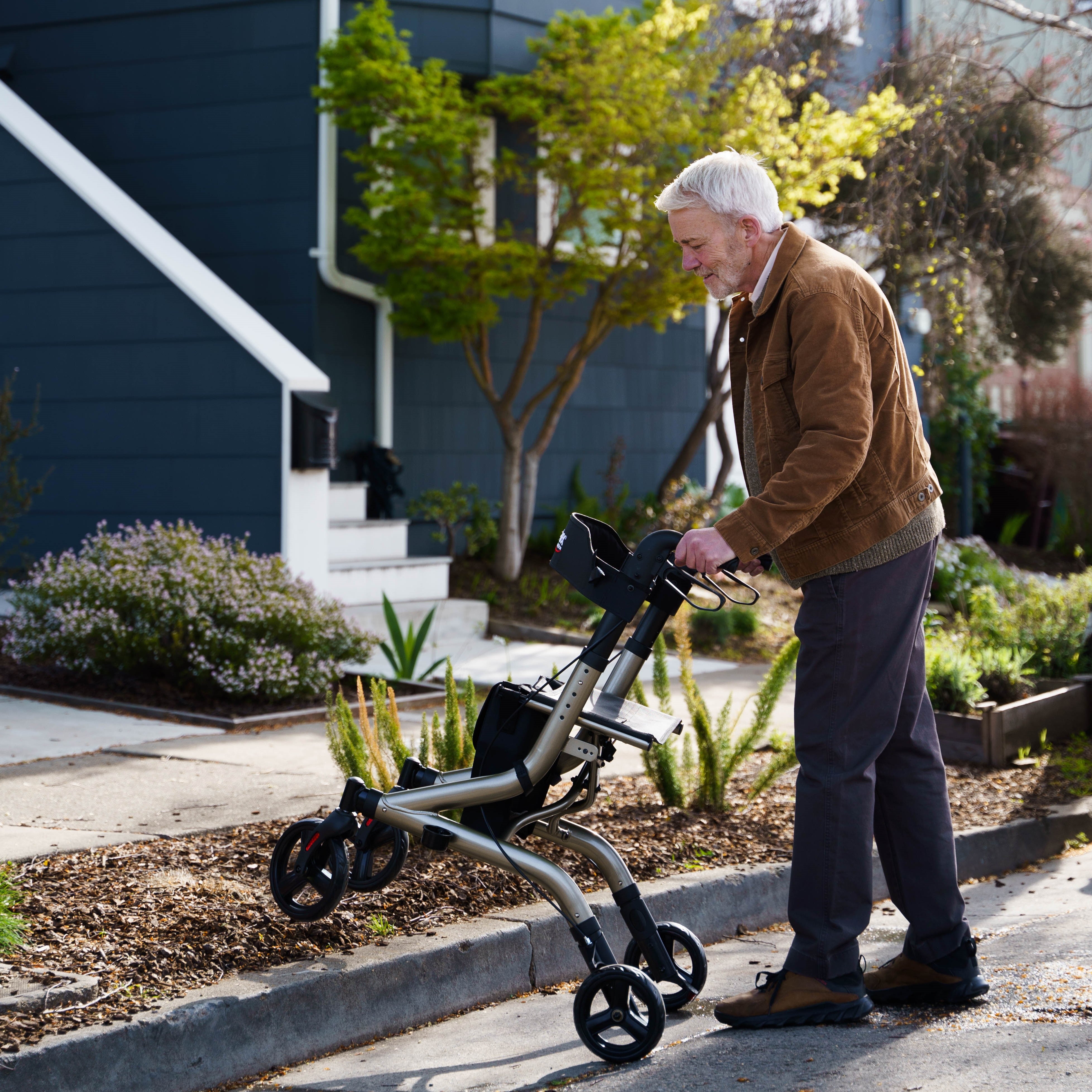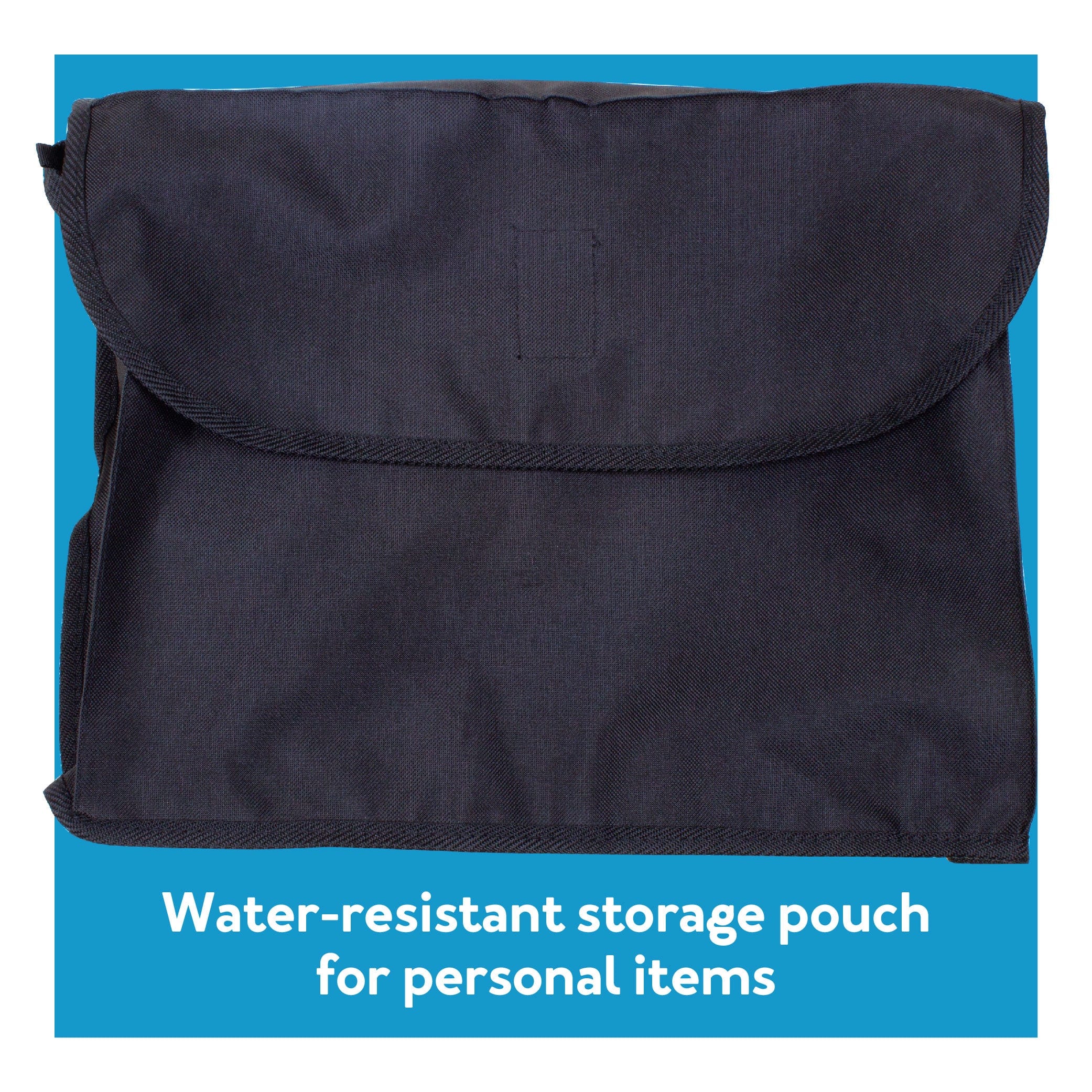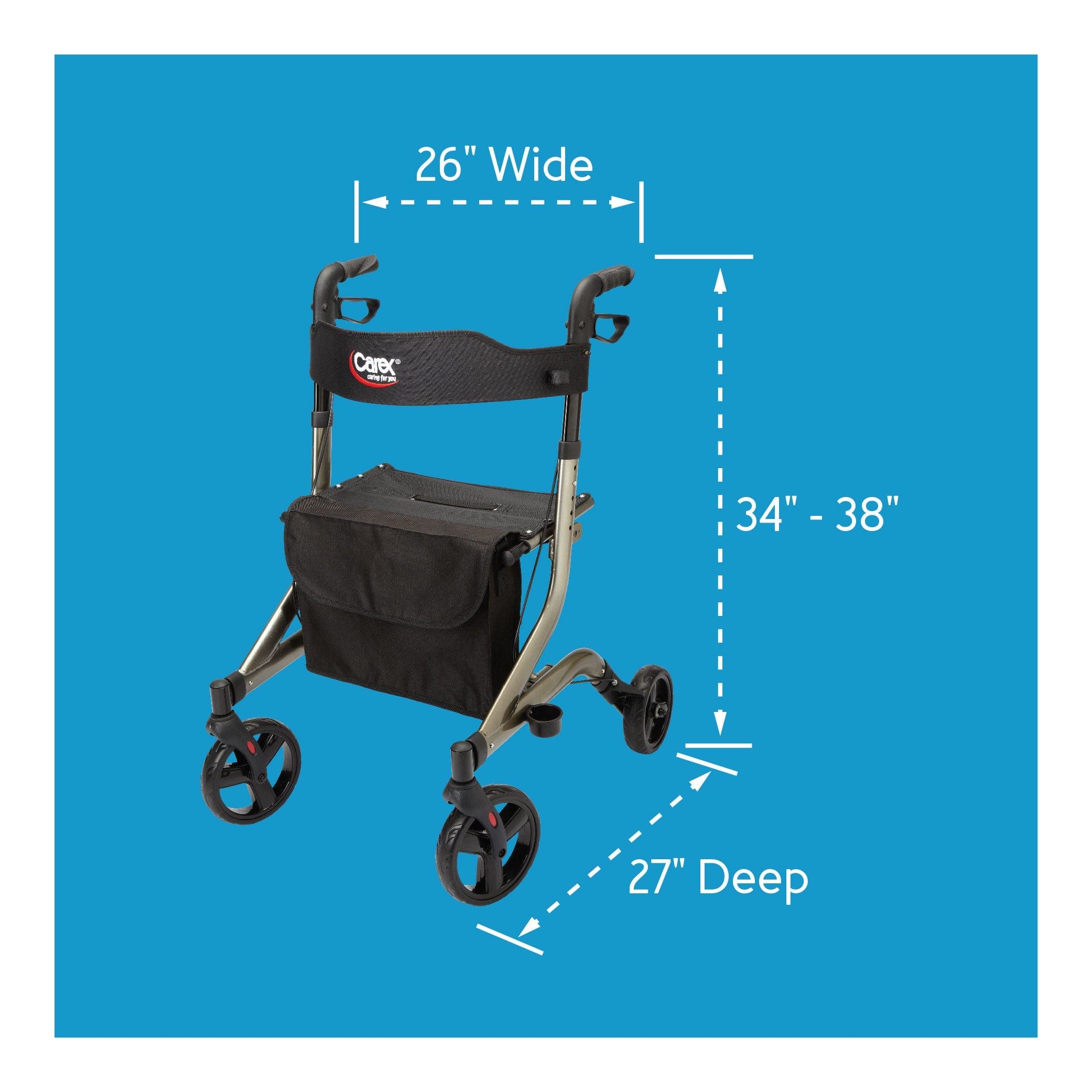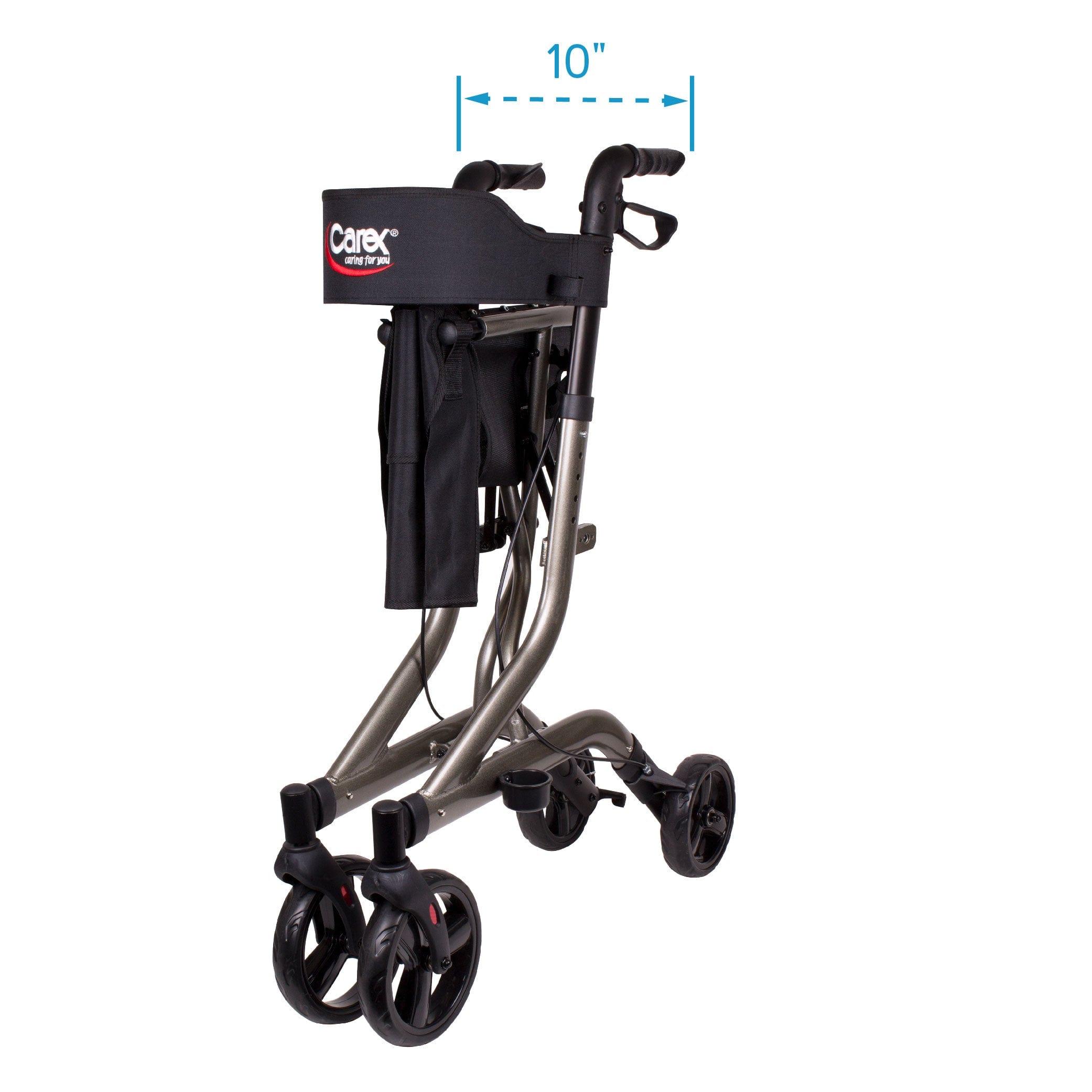Buyer's Guide: Selecting the Right Rollator
Trying to choose a rollator?
Our buyer's guide includes everything you need to consider before purchasing.

Buyer's Guide: How to Choose a Rollator
Trying to choose a rollator?
Our buyer's guide includes everything you need to consider before purchasing.
Related Articles
- The Continuum of Mobility: A Guide to Decreased Mobility
- Rollator Buyer's Guide
- Rollator Product Quiz
Rollators are one of the most popular mobility aids used today, accounting for 62.7% of mobility aid purchases. If you or a loved one struggles with mobility, you might consider purchasing a rollator. They offer a stable source of walking support to empower independence and promote an active & healthy lifestyle.
However, knowing how to choose the right rollator can be daunting with so many options available.
If you are overwhelmed or new to rollators, this guide is for you. It walks you through everything you need to know, including who should use a rollator, various types, key features, and more.
Watch the Video Form of This Article
What is a Rollator?
Rollators, or rolling walkers, are mobility devices with 3 to 4 legs. They feature a broad base of support that provide stability for both sides of the body at once. They have wheels at the end of each leg for easy maneuverability and often feature a seat for a convenient place to rest.
Who Should Use a Rollator?
Rollators can provide necessary balance and stability for those at risk of falling and can more evenly support body weight than other devices, like canes. Using a rollator may be helpful for you if you:
- Have mild to moderate stability & balance issues
- Are recovering from surgery and need support on both sides of the body
- Tire quickly while walking and regularly need a place to rest
- Do not need to lean (weight-bearing) on the walker for balance
If you think a rollator might be right for you, you might want to consider the following pros and cons:
| Pros | Cons |
|---|---|
| - Supports both sides of the body
- Easy to maneuver over multiple terrains - Provides a comfortable place to rest when tired - Foldable and easy to transport | - Requires some stability to operate safely - Requires the use of both hands and feet - Cannot be pushed by another person when sat in |
Rollator vs. Walker
With four legs and a wide base of their own, walkers provide much of the same support as rollators. The key difference is that rollators are fully wheeled with larger casters. While walkers may feature wheels, those wheels are typically smaller and only on two of the four legs.
Most rollators also have other features that walkers do not, including a seat, backrest, and handbrakes.
So, do I need a rollator or a walker?
Many people can safely get the support they need from either device. For them, it's primarily up to preference. Most prefer rollators due to the added convenience of the wheels and seat. However, some may find that walkers are a better fit for them.
Your physical condition may require you to use a rollator rather than a walker, or vice versa. Those with weak upper body strength may find it difficult to lift a walker and benefit more from a rollator they can push.
Who Should Not Use a Rollator Walker?
As noted earlier, rollators require some stability for safe use. Because they have wheels on all legs, they cannot safely support as much bodyweight as a walker can. If you have stability issues and need to put most of your weight on a mobility aid, a walker may help you more.
It is important to note that Rollators ARE NOT intended to be used as transportation devices. If you need a transportation device, transport chairs or wheelchairs are highly recommended.
| Rollator | Walker |
|---|---|
| - Has wheels on all legs - Does not need to be lifted to use - Often features a seat to rest - Requires some level of balance - Can be used indoors and outdoors on multiple terrains | - Has either no wheels or only two - May need to be lifted to be used - Lighter in weight - Can be used for those with poorer balance (supports greater weight application) - Typically made to be used indoors |
Things to Consider Before Purchasing a Rollator
So, what is the best rollator? There's no single "best rollator" in particular; it mostly depends on your personal needs and preferences. Before choosing a rollator, consider the following:
| Feature/Consideration | Summary |
|---|---|
| Three vs Four Wheels | Three-wheel rollators are lighter and more maneuverable, ideal for indoor use or tighter spaces. They offer less stability. Four-wheel rollators provide greater stability and support, making them better for outdoor use and individuals needing more balance assistance. They are generally heavier. |
| Overall Weight | Consider how often you'll be transporting the rollator. Lightweight aluminum rollators (around 11 lbs) are ideal for travel, while heavier models (up to 26 lbs) may be suitable if transport is infrequent. |
| Wheel Size | Choose based on primary usage: larger wheels (>8") for rough terrain and outdoor use, smaller wheels (6−7") for better maneuverability indoors. |
| Handle Height | The seat height should allow the user's feet to rest comfortably on the ground without dangling (measure floor to the bend in the knee). An adjustable seat height is beneficial for maximum comfort. |
| Seat | If desired, prioritize padded or sling seats over unpadded ones for comfort. Additionally, measure your backside width (+1-2 inches) to ensure the seat is wide enough (standard seat widths are typically 13-18 inches). |
| Seat to Floor Height | This is crucial for comfortable sitting and standing. Ensure the seat height allows your feet to be flat on the floor when seated, with your knees at a comfortable angle. |
| Handle Height | Adjustable handles are essential for proper posture and comfort. When standing upright, your arms should be slightly bent at the elbows when gripping the handles. |
| Overall Width | Consider the width of doorways and hallways in your home to ensure the rollator can easily pass through. |
| Weight Capacity | This indicates the maximum user weight the rollator can safely support. Always choose a rollator with a weight capacity that exceeds the user's weight for safety. |
| Accessories | Many rollators offer accessories like baskets, bags, cup holders, oxygen tank holders, or cane holders. Consider what additional features would be beneficial. |
| Does it Fold? | Most rollators fold for storage and transport. Look for models that fold easily and compactly. Some offer a more compact "collapsible" fold, while others simply fold flat. |
| Are Replacement Parts Accessible? | Check for the availability of common replacement parts like wheels, brakes, and hand grips. This ensures longevity and continued usability. |
| Customer Reviews | Always check user reviews for insights into real-world performance, durability, and common issues. |
| Return Policy and Warranty | Understand the retailer's return policy and the manufacturer's warranty. This is important for peace of mind in case the rollator doesn't meet expectations or has defects. |
Three vs Four Wheels
One of the first things you'll consider is whether to buy a three-wheel or four-wheel rollator. Both options have their strengths and weaknesses.
Three-wheel rollators are narrower. This gives them a tighter turning radius and making it easier for them to fit through smaller passageways. Because of this, many people prefer them for indoor use. They're also more lightweight and portable.
However, with only three wheels, these rollators are less stable and don't come equipped with a seat.
Four-wheel rollators are more commonly preferred. While wider and heavier, they are more stable and can accommodate a broader range of weights and heights. They also often come equipped with a convenient seat to rest on if you tire from walking.
| Three Wheel Rollators | Four Wheel Rollators |
|---|---|
| - Narrower - Provide a tighter turning radius (easier to fit through small passageways) - Lighter in weight - Less stable - Don't have a seat | - Wider - More stable - Accommodate larger weights and a broader height range - Come equipped with a seat |

Wheel Size
Besides the number of wheels on your rollator, you should also think about the size of the wheels. Most rollator wheels are between 6 and 10 inches. Wheels 8 inches or above are considered "large."
Many people find that a rollator with large wheels is the best rollator for them. Larger wheels allow you to better maneuver the rollator outdoors and over uneven terrain. Consider where you will be using your rollator: will you often need it outside or over different terrains? If that's a possibility, it's best to purchase a rollator with larger wheels.
If you think you'll mostly be using your rollator indoors, 6- to 7-inch wheels could be a better option. You'll most often be moving over even ground. Smaller wheels have a tighter turning radius that is better for maneuvering your rollator inside.

Seat
If you prefer a rollator with a seat to rest on, you'll want to ensure it's comfortable. For optimum comfort, look for a rollator with a padded or sling seat. Unpadded plastic seats, while easier to clean, can quickly become painful to sit on.
You will also want to pay attention to the seat dimensions. Most standard rollator seat widths run small, between 13" and 18", but the inside width of the rollator will be several inches wider. To determine the right width for you:
- Measure the width of your backside when sitting on a flat surface.
- Add an inch or two to this measurement to ensure comfortable seating.

Seat to Floor Height
The seat-to-floor height, or seat height, should allow you to sit comfortably without your feet dangling. To find the best floor-to-seat height, measure from the floor to the bend in the back of the user's knee. Do this while the user stands in regular shoes. This measurement will indicate the seat-to-floor height you should look for in a rollator.
It can be helpful to purchase a rollator with an adjustable seat-to-floor height to make adjustments as needed.

Handle Height
To find the appropriate handle height:
- The user should stand in their regular shoes with their arms at their side and elbows bent slightly.
- Measure the distance between the floor and the center of their wrist while in this position.
This measurement will be the appropriate handle height for them. You may find that you need to purchase a rollator made specifically for taller or shorter people.
Most rollators will be handle height adjustable. However, many users find that the best rollators have a wide adjustment range. That way, it can be adjusted an inch or two higher or lower than the measurement if needed.

Overall Width
Your rollator should easily fit through frequently used doors and passageways. To ensure this, measure what you believe to be the narrowest space in your most frequented locations, such as your home, school, or workplace.
Look for a rollator with an overall width at least an inch or two less than this measurement. Most rollators will be between 22" and 31" wide.

Overall Weight
The overall weight of the rollator can be substantial, especially if you'll need one that can be transported anywhere. A lightweight rollator is ideal for traveling and easily portable. Lightweight rollator frames are typically made with aluminum, allowing them to be as lightweight as 11 pounds.
Other rollators can weigh up to 26 pounds, but if you won't be traveling with yours often, this may be suitable for you. Be sure to pay attention to the overall weight of potential rollators to find one that is best for your situation.

Weight Capacity
The rollator's weight capacity should also be considered to ensure that it can safely support the user. Standard rollators can typically support between 250 and 350 pounds. You may find that you need a heavy-duty rollator, which usually has a weight capacity between 400 and 500 pounds.

Rollator Accessories
You should also consider any accessories you may need or want for your rollator.
Most rollators come with a storage basket or pouch, so consider which would be best for you. Many people prefer a pouch because it can collapse with the rollator and store items privately. Baskets, on the other hand, are able to store larger items.
Other accessories may be available to purchase separately. You may want a basket organizer or an organizer pouch to easily store smaller items, a cup/cane holder, or a portable flashlight.

Does It Fold?
Most people find that the best rollators are easily foldable for easy transport in a car. You'll likely want a folding rollator, especially if you plan on traveling with it.
When deciding, pay attention to the rollator's folded dimensions. It may help to measure your vehicle's trunk space, or anywhere it might be stored. Doing so will ensure you choose a rollator that fits these spaces.
Are Replacement Parts Easily Accessible?
You will want your rollator to last as long as you need it. The best way to ensure this is to purchase a rollator with readily available replacement parts. This way, if it becomes damaged in any way, you will only have to replace the damaged component rather than the entire rollator.
Sometimes, there will be a link to where to buy replacement parts right on the rollator's product page. If not, you may have to search the company's website for "replacement parts" or contact the company directly.
What do Customer Reviews Say?
Customer reviews can be one of the most important factors when choosing a rollator. These can give you first-hand experience and whether the rollator is good quality. They can also indicate what users purchased the mobility aid for, including:
- Their mobility level
- If they travel frequently
- And any existing conditions.
Return Policy and Warranty
A rollator can be a vital source of support and independence. Because of its importance, making the right decision is essential. When choosing, look at the company's return policy and product warranty. Do they accept returns, and how long after a purchase is made?
You'll also want to purchase a rollator with a solid warranty covering malfunctions should they occur. A good return policy with a warranty can give you peace of mind should your purchase not work out.
Types of Rollators
Once you decide that a rollator is the best mobility device for you, it can be overwhelming to sort through your options. There are five main types of rollators: four-wheel, three-wheel, heavy-duty, junior, and rollator/transport hybrid.
| Rollator Type | Key Characteristics | Best Suited For | Notable Features |
|---|---|---|---|
| Four-Wheel Rollator | Most common type. Has two swivel wheels in front and two fixed wheels in back. Generally offers good stability. | General use, both indoors and outdoors. Individuals seeking more stability and a place to rest. | Padded seat for resting, usually with a storage pouch beneath. |
| Three-Wheel Rollator | One wheel in the front and two in the back. Slimmer and more compact than four-wheel models. | Indoor use, tight spaces, or individuals needing less stability but wanting a lighter, more maneuverable option. | Not equipped with a seat (due to narrow design). Typically includes a storage bag. |
| Bariatric (Heavy-Duty) Rollator | Made with more durable materials and bigger wheels. Heavier build for increased durability and higher weight support. | Users requiring higher weight capacities (up to 500 lbs). Individuals needing extra stability and robust construction. | Enhanced durability, larger wheels for various terrains, significantly higher weight capacity. |
| Junior Rollator | Features smaller dimensions (handle and seat height, overall weight, and width) compared to standard rollators. | Individuals with smaller stature or petite users who require a more compact frame and lower seat height for improved comfort, maneuvering, and stability. | Smaller overall size, lower handle and seat heights. |
| Rollator Transport Chair Hybrid | Allows for easy transformation between a rollator and a transport chair. Users can walk independently or be pushed by another person. | Individuals recovering from surgery or injury, or those who may need to switch between independent walking and being pushed (e.g., during longer outings). | Dual functionality: serves as both a self-propelled rollator and a transport chair with footrests (often foldable). One cost-effective device. |
Four-Wheel Rollator
The four-wheel rollator is the most common type of rollator. As its name suggests, it has four wheels: two swivels in the front and two fixed wheels in the back. These rollators also feature padded seats to rest on, usually equipped with a storage pouch beneath the seat.
SHOP FOUR-WHEEL ROLLATORSThree Wheel Rollator
Three-wheel rollators have one wheel in the front and two wheels in the back, making them slimmer and more compact. However, because they are more narrow, these rollators are not able to be equipped with seats and usually only come with a storage bag.
SHOP THREE-WHEEL ROLLATORSBariatric Rollator
Bariatric, or heavy-duty, rollators are made with more durable materials and bigger wheels. This makes them heavier, but also more durable and better able to support higher weights safely. These rollators usually have weight capacities of up to 500 lbs.
SHOP BARIATRIC ROLLATORSJunior Rollator
Junior rollators are for people with smaller stature or for those who require a smaller frame and seat height. They feature smaller dimensions including handle and seat height, weight, and width. This allows petite users improved comfort, maneuvering, and stability compared to standard rollators.
SHOP JUNIOR ROLLATORS
Rollator Transport Chair Hybrid
These devices allow for the rollator to easily be transformed into a transport chair when needed. Users can walk independently or be pushed by someone else with one cost-effective device rather than purchasing both.
These can be especially beneficial for those recovering from surgery or injury. They're can be pushed by someone else in the early states of recovery and then transition to a rollator.
How to Properly Use a Rollator
In addition to materials, some rollators may offer part variations and different accessories that you can choose. Each choice will depend on your needs and preferences.

Height Adjustments
When you get your rollator, the first thing you should immediately ensure that the seat and handle height settings are adjusted to your needs. While you've likely purchased the proper rollator for your measurements, it may need to be adjusted to those measurements. You may also find that the right height for you differs from what you measured.
If your rollator's seat height is adjustable, make that adjustment first. Then, adjust the handles to a comfortable height that allows you to push the rollator without bending forward or bending your elbows too much.

While Walking
To properly walk with a rollator, follow these steps:
- With the rollator in front of you, stand close and grip the handles. Ensure that you are balanced and centered between the rear wheels.
- Walk normally and with even steps. It is safest to put most of your weight on your legs, but keep your hands on the handles and use the rollator for support when needed.
- Use the brakes to keep the rollator close to you and moving at a steady pace.
- To turn, take small steps to pivot your body, keeping the walker in front of you. The walker will turn with you. For tighter turns, engage the brakes on only one side. For example, when making a right turn, engage the right brake with the left break off.
Do NOT use a rollator to go up or downstairs.

While sitting
To properly sit on your rollator, follow these steps:
- Push down the brake levers to lock the breaks. This will ensure your safety, so the rollator does not roll out from under you.
- With your back to the chair and legs close to the seat, balance yourself with your hands on both handles or both sides of the seat.
- Gently and slowly sit down. To maintain control, avoid sitting with too much force or too quickly.
To stand:
- Make sure the brakes are still locked.
- Scoot to the edge of the seat and plant your feet directly and firmly under you.
- Lean forward, grabbing the handles or seat to keep balanced and help yourself transfer the weight from your bottom to your feet.
- Slowly turn around and center yourself between the rollator's rear wheels. When you feel balanced, you can unlock the brakes and start walking.
Care and Maintenance
What is the Maintenance of Rollators?
To extend the life of your rollator, keep up with the care and maintenance of your mobility aid. While rollators are relatively easy to care for, there are a few best practices you can take to ensure they last a long time. Consider these tips:
- Clean your rollator regularly to prevent the build-up of debris
- Every few months, disassemble your rollator for a deeper clean (this helps ensures a thorough cleaning)
- Store it in a dry and safe place when not in use
- Dry it down if it comes in contact with moisture to prevent rust
- Regularly check and tighten any loose screws/parts
- Replace any parts that become damaged or worn
How do You Clean a Rollator?
Use a non-abrasive cleaner and a hand towel to clean your rollator adequately. You'll want to avoid using paper towels, which can scratch the paint and leave residue behind. Use a separate hand towel to dry your rollator thoroughly. Be sure to check for any moisture, as this can cause rust.
Can You Get a Rollator Wet?
Yes, you can get a rollator wet. However, it's best to try to avoid moisture. If your rollator gets wet, dry it as soon as possible.
Common Questions
Are Rollator Walkers Safe?
When used properly, rollators are a safe and effective source of movement support. However, because they require a certain level of balance and strength, they are not ideal for everyone. Those with major balance and strength issues may find them unsafe.
Are 3 Wheel Rollators Safe?
Yes, three wheel rollators are a great source of stability and maneuvering for those in tight corners. The singular front wheel offers a tighter turning radius for improved turning. However, they are less stable than four-wheel rollators. This tends to make them unsafe for those with significant mobility impairments.
Can You Push Someone in a Rollator?
No, it is not safe to push users in most rollators. They are not stable enough to handle the pressure and can tip over as a result. A rollator/transport hybrid is ideal for this type of use. These rollators transform into transport chairs, allowing you to push someone in them.
How much Do Rollators Cost
Standard rollators can cost anywhere between $60 and $200, while deluxe and bariatric rollators can be up to $350. Three-wheel rollators start at around $80.
Will Medicare Pay for a Rollator?
Yes, rollators are covered by Medicare in most cases. A rollator must be deemed "medically necessary" to be covered by Medicare. This means it's necessary to treat an injury or condition or its symptoms. This can be determined and documented by your doctor.
Can I Take My Rollator on a Plane?
Yes, rollators are allowed on airplanes. They are considered "Assistive Devices" by the U.S. Department of Transportation. Because your rollator is an assistive device, it will not be counted toward your carry-on or baggage limit. You will not have to pay an extra fee if you check it with your luggage.

Our Top Rollator Picks
Carex Step 'N Rest® Rolling Walker
Discover the Carex Step N' Rest Rolling Walker, a top choice for versatility and comfort, designed to adapt precisely to your needs. What truly sets it apart is its three-position adjustable seat height (18", 21", or 23"), ensuring a personalized and comfortable resting spot no matter your stature. Combined with its oversized 6-inch wheels for smooth maneuverability indoors and out, a lightweight yet durable aluminum frame, and a convenient under-seat storage compartment, the Step N' Rest provides a reliable and highly adaptable mobility solution for everyday independence.
- Rollator Type: Standard Four-Wheel
- Weight Capacity: 250 lbs
- Dimensions (h x w x d): 29.50" - 39.00" x 22.5" x 29"
- Wheel Size: 6"
- Folded Width: 10"
- Weight: 14.5 lbs
Carex Trio Rolling Walker
Experience unparalleled agility and effortless navigation with the Carex Trio Rolling Walker, specifically designed for those who need nimble mobility. Its distinctive three-wheel configuration allows for exceptionally tight turns and easy maneuvering through narrow doorways and crowded spaces where larger rollators might struggle.
Weighing in as a remarkably lightweight option, it folds quickly and compactly for simple storage and transport, making it an ideal companion for active individuals on the go. Complete with a spacious storage bag and reliable locking handbrakes, the Trio provides essential support without compromising on freedom of movement
- Rollator Type: Three Wheel
- Weight Capacity: 300 lbs
- Dimensions (h x w x d): 31.75" - 38.00" x 25.5" x 22"
- Wheel Size: 7"
- Folded Width: 10"
- Weight: 10 lbs
ProBasics Junior Rollator with 6-inch Wheels
Specifically engineered for individuals of smaller stature, the ProBasics Junior Rollator offers an ideal blend of compact design and reliable support. Its lightweight aluminum frame and lower seat height (19") ensure enhanced comfort, stability, and easier maneuvering for petite users who often find standard rollators too large.
Equipped with smooth-rolling 6-inch wheels suitable for both indoor and outdoor surfaces, ergonomic handbrakes, a comfortable padded seat, and a convenient under-seat storage pouch, this junior rollator delivers full-featured mobility tailored for a perfect fit.
- Rollator Type: Junior
- Weight Capacity: 250 lbs
- Dimensions (h x w x d): 29"-34" x 22" x 8"
- Wheel Size: 6"
- Folded Width: 10"
- Weight: 12 lbs
Carex Steel Rolling Walker
When robust stability and unwavering support are your top priorities, the Carex Steel Rolling Walker stands out as an exceptional choice. Engineered with a durable steel frame, this rollator provides superior strength and a solid foundation, offering enhanced confidence and security for users needing extra stability. It features large 8-inch wheels for smooth navigation over various surfaces, a comfortable padded seat with convenient under-seat storage, and reliable loop-lock handbrakes, making it a dependable and long-lasting mobility aid designed for consistent performance.
- Rollator Type: Bariatric
- Weight Capacity: 350 lbs
- Dimensions (h x w x d): 30-34.25" x 21.35" x 28.75"
- Wheel Size: 6"
- Folded Width: 10"
- Weight: 17 lbs
Carex Crosstour Rolling Walker
Step out in confidence and style with the Carex Crosstour Rolling Walker, a modern mobility solution designed for both rugged durability and exceptional comfort. What truly sets the Crosstour apart is its unique all-terrain design featuring large 10-inch rugged wheels and an advanced frame engineered to tackle diverse outdoor environments with ease, from uneven sidewalks to grassy paths.
Beyond its superior outdoor performance, it offers a spacious padded seat for comfortable rest breaks, reliable loop-lock handbrakes, and a convenient folding mechanism, making it the ultimate companion for active users seeking adventure and independence.
- Rollator Type: Euro
- Weight Capacity: 300 lbs
- Dimensions (h x w x d): 21.5" x 24.5" x 8" - 33.75" x 36.5" x 26" x 27"
- Wheel Size: 10"
- Folded Width: 10"
- Weight: 14 lbs
About the Author

Stephanie Schwarten is a freelance writer and editor with a Bachelors degree in Professional Writing. She specializes in content marketing as well as both developmental and copy editing.
About Carex Health Brands
Carex is your one-stop shop for home medical equipment and for products that assist caregivers with providing the best possible support and care for their loved ones. Carex Health Brands has been the branded leader in in-home, self-care medical products for over 35 years. Our goal is to improve the lives of our customers by bring them quality products that bring dignity back to their lives. With our three nationally distributed brands, Carex Health Brands serves national, regional and independent food, drug and mass retailers along with wholesalers, distributors and medical dealers.







